30 staff sacked at Grand Theft Auto developer in alleged ‘union-busting’ move

© PA Media

© PA Media
This article was first published on The Bit Journal. The Coinbase revenue in the third quarter reached 1.9 billion dollars, up 26% from the previous one and also beating Wall Street expectations, set at 1.8 billion dollars. The strong earnings performance underlines the company’s growing diversification beyond trading fees and its strengthening market position amid a volatile crypto environment.
According to Yahoo Finance, analysts had expected $1.8 billion in revenue for Coinbase, up 50% from the year-ago period. The cryptocurrency exchange also posted earnings per share of $1.50 against a forecast of $1.10, with net income reaching $433 million down from $1.4 billion in Q2 but significantly higher than the $75 million reported in the same period last year.
Anil Gupta, Coinbase’s vice president of investor relations, attributed the sequential decline in net income to “mark-to-market adjustments” related to the exchange’s holdings in stablecoin issuer Circle and its crypto portfolio. There’s non-cash noise in the net income number, Gupta said, adding that Coinbase revenue growth and profit margins remained robust. Overall, it was a great quarter for us.
Coinbase shares jumped in after-hour trading to 341 dollars, extending their year-to-date 33% gain. The stock reached its high at about 444 dollars in mid-July when crypto sector investor optimism went up.
Transaction-based income remained the company’s largest contributor to Coinbase revenue, totaling $1 billion a 37% quarter-over-quarter increase and well above the $573 million recorded a year ago. The surge in Q3 was powered by renewed market activity as BTC and ETH reached their all-time highs.
Along with an increase in trading volumes, the company’s stablecoin and staking services continued to power Coinbase revenue. The exchange recorded $355 million in revenue related to stablecoins, representing a 43% increase year-over-year, while posting $185 million from blockchain rewards.
USDC, the stablecoin issued by Circle and partially backed by Coinbase, reached an all-time high of a $74 billion market capitalization, while $15 billion in USDC held within Coinbase’s ecosystem further supported Coinbase revenue diversification.
Gupta also emphasized “really good progress” in the derivatives business of Coinbase, subsequent to its purchase of Deribit. The latter contributed materially to overall Coinbase revenue performance. It reported $840 billion in notional derivatives trading volume in Q3.
Meanwhile, the firm’s Ethereum layer-2 network, Base, was still a strong contributor to Coinbase revenue. In its earnings report, Coinbase attributed “higher average ETH prices and increased transaction volume” as key drivers of Base’s revenue growth.
Base has rapidly become a leading layer-2 network for stablecoin adoption, with the total value of dollar-pegged tokens hosted reaching $4.6 billion, according to DeFiLlama.
Recently, analysts at JPMorgan estimated that a possible Base token would add $12 billion to $34 billion in value to Coinbase and raised their price target to $404. Developments like this could significantly alter the long-term dynamics of Coinbase revenue streams.
Coinbase confirmed it has filed for a national bank trust charter, joining the ranks of such peers as Circle, Paxos, and Ripple. The move would position Coinbase to expand its revenue model into custodial and financial services under official banking regulations.
Besides that, Coinbase announced new plans to offer tokenized assets, which would further extend revenue sources for Coinbase. The initiative has also come a few months after similar announcements by Kraken and Robinhood.
Coinbase also added $299 million worth of Bitcoin in Q3 and has increased the fair value of its digital assets held for investment to $2.6 billion as of Sept. 30. CEO Brian Armstrong echoed the company’s long-term strategy on X:
“Coinbase is long Bitcoin and we keep buying more.”
Coinbase is long bitcoin.
Our holding increased by 2,772 BTC in Q3. And we keep buying more.
— Brian Armstrong (@brian_armstrong) October 30, 2025
Given the ongoing momentum in derivatives trading, Base network growth, and stablecoin adoption, the revenue outlook for Coinbase looks strong going into the next quarter. Innovation, regulation, and diversification have all been balanced well by the company, making it one of the most resilient players in the global crypto industry.
Coinbase’s third-quarter results highlight the company’s strong financial resilience amid a recovering crypto market. With expanding revenue streams, growing Base network activity, and increasing Bitcoin holdings, Coinbase appears well-positioned for sustained growth. As innovation and regulation converge, the exchange continues to solidify its leadership in the global crypto ecosystem.
Follow us on Twitter and LinkedIn, and join our Telegram channel to be instantly informed about breaking news!
Coinbase Revenue: Total earnings from Coinbase’s crypto operations.
Stablecoin: Cryptocurrency pegged to a stable asset like USD.
USDC: A popular stablecoin jointly managed by Coinbase and Circle.
Derivatives Trading: Contracts based on the value of crypto assets.
Base Network: Coinbase’s Ethereum layer-2 scaling solution.
Tokenized Assets: Real-world assets represented as blockchain tokens.
Circle: Stablecoin issuer and Coinbase’s USDC partner.
Brian Armstrong: CEO and co-founder of Coinbase.
JPMorgan: Financial firm providing crypto-related analysis.
Coinbase earned $1.9 billion, up 26% from last quarter.
Growth came from trading, stablecoins, staking, and derivatives.
By expanding into Base network, tokenized assets, and custody services.
Base boosted revenue with $4.6B in stablecoins and higher ETH transactions.
Read More: Coinbase Reports $1.9B Q3 Revenue, Powered by Trading and Stablecoin Boom">Coinbase Reports $1.9B Q3 Revenue, Powered by Trading and Stablecoin Boom


Around 1,120 staff across the chain will transfer to the new ownership

© PA Media

© PA Archive
Bitcoin Magazine

Steak ’n Shake Launches First-Ever Strategic Bitcoin Reserve
Steak ’n Shake is making history as the first major restaurant to establish a Strategic Bitcoin Reserve.
All payments received in Bitcoin will now be added to their Strategic Bitcoin Reserve (SBR), marking a fun and major step into bitcoin adoption for the fast-food chain.
As part of the initiative, the company will donate 210 sats from every Bitcoin Meal sold to the Open Sats Initiative, Inc. over the next 12 months.
Customers who purchase and register their Bitcoin Steakburger through the Fold App will also receive $5 in free Bitcoin, with instructions provided on their receipts.
The move comes on the heels of a strong quarter, with same-store sales up 15% — outpacing all competitors — highlighting the growing impact of cryptocurrency engagement on the restaurant’s bottom line.
JUST IN: Fast food giant Steak 'n Shake announces its created a Strategic #Bitcoin Reserve
— Bitcoin Magazine (@BitcoinMagazine) October 31, 2025
They're also donating to open source bitcoin developmentpic.twitter.com/Mod3XDfMX8
Earlier today, the company and Fold Holdings launched a limited-time promotion at more than 1,200 Steak ’n Shake locations, letting customers earn $5 in bitcoin with their Bitcoin Meal or Bitcoin Steakburger.
Diners simply upload their receipt to bitcoinmealdeal.com, redeem a code through the Fold app, and instantly receive their reward.
The promotion marks the first U.S. restaurant menu item tied to bitcoin rewards, with the Bitcoin logo even stamped on the burger bun as a nod to mainstream adoption.
The campaign coincides with the 17th anniversary of the Bitcoin white paper and builds on Steak ’n Shake’s earlier adoption of Lightning Network payments.
Fold, which holds roughly 1,500 BTC, continues expanding its bitcoin rewards ecosystem.
At the Bitcoin 2025 Conference, Steak ‘n Shake executive Dan Edwards highlighted the company’s global adoption of Bitcoin payments via the Lightning Network.
He noted that Bitcoin transactions immediately exceeded expectations, with one in every 500 global Bitcoin transactions occurring at Steak ‘n Shake on launch day
Edwards said that accepting Bitcoin reduced processing fees by 50%, benefiting both the company and customers.
He stressed that the initiative was a genuine payment upgrade, not a marketing stunt, and reported that customer behavior had shifted positively since implementation.
Steak ‘n Shake reported that customer behavior has already shifted. “We’ve seen a sustained spike since adding Bitcoin,” Edwards noted.
Edwards also teased the company’s future plans, calling for more technical talent. “We’re not done. We’re investing in cyber chefs, autonomous drives, AI tech — and we need engineers to help us build it.”
This post Steak ’n Shake Launches First-Ever Strategic Bitcoin Reserve first appeared on Bitcoin Magazine and is written by Micah Zimmerman.
Ethereum-based Layer 2 Starknet has officially integrated with a renowned institutional wallet infrastructure provider, Dfns.
The move marks a crucial breakthrough in bringing automated, auditable, and secure wallet operations to the thriving STRK blockchain.
This integration allows enterprises and developers to build and manage Starknet wallets via Dfns.
That will mean real-time visibility, webhook automation, complete DeFi & NFT compatibility, and policy-based governance.
The wallet service provider said:
Dfns brings enterprise-grade wallet management to Starknet, enabling automated, auditable, and programmable wallet operations.
Dfns is now live on Starknet.@dfnsHQ brings enterprise-grade wallet infrastructure, a complete control system for digital assets built for automation, compliance & scalability.
Now, every Starknet app and builder can leverage it. pic.twitter.com/2JRgbKP3D6
— Starknet (BTCFi arc) (@Starknet) October 31, 2025
Precisely, Dfns is offering the STRK community control over their assets with the same transparency, scalability, and management that institutions demand.
Dfns’s Tier-1 integration introduces a massive system that handles the entire transaction lifecycle, from execution to confirmation.
Meanwhile, developers can access these innovative tools via an intuitive dashboard or API.
That promises streamlined wallet creation and management without complex infrastructure setups.
Some newly added capabilities include:
Today’s integration is part of the history of a technical alliance between Starknet and Dfns.
Mid-last year, the wallet service provider participated in Starknet’s STARK curve implementation, allowing MPC wallets to run natively with Starknet’s cryptography.
The 2024 announcement read:
This toolkit will help developers currently building apps and services on Starkware and Starknet to enhance key management using multi-party computation and threshold signatures.
That advancement laid the groundwork for the recent integration, finalizing Dfn’s complete support for the Starknet ecosystem.
With the full infrastructure now live, developers and businesses can deploy decentralized applications (dApps) that merge compliance, decentralized scalability, and automation.
The Starknet-Dfns alliance comes as institutions navigate the blockchain sector, drawn by compliant, auditable, and automated tools.
With Dfns’ infrastructure, organizations can access such perks when leveraging Starknet’s high-speed, low-cost ecosystem.
The alliance merges Ethereum’s scalable L2 system with enterprise-grade wallet management.
That reflects a maturing blockchain industry, blurring the line between DeFi and TradFi.
Starkent’s digital token demonstrated stability amidst the latest Dfns updates.
It trades at $0.1061 after a less than 1% dip on its daily chart.

However, the 35% plunge in 24-hour trading volumes signals weakness, reflecting the broader market uncertainty.
The post Starknet (STRK) integrates Dfns to unlock institutional-grade wallet automation appeared first on CoinJournal.

The same week that Nvidia became the world's first $5 trillion company, significantly propelled by its AI-related investments and products, Meta's stock had its worst day in three years because traders fear that Meta has overspent on AI.
Square's Bitcoin incentive could accelerate crypto adoption in commerce, potentially reshaping payment systems and merchant-customer interactions.
The post Square offers $50 Bitcoin incentive to first 20,000 merchants participating in BTC conversions appeared first on Crypto Briefing.

Last updated on October 31, 2025
This Article Was First Published on The Bit Journal.
Binance QR payments have officially gone live in Argentina, giving verified users a new way to spend crypto on daily purchases. According to the source, customers can now scan a merchant’s interoperable QR code through the Binance Pay app, select their preferred cryptocurrency, and pay instantly.
The system automatically converts the crypto into Argentine pesos so merchants receive local currency directly. This development turns digital assets into real-world spending power.
The launch of Binance QR payments allows verified users in Argentina to make purchases with more than 100 supported cryptocurrencies, including Bitcoin (BTC), Ethereum (ETH), and Tether (USDT).
The feature connects with the country’s interoperable QR network, making it compatible with many merchants already using digital payment systems. According to the platform’s FAQ, this functionality is only available to individual users in Argentina.
There are spending limits to maintain compliance and stability. Each transaction can reach up to 1,500 USDT, while the total monthly cap is 5,000 USDT. Merchants do not need to manage wallets or worry about crypto volatility because all conversions to Argentine pesos are handled automatically by regulated local partners.
Users benefit from zero transaction fees and near-instant processing times. For a typical crypto holder, this means buying a coffee or clothing item can be as easy as sending a text message.
Binance QR Payments are essential for the crypto community as they connect trading and daily use. Argentina suffers from constant inflation and decreasing currency value, which has made crypto a great option for keeping one’s wealth. But with this project, the whole digital asset world is practically transformed into a convenient way to use that value in everyday life.
Merchants gain too. They receive pesos immediately without needing to understand blockchain or track crypto price swings. The system simplifies the process, removes friction, and helps small businesses tap into new customer bases who prefer digital currency.
Market analysts suggest this rollout could mark a new chapter for crypto adoption across Latin America. It highlights how digital assets can solve real-world problems rather than remain speculative instruments.
This streamlined process makes Binance QR payments faster and more practical than traditional banking systems, especially in economies with high transaction fees and currency instability.
The service currently operates only for verified users based in Argentina. Asset volatility still exists before conversion, but once the transaction occurs, the merchant is shielded from crypto price movements. Regulatory compliance and merchant adoption will determine how quickly this feature scales beyond Argentina.
With Binance QR payments, crypto is taking its first big step into Argentina’s mainstream payment scene. It turns digital coins into spendable money and shows how blockchain technology can fit into everyday life.
For crypto enthusiasts, this marks the start of a more usable, practical ecosystem where digital assets can be moved from wallets into real-world value.
Yes, users pay no extra transaction fees in Argentina.
More than 100 digital assets, including BTC, ETH, and USDT, are supported.
Each payment can reach 1,500 USDT, with a 5,000 USDT monthly limit.
Merchants receive Argentine pesos through a regulated payment partner.
No, it is currently limited to verified Argentine users.
Read More: Binance Turns Crypto Into Cash on the Spot with New QR Payments">Binance Turns Crypto Into Cash on the Spot with New QR Payments


Bitcoin Magazine

Prenetics Spends $11 Million to Add 100 Bitcoin to Treasury
Prenetics Global Limited (NASDAQ: PRE) announced the purchase of 100 bitcoin at an average price of $109,594, expanding its total holdings to 378 BTC — valued at roughly $41 million.
The move comes just days after the health sciences company completed a $44 million equity offering that was oversubscribed by strategic investors including Kraken, Exodus, GPTX by Jihan Wu, XtalPi, DL Holdings, and tennis champion Aryna Sabalenka.
“This 100 Bitcoin acquisition demonstrates our immediate execution on the strategic vision we outlined to investors,” said CEO Danny Yeung, highlighting Prenetics’ dual focus on scaling its wellness brand IM8 and building long-term value through bitcoin accumulation.
Following the acquisition and equity raise, Prenetics holds $127 million in total liquidity with no debt—$86 million in cash and $41 million in bitcoin. The company continues to purchase one bitcoin per day, supplementing that with opportunistic larger buys.
Yeung noted that IM8 has reached $100 million in annual recurring revenue in just 11 months, calling it the fastest growth in the supplement industry’s history. Prenetics aims to expand IM8 globally while strengthening its bitcoin treasury as a core balance sheet asset.
For context, Prenetics made headlines earlier this year by becoming the first healthcare firm to implement a Bitcoin treasury strategy. The company initially purchased $20 million worth of BTC, acquiring 187.42 coins at an average price of $106,712, with plans to allocate the majority of its $117 million balance sheet to Bitcoin.
Since then, Prenetics has executed a disciplined accumulation plan, purchasing roughly one bitcoin per day since August 1, 2025, and now holds about 275 BTC, valued at $31 million as of late October.
The strategy is part of a broader effort to combine its fast-growing supplement brand, IM8 — which reached $100 million ARR in under a year — with long-term cryptocurrency holdings.
The company has also strengthened its leadership and advisory team, appointing former OKEx COO Andy Cheung to the board and engaging industry experts from Kraken and TOKEN2049.
The firm’s dual focus on health supplements and Bitcoin accumulation underscores its ambition to reach $1 billion in annual revenue alongside $1 billion in Bitcoin holdings over the next five years, highlighting the growing intersection of healthcare and cryptocurrency innovation.
Back in 2024, former footballer David Beckham became a strategic investor in Prenetics and co-founded IM8, citing his focus on advanced consumer health products.
Beckham also engaged with shareholder Professor Dennis Lo, learning about his pioneering prenatal testing work and early cancer detection focus, reinforcing the potential impact of Prenetics’ innovations on global health.
This post Prenetics Spends $11 Million to Add 100 Bitcoin to Treasury first appeared on Bitcoin Magazine and is written by Micah Zimmerman.

ASIC has released an updated version of its guidance clarifying how Australia's existing financial services laws apply to digital assets.
The post Australia’s top finance watchdog updates digital asset guidance appeared first on CoinGeek.
The deal could hinder EDF's technological advancements and competitiveness in AI and cloud sectors, impacting France's digital economy.
The post MARA’s Exaion deal could bar EDF from Bitcoin mining, AI and cloud for two years: Report appeared first on Crypto Briefing.
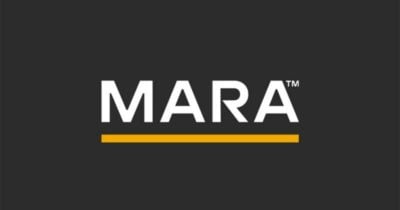
Venezuela's move towards Bitcoin integration could stabilize its economy, offering a hedge against hyperinflation and currency volatility.
The post Venezuela inches toward integrating Bitcoin into its national banking rails appeared first on Crypto Briefing.

Bitcoin Magazine

Steak ’n Shake Partners With Fold to Launch $5 Bitcoin Burger Reward
Fold Holdings (NASDAQ: FLD), the bitcoin rewards company known for letting users earn sats on everyday purchases, has teamed up with iconic fast-food chain Steak ’n Shake for a limited-time promotion that lets customers earn $5 in bitcoin with their meal.
Starting today, Steak ’n Shake diners who order a Bitcoin Meal or Bitcoin Steakburger at one of the 1,200+ participating Steak ’n Shake locations can visit bitcoinmealdeal.com, upload their receipt, and receive a code redeemable for $5 in bitcoin through the Fold app.
Once the Fold app is downloaded and activated, the reward is instantly credited. The partnership marks the first time a U.S. restaurant chain has paired a menu item with bitcoin rewards, blending food, finance, and pop culture in a single bite.
Even the bun carries a message: it’s stamped with a Bitcoin logo, a subtle but unmistakable symbol of how far the orange coin has traveled into mainstream consciousness.
“Bitcoin goes mainstream when it starts showing up in everyday life,” said Fold Chairman and CEO Will Reeves in a note to Bitcoin Magazine. “That’s been our vision from the beginning, and our promotion with Steak ’n Shake is the next step in that journey. For many people, this will be the first time they ever own bitcoin — and it’ll come from something as ordinary as grabbing a burger.”
For Steak ’n Shake, the partnership deepens its ongoing relationship with the Bitcoin community.
Earlier this year, the 90-year-old chain rolled out Lightning Network payments across all U.S. locations, allowing customers to pay for meals using bitcoin with instant, low-fee transactions.
The company even sparked headlines when it publicly scrapped plans to accept Ethereum, declaring its “allegiance” to Bitcoiners.
Now, it’s taking that loyalty a step further.
“Steak ’n Shake has never been afraid to take a bold position, and putting bitcoin on the menu is the latest example,” said Sardar Biglari, CEO of Steak ’n Shake. “Bitcoin is rewriting the rules of culture and commerce, and we want our guests to be part of that future every time they sit down for a meal.”
Fold, which went public earlier this year through a SPAC merger, currently holds roughly 1,500 BTC in its corporate treasury — valued near $160 million — and maintains a market cap just under $200 million.
The company recently launched a bitcoin rewards Visa card powered by Stripe and continues to expand its product suite bridging traditional finance and Bitcoin-native tools.
The campaign — launching today, a date that coincidentally marks the 17th anniversary of the Bitcoin white paper — runs nationwide while supplies last. For both companies, it’s a symbolic nod to Bitcoin’s evolution from white paper to burger wrapper.
This post Steak ’n Shake Partners With Fold to Launch $5 Bitcoin Burger Reward first appeared on Bitcoin Magazine and is written by Micah Zimmerman.
Coins.ph announced a partnership with BCRemit that will allow OFWs in the U.K., EU, U.S., and Canada to easily send money to the Philippines.
The post Coins.ph and BCRemit tie-up for fast, affordable money transfers from filipinos abroad appeared first on CoinGeek.
In his livestream after the London Blockchain Conference 2025, Kurt Wuckert Jr. shares what he learned and what the future of the blockchain looks like.
The post CoinGeek Weekly Livestream: ‘2026 is the big year’ appeared first on CoinGeek.


© PA Archive

GHOST is among the few tokens with an upside trajectory as the overall cryptocurrency market displays significant selling pressure.
The digital token thrived in the past few sessions as privacy cryptocurrencies gained increased traction, with Zcash leading the trend.
Meanwhile, GHOST’s remarkable performance is grabbing the attention of dip-pocketed investors.
For context, the alt surged roughly 65% over the past seven days.
According to Lookonchain, a new wallet withdrew 523.39 SOL, worth approximately $100,500, from Binance to buy around 4.8 million GHOST coins over the past 24 hours.
Someone created a new wallet 8tqszG and withdrew 523.39 $SOL($100.5K) from #Binance to buy 4.8M $GHOST.
Address:https://t.co/OOn2Pcddqj pic.twitter.com/3Fl2LWF7hg
— Lookonchain (@lookonchain) October 31, 2025
The transaction has stirred speculation due to its timing. Should we expect continued rallies from the altcoin?
The entry appears strategic as it comes amid bullish price actions, likely signaling conviction of extended upsurges for GHOST.
Ghost is a decentralized platform aiming to transform the crypto world with privacy.
The network uses GHOST as its native token. The ecosystem allows individuals to transact anonymously and privately.
While assets like Bitcoin have all their transaction history publicly available, Ghost obfuscates transactions across the network.
It hides transaction details on the senders and receivers’ ends to guarantee maximum privacy.
The altcoin remained in the spotlight in recent sessions as privacy tokens gained increased attention.
For instance, Zcash soared nearly 400% in October as the entire crypto sector struggled with uncertainty. GHOST gained around 115% the previous month.
The whale transfer has sparked the Ghost community, with social posts mentioning the token gaining attention.
While some questioned the whale’s motives, others perceive the accumulation as a sign of trust in the project.
Trading volumes mirrored the enhanced sentiments. GHOST’s daily trading volume skyrocketed by more than 600% to $2.81k.
That reflects renewed user interest in the digital currency.
Also, Ghost appears to have adequate liquidity on decentralized exchanges. That suggests that organic demand is fueling GHOST’s rally.
The alt maintains an optimistic outlook, changing hands at $0.06215 at the time of writing.

It has gained over 65% and roughly 115% the past week and month.
Technical indicators point to further rallies for the alternative token.
For instance, GHOST is hovering well above the vital 50 and 100 Exponential Moving Averages on the 4Hr timeframe.
That indicates a reliable support barrier for the digital asset.
The Moving Average Convergence Divergence displayed a bullish crossover with robust green histograms.
GHOST will possibly extend its rallies before cooling.
The 4Hr Relative Strength Index reads 72, highlighting overbought situations and the possibility of imminent corrections.
The post GHOST extends rally as whale scoops 4.8 million tokens appeared first on CoinJournal.

An X account, currently controlled by a friend of Sam Bankman-Fried, stirred the cryptocurrency market with a post claiming that the firm wasn’t insolvent.
The 15-page document claims FTX encountered a liquidity crisis that “was on track to be resolved by the end of the month” until the exchange’s external counsel assumed control. It declared:
FTX was never bankrupt, even when its lawyers placed it into bankruptcy.
[SBF says:]
This is where the money went. https://t.co/HVRwEw5Z1k https://t.co/5DrA13L5YE pic.twitter.com/O6q77DvmTn
— SBF (@SBF_FTX) October 31, 2025
The disgraced founder and his team supposedly wrote the document, which highlights that the exchange didn’t file for bankruptcy after a plan to commit fraud and mishandle billions of customer funds, as the court concluded.
They insist that FTX encountered a liquidity crunch after “a sudden shortage of cash.
Meanwhile, the exchange’s native token, which has survived without solid utility since FTX’s debacle, turned bullish amid the developments.
FTT gained more than 2% on its daily chart to trade at $0.8473.
Its trading volume has increased by over 25%, indicating optimism.
For context, the global crypto market capitalization remained muted the past 24 hours with a mere 0.08% uptick to $3.7 trillion.
The document argues that the cryptocurrency exchange and sister company Alameda boasted assets worth $25 billion, alongside $16 billion in equity value, against liabilities worth $13 billion, as it fell in 2022.
That means a net value of approximately $28 billion. It added:
During the crisis, the value of the assets and (presumably) equity took a temporary hit, but even at the peak of the crisis, the companies remained solvent – even if one were to ignore equity.
SBF and his team claim their empire would be worth roughly $136 billion if lawyers didn’t sell assets that they invested in.
That would comprise a $7.6 billion stake in Robinhood broker, $14.3 billion investment in AI startup Anthropic, among other assets.
However, cryptocurrency enthusiasts and online investigators aren’t buying SBF’s claims.
Some believe these are desperate attempts to secure a pardon, after Donald Trump’s similar move on Binance founder CZ.
Meanwhile, some questioned why FTX suspended withdrawals if it had enough money for creditors.
A DeFi enthusiast and X user, Hanzo, referenced the incident where Bybit suffered $1 billion ETF scam, stating:
Many CEXs went through stress tests after some massive fuck ups, and they all are here.
FTX’s native token gained more than 2% amid these developments.
It is hovering at $0.8473, with soaring trading volumes highlighting enthusiasm.

Nevertheless, FTT recoveries will likely be short-lived.
Broader market weakness and negative community reaction to the team’s claims weigh on the digital token.
The post FTT price turns bullish as SBF claims FTX exchange was never insolvent appeared first on CoinJournal.

Mastercard aids Uzbekistan in its digital payments adoption after identifying hurdles, while Nestlé future-proofs its operations with a major upgrade.
The post Uzbekistan faces hurdles; Nestlé powers up with AI appeared first on CoinGeek.

© PA Wire
Bitcoin Magazine
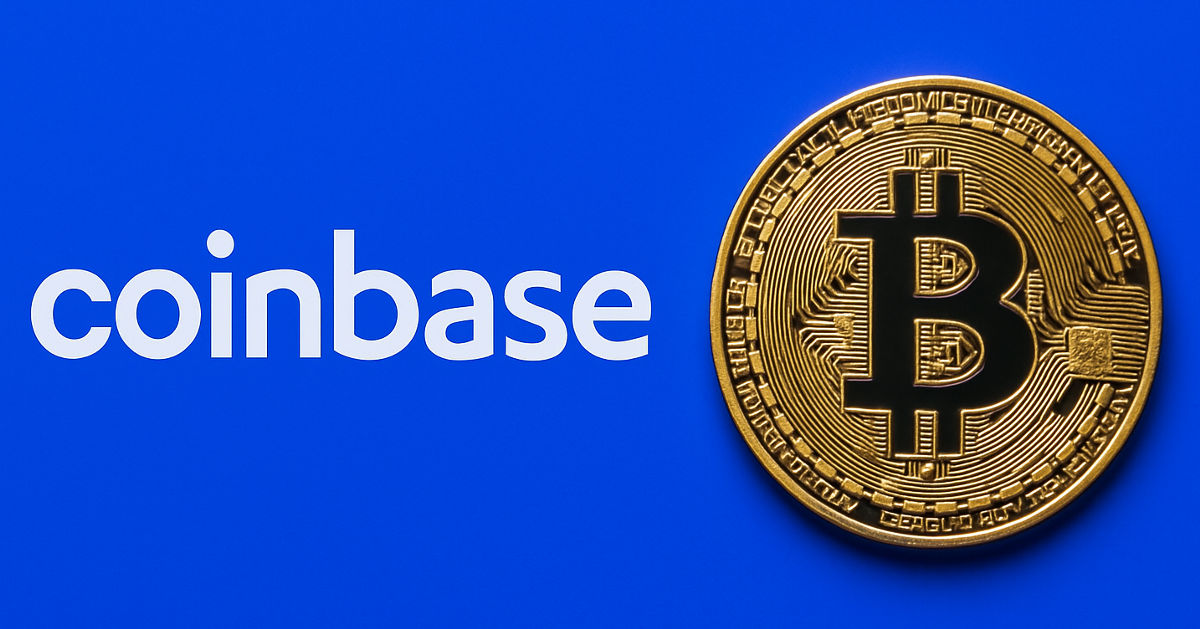
Coinbase Beats Q3 Estimates With $1.9B Revenue, Buys $300M in Bitcoin
Coinbase reported stronger-than-expected third-quarter earnings Thursday, posting $1.9 billion in revenue — up 26% from the previous quarter — as renewed crypto market momentum boosted both trading and stablecoin income.
The San Francisco-based exchange notched $433 million in net profit, or $1.50 per share, surpassing Wall Street expectations of $1.10 per share on $1.8 billion in revenue.
Despite a sequential decline from its record $1.4 billion profit in Q2, Coinbase attributed the drop primarily to non-cash mark-to-market adjustments related to its holdings in Circle and its crypto portfolio.
Shares of Coinbase Global (COIN) jumped more than 4% in after-hours trading to $341 following the results.
JUST IN: Coinbase announced it purchased $299 million #Bitcoin in Q3, 2025
— Bitcoin Magazine (@BitcoinMagazine) October 30, 2025pic.twitter.com/7axMBTxFw0
The stock is up roughly 33% year-to-date after peaking above $440 in July.
Coinbase also bought almost $300 million in BTC in Q3. CEO Brian Armstrong confirmed via an X post that remains bullish on bitcoin, stating, “Coinbase is long Bitcoin. Our holding increased by 2,772 BTC in Q3. And we keep buying more.”
The results came as Bitcoin hit fresh all-time highs during the quarter, fueling renewed retail and institutional activity after a quieter Q2 marked by macro headwinds.
Coinbase reported $1.0 billion in transaction revenue, up 37% from the prior quarter and 83% from a year earlier, on trading volumes of $295 billion.
Institutional volume rose 22% sequentially to $236 billion, driven in part by the August acquisition of Deribit, the world’s largest crypto options exchange.
Deribit contributed $52 million in revenue during Q3 as Coinbase expanded its derivatives business to include 24/7 perpetual futures trading in the U.S.
Retail activity also rebounded, with consumer trading volume climbing 37% to $59 billion. Coinbase said new listings and decentralized exchange (DEX) integrations helped boost activity among “advanced traders” the company said, while the company’s platform now supports trading for roughly 90% of all crypto assets by market capitalization.
Coinbase continues to diversify beyond trading fees, with subscriptions and services revenue climbing 14% to $747 million.
Stablecoin revenue — largely derived from its role in distributing and managing Circle’s USDC — rose to $355 million, a 43% increase year-over-year. Average USDC balances held in Coinbase products reached a record $15 billion, supported by rising market capitalization and new institutional reward programs.
Blockchain rewards, including staking income, grew 28% quarter-over-quarter to $185 million, aided by surging prices for Ethereum and Solana.
Meanwhile, custodial fees and interest income both hit new highs as total assets on the platform reached $516 billion.
Coinbase said it is progressing toward its vision of an “Everything Exchange” — a platform uniting spot, derivatives, and onchain services under one roof.
The exchange also highlighted ongoing development of Base, its Ethereum layer-2 network, which has become the leading L2 for stablecoin adoption with $4.6 billion in dollar-pegged assets.
CEO Brian Armstrong said Coinbase is scaling payments by ‘advancing stablecoin adoption’ and building the foundation of the future financial system.
This post Coinbase Beats Q3 Estimates With $1.9B Revenue, Buys $300M in Bitcoin first appeared on Bitcoin Magazine and is written by Micah Zimmerman.
Strategy posts $2.8B Q3 income despite muted Bitcoin prices, expanding holdings to 640K BTC as stock drops 20% in October.
The post Strategy reports $2.8B net income in Q3 2025 despite muted Bitcoin performance appeared first on Crypto Briefing.
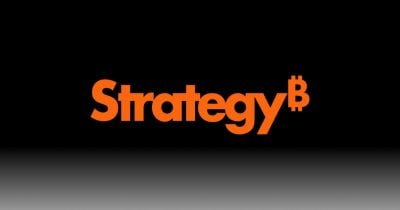
Coinbase posts $432.6M Q3 profit as crypto volatility lifts trading volumes amid Trumps pro-crypto policies and market sell-offs.
The post Coinbase reports major net income growth in Q3 2025 amid increased trading volumes appeared first on Crypto Briefing.
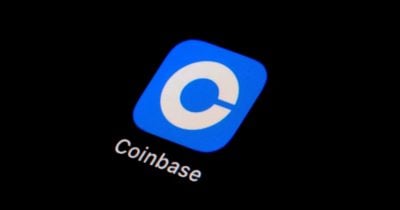

© PA Archive
SEGG Media's initiative highlights the increasing corporate trend of leveraging digital assets for treasury management, potentially boosting market legitimacy.
The post SEGG Media plans $300 million digital asset initiative, with initial emphasis on Bitcoin appeared first on Crypto Briefing.

Core Scientific's decision to remain independent may strengthen its focus on Bitcoin mining, potentially enhancing its market position.
The post Core Scientific shareholders reject CoreWeave merger proposal appeared first on Crypto Briefing.



© PA Archive
Bitcoin Magazine

Nordic Giant Nordea Opens Crypto Door with Bitcoin-linked ETP
Nordea Bank Abp (Nordea) has announced that it will offer its customers access, from December 2025, to a synthetic exchange-traded product (ETP) whose underlying asset is Bitcoin (BTC).
According to Nordea’s official announcement, the product will be manufactured externally by CoinShares International Limited and made available through Nordea’s execution-only platform.
Under this model, customers may trade the product, but Nordea will not offer advisory services on it.
The bank cites two primary drivers for the move: the maturation of the European regulatory environment for crypto-assets, especially following the implementation of the Markets in Crypto‑Assets Regulation (MiCa) regime across the European Union in December 2024; and growing demand for virtual currencies among retail and institutional investors in the Nordic region.
The ETP in question is described as a “synthetic” product, meaning it provides exposure to Bitcoin via a traditional financial instrument rather than requiring direct custody of BTC.
Nordea emphasises that the offering is aimed at “experienced investors seeking alternative asset exposure.”
Here’s the broader context: ETPs and exchange-traded vehicles tied to cryptocurrencies have been proliferating across European venues, enabling both retail and institutional investors to access digital-asset exposure through familiar channels.
JUST IN: €648 billion Nordea to allow customers to trade #Bitcoin-linked ETP on its platforms.
— Bitcoin Magazine (@BitcoinMagazine) October 30, 2025
Europe is comingpic.twitter.com/L8hhxKscIZ
With Nordea’s move, one of the largest Nordic financial institutions is signalling its readiness to integrate crypto-exposure into its product suite.
At the same time, Nordea remains cautious. In its release, the bank underscores its historic “cautious stance” toward crypto — driven by the absence of investor-protection frameworks, regulatory clarity and supervision in the early days of the digital-asset markets.
For Bitcoin, this development may carry several implications: access broadened into the Nordic regulated-bank channel; increased legitimacy of ETP wrappers as a gateway to exposure; and potentially stronger competition among product issuers aiming to service bank-platform clients under regulated frameworks.
The product’s December launch means it aligns with the current regulatory momentum across Europe.
Still, caveats abound. A synthetic ETP structure carries its own risk profile (as investors are exposed via an issuer product rather than holding the underlying asset directly). Also, the “execution-only” nature means that retail customers may buy without advisory support.
Nordea Bank Abp is the leading financial-services group in the Nordic region. The group offers universal-banking services including personal banking, business banking, large-corporate and institutional banking, and asset & wealth management.
This post Nordic Giant Nordea Opens Crypto Door with Bitcoin-linked ETP first appeared on Bitcoin Magazine and is written by Micah Zimmerman.
Amid broader weakness, Avalon Labs fueled optimism through the blockchain industry after releasing its highly anticipated whitepaper.
The document highlights the firm’s mission for launching the world’s first AI-driven RWA marketplace, alongside an AI-MaaS (AI-Model-as-a-Service) platform, which merges blockchain with artificial intelligence.
Today, we’re excited to announce the official release of our Whitepaper for the industry’s first on chain AI-backed RWA marketplace and AI-Model-as-a-Service (AI-MaaS). The exclusive initial launch on @BNBCHAIN!
This marketplace is open to all GPU hardware owners and AI model… pic.twitter.com/1StYiyToN4
— Avalon Labs (@avalonfinance_) October 30, 2025
The new project will debut exclusively on BNB Chain, a move that could welcome lucrative opportunities for GPU owners and AI developers.
The move heralds the next stage of RWA tokenisation’s evolution – powered by innovations beyond blockchain, including self-learning AI programs and intelligent.
According to the announcement:
This marketplace is open to all GPU hardware owners and AI model developers. Our first launch will feature a Reinforcement Learning Model (RL Model) deployed by Avalon abs in collaboration with our AI partner, powered by H200 GPU hardware as the foundation.
Avalon Labs’ alt saw a sharp uptick following the whitepaper release.
AVL soared from the daily low of $0.1436 to $0.1668 – a 16% increase.
However, the digital token has retraced as hype fades and bearish broader sentiments.
Meanwhile, Avalon Labs plans to create a platform that supports artificial intelligence innovation.
The project aims to provide contributors and developers a fair environment to engage in the AI economy.
Beyond the AI-driven marketplace, Avalon Labs also introduced the CRT (Commercial Rights Tokenization) standard.
The concept introduces a new framework for tokenizing commercial rights linked to goods, services, and assets.
CRT might transform how businesses connect with investors and raise capital.
For instance, an enterprise can tokenize rights to future services or sales and offer them to customers via on-chain contracts.
The mode bridged blockchain with traditional commerce to provide a new option for SMEs to access liquidity as investors gain exposure to RWA streams.
The whitepaper highlighted:
CRT isolates and tokenizes commercial rights of access and service. This enables commodities, services, and goods to be legally structured, accessed, exchanged, and monetized through blockchain infrastructure in a regulatory-compliant manner.
Precisely, Avalon Labs is going beyond asset tokenization. It is tokenizing the rights that add value to those assets.
Avalon Labs’ native token decoupled from broader declines as the whitepaper sparked optimism.
AVL soared roughly 16% from a daily low of $0.1436 to $0.1668 intraday peak.
Its 24-hour trading volume surged 50% to signal trader enthusiasm.
Nevertheless, it has cooled to $0.1570 as hype fades, possibly as bears rattled the overall cryptocurrency sector.

Continued broader dups could see AVL erasing its latest gains before establishing a decisive trajectory.
The post Avalon Labs (AVL) releases whitepaper for AI-powered RWA marketplace appeared first on CoinJournal.

Crypto treasury firms lose shine as mNAVs sink, buybacks fail, and regulators move to curb risky token-hoarding strategies.
The post Digital asset treasuries find hype is easy, endurance is hard appeared first on CoinGeek.
At the London Blockchain Conference 2025, tokenization was front and center, with financial institutions experimenting with tokenized deposits and RWAs.
The post Treasuries, tokenized bonds: What’s driving institutional adoption? appeared first on CoinGeek.
Nordea's move signifies increased mainstream acceptance and integration of crypto assets in European financial systems, enhancing investor access.
The post Nordea to allow Bitcoin-linked ETP trading on its platforms appeared first on Crypto Briefing.

Uphold's card relaunch could accelerate crypto adoption in daily spending, influencing financial habits and expanding digital asset integration.
The post Uphold reintroduces debit card in US with up to 6% XRP rewards appeared first on Crypto Briefing.

The MegaETH token sale's success highlights growing investor confidence in Ethereum layer 2 solutions, potentially accelerating blockchain adoption.
The post MegaETH token sale ends with $1.4B in bids, reaching $27.8B FDV appeared first on Crypto Briefing.

Last updated on October 30, 2025
This Article Was First Published on The Bit Journal.
The TRUMP token may be entering a new phase. According to the source, issuer Fight Fight Fight LLC is in talks to acquire Republic’s U.S. crowdfunding business, a well-known startup investment platform backed by Galaxy Digital and Binance Labs.
The discussions suggest a shift toward real financial infrastructure rather than meme-driven speculation.
Reports indicate that Fight Fight Fight LLC aims to expand its reach beyond token issuance. By exploring the Republic deal, the firm could merge startup fundraising with its digital asset ecosystem. That would allow future users to engage with the TRUMP token inside regulated fundraising frameworks.
If the acquisition succeeds, it could provide an entry into licensed crowdfunding, bridging cryptocurrency and traditional finance. Such integration would give the TRUMP token practical use beyond branding appeal. It also suggests a shift from speculation to utility, a move that could attract a wider pool of investors. Many see this as a sign that the issuer wants to build lasting credibility, not just short-term hype.
Fight Fight Fight LLC is developing a digital asset treasury, a reserve fund reportedly targeting a range of $200 million to $1 billion. The goal is to buy back tokens from the open market to help stabilize prices.
According to the source, the token trades around $8.31 and has a market capitalization of roughly $1.66 billion. The circulating supply stands at 199,999,241 tokens out of a maximum of 999,999,993. Its all-time high of $75.35, reached earlier in 2025, remains a distant memory.
Analysts believe this treasury plan could strengthen investor confidence while providing the project with steady revenue from Republic’s regulated operations. The buyback model, if executed well, could also reduce volatility and set a benchmark for other politically branded tokens. Traders have noted that transparency and timely updates will decide how much trust the plan earns in the coming months.

The project has faced legal hurdles. Earlier this year, Fight Fight Fight LLC received a warning from another Trump-linked crypto company over an “unauthorized” digital product. The Republic deal seems to be part of a broader effort to professionalize its image and reduce regulatory risk.
A partnership with Republic, a company recognized for compliance and venture partnerships, could help the issuer rebuild trust and gain legitimacy in traditional markets. Aligning with a regulated platform might also calm concerns from cautious investors. Beyond legality, it could give the project a more transparent governance structure, which many see as key for long-term growth.
Traders have responded cautiously to the potential acquisition. Some view it as a step toward maturity, while others are waiting for tangible progress. If finalized, this would be the first time a meme coin issuer controls a regulated U.S. crowdfunding platform, merging retail investing with political branding in a new way.
The TRUMP token stands at a crossroads. The Republic acquisition could open doors to compliant fundraising, long-term investors, and sustainable revenue. However, challenges like execution risk and political scrutiny remain. For now, it represents one of the most ambitious attempts to transform a meme coin into a structured digital asset.
To gain access to a regulated U.S. crowdfunding platform and expand fundraising capabilities.
At least $200 million, potentially reaching $1 billion, for a digital asset treasury.
Approximately $8.31 as of October 30, 2025.
It blends crypto innovation with regulated investment, setting a precedent for other meme coins.
Read More: TRUMP Token Eyes Republic Acquisition in $1B Expansion Plan">TRUMP Token Eyes Republic Acquisition in $1B Expansion Plan



© PA Wire

© PA Media
The Cronos blockchain has announced the launch of its anticipated Smarturn upgrade, welcoming a new era in its network evolution.
The update brings significant improvements across Cronos’s Ethereum Virtual Machine (EVM), including increased interoperability, enhanced ecosystem performance, and smooth wallet functionality.
According to the announcement:
This mainnet upgrade marks a major leap in Cronos’ evolution – unlocking smart accounts, new EVM features, and improved performance for developers and users alike.
🚀 Cronos EVM upgrade complete — “Smarturn” is here!
This mainnet upgrade marks a major leap in Cronos’ evolution — unlocking smart accounts, new EVM features, and improved performance for developers and users alike.
Here’s what’s new 👇 pic.twitter.com/6Vi4K8BUbL
— Cronos (@cronos_chain) October 30, 2025
The blockchain temporarily paused operations for roughly 60 minutes to integrate the new components.
Meanwhile, services are resuming gradually as the Cronos ecosystem undergoes a key milestone.
Smarturn aims to revolutionize Cronos through speed and compatibility using its unique innovations.
The high-end EIP-7702 smart account support is at the core of Cronos’ latest upgrade. With this feature, regular user wallets (Externally Owned Account (EOA) can perform like smart contract wallets.
That helps unlock capabilities previously possible via different accounts. According to the official blog:
EIP-7702 bridges this gap by letting EOAs act like smart contracts. The assigned contract code remains valid until the account issues a new authorization, which can apply to one chain or to multiple chains simultaneously.
Individuals can now perform different activities without changing account types, including using flexible gas payment methods, personalizing permissions, batching many transactions, and programming wallet behavior.
With EIP-7702, Cronos joins the few EVM-compatible platforms boasting such a level of account abstraction, merging automated control with simplicity.
The functionality will advance DeFi platforms and decentralized applications (dApps) on the Cronos blockchain through efficiency and user-friendliness.
Furthermore, Cronos upgraded its EVM’s VM to operate on go-Ethereum v1.15.11, aligning with Ethereum’s Prague and Cancun upgrades.
The update aims to make contract execution and transacting cheaper and faster.
Also, it brings comprehensive client improvements and new EVM opcodes on Cronos to enhance efficiency, developer experience, and debugging. The team added:
These opcodes collectively make contract execution more efficient for complex DeFi, gaming contracts that handle multiple operations per transaction, and other computation-heavy applications.
Together, these upgrades make the Cronos EVM runtime faster, lighter, and more developer-centric.
Smarturn also improves infrastructure for cross-chain builders and developers.
For instance, a new RPC endpoint enables the fetching of full block data in a single query.
That’s a win for dApp backends, analytics dashboards, and blockchain explorers.
Moreover, the mempool now allows users to cancel or speed up pending transactions.
That improves responsiveness amid massive network load.
Also, Cronos has adopted IBC v2 through ibc-go v10.1.1 to bolster cross-chain communication.
The alt hovered at $0.1470 after dropping roughly 1.5% the past 24 hours.
Its daily trading volume has collapsed by more than 60%, signaling faded enthusiasm.

Nonetheless, CRO reflects the broader sentiments.
Bitcoin trades below the key $110,000 after shedding nearly 3% of its value over the previous 24 hours.
Markets lost momentum after Powell’s cautious remarks concerning a rate cut in December.
The post Cronos (CRO) rolls out “Smarturn” upgrade for advanced EVM features appeared first on CoinJournal.
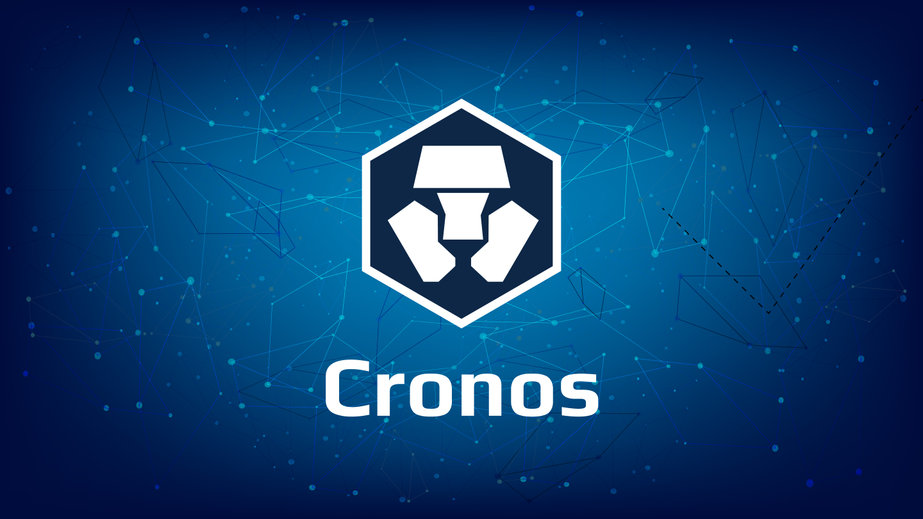
Bataan Governor Jose Enrique Garcia III outlined an ambitious plan to transform the Bataan Nuclear Power Plant into a hyperscale data center and IT hub.
The post Philippines: Bataan to turn dormant nuclear plant to data center appeared first on CoinGeek.

© PA Media

© Alamy/PA

© PA Archive
The company has already laid off 500 people this year

© Copyright 2025 The Associated Press. All rights reserved.

© PA Archive
The energy firm attributed the improved performance to higher sales volumes and enhanced trading margins

© PA Wire

© Alamy/PA
Bearish sentiments gripped the cryptocurrency market today as Bitcoin plunged below $110,000.
While the 2% decline in global market capitalisation confirms broader weakness, the Official Trump meme token maintained a bullish 24-hour chart.
The meme crypto extended its weekly gains to over 40% after rallying 13% the previous day.
$TRUMP continued its rally after news emerged that the company behind the project, Fight Fight Fight LLC, plans to acquire the US operations of a leading crowdfunding and investment platform, Republic.
🚨 BREAKING 🚨
TRUMP TOKEN ISSUER FIGHT FIGHT FIGHT LLC IN TALKS TO ACQUIRE CROWDFUNDING PLATFORM https://t.co/N2R0nezMy6'S US OPERATIONS, BLOOMBERG REPORTS.
💥 BIG MOVE COMING! 💥#Trump #Republic #BusinessDeal #Crowdfunding #FightFightFightLLC pic.twitter.com/ObsNtML26s— Crypto News Hunters 🎯 (@CryptoNewsHntrs) October 30, 2025
The news stirred the digital assets community, propelling the politically charged altcoin over the last 24 hours.
What started as a satirical token tied to the US president could be evolving into a financial product that experiments with the combination of real-world finance, blockchain fundraising, and politics.
Notably, Republic offers retail and institutional investors streamlined access to startup fundraising, RWAs, and tokenised investments.
Integrating Official Trump into Republic’s ecosystem could merge meme crypto enthusiasm and real-world blockchain use cases.
Imagine investing in a themed token that funds startups, backs innovative ventures, or even supports online payments.
If successful, the strategic acquisition would enable Fight Fight Fight LLC to control Republic’s robust crowdfunding ecosystem.
The meme coin will possibly leverage Republic’s reputation to gain legitimacy and credibility.
Such perks can attract more investors and partnerships.
Republic has been vital in supporting cryptocurrency’s mainstream acceptance.
It focuses on inclusive investment models and tokenisation, allowing individuals to own fractions of real-world assets previously restricted to wealthy investors and venture capitalists.
Now, Fight Fight Fight LLC wants to gain control of Republic’s operations in the United States.
Besides boosted exposure, the deal could mean access to a regulatory ecosystem, a significant user base, and a bridge between fast-moving meme culture and traditional finance.
The digital asset is trading at $8.20 after a brief correction from daily peaks.
Its daily trading volume has increased by more than 35% to $2.6 billion.

Rising volumes amid bullish price actions signal trader optimism and possibilities of continued rallies.
$TRUMP has gained over 41% the previous week, and bulls seem ready to push for more.
Moreover, prevailing whale activity suggests confidence in $TRUMP’s performance.
For instance, one trader is dominating Hyperliquid and Solana platforms with substantial bets on the meme token.
According to Lookonchain, this participant spent 5,346 Solana tokens, worth around $1.07 million, to buy 165,401 TRUMP coins on the SOL blockchain.
He entered at roughly $6.45, and is now cheering approximately $335,000 unrealized profit.
The same investor deposited $485,669 in USDC into the perp DEX Hyperliquid.
Here, the player used maximum leverage for a $9.5 million long position.
As of this writing, the trader sat on roughly $1.18 million in unrealized gains, bringing his total returns to $1.5 million.
Has $TRUMP started moving? 👀
Someone created new wallets to buy $TRUMP spot on #Solana while also going long on $TRUMP on #Hyperliquid — already sitting on over $1.5M in profit!
• On Solana, he spent 5,346 $SOL($1.07M) to buy 165,401 $TRUMP ($1.4M) at $6.45, with $335K in… pic.twitter.com/RLXEs1g0Mt
— Lookonchain (@lookonchain) October 30, 2025
The latest whale activity paints an optimistic picture for Official Trump in the near term.
Corporate expansion developments and the excitement around the alt as Donald Trump discusses a trade deal with China’s Xi Jinping has formed a mix of momentum and hype.
The post Official Trump ($TRUMP) soars 13% as meme issuer eyes Republic acquisition appeared first on CoinJournal.

Samsung today announced its Q3 2025 revenue and profit results. The company’s consolidated revenue and operating profit have seen a steep surge, making the quarter a record-breaking period in recent years.
In Q3 2025, Samsung posted KRW 86.1 trillion ($59.8 billion) in consolidated revenue, an increase of 15.4% compared to the previous quarter, whereas the operating profit increased to KRW 12.2 trillion ($8.47$ billion).
HBM3E AI chip boom and Galaxy Z Fold 7 sales have played a crucial role in Samsung’s comeback. The company’s DS Division, which includes the memory business, reported a 19% increase in sales quarter-on-quarter.
Galaxy Z Fold 7 has also impressed Samsung with its strong sales. The company’s latest foldable smartphone helped MX Business to grow sales in both quarter-on-quarter and year-over-year sales and operating profit.
Samsung shared details insights for all of its key businesses. In addition, the company has also shed light on its future plans that include sales of its 2nm Exynos 2600 chips, advanced mobile AI, new camera sensors, and seasonal sales.
The company will rely on seasonal sales around the world to derive its Q4 2025 sales. 2026 will begin with the launch of the new flagship phones, the Galaxy S26 series, which will give a massive boost to sales in 1Q26 and 2Q26.
Exynos 2600 is sealed for the Galaxy S26 and S26 Plus. Samsung Display will also bring its advanced OLED solutions to widen the technological gap, and System LSI will expand the ISOCELL image sensor portfolio.
Besides mobile business, the Korean company will focus on the HBM4 AI semiconductors. The recent Nvidia certification on HBM3E has positively impacted its DS Division (memory business) apart from Tesla and OpenAI deals.
Division-wise sales details can be accessed in the press release.
The post Samsung posts explosive Q3 2025 growth on AI chip boom and Galaxy Z Fold 7 demand appeared first on Sammy Fans.
The acquisition could diversify Fight Fight Fight LLC's business model, potentially reshaping the crowdfunding landscape and digital asset integration.
The post TRUMP token issuer exploring deal to buy Republic’s US operations appeared first on Crypto Briefing.

Kazakhstan boosts digital transformation through EU collaboration, while Huawei launches GovTech 1.0 to enhance government modernization in Central Asia.
The post Kazakhstan partners with EU; Huawei launches GovTech1.0 appeared first on CoinGeek.
Consensys selects JPMorgan and Goldman Sachs to lead its planned IPO, marking one of the biggest crypto-native listings to date.
The post Consensys selects JPMorgan and Goldman Sachs to lead MetaMask developer’s planned IPO appeared first on Crypto Briefing.

Mastercard is in late-stage talks to acquire Zerohash for up to $2B, marking one of its biggest stablecoin infrastructure bets.
The post Mastercard in late-stage talks to acquire Zerohash for up to $2B in stablecoin push appeared first on Crypto Briefing.
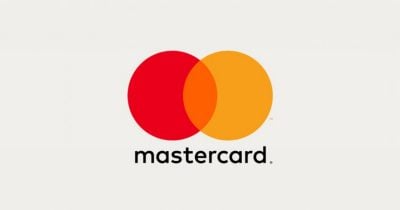

© PA Archive
The team revealed that the event burned 6.78 million INJ coins, worth roughly $32.28 million.
The first $INJ Community BuyBack is now officially complete!
Injective is the only chain where token buybacks directly reward the community.
1. INJ is burned forever
2. The community earns from a reward pool for their contributionsStay tuned for the next burn in November 🔥 pic.twitter.com/5KUiMDiyaI
— Injective 🥷 (@injective) October 29, 2025
Rather than the foundation or team repurchasing tokens and burning them privately, Injective prioritizes user participation.
The layer 1 network creates a system that merges deflation with community incentives.
Such an approach ensures that active network participants benefit from Injective’s ecosystem expansion, aligning rewards between INJ holders, traders, and developers.
The announcement read:
Injective is the only chain where token buybacks directly reward the community.
Notably, Injective opened the first community buyback event for the public on October 23, with the actual repurchase and token burn occurring after a week, on October 27.
Injective’s community buyback mechanism adopts two powerful yet simple ways.
First and foremost, the platform permanently burns native tokens to reduce the overall supply.
Secondly, it distributes some of the value to reward users who contribute to the INJ’s ecosystem.
According to the official blog:
The Community BuyBack is a monthly on-chain event that allows anyone to take part in Injective’s deflationary mechanism. Participants commit INJ, and in return receive a pro rata share of the revenue generated across the Injective ecosystem. The INJ exchanged is then permanently burned, reducing the total supply of INJ.

Notably, the Community BuyBack basket comprises various tokens, including USDT and INJ, valued at 10,000 Injective tokens.
That design introduces a robust deflationary model, while incentivizing loyal users.
Injective maintains transparency, with all buyback information available on the dashboard.
Injective’s latest announcement is part of its broader mission to build a community-centered, sustainable token economy.
By burning native tokens every month, the project aims to reduce INJ inflation while encouraging long-term holding.
Most projects across the decentralized finance sector are embracing such mechanisms.
However, Injective has added a significant twist, involving its users in the process.
Besides strengthening trust, such an approach keeps INJ holders engaged in the ecosystem’s growth.
Also, holders will benefit from scarcity as every buyback reduces the circulating asset supply permanently.
The next burn will happen next month, in November.
The native token remained relatively muted over the past 24 hours, as bears moved the broader market.
INJ is trading at $8.66. It has consolidated between $9 and $8 over the previous week, gaining over 3% in that timeframe.

Its daily trading volume has increased by 17%, signaling renewed optimism, likely following the buyback announcement.
Nevertheless, broad market sentiments will influence the altcoin’s price trajectory in the coming sessions.
The post Injective (INJ) completes its first community buyback worth $32 million appeared first on CoinJournal.

The Ethereum Foundation has announced a new website, Ethereum for Institutions, designed to guide businesses on how to operate on-chain.
Unveiled today, October 29, the site aims to supercharge Ethereum adoption among top companies.
The official announcement reads:
Ethereum is the neutral, secure base layer where the world’s financial value is coming on-chain. Today, we’re launching a new site for the builders, leaders, and institutions advancing this global movement.
The foundations Enterprise Acceleration team created the new website to present a clear framework for firms interested in building and investing in the second-largest cryptocurrency.
New resource: https://t.co/F0O6v6oNxr
A hub with live ecosystem data, sector overviews, and primary sources for institutions exploring Ethereum. pic.twitter.com/I4qJG90lUb
— Ethereum (@ethereum) October 29, 2025
Ethereum for Institutions offers case studies, resources, and access to industry leaders shaping the next phase of DeFi.
Scalability has been among the primary challenges in Ethereum’s push for institutional-grade adoption.
Meanwhile, its L2 ecosystem, comprising projects like Arbitrum, zkSync, Base, and Optimism, is addressing that.
The foundation revealed that Layer2s secure more than $50 billion in value. The team said:
With $50B+ in total value secured, L2s provide the high-throughput, low-cost execution needed for global-scale applications – from payments to tokenization.
These platforms have gained traction for offering low costs and high throughput essential for enterprise-level utility, including real-world assets tokenization, trading, and payments.
Notably, the new website features a comprehensive L2 segment showcasing how these solutions are enabling cheaper and faster transactions while leveraging Ethereum’s robust security.
Layer 2 platforms offer the infrastructure for businesses navigating decentralized finance, stablecoins, or tokenization.
Ethereum’s new institutional website is beyond a documentation hub. It welcomes the next phase of digital finance.
It lowers entry barriers for traditional institutional navigating on-chain finance by organizing data around key sectors like DeFi, staking, restaking networks, RWAs, and DeFi.
It builds on the Ethereum vision, serving as a neutral, composable, and public infrastructure that supports financial innovation.
The blockchain continues to merge TradFi and DeFi, leveraging an ecosystem of thriving developers, high-end privacy tools, and scalability through L2 platforms.
With more institutions embracing blockchain through ETFs and digital assets strategies, Ethereum’s institutional portal offers a lucrative entry point.
The website connects global businesses with the foundation blocks of the digital economy.
The largest altcoin by market value is trading at $3,971 following an over 3% decline in the past 24 hours.
Its bearish trajectory mirrors the broader sector.
CoinMarketcap data shows the value of all digital currencies declined by 3% the previous 24 hours to $3.76 trillion.
Nevertheless, Lookonchain data shows large-scale investors are buying the dip.
Bitime’s new wallets have received 33,948 ETH tokens, worth approximately $135 million, from Falcon X today.
Whales keep buying $ETH!
2 newly created wallets(likely belonging to #Bitmine) just received 33,948 $ETH($135M) from #FalconX.https://t.co/ftrvedAY3zhttps://t.co/Qyr9SBlVbI pic.twitter.com/dRxp8sVCcs
— Lookonchain (@lookonchain) October 29, 2025
That reveals conviction in Ethereum’s possible rebounds in the coming sessions.
The post Ethereum Foundation launches institutional portal to boost enterprise adoption appeared first on CoinJournal.

Harrison's new platform could revolutionize traditional asset trading by integrating crypto market structures, potentially increasing global market fluidity.
The post Ex-FTX US exec Brett Harrison to introduce perpetual futures to traditional asset classes appeared first on Crypto Briefing.

This milestone signifies a growing institutional embrace of crypto, potentially accelerating mainstream adoption and integration with traditional finance.
The post DBS and Goldman Sachs execute first-ever crypto options trade between banks appeared first on Crypto Briefing.

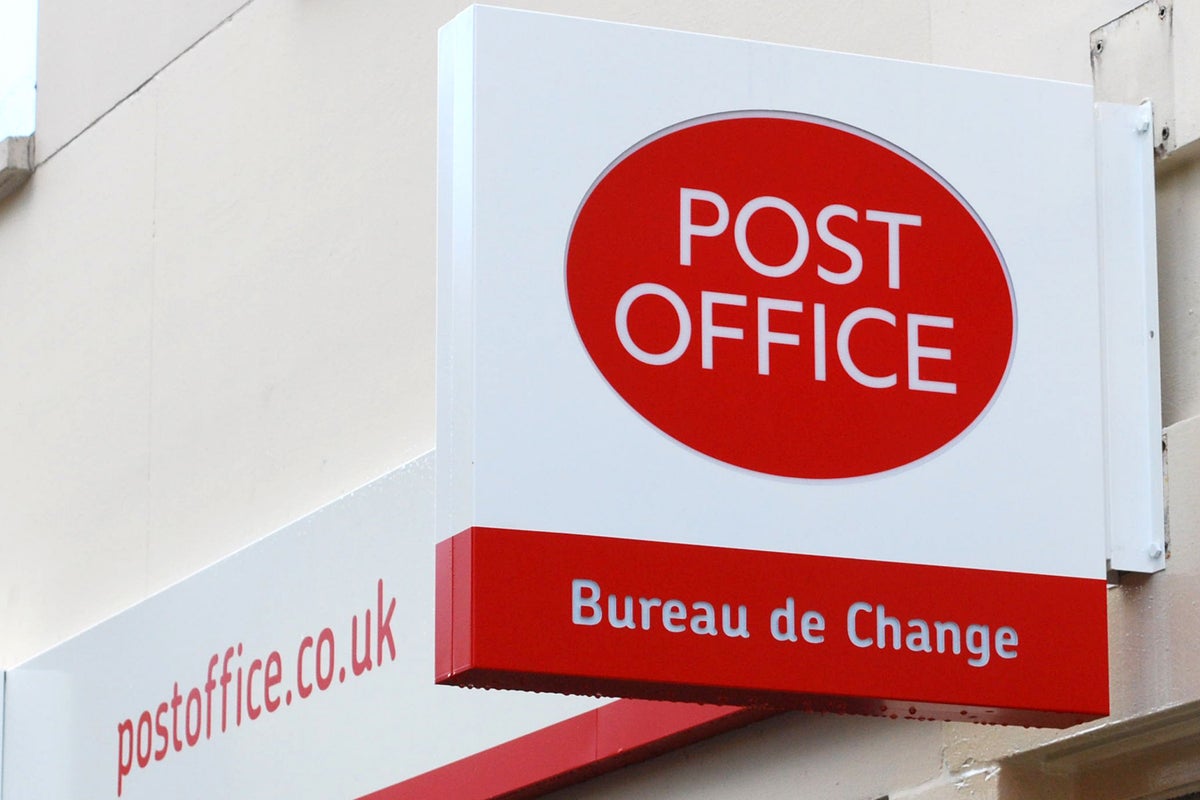
© PA Wire
PancakeSwap has teamed up with Ondo Finance to bring over 100 tokenized stocks and exchange-traded funds into the BNB Chain.
Starting today, users on the Binance platform can buy or sell digital representations of top US bonds, stocks, and ETFs, all pegged 1:1 to the underlying securities.
According to Ondo Finance CEO Nathan Allman:
Expanding Ondo Global Markets to BNB Chain allows us to bring tokenized US stocks and ETFs to millions of users across Asia, Latin America, and other geographies, in an environment that is fast, cost-efficient, and highly interoperable. This is a major step toward making US markets globally accessible through blockchain technology.
PancakeSwap is teaming up with @OndoFinance to bring 100+ tokenized real-world assets (RWAs) in stocks, bonds, and ETFs onchain to @BNBCHAIN.
You can now trade tokenized assets on PancakeSwap with zero fees for the first 30 days.https://t.co/EgOKhem4yT https://t.co/QwXvU3SALk pic.twitter.com/bbHBCY8rpq
— PancakeSwap (@PancakeSwap) October 29, 2025
PancakeSwap will waive trading fees for the first 30 days to celebrate Ondo Global Markets integration.
That gives the DeFi community a cost-free way to navigate tokenized traditional assets on the Binance ecosystem.
The alliance is part of Ondo’s mission to leverage blockchain technology to allow access to high-quality US monetary assets, including real estate and stocks.
Now, BNB Chain’s over 3.4 million daily users and the vast DeFi ecosystem can enjoy Ondo’s offerings.
Further, PancakeSwap promises user-friendliness, self-custody, and transparency.
The integration welcomes a new era for the Binance community, bridging decentralized finance with traditional markets.
BNB Chain’s thriving user base can now access high-net tokenized US securities.
The Chain’s Head of Business Development, Sarah Song, commented:
Real-world assets are one of the fastest-growing segments on BNB Chain, and having Ondo Finance join our ecosystem is another strong validation of that momentum. Together, we’re expanding access to high-quality financial assets and driving the next wave of adoption that connects traditional markets with blockchain technology.
PancakeSwap is the leading DEX on BNB Chain. It will serve as the strategic launch partner supporting trading of the tokenized assets.
The decentralized exchange enables users to trade Ondo’s tokenized securities through a familiar interface, promising a remarkable experience for new and existing DeFi players.
Moreover, PancakeSwap announced a zero-fee campaign between October 29 and November 29.
Ondo will leverage PancakeSwap’s massive user base and liquidity pools to ensure streamlined market activity and price discovery for tokenization enthusiasts on the BNB Chain.
The native tokens mirrored the broader market performance, exhibiting bearish biases on their daily timeframes.
CAKE lost nearly 5% in the past 24 hours to $2.55, whereas a 2% dip in that timeframe sees ONDO exchanging hands at $0.7364.

Bearish sentiments dominate the broader sector as the global cryptocurrency market cap plunged 1.5% the past day to $3.8 trillion.
The post PancakeSwap taps Ondo to integrate real-world assets (RWAs) on BNB Chain appeared first on CoinJournal.

U.S. market structure legislation talks resumed, crypto campaign funding ‘war chests’ grew, and Reuters looks into the Trump family’s crypto income.
The post US market structure talks back on, crypto war chests overflowing appeared first on CoinGeek.

© PA Archive

© Alamy/PA
THE ARTICLES ON THESE PAGES ARE PRODUCED BY BUSINESS REPORTER, WHICH TAKES SOLE RESPONSIBILITY FOR THE CONTENTS

© Zero Waste Foundation
THE ARTICLES ON THESE PAGES ARE PRODUCED BY BUSINESS REPORTER, WHICH TAKES SOLE RESPONSIBILITY FOR THE CONTENTS

© iStock
THE ARTICLES ON THESE PAGES ARE PRODUCED BY BUSINESS REPORTER, WHICH TAKES SOLE RESPONSIBILITY FOR THE CONTENTS

© iStock
Bitcoin Magazine

From Stealth to Scale: Fedi Unveils Multi-Sig Guardians for Federated Bitcoin E-Cash Mints
Fedi, the Bitcoin company building on top of the open source Fedimint protocol — a privacy-centric bitcoin payments method using Chaumian e-cash — is emerging from a period of quiet development to announce a new groundbreaking feature. Set for release today, this new capability within the Fedi app aims to make the creation of multi-signature e-cash mints easy, private, and secure for communities worldwide with just a few clicks, aligning with cypherpunk principles of decentralization and user sovereignty.
Built into their increasingly popular Android and iOS apps, the new release allows users to easily create a new Fedimint federation with the help of G-bot, a friendly chatbot interface. Mint founders need to pay a basic service fee, add some basic information in minutes for the mint, and wait a few hours.
The G-bot then finds trusted anonymous Guardians to help form the user’s mint federation. This process decentralizes the custody of the mint’s bitcoin reserves — needed to operate an e-cash mint. It also helps prevent collusion as mint operators are anonymous from each other and would need to reveal themselves publicly to be able to find other key holders to collude.

This Fedimint protocol is fundamentally built on privacy, a cornerstone of Bitcoin and the cypherpunk movement. “The first line of the Cypherpunk Manifesto is that privacy is necessary for an open society in the electronic age. It’s not nice to have. It’s not convenient. It’s necessary.” Obi Nwosu, CEO of Fedi, told Bitcoin Magazine in an exclusive interview. He added a cautionary warning about the future, which the world would be wise to avoid: “Bitcoin without privacy is our worst nightmare. It’s 1984 coin, it’s the panopticoin.”
Founded in 2022, Fedi has been quietly working to deliver the promises of private digital cash to the world, based on one of the most promising technologies designed for that purpose, David Chaum’s 1982 Chaumian e-cash. This form of digital money almost made it into every copy of Windows 1995, proof of its scalability and efficiency, but ironically failed due to its centralization, as Chaum and Gates reportedly could not reach a final agreement on the deal.
Fast forward 30 years, and the Bitcoin community has taken on the challenge of bringing private digital cash to the world, leveraging new possibilities unlocked by the Bitcoin network, which may solve the fundamental trade-off of Chaumian e-cash, the need to trust a single counterparty mint that issues and redeems the e-cash bills for the underlying currency.

It is interesting to note that Bitcoin was designed as a solution to the fundamental trade-offs of e-cash. While e-cash relies on a trusted server to approve transactions that are properly funded, it can do so without knowing any personal user information, since the system is fundamentally built on cryptography and not identity. It nevertheless requires a trusted server, which can in theory emit more e-cash bills than it has reserves for, a form of the ‘double spending problem’ Satoshi Nakamoto sought to address in his Bitcoin white paper.
Centralized e-cash mints can also be more easily harassed by hostile governments, as the pre-Bitcoin history of digital cash shows. Bitcoin decentralized the mint by distributing the accounting process the mint does with the invention of the Bitcoin node, anyone that runs a node has a copy of all bitcoin transactions and can independently verify the accounting integrity of the system, thus solving the ‘double spending problem’.
The downside of Bitcoin’s approach is that it leaves a public record of all transactions, which is not great for privacy, and has hard theoretical limits in terms of how many transactions it can process per second — it is not very scalable — two limits which the e-cash systems do not have.
The downsides of centralized cryptocurrency platforms are something that Nwosu has deep professional experience with; he was the founder and CEO of Coinfloor, a centralized cryptocurrency exchange founded in 2014. The exchange was the “First ‘Publicly Auditable’ Bitcoin Exchange” according to a 2014 Coindesk, through an innovative auditing process called proof of reserves. Recalling back on his experience with the matter, Nwosu said, “Being solvent is a very big thing for me as well as being able to prove that cryptographically, if possible”. That experience and his concern over a future without private digital cash are clear motivations for why he co-founded Fedi.
Creating scalable, decentralized, private digital cash, however, is not easy, neither technically nor politically. To solve this fundamental problem of finance and computer science, many in the Bitcoin community have been looking for ways to combine the benefits of Bitcoin and Chaumian e-cash in order to solve — or at least mitigate — the downsides of both systems. The Fedimint protocol’s most important innovation in this field is the development of federated e-cash mints, leveraging the security of Bitcoin’s native smart contract capabilities, especially multi-signature transactions.
Bitcoin’s multi-signature script enables something new in finance, a transaction that can only be executed if more than one party agrees to sign. Banks may have shared accounts across multiple parties, but those are rules enforced by lawyers, who need to comply with local laws, ultimately giving final say to the local government. Bitcoin, by contrast, defends the integrity of a multi-signature with the full weight of its international proof of work network, making these agreements as good as gold and unlocking a new kind of federated financial institution. The Liquid Network, as well as Bitcoin’s Lightning Network, exists only thanks to this multi-signature technology.
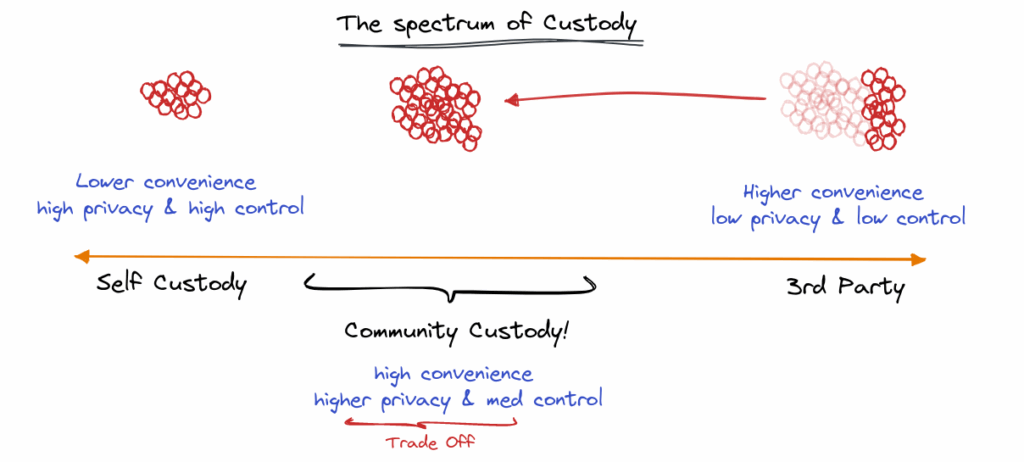
Fedimint takes multi-signature to the next level, making the members unknown to each other through the G-bot, protecting users of that mint from the collusion of the guardians while also adding redundancy to the custody of mint bitcoin reserves, which makes hacks more difficult. Fedimint also protects Guardians from accidental loss of keys, as a threshold of Guardians can restore the stability of a federation, say 3 out of 4 signers, in case one loses their keys or gets compromised, on the topic Nwosu said “the bigger risk isn’t collusion but users forgetting passwords, which federations mitigate since the system continues if one guardian fails.”
Ultimately, Nwosu expects there to be “tens of thousands, if not hundreds of thousands, of federations, each with a different set of users using it.” These mints connect to each other using the Bitcoin standard and its various payment rails such as onchain Bitcoin and the Lightning Network “offering cryptographic privacy within each federation. Even when sending between federations via Lightning, privacy remains high because users are interchangeable within pools. No single point of trust or failure.”
One common critique of e-cash systems, even post Bitcoin, is regarding self-custody. Critics argue that e-cash, even in a federated network, is nevertheless a custodial trusted system of money, and on this topic, Nwosu had a particularly powerful insight: “If you have self-custody and no privacy, you don’t have self-sovereignty because someone knows exactly what you’re doing and can confiscate your money at any point.” Because e-cash does not leave an on-chain footprint, it can be fundamentally more private than any blockchain.
This post From Stealth to Scale: Fedi Unveils Multi-Sig Guardians for Federated Bitcoin E-Cash Mints first appeared on Bitcoin Magazine and is written by Juan Galt.

Known as the Liechtenstein Trust Integrity Network (LTIN), it’s operated by the state telecoms company, with contributions from half a dozen private firms.
The post Liechtenstein’s national blockchain; Siemens taps JPMorgan’s Kinexys appeared first on CoinGeek.
Shares in the retailer, which operates around 900 stores across the UK, have also surged
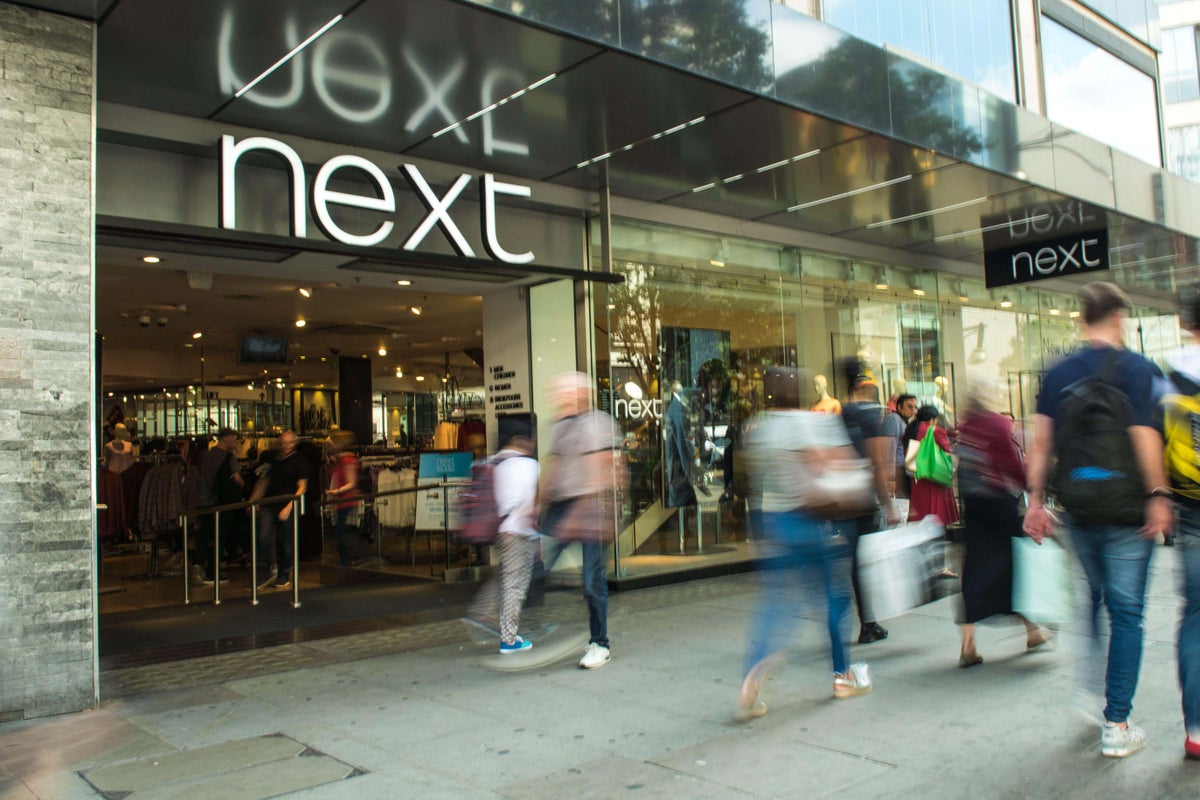
© Alamy/PA

© PA Wire

© PA Wire
Philippines' digital finance platform Coins.ph has appointed Amira Alawi as its new Global Marketing Director amid international expansion.
The post Coins.ph appoints Amira Alawi as Global Marketing Director to lead international expansion and brand globalization appeared first on CoinGeek.
U.S. tech firm Cybastion hosts Mauritania for digital transformation, while Vietnam's agriculture embraces digital technologies for sustainable growth.
The post Cybastion hosts Mauritania’s ambassador on digital transformation appeared first on CoinGeek.

© PA Wire
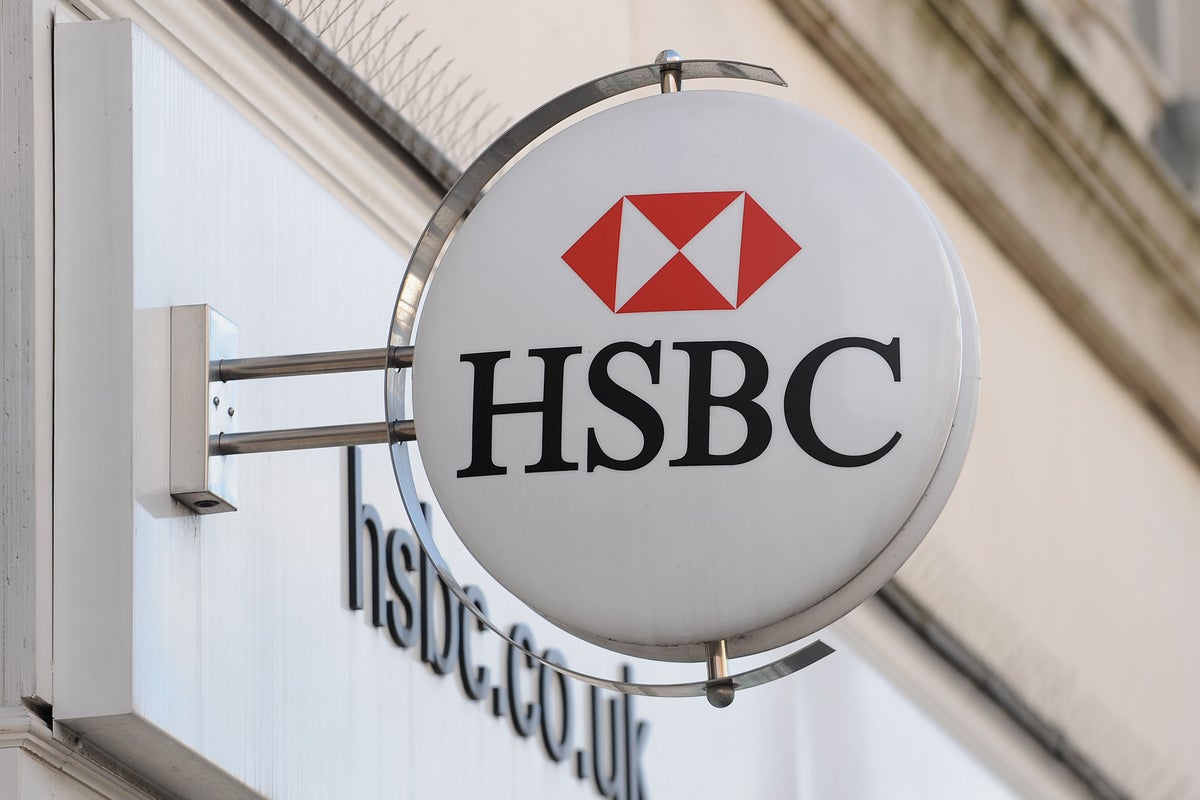
© PA Archive

© PA Archive
Bitcoin Magazine
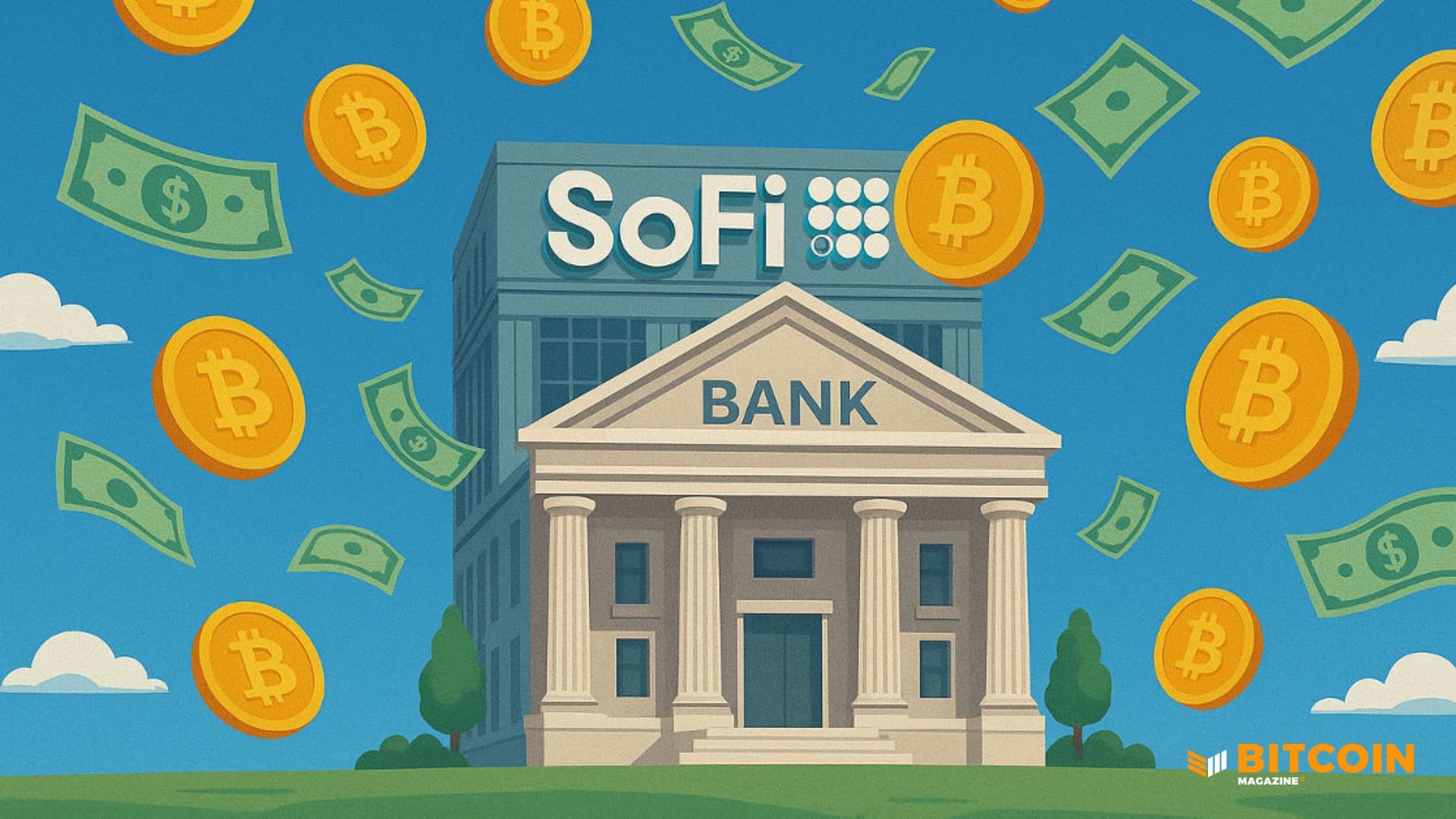
SoFi to Launch Bitcoin and Crypto Trading, Eyes Record Year
SoFi Technologies (NASDAQ: SOFI) raised its full-year profit forecast on Tuesday after reporting record third-quarter results that beat Wall Street expectations, driven by fee revenue and more user growth across its financial products.
CEO Anthony Noto said the company remains on track to launch crypto trading by the end of the year, with plans to roll out its own SoFi USD stablecoin in the first half of 2026 — marking its biggest step yet into the digital asset economy.
SoFi said adjusted revenue climbed 38% year-over-year to $950 million, surpassing analyst estimates of $886.6 million.
This move echoes that of banking giant Morgan Stanley. Earlier this quarter, Morgan Stanley announced plans for crypto trading for retail clients on its E*Trade platform, partnering with Zerohash for liquidity, custody, and settlement.
Adjusted profit for SoFi more than doubled to $0.11 per share in the three months ended September 30, topping expectations of $0.08 per share. Shares of SoFi rose 3.8% in pre-market trading following the announcement, according to Reuters reporting.
JUST IN:
— Bitcoin Magazine (@BitcoinMagazine) October 28, 2025Fintech giant SoFi to launch #Bitcoin and crypto trading this year. pic.twitter.com/TlnAMa0IFW
Founded as a student loan refinancing startup, SoFi has evolved into a full-scale financial services platform offering products ranging from IPO investing to credit cards and high-yield savings accounts.
The company now boasts a market capitalization of roughly $36 billion, cementing its position among the leading players in the fintech sector.
Earlier this year in June, SoFi announced that it had reintroduced spot crypto trading and launched plans for a blockchain-based global remittance service after halting crypto services in 2023 due to regulatory constraints.
The company said SoFi members would again be able to buy, sell, and hold cryptocurrencies such as Bitcoin within its platform.
In addition to reinstating crypto trading, SoFi revealed a new self-serve international money transfer feature, expected to go live soon.
The service would let SoFi Money users send funds across dozens of countries directly from the SoFi app, with transfers conducted over secure blockchain networks.
Recipients would receive local currency instantly, with full fee and exchange-rate transparency provided upfront and 24/7 access to transactions.
Back in June, CEO Anthony Noto said SoFi viewed blockchain and crypto as central to the future of financial services, emphasizing the company’s goal of offering members more control and flexibility across their financial lives.
This post SoFi to Launch Bitcoin and Crypto Trading, Eyes Record Year first appeared on Bitcoin Magazine and is written by Micah Zimmerman.
Digital assets performed well on Tuesday as Bitcoin reclaimed $117,000.
The broader sector has turned bullish amid optimistic updates and tomorrow’s Fed decision on interest rates.
In a groundbreaking move that has stirred the altcoin space, US regulators have reportedly approved exchange-traded funds linked to Solana, Litecoin, and Hedera.
This marks a crucial moment for the digital assets industry, with diversified ETF offerings beyond Bitcoin and Ethereum.
Enthusiasts can now access Bitwise Solana, Canary HBAR, and Canary Litecoin exchange-traded funds on the New York Stock Exchange.
The decision follows the new policies that allow issuers to evade the lengthy review procedures by the SEC.
The new financial products are experiencing significant investor appetite.
According to ETF analyst Eric Balchunas, the Bitwise SOL staking ETF saw its trading volume hit $10 million within the first 30 minutes.
It has eclipsed Hedera and Litecoin at $4 million and $400k, respectively.
Here's numbers fter 30min$BSOL: $10m$HBR: $4m$LTCC: $400k
— Eric Balchunas (@EricBalchunas) October 28, 2025
Meanwhile, the approval will boost investor exposure in SOL, LTC, and HBAR through regulated channels.
That eliminates the complexity of navigating wallets and finding legitimate brokers.
The new funds have already debuted on leading United States exchanges as the gap between DeFi and TradFi blurs.
The latest approvals increase alternatives for investors.
Until recently, institutional players remained restricted to Bitcoin and Ethereum-related financial products.
Now, the landscape has transformed dramatically.
Solana, known for speed and its vibrant DeFi, meme token, and NFT ecosystem, has been among the hottest blockchains in the past few months.
With SOL ETFs live, the project can anticipate remarkable liquidity and market stability.
Such fundamentals can help Solana cement its status as a serious “Ethereum Killer.” SOL is trading at $199 after gaining more than 3% the past week.
The OG Litecoin has remained relevant through the years due to its constant network uptime and strong fundamentals.
An LTC ETF approval confirms that regulators still perceive Litecoin as a time-tested token that can serve conservative investors navigating cryptocurrencies.
LTC is trading at $98, bracing for impressive upside breakouts.
Finally, Hedera’s exchange-traded fund offers an opportunity for individuals exploring the blockchain role in tokenized assets, sustainability, and business solutions.
HBAR gas soared over 10% the previous day to $0.2018.
Donald Trump’s meme token led the gainers today. TRUMP gained more than 14% the past 24 hours to $7.11.
Trump Media’s deal with Crypto.com to launch Truth Predict is fueling TRUMP’s surges.
NEW: 🇺🇸🎥 President Trump’s Truth Social has partnered with #Crypto.com to launch “Truth Predict.”
The new feature will make Truth Social the world’s first social media platform to offer federally compliant prediction markets on politics, economics, and sports. pic.twitter.com/7GUWns4AvB
— Bitcoin.com News (@BTCTN) October 28, 2025
Under the agreement, Truth Social will channel event contracts through CDNA, a CFTC-registered exchange and clearinghouse.
The partnership provides the platform with a federally compliant framework to offer prediction markets tied to elections, economic data, commodity prices, sports results, and other real-world events.
Trump Media is promoting the initiative as the first instance of a publicly traded social media company integrating prediction markets directly into its platform.
The new feature will display real-time market pricing, allowing users to respond to live developments.
Social elements will be integrated alongside trading functions, enabling users to discuss positions, share forecasts, and trade simultaneously.
User engagement will be directly linked to trading activity — participants who earn “Truth gems” through interactions can convert them into CRO digital tokens, which can then be used to purchase event contracts.
The post Altcoins today: Solana, Litecoin, and Hedera ETFs debut; TRUMP rebounds appeared first on CoinJournal.

The gathering brought together decision-makers, investors, and innovators for a night of discussions, celebrating Gibraltar’s role as a hub for fintech.
The post The House of Block hosts exclusive supper club celebrating Gibraltar’s innovation and financial leadership appeared first on CoinGeek.

© PA Media
The job cuts are reportedly the first wave that could affect as many as 30,000 corporate jobs, which the Jeff Bezos-owned company boiled down to ‘staying nimble’

© AFP/Getty

© PA Wire

© PA Archive
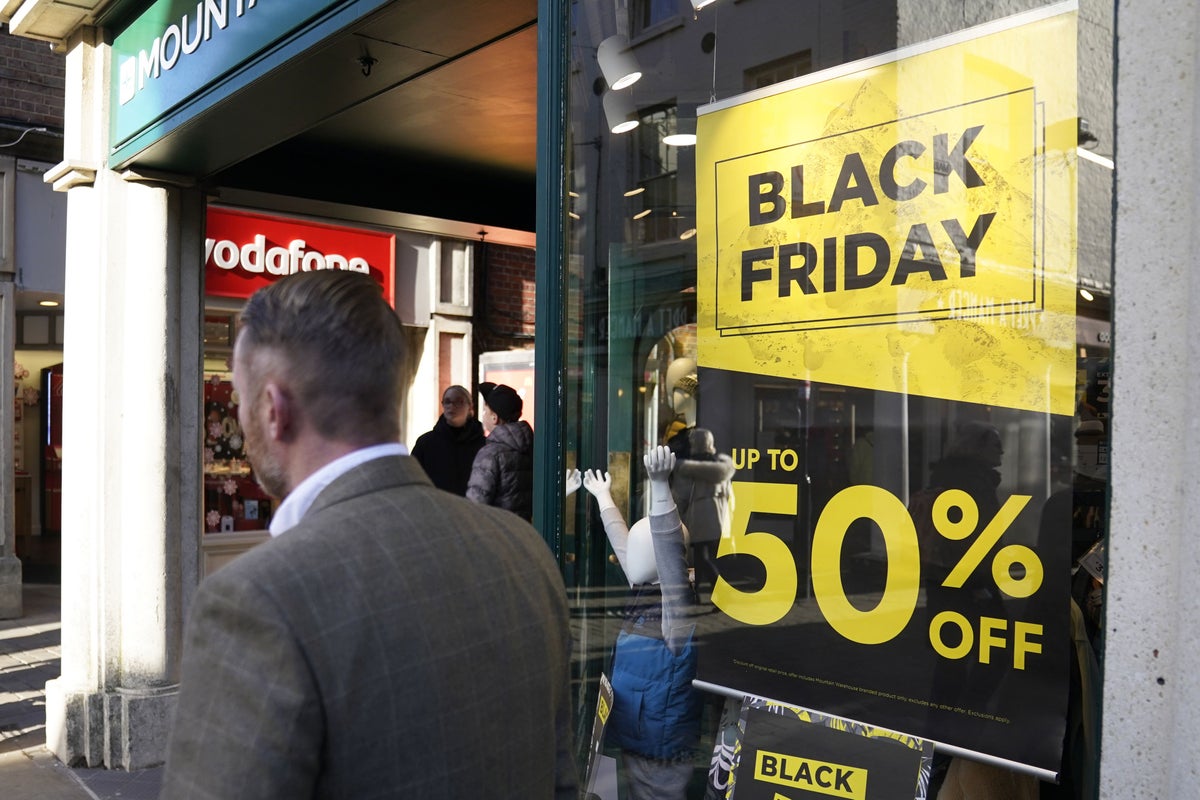
© PA Wire

© PA Archive
Bitcoin Magazine

IBM Launches “Digital Asset Haven” to Help Banks and Governments Enter into Crypto
IBM announced a platform designed to help financial institutions, governments, and large corporations securely manage their crypto and blockchain-based assets, like bitcoin.
The platform, developed in collaboration with crypto wallet provider Dfns, combines IBM’s infrastructure and security expertise with Dfns’ institutional-grade custody and wallet technology.
At its core, Digital Asset Haven wants to simplify what has long been a tricky and complex landscape for institutions.
Many banks and governments have been cautious about crypto because it involves multiple blockchains, regulatory hurdles, and security risks. IBM’s platform wants to change this and consolidate these moving parts, offering a single solution.
The partnership with Dfns is central to the platform. Dfns has built more than 15 million wallets for over 250 clients, focusing on secure and compliant operations.
By combining this with IBM’s high-assurance infrastructure, Digital Asset Haven is meant to provide institutions with the same reliability and governance standards that traditional financial systems offer.
That includes multi-party approvals, policy-driven governance, and support for cold storage, where crypto keys are kept offline for maximum security.
The platform also supports more than 40 blockchains, both public and private, giving institutions flexibility to engage with a wide range of digital assets, from traditional cryptocurrencies to emerging stablecoins and tokenized assets.
It integrates third-party services for identity verification, anti-money laundering checks, and yield generation, and offers developer-friendly APIs to enable further customization and innovation.
“This is more than custody,” said Clarisse Hagège, CEO of Dfns. “We’ve built a platform that orchestrates the full digital asset ecosystem, moving digital assets from pilot programs to production at a global scale.”
Tom McPherson, General Manager of IBM Z and LinuxONE, emphasized that the platform brings IBM’s signature resilience and data governance to the emerging digital asset space, helping institutions explore new products without compromising on security or compliance.
The launch comes at a time when regulated digital assets are gaining momentum.
Stablecoins, for example, have become increasingly used in payments following the U.S. adoption of legislation earlier this year, and major banks are exploring blockchain-based money transfers.
This post IBM Launches “Digital Asset Haven” to Help Banks and Governments Enter into Crypto first appeared on Bitcoin Magazine and is written by Micah Zimmerman.
In today’s interconnected world, location no longer limits ambition. Entrepreneurs in cities like Prague are increasingly running companies that serve clients across time zones, operate in multiple currencies, and comply with diverse legal jurisdictions simultaneously. The rise of digital infrastructure, remote work, and streamlined company registration services has made this possible.
Platforms like Your Company Formations, a UK-based incorporation service, have played a pivotal role in this shift. By simplifying the process for international founders to register and manage British companies online, they’ve enabled thousands of European professionals—many from Central Europe—to establish a legal base in one of the world’s most respected business hubs without leaving home. For Prague’s growing class of independent entrepreneurs, this has opened a gateway to global opportunities once reserved for multinational corporations.
Prague has long been a crossroads of trade and culture. Today, it’s also a launchpad for globally minded startups and consultants. A robust technology sector, relatively low living costs, and excellent connectivity to other European capitals make it a magnet for digital talent. Many local founders now register their companies abroad—often in the UK—to streamline billing for international clients, attract investors, or access English-language banking and legal systems.
This doesn’t mean these entrepreneurs are abandoning the Czech Republic. Instead, they leverage the best of both worlds: Prague’s creative and technical talent pool and London’s mature financial and legal infrastructure. With services like Your Company Formations, a web developer in Žižkov or a marketing consultant in Karlín can create a UK-registered company in hours and begin working with clients in the US, the Gulf, or Asia.
The borderless business trend stems from a quiet revolution in cloud infrastructure and digital identity. Video conferencing, online payment gateways, cloud accounting, and secure digital signature systems have eliminated the traditional friction of running a multinational business. The pandemic accelerated this shift, forcing millions to adopt digital tools that soon became standard.
Today, forming a company, opening a virtual office, and filing taxes can all be done remotely. Entrepreneurs in Prague can operate seamlessly through British entities, invoice clients in pounds or euros, and comply with regulations from their laptops. Services like Your Company Formations handle administrative complexities, allowing founders to focus on growth rather than paperwork.
Despite Brexit, the UK remains a top destination for global company registration. Its transparent legal framework, straightforward online setup, and global credibility resonate with investors and clients worldwide. For Central Europeans, this reliability is especially valuable when engaging with international markets.
According to UK Companies House data, cross-border incorporations by EU residents have steadily increased in recent years. Czech entrepreneurs, particularly in tech, e-commerce, and creative industries, are among them. A UK entity not only builds trust but also expands financial options, including access to payment processors and international banking solutions.
While London attracts global capital, Prague’s strength lies in its people. The city boasts skilled developers, designers, analysts, and multilingual professionals. Combined with affordable office space and a high quality of life, it provides a strong foundation for remote-first startups.
The Czech Republic’s central European location facilitates collaboration with both Western and Eastern partners. As local entrepreneurs grow more internationally ambitious, they adopt flexible models—sometimes registering abroad or partnering with foreign entities—to scale quickly.
This hybrid approach is becoming the standard: operate where talent thrives, register where it makes business sense, and sell wherever customers are. This allows businesses to tap into skilled professionals, benefit from favorable business environments, and expand into diverse markets while maintaining flexibility and minimizing administrative overhead.
What was once a bureaucratic challenge—registering and managing a business across borders—is now as simple as maintaining an email address. A new generation of “virtual corporations” is emerging, with team members scattered across continents but united under a single digital brand.
For example, a Prague-based consultancy might handle operations in Central Europe, invoice through a UK entity, host servers in Germany, and serve clients in Singapore. The entire structure can be managed online, with compliance, accounting, and filings handled by trusted partners like Your Company Formations.
This model prioritizes efficiency and accessibility over evading local responsibilities. It reflects a shift toward entrepreneurship as a flexible lifestyle choice rather than a rigid national identity.
A borderless business model brings complexities, including tax obligations in multiple countries, data protection compliance, and the need for cultural agility. Founders must educate themselves or work with reliable advisors to stay compliant. Governments are also adapting, modernizing business laws to accommodate digital-first companies that defy traditional “domestic” or “foreign” classifications.
Still, the benefits outweigh the challenges. The global economy rewards agility, and digital entrepreneurs demonstrate that success often begins with administrative simplicity.
As the boundaries between local and international business fade, Prague is poised to become a key node in Europe’s borderless economy. English-speaking entrepreneurs, international startups, and Czech freelancers are discovering that forming and running a company abroad is both practical and profitable.
Platforms like Your Company Formations have democratized what was once a privilege of large corporations, enabling anyone with a laptop, an idea, and determination to establish a global presence.
The result is a new kind of entrepreneurship—one that is mobile, multicultural, and unbound by geography. From Prague’s cobblestone streets to London’s financial district, the next generation of founders is proving that business borders are a thing of the past.
The post From Prague to London: How Borderless Business Is Becoming the Norm appeared first on Prague Post.
What’s the fastest way to boost sales from your next email campaign? Offer a discount.
It works, at least in the short term. Open rates jump, clicks surge, orders roll in.
But there’s a hidden cost. Every time you rely on a discount to make a sale, you’re quietly training your audience to wait for the next one. Over time, that chips away at your profit and your brand perception.
The smartest ecommerce brands know how to walk the line, using offers that drive excitement without eating into margins.
In this guide, we’ll unpack how to create email offers that feel irresistible but still protect your bottom line.

Let’s be honest, discounts are addictive.
For customers, they trigger instant gratification. The thrill of getting more for less. For brands, they deliver fast results. Inboxes light up, conversions spike, and the sales graph shoots upward.
That’s not by accident. Discounts play directly into core psychological triggers like scarcity, urgency, and reward bias. When people see a limited-time deal, their brain releases dopamine. It feels like a win. That’s why a simple “24-hour flash sale” can outperform a beautifully written product story.
But here’s the catch. That same emotional response can work against you over time.
When discounts become predictable, customers start to wait for them. They’ll abandon carts knowing a sale email is coming. They’ll skip full-price items because they’ve been trained to expect 20% off next week.
What started as a short-term sales tactic becomes a long-term habit, one that eats into your profit and erodes your brand’s perceived value.
It’s a balance problem. You need offers strong enough to motivate action, but not so frequent or aggressive that they undermine your positioning.
That’s why smart founders use discounts strategically, not as the story, but as the hook for a bigger one. They time them around product launches, new collections, or brand milestones, and they always have a plan for what happens after the sale ends.
Too many brands treat discount periods as quick fixes. They see it as a way to clear stock, hit a monthly number, or win back customers who’ve gone quiet.
But the best founders know a sale is more than a short-term bump. It’s actually a moment to build something bigger.
A good sale does three things. It grabs attention, drives action, and teaches you something about your audience.
Maybe your Black Friday sale reveals which products people really care about. Maybe your “End of Summer” offer brings back lapsed customers you can now re-engage. Or maybe your anniversary event shows you what messaging tone hits hardest.
The point is, a sale isn’t just about selling. It’s about learning.
And the brands that win long-term know how to play both games. The one happening now (cash flow, conversions, excitement) and the one happening later (retention, loyalty, predictability). They think in cycles, not spikes.
So how do you keep that momentum going between sales without constantly discounting?
This is where what I like to call the ‘Give and Take’ approach comes in clutch.
“Give” emails are your relationship builders. They share something useful, inspiring, or entertaining. So that could be a story about your brand, a behind-the-scenes look at a new drop, a quick tip that helps your audience get more from your product. They build trust, and trust is what makes every future sale easier.
“Take” emails are your asks. These are the moments when you lean in and say, Hey, it’s time to buy. A product launch, a limited-time bundle, a 24-hour discount. These are the spikes of energy that drive revenue, but they only work when they’re supported by enough goodwill from your give emails.
The mistake most founders make? They take too often. Every email becomes a pitch, and over time, that drains the list. Engagement drops, unsubscribes rise, and customers tune out, not because your offer was bad, but because it felt expected.
Treat your email offers a little bit more like a healthy relationship of give and take. Give first, take later. Offer guidance before you sell. If your audience learns something or feels something in between the offers, your next “take” will land twice as hard.
Another common myth is that the most effective email offers are always the biggest discounts, but that’s not strictly true. Instead, they’re the ones that feel generous while quietly protecting your bottom line.
It’s all about perceived value. When customers believe they’re getting something special, the actual cost to you matters a lot less.
Start by rethinking what “value” means:
Each of these strategies gives the customer a win without conditioning them to expect permanent discounts. You’re adding perceived value (exclusivity, reward, belonging) instead of subtracting margin.
Used strategically, offers are one of the most powerful tools in your marketing arsenal. They grab attention, drive urgency, and give your audience a reason to act now. But when every email leans on a discount, you’re not building a brand, you’re teaching people to wait for one.
That’s where Omnisend comes in. Built for ecommerce founders, Omnisend gives you everything you need to send smarter, not just more.
You can:
And right now, Foundr readers get 50% off their first 3 months.
Click here and use code FOUNDR50 to start sending emails that sell.
The post How to Create Irresistible Email Offers Without Killing Your Margins appeared first on Foundr.
What if your email list could sell for you while you sleep?
That’s the power of email automation.
No manual broadcasts. No writing the same discount email over and over. Just smart, pre-built flows that turn browsers into buyers and buyers into loyal fans, automatically.
The best part? It doesn’t take a dev team, a giant list, or 10 hours a week to make it work. You just need to know what to send, when to send it, and how to set it up once so it runs on autopilot.
In this guide, I’ll walk you through:
Whether you’re just getting started with email marketing or you’re tired of sending one-off campaigns that don’t move the needle, this is how smart founders grow revenue without adding work to their week.
Before we dive in, I wanted to quickly clear up what I mean by the phrase ‘email automation’.
After all, email automation isn’t just a time-saver, it’s one of the most powerful growth levers in your entire business.
Think of it like this: every time someone signs up to your list, abandons their cart, makes a purchase, or goes quiet, you have a chance to guide them toward the next step.
But most founders try to manually send emails one by one, or worse, miss these opportunities altogether!
That’s not scalable. That’s exhausting.
Automation flips that script. Instead of blasting out one-size-fits-all newsletters and hoping for clicks, automation lets you build email flows that are triggered by real customer behavior.
Someone signs up? They instantly get a welcome series that introduces your brand, offers value, and nudges them toward a purchase. They add to the cart but don’t buy? They get a perfectly timed reminder, maybe with a small incentive. Loyal customers? They get thanked, rewarded, and reminded that your brand still cares.
According to Omnisend’s latest benchmark report, automated emails generate 320% more revenue per email than regular one-off campaigns.
Open rates are higher, click rates are higher, and most importantly, conversion rates are significantly higher, especially for flows like abandoned cart, welcome series, and post-purchase follow-ups.
For time-strapped founders, that kind of efficiency is game-changing.
Instead of writing dozens of one-off emails every month, you can build just a few key automations and let them run in the background, earning while you sleep. It’s like hiring a round-the-clock sales team that never forgets to follow up, never misses a customer milestone, and never needs a day off.
If email automation is your 24/7 sales engine, these are the gears that keep it running. You don’t need dozens of flows to start making an impact. You just need the right ones.
Below are seven essential automations every ecommerce brand should have. Together, they form a complete system that welcomes new subscribers, recovers lost revenue, builds trust, and reactivates dormant customers.
Your welcome series is the handshake, the first impression, and the start of a relationship. It should trigger immediately after someone joins your list, whether through a popup, landing page, or lead magnet.
A great welcome flow isn’t just a “thanks for signing up” email. It’s a sequence (usually 3 to 5 emails) designed to introduce your brand, share your origin story, showcase your bestsellers, and deliver any promised incentive (like a discount code).
This is also the best time to build trust. Show social proof. Explain your mission. Let people know they’re in the right place.
This is the highest ROI automation in your entire stack.
Cart abandonment happens constantly, whether due to distraction, second thoughts, or unexpected shipping costs. But just because someone didn’t buy doesn’t mean they’re not interested. In fact, they’re very interested. They just need a little nudge.
An abandoned cart flow sends a timely follow-up when someone adds products to their cart but doesn’t complete checkout. The best-performing sequences typically include 2–3 emails: the first within an hour (when intent is still high), and a final one 24–48 hours later, often with an added incentive like a discount or free shipping.
Browse abandonment is like cart abandonment’s quieter, younger brother, but it’s just as valuable.
This flow targets users who view a product or category but leave without adding anything to their cart. Maybe they weren’t ready. Maybe they were comparing options. Either way, they were interested enough to click, which makes this a perfect re-engagement opportunity.
The email can be simple: “Still thinking about this?” along with a reminder of the product they viewed, maybe paired with customer reviews or a few similar items.
Most brands stop talking after the sale. That’s a mistake.
Post-purchase automation is where loyalty starts. This flow reassures your customer that they made the right decision, reduces buyer’s remorse, and sets expectations around shipping and delivery. It also offers a prime opportunity to upsell, cross-sell, or introduce them to your loyalty program.
Think: thank-you message, order summary, a follow-up with product tips or how-tos, and eventually, a gentle nudge toward their next purchase.
No one wants to be ghosted—especially by someone who once cared. That’s what the win-back automation is for.
This flow targets customers who haven’t opened, clicked, or purchased in a set timeframe, usually 60 to 120 days. It’s your chance to reignite the relationship before they slip away for good.
Keep it honest and personal. Remind them what they loved about your brand. Offer an exclusive discount, ask for feedback, or give them a reason to come back. Even a simple “We miss you” can be enough to drive action.
Social proof fuels ecommerce. Your happy customers are your best marketers—if you give them the chance.
This flow triggers a few days after a product is delivered, asking the customer to leave a review. You can make it easy with a direct link, offer a small reward (like 10% off their next order), and showcase examples of other customer reviews to set the tone.
This one’s optional, but incredibly powerful.
Celebrating a customer’s birthday, signup anniversary, or even first-purchase milestone adds a personal touch that builds brand loyalty. It reminds them they’re more than just a transaction.
Whether it’s a one-time discount, a surprise gift, or early access to a new product, these milestone-based emails perform incredibly well, not just because of the offer, but because of the timing and emotional connection.
Once those core flows are live, the real work begins: making them better.
The brands seeing the biggest returns from automation don’t stop at setup. They test, tweak, and improve constantly, because even a 2% lift in open rate or a 5% bump in conversion, when scaled across hundreds or thousands of sends, adds up fast.
Start simple. Look at how each flow performs. If your abandoned cart emails get opened but not clicked, test the CTA or add a review section. If your welcome series trails off after email #2, try changing the order or cutting it shorter.
Focus on one variable at a time: subject lines, timing, CTA copy, and offer format. Use a basic A/B test or the 20/20/60 split to see what actually moves the needle.
And don’t forget to check your timing. A cart email sent after one hour might be too soon. A second follow-up with a small incentive at 24 hours? That might seal the deal.
You don’t need to overhaul your flows every week. Just revisit them quarterly.
Email automation isn’t about doing less; it’s about doing it smarter.
With just a handful of well-built flows, you can turn casual visitors into loyal customers, recover abandoned revenue, and build brand trust that compounds, all while you focus on the bigger picture.
You don’t need a massive list. You don’t need to write 100 emails a week. You just need the right strategy, the right flows, and the right tool to bring it all together.
That’s where Omnisend comes in.
Built for ecommerce founders, Omnisend gives you everything you need to automate smarter:
The best part? Foundr readers get 50% off their first 3 months. Simply click here and use code FOUNDR50.
The post Email Automation 101: Scale Your Sales Without Lifting a Finger appeared first on Foundr.
Most brands obsess over getting more subscribers.
But what happens after someone joins your list?
That’s where the real money (and loyalty) is made.
Your welcome series is the first impression of your brand at scale. It sets the tone, builds trust, and guides a new subscriber toward becoming a paying customer.
Done right, it’s one of the highest-performing flows in your entire email strategy.
In this guide, I’ll show you how to build the perfect 3–5 part welcome series that not only introduces your brand, but builds long-term loyalty and revenue.
Whether you’re launching your first flow or optimizing an underperforming one, this is how smart founders turn signups into superfans.
Info
You only get one shot at a first impression. In email marketing, that moment is your welcome series.
And it matters. A lot.
According to GetResponse, welcome emails have an average open rate of 83.63%, compared to just 19% for typical promotional emails. That makes them the most opened emails you’ll ever send.
Yet most brands blow this opportunity with a generic “thanks for signing up” message that does nothing to build trust, tell a story, or encourage a next step.
Here’s why a proper welcome series is a growth asset, not a formality:
Think of your welcome series as onboarding for your brand. The better the experience, the more likely they are to stick around and come back.
The best part? Once it’s built, it runs on autopilot, welcoming every new subscriber like your best customer, 24/7.
This isn’t a random sequence. It’s a tested, high-converting structure designed to build trust, drive early sales, and turn new subscribers into loyal fans.
Whether you’re running a DTC brand, a digital product store, or a service-based business, this 5-part flow can be adapted to fit your goals.
Timing: Immediately after signup
Goal: Confirm subscription, deliver any promised incentive, and set expectations
What to include:
Pro Tip: Use personalization here. First name, product interest, or “Hey, welcome to the crew” tone. The goal is human, not salesy.
Timing: 1–2 days after Email 1
Goal: Build emotional connection and brand affinity
What to include:
Why this matters: People buy from brands they believe in. This is where you make them feel like they’re part of something bigger.
Timing: 1–2 days after Email 2
Goal: Showcase products they’re most likely to buy
What to include:
Optional: If you’re using segmentation, tailor this email based on what they browsed or how they signed up.
Timing: 2–3 days after Email 3
Goal: Reinforce credibility and reduce purchase hesitation
What to include:
Trigger: People trust people. This email creates FOMO in the best way.
Timing: 2–3 days after Email 4
Goal: Push toward first purchase
What to include:
Bonus: You can use this final email to invite them into a loyalty program, VIP list, or referral incentive. Keep the relationship going.
A welcome series isn’t just a checklist of emails; it’s a psychological journey. If you want your sequence to drive action and loyalty, you need to hit the right emotional triggers, at the right time, in the right way.
Here’s what separates a high-converting welcome flow from one that gets ignored.
Your welcome series isn’t just about saying hi. It’s your one shot to make a lasting impression. Nail those first few emails, and you don’t just get a sale… you start building a relationship.
The best part? Once it’s live, your welcome flow works in the background, greeting every new subscriber, telling your story, and driving revenue while you sleep.
But to make it work, you need the right tools.
That’s where Omnisend comes in.
Built specifically for ecommerce founders, Omnisend makes it effortless to:
Foundr readers get 50% off their first 3 months with code FOUNDR50.
Claim your discount now and start turning new subscribers into loyal customers.
The post How to Create the Perfect Welcome Series and Grow Customer Loyalty appeared first on Foundr.
There’s a common yet very important saying in digital marketing.
What worked yesterday won’t always work tomorrow.
Attention spans shift, inboxes get noisier, and what you think is a great subject line means nothing if your audience doesn’t agree. That’s why A/B testing isn’t just a “nice to have”, it’s a non-negotiable.
Smart entrepreneurs don’t rely on hunches. They test everything: subject lines, CTAs, send times, even who the email appears to come from.
Why? Because small wins compound. A 5% lift in open rates here, a 10% bump in clicks there, suddenly your same email list is generating 30% more revenue, without spending a dollar more on growth.
In this article, I’ll break down why you should always have at least one test running, the high-impact elements worth experimenting with, and how to do it without burning time or getting lost in the data.
Whether you’re scaling your ecommerce brand or optimizing a lean SaaS funnel, these tactics will help you get more out of your existing audience.
Most founders obsess over growth, but often the real opportunity is right in front of them: conversion optimization.
If you’ve built even a small email list, A/B testing is how you unlock consistent gains, without growing your list or budget.
Omnisend’s recent analysis of billions of emails shows average open rates rose from 22.9% in 2022 to 25.1% in 2023 among its merchants, and click rates rose from 1.2% to 1.5%, all driven by better testing and segmentation.
Automated emails delivered even stronger results. They had 52% higher open rates, 332% higher click rates, and a staggering 2,361% better conversion rate than regular campaigns.
That means triggered flows like welcome messages and abandoned cart emails are massively more efficient at turning opens into sales, but only when they have been optimized through AB testing.
Even a 5% uplift in opens or a 10% boost in clicks doesn’t sound revolutionary, until it rolls through your entire funnel. Omnisend customers testing abandoned cart flows reported extra monthly sales gains of around $5,000, with small but consistent increases in open and click rates over just a few months of testing.
Better subject lines, smarter CTA copy, optimized timing, every improvement multiplies.
A staggering 43% of people decide to open an email solely based on the subject line. And poor copy? About 69% of users mark an email as junk based on subject alone, impacting both engagement and future deliverability.
Omnisend also confirms personalized subject lines boost open rates by up to 26%, especially when paired with segmentation and automation.

A/B testing isn’t just about finding “better” subject lines or button colors, it’s about deeply understanding your audience so you can serve them the right message, at the right time, in the right way.
Here are the high-leverage elements every founder should be testing regularly:
Goal: Improve open rates
Why it matters: If your email doesn’t get opened, nothing inside it matters.
What to test:
Goal: Increase click-throughs
Why it matters: This is where opens become actions, like clicks, purchases, signups.
What to test:
Goal: Maximize visibility and engagement
Why it matters: Even the best content gets ignored if sent at the wrong time.
What to test:
Goal: Boost trust and curiosity
Why it matters: The “from” field and preheader often influence opens more than the subject line.
What to test:
Goal: Boost relevance and conversions
Why it matters: Blanket emails don’t convert. Micro-targeted ones do.
What to test:
Testing isn’t a one-off tactic; it’s a system. The best-performing brands don’t just test when they’re stuck; they make testing part of their everyday process. Here’s why that mindset matters, and how to bake it into your workflow.
People don’t open, click, or buy the same way forever. Preferences shift based on seasonality, inbox fatigue, competitive offers, and even economic conditions. What crushed it last month might fall flat today. A/B testing helps you stay in sync with your audience.
Example: A subject line that wins in July (“Stay cool with this 1-day offer”) might flop in October when priorities have shifted. Testing gives you real-time insight into what’s actually resonating.
Testing doesn’t require huge budgets or dev-heavy funnels. You can get statistically relevant results with:
Small tweaks lead to big outcomes.
Every test gives you data you can reuse across emails, ads, landing pages, and beyond.
Learning that “curiosity-based subject lines” outperform benefit-driven ones for your audience? That applies everywhere. This is how small brands move fast and punch above their weight.
A/B testing only works if it’s set up right. Otherwise, you’re just comparing guesses. Here’s a simple, repeatable framework to follow every time:
Don’t test randomly. Know what you’re trying to learn.
Bad: “Let’s try a red button.”
Good: “We believe a benefit-driven CTA (‘Get My Discount’) will increase clicks by 10% over a generic one (‘Learn More’).”
To know what caused the result, isolate a single change:
 Subject line
Subject line
 CTA copy
CTA copy
 Send time
Send time
✘ Subject line, CTA, and design (you won’t know what moved the needle)
Your test goal should match what you’re changing:
Avoid false positives. Most platforms (like Omnisend) recommend testing with at least 1,000 recipients per version to get meaningful results.
If your list is small, consider a 20/20/60 split:
20% see Version A, 20% see Version B, and the winning version goes to the remaining 60%.
What worked? What didn’t? Why?
Track every test and result. Over time, this becomes your competitive advantage, a private library of what your audience actually responds to.
You don’t need to overhaul your entire marketing strategy to get better results. You just need to test one thing consistently, and with intention.
Whether it’s your subject line, CTA, or timing, each small experiment brings you closer to what actually works for your audience.
That’s where Omnisend makes a difference. Built for ecommerce brands that move fast, it lets you automate smarter flows, segment with ease, and optimize every send, without juggling multiple tools or workflows.
Foundr readers get 50% off their first 3 months with code FOUNDR50.
Start testing smarter. Start converting more. Claim your discount now.
The post Why You Should Always Be A/B Testing (And How to Do it Well) appeared first on Foundr.
You know the kind of email we’re talking about.
The subject line sounds like a corporate announcement. The body reads like a blog post with a call to action duct-taped to the bottom.
And the CTA? Something like “Check it out!” (No thanks.)
The truth is: most marketing emails get ignored. Not because email is dead, but because the writing is.
That’s good news for you. Because writing emails your audience actually wants to read isn’t about being a wordsmith. It’s about knowing what grabs attention, what holds it, and what gets people to click without feeling like they’ve been sold to.
In this guide, I’m pulling back the curtain on the email strategies used by successful creators, ecommerce brands, and consultants who turn inboxes into income streams.
Whether you’re sending newsletters, launch emails, or “just checking in” messages, this article will help you stop second-guessing your copy and start sending emails people look forward to.
Writing emails that get opened (and actually read) starts with one uncomfortable truth.
Nobody cares about your email.
At least, not at first.
People don’t open emails because you sent them. They open them because there’s something in it for them, like a benefit, a hook, or a reason to be curious.
Here’s how to give them that reason.
You’re not writing a masterpiece. You’re writing a moment.
Long paragraphs, big intros, and “In today’s email, we’ll discuss…” intros? Skip it. People scan.
You have maybe five seconds to hook them before they swipe away, so don’t waste valuable digital real estate on content that doesn’t get to the point!
Picture this: You’re at a party, and someone walks up and immediately starts listing all their accomplishments. No context, no question, no interest in you. Just… “me, me, me.”
That’s how most emails sound.
If your email starts with “We’re excited to share…” or “Our latest feature…” you’ve already lost them.
The fix? Flip the lens.
Make the reader the hero of the story: their pain point, their curiosity, their goal. Speak directly to that.
Instead of “We’ve launched a new course on productivity.” Try “Still wasting hours on to-do lists that don’t actually get done? Here’s a fix that works.”
Not every email needs to sell.
In fact, this approach is one of tne of the fastest ways to lose subscribers is treating every message like a pitch.
Smart email marketers understand that every email serves a purpose. Before you write a single word, ask yourself:
Trying to do all of that in one email? You’ll confuse the reader, and a confused reader doesn’t click.
Here’s a simple framework:
| Email Type | Goal | What It Sounds Like |
| Nurture | Build trust and affinity | “Here’s a lesson I learned the hard way so you don’t have to.” |
| Educational | Deliver value | “3 ways to fix [common problem] starting today.” |
| Sales/Promotional | Drive action | “Spots are filling, here’s how to grab yours.” |
| Relationship | Start conversations | “Got a quick question for you…” |
When you get clear on the why behind your email, the tone, CTA, and structure fall into place naturally. You stop overexplaining. You start writing like someone with a mission, not just an Omnisend login.
And that’s when people start reading all the way to the bottom.
Here are three battle-tested frameworks that work especially well in email, and how to adapt them to your style.
Best for: Nurture emails, launches, newsletters
This one’s gold for creators and service pros who want to connect before they convert.
Break it down:
Example:
“Last week, I almost missed a deadline because I was so deep in busywork. Sound familiar? Here’s how I fixed it with one 10-minute tweak I now use daily. If you want the full system, it’s inside this week’s workshop.”
This approach builds trust fast because it feels like a conversation, not a pitch.
Best for: Short, punchy promo emails
Simple. Powerful. And when done right, wildly effective.
Example:
“Still hitting snooze five times before dragging yourself into the day? That 3 a.m. scroll habit might be why. Here’s a better morning routine, one that starts the night before.”
PAS is all about empathy. You’re not selling a solution. They’re relieved to find it.
Best for: Sales and launch emails
This one’s great when you need your email to convert, not just get clicks.
Pick one structure, tailor it to your voice, and write like you’re talking to one person, not your entire list.
You’ve written a killer email. It’s helpful, clear, and the CTA sings.
But none of it matters if no one opens it.
Subject lines are your first impression. And in a sea of inbox noise, you’ve got one shot to stand out, not by being gimmicky, but by being genuinely worth the click.
A strong subject line usually checks one or more of these boxes:
Here’s what that looks like in real life:
| Type | Example |
| Curiosity | “This email isn’t for everyone…” |
| Specificity | “How I doubled my open rate in 7 days (with one tweak)” |
| Cliffhanger | “The lesson that nearly cost me $12K” |
| Question | “Still stuck on what to send your list this week?” |
| Urgency | “Enrollment closes tonight (and won’t reopen this year)” |
If the subject line is the headline, the preheader is the sneak peek. It’s your chance to reinforce the hook or add context.
For example:
Subject: “Why I stopped sending weekly emails”
Preheader: “(And what happened to my sales after I did)”
This is prime real estate, don’t waste it on “View this email in your browser.”
A/B testing your subject lines? Good. But don’t just swap a word or throw in an emoji and call it a day. Test types, not just tweaks:
And make sure you track more than opens. High open rates with low click-throughs? That subject line might be clickbait in disguise.
You don’t need a team of data analysts or a 47-step tech stack to make email marketing work.
You just need the right platform behind you, and that’s where Omnisend shines.
Built with e-commerce in mind, Omnisend makes it incredibly simple to send smarter emails. Segment your list, automate your flows, and drive real revenue without bouncing between five different tools.
From welcome sequences to abandoned cart nudges to VIP exclusives, it’s all there. Easy to build. Easy to scale.
Foundr readers get 50% off their first 3 months with code FOUNDR50.
Start sending better emails (and finally watch them convert).
The post How to Write Emails Your Audience Actually Wants to Read appeared first on Foundr.
Think AI is only for Silicon Valley engineers and hoodie-wearing coders?
Think again.
Artificial intelligence is no longer locked behind walls of complicated code or reserved for billion-dollar tech startups. Today, it’s available to anyone with a laptop or mobile phone, a solid idea, and the willingness to experiment, even if you’ve never written a single line of code.
From writing emails to building websites to analyzing customer data, AI is quickly becoming the ultimate co-founder.
And the best part? You don’t need a computer science degree to use it.
In this guide, I’ll break down exactly how you (yes, you!) can start using AI in your business right now. Whether you’re a solopreneur building your first MVP or a founder looking to scale smarter, I’ll walk you through time-saving tactics and prove AI isn’t just the future, it’s the advantage founders need today.
Info
If you’ve ever caught yourself saying, “I’d use AI, but I’m not technical,” you’re not alone. But here’s the truth: being non-technical is no longer a barrier.
In fact, it’s an advantage so long as you play it right.
Because you don’t need to know how to build AI or become an AI content expert, you just need to know how to use it strategically.
Think of AI like a team member. It’s not perfect, it needs direction, and it won’t magically fix a broken business model.
But with the right prompts and tools, it can handle tasks that used to take hours in just a few clicks. For all the entrepreneurs currently reading this, I know that improved productivity and efficiency are music to your incredibly busy ears!
Your role as a founder isn’t to dive into backend code or train neural networks. Your job is to be the architect, to understand the big picture and use AI tools as building blocks.
The good news? You already have the skills to do this. Founders are creative problem solvers by nature. AI just gives you more leverage.
Here are a few examples:
Use ChatGPT to simulate customer personas and test value propositions. For example, if I were building a company in the fitness apparel space, I could get this information with a prompt like this:
I’m starting a fitness apparel company, focusing on providing consumers with great quality clothing that is built to last and keep up with their exercise habits. Brands I look up to in the space include Nike, Adidas, Under Armour, and GymShark. Using that information, please can you outline three main target audiences I should be looking at, including their goals, pain points, and the best platforms to reach them on.
Here’s the result:
Where you once needed the support of a designer, you can now use various tools to help produce product mockups, social content, and even your brand logo. Using the example above, I asked ChatGPT to mock up some logo examples, based on my favorite brands.
Mock up a logo that would match this brand’s goal, taking into account the brands I look up to
Sure, it might not be perfect, but it’s a strong starting point and can be improved with more detailed prompting.
For better customer insights, you can feed your survey responses into an AI model to pull out patterns without digging through spreadsheets, saving you countless hours, improving your brand’s knowledge and also laying the foundations for excellent future content.
If AI is your new team member, prompts are your instructions.
You don’t need to be a developer, but you do need to know how to talk to AI tools in a way that gets results. That’s where prompt engineering comes in.
At its core, a prompt is just a well-worded request. But when done right, it can unlock insanely powerful outputs (think business plans, investor emails, product copy, or even customer support replies in your brand voice).
And the best part?
You already do this every day. If you’ve ever written a brief for a freelancer, sent a detailed email, or jotted down a task in a project management app, you’ve written a prompt.
Here’s a simple formula that works almost every time:
Role + Task + Context + Style + Format
For example:
“You are a marketing strategist [Role]. Write a 3-part welcome email sequence for a new fitness app [Task] targeting women 25–35 who want short home workouts. [Context] Keep the tone friendly and motivating. [Style] Each email should include a CTA.[Format] ”
That one prompt could save you days of copywriting or hundreds in freelancer costs.
As your business grows, save your best prompts in a Notion doc or Google Sheet. You’ll build a personal playbook that you can reuse or hand off to a virtual assistant (VA) or team member later.
AI is powerful, but it’s not perfect.
When you start using AI more regularly, it’s easy to fall into the trap of overreliance.
Yes, it can write your emails, summarize your meetings, and help you build a landing page in an afternoon.
But just because you can automate something doesn’t always mean you should, especially if it comes at the cost of clarity, trust, or connection.
As a founder, you need to know where to draw the line.
Before you hand off tasks to AI, ensure you’ve validated the process or message first.
For example, don’t automate your entire cold email outreach before you’ve tested which subject lines get replies.
Your first few customer interactions? They should feel personal.
Early investor outreach? Customize every message.
Negative feedback or refund requests? That’s where real empathy counts.
AI can help draft, but don’t let it become a wall between you and your users.
AI is confident, even when it’s wrong (which is far too often!). It might quote fake data, invent case studies, or misunderstand the tone if your prompt isn’t clear.
I had a genuine interaction with ChatGPT yesterday where I asked it for a quote about love from one of my favourite book series, The Thursday Murder Club by Richard Osman. ChatGPT confidently gave me an answer, my fiancé found it so wholesome she shed a tear, only for us to discover that it was completely made up and not in any of the four books!
And you definitely don’t want to find yourself in a situation like the Chicago Sun-Times, which printed an AI-generated summer reading list featuring books that don’t exist.
Always:
AI tools like ChatGPT are great at “sounding professional”, but they’re not you. If everything you publish sounds like a generic LinkedIn post, you risk blending in with everyone else using the same tools.
The most successful founders aren’t the ones who know how to code; they’re the ones who know how to adapt.
You don’t need to become an AI expert. You simply need to understand how to apply it to your business more effectively, efficiently, and creatively than the next person. That’s your edge.
Currently, most entrepreneurs are either overwhelmed by AI or ignoring it altogether. That gives you a massive opportunity: to become the founder who knows how to think like a strategist and execute like a team of ten, all with smart tools and a few sharp prompts.
AI won’t write your vision. It won’t build your network. It won’t hustle on your behalf.
But it will help you:
And it’s not just about saving time. It’s about buying back your focus so that you can stay in your zone of genius as a founder.
Ready to start using AI to work smarter, move faster, and scale without the overwhelm?
For just $1, unlock access to over 30 expert-led courses and 1,000+ lessons inside Foundr+, covering everything from building your first MVP with no-code tools to automating your marketing and creating AI-powered workflows that save you hours every week.
Whether you’re a solo founder or leading a lean team, you’ll learn how to harness AI like a pro, with no tech background required.
Join Foundr+ today and take the first step toward building your AI-enhanced business.
The post How Founders Can Leverage AI Without Writing a Single Line of Code appeared first on Foundr.
If you’re launching a business in 2025 and a sustainable business model isn’t built in from day one, you’re already behind.
Today’s customers demand more than great products. They want values-aligned brands they can believe in. Investors are pouring capital into climate-positive ventures. And the most forward-thinking founders are proving you don’t have to sacrifice profit for purpose.
But here’s the kicker: building a sustainable business isn’t about slapping a green label on your packaging or offsetting your carbon footprint after the fact.
In this guide, we’ll break down how to design a business that is both profitable and future-proof, from your very first customer to long-term scale.
Whether you’re bootstrapping your way to freedom or pitching a mission-driven startup to VCs, this is your blueprint for building smarter, leaner, and greener.
Let’s get into it.
Forget the outdated idea that sustainability is just a “nice-to-have” or a luxury reserved for large corporations. In 2025, sustainability is a strategy, and founders who integrate it early are building a competitive edge from day one.
So, what does sustainability really mean in a startup context?
At its core, sustainability isn’t just about reducing harm; it’s about creating value that lasts. That means:
If you’re still building your business model, now is the perfect moment to map your value creation against impact.
Founders who do this not only de-risk their ventures; they also open new doors, including loyalty, press, partnerships, and often, better margins.
Sustainability is no longer a buzzword. It’s a blueprint for a resilient, modern business.
Before you start building products, hiring talent, or pitching investors, you need to make one decision that will shape everything else.
Your business model framework.
Why? Because not every model scales well with sustainability in mind. And not every sustainable idea is financially viable without the right monetization strategy baked in.
When choosing a business model in 2025, founders should evaluate ideas through two lenses:
| Model Type | Why It Works for Sustainability |
| Direct-to-Consumer (DTC) | Greater control over the supply chain and materials, faster feedback loops for reducing waste. |
| Subscription / Membership | Encourages long-term customer relationships and predictable revenue; great for circular products. |
| Productized Services | Minimal environmental overhead, scalable, and efficient. |
| Marketplace / Platform | Enables sharing economies (e.g., rentals, resale, recommerce). |
| Circular or Regenerative Models | Built specifically to reduce or reverse environmental impact. |
Building a sustainable business isn’t just about doing good, it’s about doing good business. The most successful founders in 2025 are designing business models where purpose is a growth engine, not a constraint.
Let’s break that down.
Your value prop isn’t just “what you do”, it’s why it matters and who it’s built for. In a sustainable business model, this means answering:
Choose vendors who align with your mission, local, renewable, or ethical. This not only reduces your environmental impact but also builds trust with conscious consumers.
Can your product be reused, refilled, repaired, or recycled? Brands like Patagonia and Fairphone built loyalty by designing products people keep, not toss.
Your revenue model matters too. Consider moving away from endless one-time transactions. Subscription models or rental systems can create more predictable income and reduce overproduction.
Let your audience become part of the mission, whether that’s through education, co-creation, or even user-led advocacy. Purpose-driven brands win when their customers feel like stakeholders, not just buyers.
The traditional “take-make-waste” business model is broken, and in 2025, founders who build circular systems are not only reducing harm, they’re unlocking entirely new revenue opportunities.
A circular value chain is designed to keep resources in use for as long as possible. Instead of creating products destined for landfills, you create systems where materials, components, or products are reused, repaired, or returned into the loop.
Here’s what that looks like:
If sustainability is about doing less harm, regeneration is about doing more good.
Regenerative brands build supply chains that restore ecosystems, strengthen communities, and increase biodiversity.
This might look like:
Circular models aren’t just better for the planet, they’re sticky, defensible, and increasingly expected. If you can close the loop on value, you create something bigger than a transaction: you build trust, repeat business, and long-term growth.
You can build the most sustainable business in the world, but if you can’t communicate it authentically, you’ll lose trust faster than you gain traction.
In 2025, consumers and regulators are calling out greenwashing. They’re not interested in vague claims like “eco-friendly” or “natural.” They want proof, specificity, and a clear sense of why your sustainability efforts matter.
Building a sustainable business model isn’t a side project. It’s the foundation of long-term success in 2025 and beyond. But strategy alone isn’t enough.
If you’re serious about launching or scaling a brand that’s profitable and purpose-driven, you need the right tools, tactics, and mentorship.
For just $1, unlock access to 30+ expert-led courses and 1,000+ lessons tailored for modern founders, covering everything from building a sustainable brand to driving traffic, mastering growth, and funding your mission.
Learn how top entrepreneurs are balancing impact with income, and how you can, too.
Join thousands of founders who are building smarter, greener, and more resilient businesses.
The post How to Build a Profitable and Sustainable Business Model from Day One in 2025 appeared first on Foundr.
Ever find yourself spending hours crafting the perfect email, only to have it ignored by most of your list?
You’re not alone.
With inboxes more crowded than ever and customers expecting tailored content, the old “spray and pray” email strategy just doesn’t cut it anymore. That’s where audience segmentation comes in, arguably the most underrated tool in your email marketing arsenal.
The importance of audience segmentation cannot be understated. At its core, audience segmentation means breaking your email list into smaller, targeted groups based on traits like behavior, interests, or buying stage.
The result? Your messages actually feel relevant, and that’s what drives opens, clicks, and conversions.
In this guide, we’ll unpack why segmentation matters more than ever, how to get started (even if you’re not a data geek), and how smart founders are using it to build stronger relationships and boost revenue, one email at a time.
At a glance, audience segmentation sounds technical. But it’s really just a fancy way of saying: Send the right message to the right people at the right time.
Instead of blasting one email to your entire list, segmentation lets you group subscribers based on things like:
Imagine walking into a store where the clerk already knows your favorite products and what you looked at last time. That’s the experience audience segmentation creates in the inbox, and why it drives better results.
And the results speak volumes. According to Omnisend’s 2025 report, automated emails (which often utilize segmentation) achieved an impressive 40.55% open rate, significantly higher than the average open rate of 26.6% across all industries.
It’s tempting to think that more emails = more sales.
However, if you continue to send the same message to every subscriber, you may be doing more harm than good.
Today’s consumers expect personalization. They want emails that feel like they were written for them, not for your entire list.
When your emails miss that mark, people tune out.
Or worse, unsubscribe.
Here’s what happens when you ignore segmentation:
Put simply, sending the wrong message to the wrong person costs you conversions. For early-stage founders, every sale counts.
So now you know that sending the same email to everyone is costing you opens, clicks, and real revenue.
The good news?
You don’t need complex data or advanced tools to start segmenting. Just a few smart, simple groupings can dramatically improve your email performance.
Here are five audience segments that every founder can (and should) start using today:
These people are brand new to your world. Don’t hit them with a sales pitch right away; use this window to build trust and make a strong first impression.
Imagine you run an online tea brand. When someone signs up, you can easily set up a three-part welcome series that shares your founder’s story, how to brew the perfect cup, and offers a discount on their first order.
They’ve already bought from you once. Now’s the time to turn that one-time buyer into a repeat customer by showing them what’s next.
Let’s pretend a customer bought a yoga mat from your store. A week later, you should send a follow-up email featuring resistance bands, foam rollers, and a video series on recovery routines, adding post-purchase validation and value, while also upselling them other products you sell.
These users came close to making a purchase, but didn’t. They’re clearly interested, and a well-timed reminder could be all they need. For example, someone added a handmade leather wallet to their cart but didn’t complete the checkout process.
A day later, you send an email that says, “Still thinking about it?” with a photo of the wallet and a free shipping offer.
These are people who haven’t opened or clicked your emails in a while. Rather than ignore them or delete them outright, try to win them back with a re-engagement campaign.
For example, if you ran a skincare brand, and some subscribers have gone cold, you could send a message with the subject line: “Still into self-care?” and highlight new product drops or a limited-time promo just for them.
These are your most engaged and valuable customers, also known as those who open every email, make frequent purchases, or spend a significant amount. Treat them like insiders.
Let’s say you sell digital courses. For VIPs who have taken multiple trainings, consider sending them early access to your next launch or inviting them to a private Q&A session with the instructor.
Knowing who your audience is doesn’t help much unless you can act on it. That’s where the right tools and a bit of strategy come in.
You don’t need to be a tech expert or have a team of data analysts to build effective segments. Most email platforms already provide these features. It’s just a matter of using them with intention.
If you’re running an e-commerce brand or a product-based business, Omnisend is one of the most effective tools available for segmenting your email audience without overwhelming complexity.
It’s designed specifically for high-growth businesses that want to do more than just send newsletters. With Omnisend, you can create detailed customer segments based on real-time behavior, no code, no friction.
Here’s what you can do with the platform:
You don’t need a dozen categories to get results. The most powerful (and actionable) segments are based on what your subscribers do, not who they are.
Segmentation doesn’t mean constantly creating new campaigns. When done right, it powers automations that run quietly in the background, delivering personalized content based on subscriber behavior.
Segmentation isn’t a one-time setup. It’s a system that evolves as your audience grows and your product offerings change. What worked when you had 500 subscribers might not work as well at 10,000.
The key is to treat your segments like experiments. Set hypotheses, track results, and make adjustments.
Here’s what to look at regularly:
You don’t need a huge team or complicated data systems. You just need the right strategy, and the right tools behind you.
That’s where Omnisend comes in.
Built specifically for ecommerce brands, Omnisend gives you everything you need to segment your audience, automate the right messages, and drive real revenue, all from one easy-to-use platform.
Whether you’re welcoming new subscribers, recovering abandoned carts, or rewarding VIP customers, Omnisend helps you make every email count.
Foundr readers can get 50% off their first three months of Omnisend when you use code FOUNDR50 at checkout.
Activate your discount and start growing today.
No more generic emails. Just the right message, to the right people, at the right time.
The post The Importance of Audience Segmentation For Your Email Marketing Campaigns in 2025 appeared first on Foundr.
Looking for ways to build and grow your email list without paid ads?
Many people are quick to point out the benefits of having a large email database to contact, and the many ways you can do so.
However, when it comes to offering actionable ways to actually grow an email list, there are significantly fewer useful insights available.
Here, I’ll run you through 6 ways to build and grow your email list in 2025. The best bit? All of these strategies are completely free, allowing you to spend your precious marketing budget on other pressing matters.
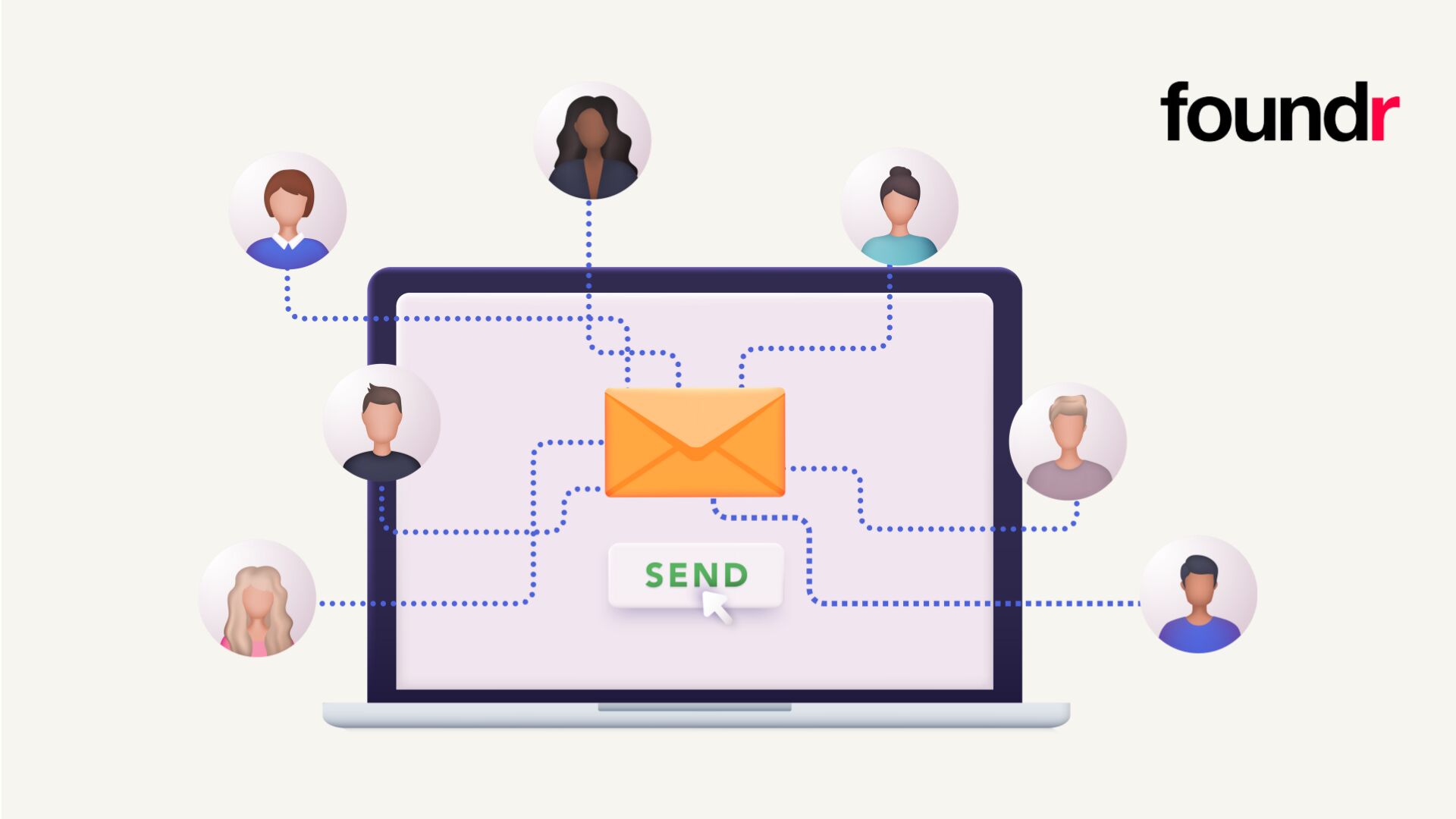
But first, I want to quickly explain why having a big, healthy email list is so important for almost any brand, regardless of the industry.
For starters, having a large email database gives you direct access to your audience, taking out the volatility that can come from relying on social media algorithms, varying PPC costs, and the dreaded Google algorithm updates.
You own the channel, which means you have complete control of what gets sent to your audience, when it gets sent to them, and how your messaging is viewed.
Additionally, the ROI for email is significantly better than other marketing channels. According to The 2025 State of Marketing Report, an annual report produced by HubSpot, the average ROI for email marketing campaigns is 36 times. That means you can earn an average of $36 in pure revenue for every dollar you spend on your email marketing efforts, a return that other marketing avenues can only dream of!
But email marketing isn’t just about profit and topline numbers. It is also a fantastic way to build relationships, improve trust, and develop loyal, repeat customers. Think about the best brands out there right now. They all have highly personalized, insightful, friendly welcome programs, as well as excellent re-engagement tactics and educational content.
Building trust through email is one of the best ways to turn one-off customers into repeat purchasers, shoring up the long-term success of your business.
Lastly, a healthy email list allows for advanced segmentation. You can tailor your messaging based on user behavior, interests, or demographics, making your emails more relevant and more likely to convert. It’s one of the only marketing channels that gives you full autonomy over which customers receive what content, and when.
As you can see, there are a ton of reasons why you need a large active email list. However, founder budgets are often tight, so any opportunity to save on outreach should be snapped up with both hands! With that in mind, here are six tried and tested ways to build and grow your email list without the need for paid ads.
One of the most successful ways to build your email list is through giveaways. Sometimes, you’ve got to give a little to get a lot.
However, if you don’t have the marketing budget to give away an expensive prize, you could also do so by providing something for free, such as a checklist, template, mini course, or even an eBook.
Just make sure that whatever you choose, it’s specific to your audience and genuinely useful. I see a lot of examples of brands going down this avenue, whipping up a resource on ChatGPT in five minutes, and then wondering why they have a high rate of users subscribing and then immediately unsubscribing from their email list.
If you’re asking readers to hand over their personal information, then you need to ensure that what you’re providing is genuinely insightful, offers expertise they couldn’t otherwise find themselves, and goes above and beyond the answers they could get themselves with a couple of well-worded prompts.
It’s easy to focus on the content of your email opt-ins, but it’s also just as easy to forget about the placement of them.
Don’t just limit your email opt-in messaging to a singular place on your website. Consider adding it to your homepage, any blog posts you publish, your website footer, about page, and even via pop-up messaging.
Most email service providers allow users to easily set up pop-ups anywhere on the website, either after a set time spent on the website, or after a particular action, such as scrolling, or moving the mouse away from the website.
However, I’d strongly advise you to use popups sparingly. It can be tempting to put them everywhere, but it’s important to remember that you want the experience on your website to be a fun one, and too many popups can feel very intrusive and frustrate some visitors.
It’s a fine line between maximizing the options you have on your website and not overdoing it, so always keep track of metrics like bounce rates and time spent on your site.
Another excellent way to engage your audience and build trust is by inviting them to a brand-specific challenge or boot camp. These experiences feel interactive and valuable, and the only investment required is your time and expertise.
For example, if you run a wellness brand, you could host a 7-Day Wellness Reset Challenge, helping participants improve their energy, focus, and overall well-being.
If you’re a beauty brand, consider launching a 7-Day Skin Glow Challenge, sending daily skincare tips and routines directly to their inbox.
Own a fitness brand? Run a 7-Day Strength Challenge with simple workouts and motivational content.
Promote your challenge across your social media channels, inviting your audience to sign up for free. Each day, deliver valuable, actionable tips straight to their inbox, strengthening your relationship, showcasing your expertise, and priming your audience for future offers.
Speaking of social channels, why not turn followers into subscribers? These people are already actively engaging with you on social media, so there’s a good chance you could convert them into email list subscribers as well.
To do so, tease your lead magnets, free challenges, or other offerings in stories, posts, or lives, and use “link in bio” tools to drive people to your opt-in.
Don’t be afraid to promote your email opt-in as your social audiences grow and new people become exposed to your brand.
However, your social media bio shouldn’t be the only external avenue you use to get your email opt-in link out there! There are also tons of other locations you can add it without damaging the consumer experience, such as your email signature, LinkedIn bio, your business cards, and even as part of a guest post outreach strategy.
Essentially, you should view any platforms that you have as an opportunity to funnel people into your list, so that you can contact them in the future.
Lastly, building your email list as an entrepreneur can feel like a very daunting task, and one that can seem hard to do as a solo effort.
But it doesn’t have to be a solo effort!
There are a ton of other entrepreneurs out there who will be interested in collaborating with you, sharing their audience with you in return for you sharing yours, a total win-win.
Team up with people in your niche for co-branded lead magnets, joint webinars, newsletter swaps, or guest blog posts.

Now you have all the free tools and tactics you need to grow your list. Don’t expect this to happen overnight, but a prolonged and multichannel approach will certainly gain traction over time.
However, it’s important to also consider what to do once you have grown your email list. After all, it’s one thing to grow your list, but it’s another to keep them engaged and excited about what you send them.
To cover this topic in great detail, we probably need to create a whole new article, but here’s a quick breakdown of the most important things to consider once your list has begun to grow:
Of course, you can only do all that with a brilliant email and SMS marketing service provider in your corner.
That’s where Omnisend comes in.
Omnisend is built for eCommerce brands that want to grow smarter, not harder. With powerful tools for email and SMS automation, intuitive drag-and-drop builders, and advanced segmentation options, Omnisend helps you turn your email list into a high-performing revenue driver.
Not only that, but when you use code FOUNDR50 at checkout, you also get 50% off your first three months of a paid plan. Simply copy the code and enter it at checkout to activate your discount. Click here and start today
The post 6 Ways to Build and Grow Your Email List Without Paid Ads in 2025 appeared first on Foundr.
Trying to decide which payment system you should be using?
Fortunately, there are plenty of payment systems for small businesses to consider in 2025, so whether you’re unhappy with your current provider or setting up for the first time, you’ve got plenty of choice.
Almost too much choice!
So, I’ve decided to make the process easier for you, testing several of the most popular options and identifying the top seven options to consider.
Before we jump straight in, let me quickly clarify what I mean when I say ‘payment system’.
A payment system is a platform, network, or technology that facilitates the transfer of money between a buyer and a seller, enabling transactions in exchange for goods or services.
Payment systems can include credit card processors, online payment gateways, mobile wallets, and even bank transfer networks, all designed to securely and efficiently move funds.
Payment systems aren’t:
Now we’ve got the housekeeping out of the way, let’s take a look at the key factors to consider when selecting a payment method.
These are the key factors that I considered in my research when narrowing down this list to the top seven options.
Firstly, I wanted to look at solutions that provided reasonable payout times. When a customer makes a transaction, it actually takes a little time for a payment gateway to get those funds from the user and into your account. Each payment solution has its own time frames, but for small businesses and founders, budgets can be tight, so quick payment times are essential.
However, fast payments are pointless if they aren’t easy for consumers to make! You also need a payment solution that makes it as easy as possible for customers to check out, or you risk ending up with some extremely high bounce rates and less than ideal profits.
Are you selling locally or aiming to appeal to a global audience? While some payment solutions allow for debit and credit card payments around the world, others only allow them in specific countries.
It’s no secret that the industry of processing payments has some very complex pricing systems, based on volumes, variable rates, and a heck of a lot of head scratching. The price structure for each payment system varies, so you need to choose one that suits the trends and purchasing habits of your target audience.
Lastly, but perhaps most importantly, I made sure that this list only includes the safest and secure solutions. Each of these solutions complies with PCI-DSS, so you can be confident taking recurring payments, credit and debit card information, and processing payments for your customers.
With those key factors in mind, here are six online payment methods to consider for your business, each with its own benefits and drawbacks to be aware of.
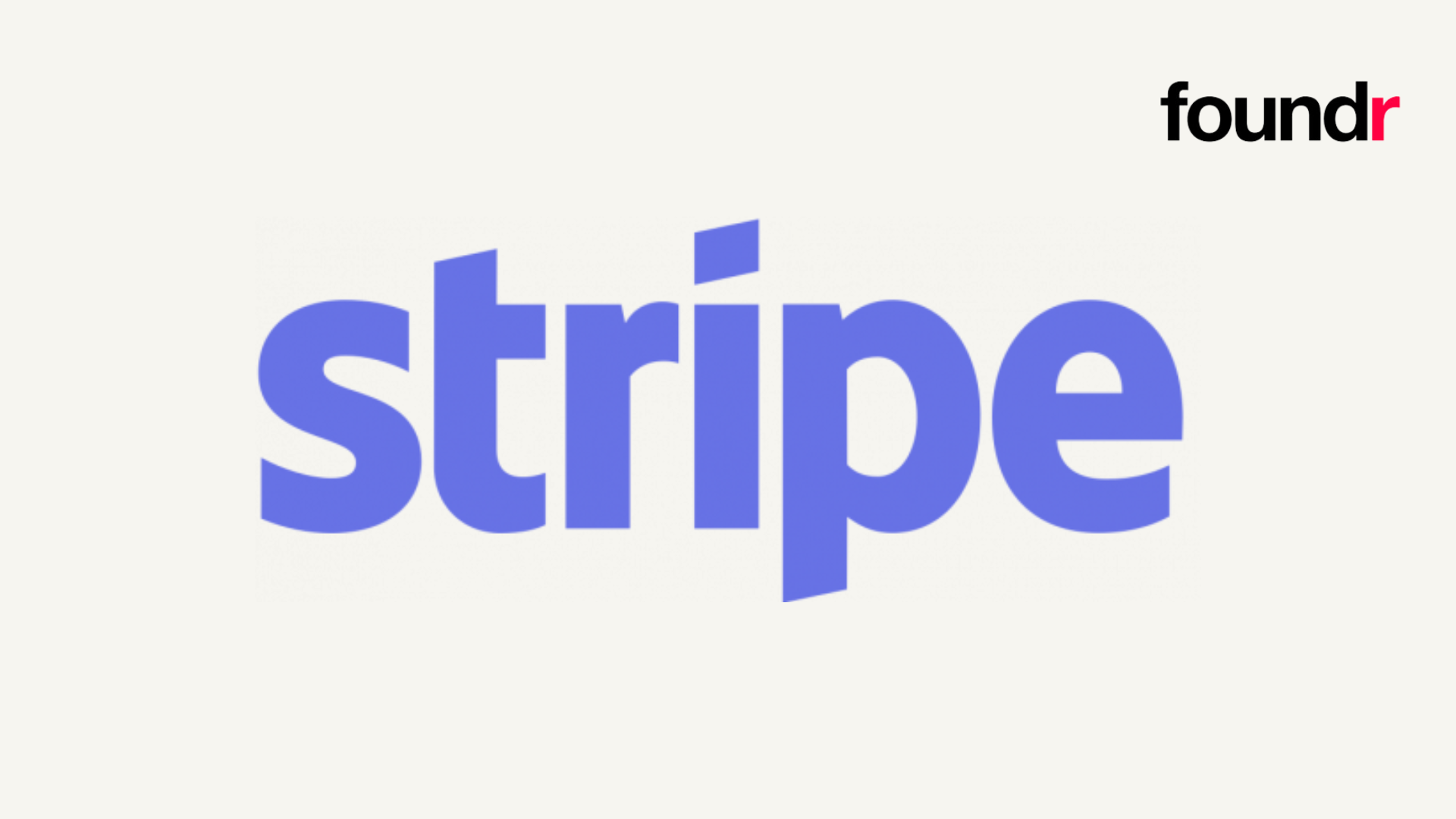
First on the list (and probably my favorite solution) is Stripe. The reason I think Stripe is such a great option for small businesses is that it’s incredibly easy to install and maintain, both of which are crucial for owners that have a thousand other important tasks to get to.
Unlike other popular solutions like PayPal, Stripe provides customers with a seamless payment process, keeping users on the website while making a purchase, reducing friction, potential for bouncing, and improving the customer experience along the way.
Just be aware that if you want a more advanced setup for your business, you will need to invest in a technical expert to do so effectively.

Could I really do this list without including PayPal as an option? It’s by far and away one of the most popular solutions, and for a good reason.
PayPal lets you accept payments in several currencies across the world, as well as being a very well-known (and therefore trusted by customers) solution.
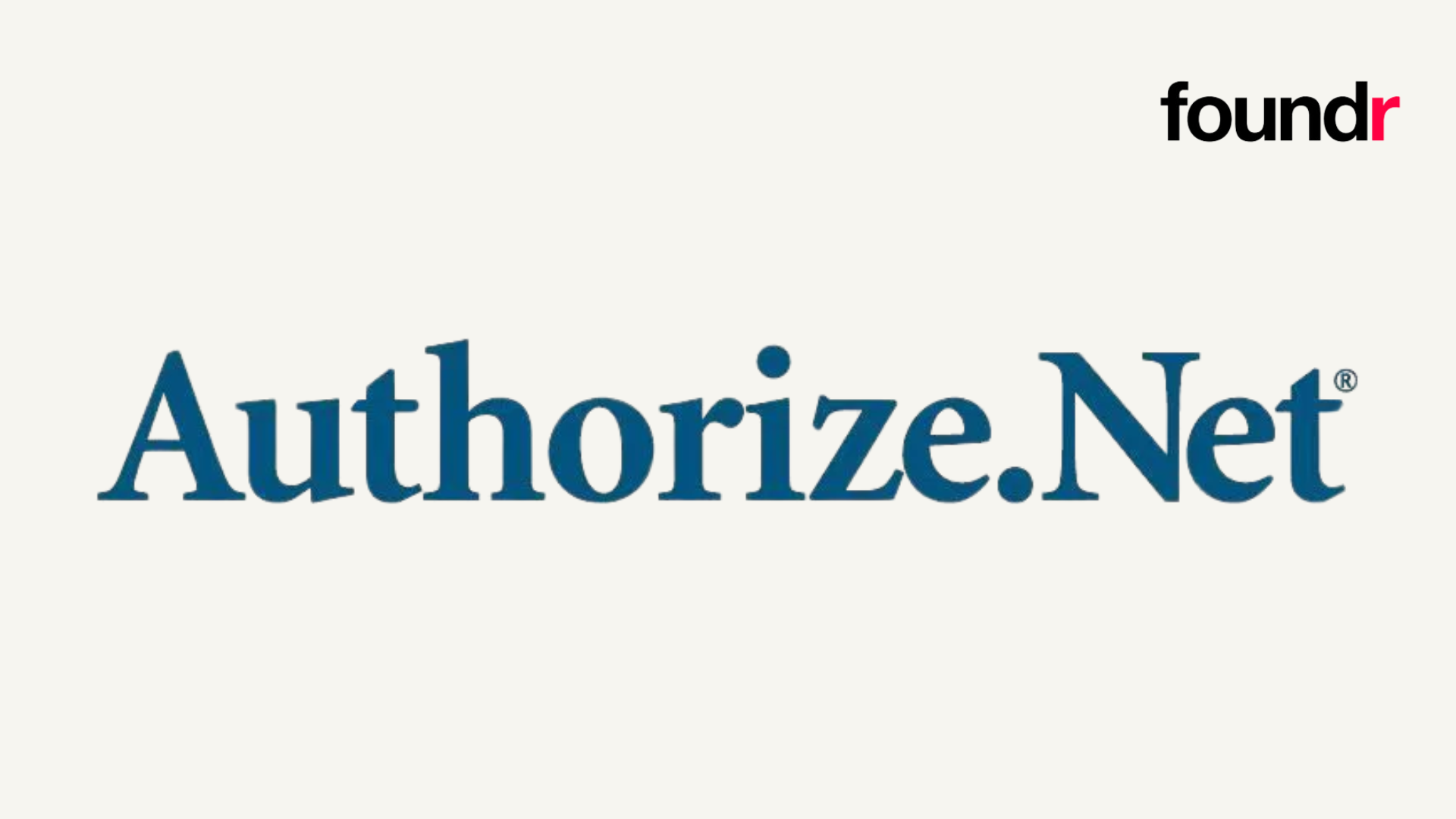
When I started researching this list, Authorize.net really stood out to me, most notably due to it’s extremely developer-friendly API. It offers great versatility, allowing users to offer a unique, satisfying user experience.
It also offers advanced fraud protection features, which adds a level of reassurance to both you as the seller, and your customers as the buyers.
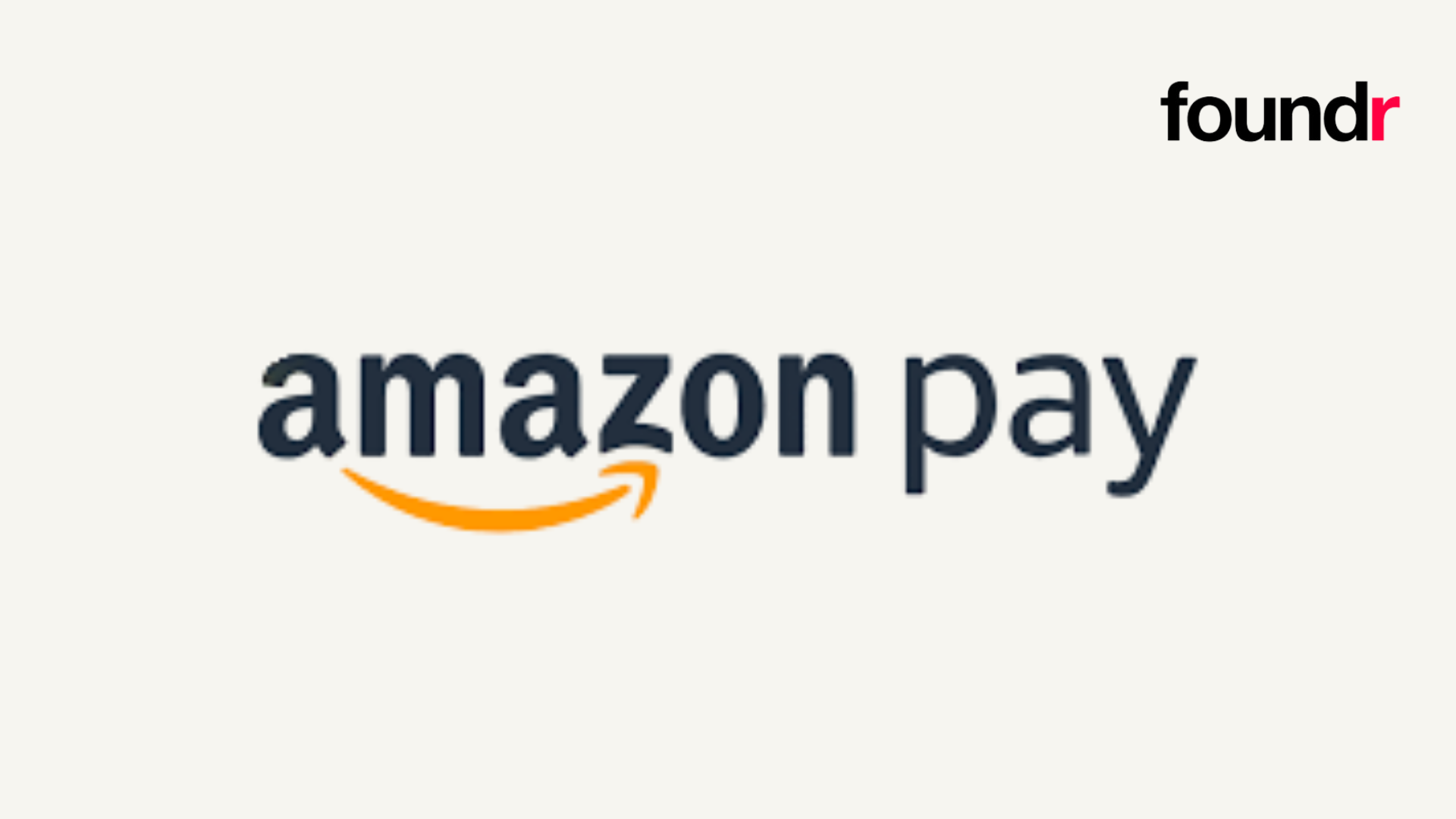
When you think of Amazon, your mind may not instantly think of Amazon Pay. However, it is rapidly becoming one of the preferred payment methods for small businesses.
It also offers an in-depth fraud protection solution, and (as you can imagine!) it integrates easily with almost any eCommerce platform.
Not only that, but customers often feel safe and your brand seems trustworthy as they recognize the Amazon brand.
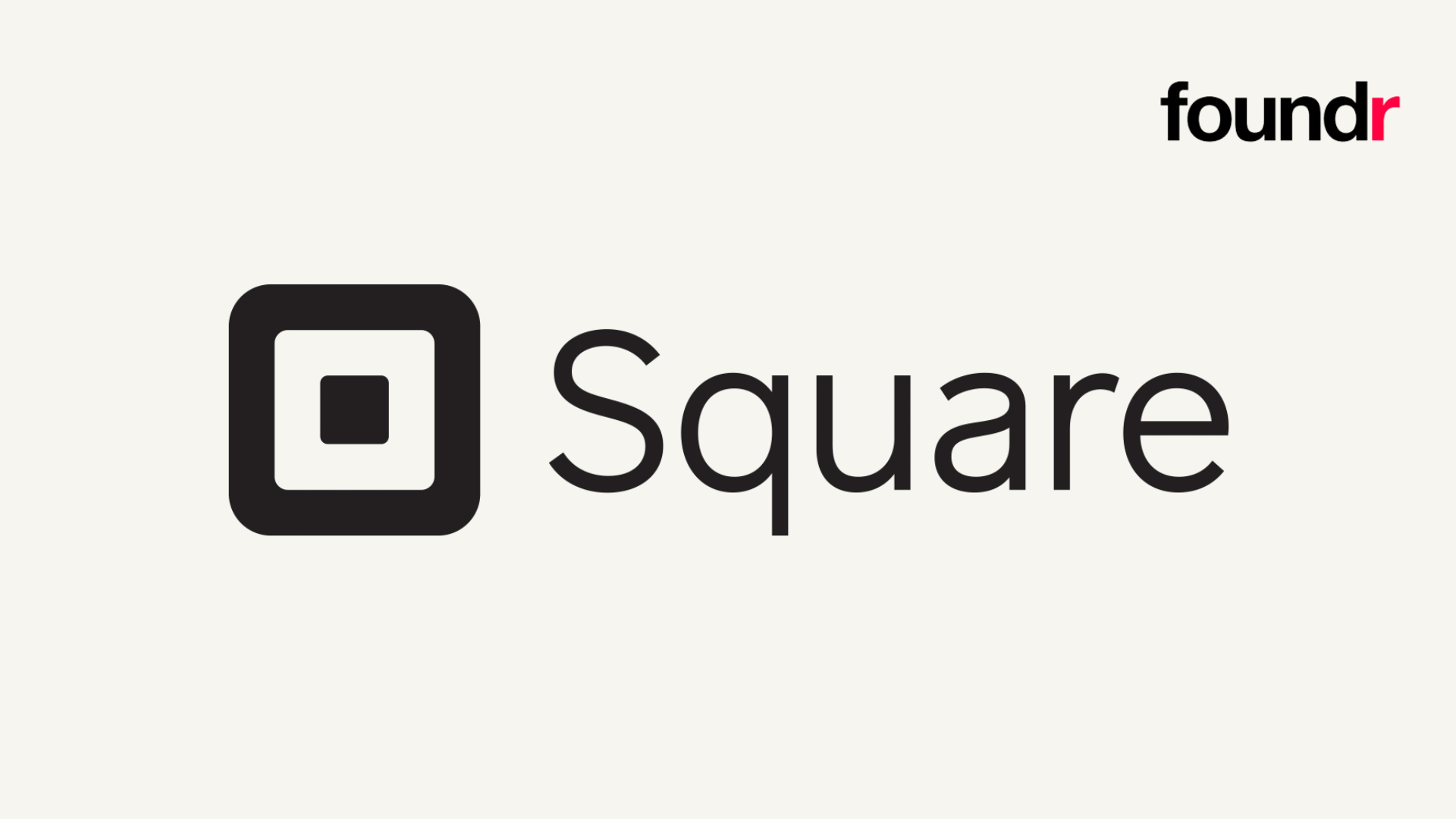
Another extremely popular solution for small businesses with a physical store is Square. Infact, if most of your business is done via in person payments, this would be my number one recommendation for you!
The best solution Square offers is it’s virtual terminal, which allows users to accept payments from almost any device, making it ideal for stores that require an on-site payment solution, but don’t necessarily have the busiest online store.
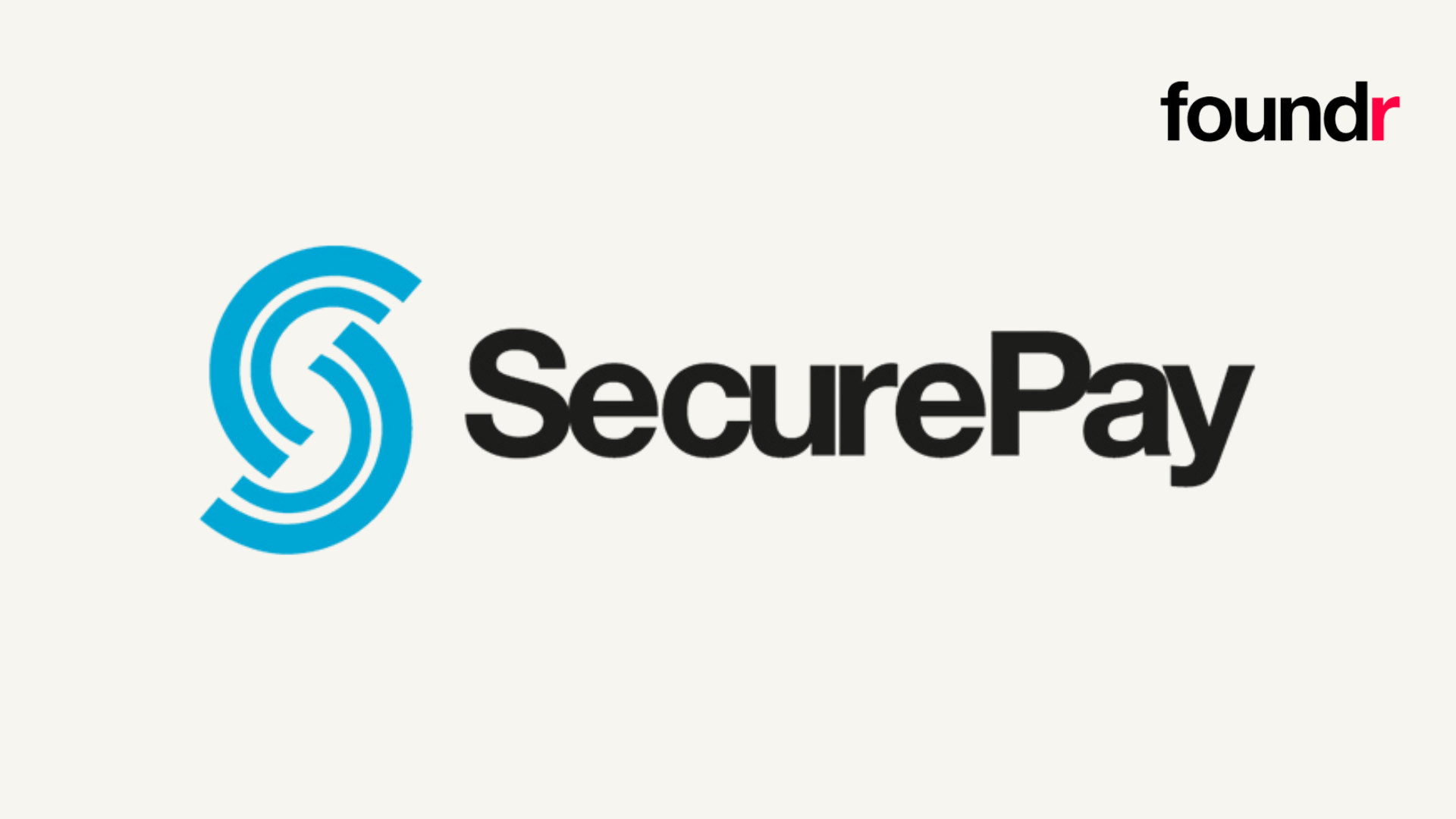
Finally, don’t forget to consider SecurePay! It’s a very useful alternative for small businesses and startups as it offers all available payment options, and has a very handy free trial that you can try before you buy.
It’s another solution that’s very easy to setup, with some great API integration features, which is essential for eCommerce businesses, especially those that aren’t set up on the most popular platforms like Shopify.
The biggest downside to SecurePay is that most people have never heard of it! That might not seem like a big deal, but it can actually have quite a significant impact on customer trust, especially for new customers who are already wary of parting with their hard-earned cash.
Choosing the right payment system is just the start. If you want to level up your business in 2025, mastering payments, marketing, and online growth is essential.
For just $1, unlock access to 30+ expert-led courses and 1,000+ lessons designed to help small business owners and entrepreneurs build, scale, and streamline their brands.
Learn everything from selecting the right payment system to driving traffic, increasing customer loyalty, and building a powerful online presence.
Join thousands of entrepreneurs growing smarter and faster.
*I pulled the latest pricing information available as of early 2025. Most of these rates are correct for standard accounts (no heavy customization, no negotiated enterprise deals). However, payment processors frequently change pricing (sometimes even quarterly!) depending on new features, local regulations, volume-based discounts, and other key factors. Before picking a provider, I’d highly recommend double-checking each provider’s official site or support documentation to check the rates still stack up.
The best payment processing software for small businesses offers easy integration, transparent fees, and support for multiple payment methods. Options like Square, Stripe, and PayPal are popular because they allow small businesses to accept in-person and online payments with minimal setup.
Mobile payments (like Apple or Google Pay) and contactless payments allow customers to pay using smartphones, smartwatches, or contactless cards by tapping or scanning at a payment terminal. Small businesses can accept these payments by using point-of-sale (POS) systems or card readers that are NFC-enabled.
Payment service providers (PSPs) like Stripe, Square, and PayPal simplify the payment process by handling card transactions, fraud protection, and deposits into your business bank account, making it easier for small businesses to accept payments without needing complex merchant accounts.
Some small business payment systems charge monthly subscription fees for premium features like advanced reporting, lower transaction rates, or additional hardware support, while others offer free plans and charge only per transaction.
The post 6 Payment Systems For Small Businesses to Consider in 2025 appeared first on Foundr.
As your business grows, so does your responsibility to your employees.
As a solo entrepreneur, you can (and often need) to work quickly, putting in the long hours needed to get your business up and running.
But you also need to make sure that you’re taking care of your employees.
To do that, you need the HR software solution in your corner.
However, with so many options to choose from (and likely a limited amount of time to do your research!), finding the right HR software can be hard.
With that in mind, I’ve done the hard yards for you! Here are 6 of the best HR software solutions for small businesses.
But before we jump straight in, let’s quickly look at what an HR software solution is, and also what it isn’t.
HR software (also known as Human Resources software) is a digital solution that helps businesses automate, organize, and optimize their human resources processes.
It encompasses a wide range of functions, including recruiting and onboarding new employees, managing payroll and benefits, tracking performance, storing employee records, ensuring legal compliance, and enhancing internal communication.
For small businesses, HR software is especially valuable because it streamlines administrative tasks, reduces human error, saves time, and allows business owners to focus more on growth and leadership rather than paperwork.
HR software doesn’t:
Now the basics are covered, I want to take a moment to highlight the key factors that I considered when compiling this list.
After all, there are several ‘non-negotiable’ factors that any good HR software must have. I’ve listed them below, and they are the foundations of the companies I have selected for you to consider.
For starters, the right HR system should be simple and intuitive for both admins and employees. As a small business owner, you want to ensure that HR tasks aren’t taking up too much of your time, as you also have several other important tasks to focus on to make the business a success.
The right human resource management software also needs to cover all the basics you need. That means picking a platform that offers payroll processing, onboarding new employees as the business grows, and employee management.
Choose a system that can grow with your business, not one you’ll outgrow in a year. As you continue to successfully grow your brand, you want to ensure that your HR operations can keep up with the rest of your business.
The right HR management software should also easily connect with your existing tools, like accounting, scheduling, performance management tools, and communication platforms.
This goes back to focusing on ease of use. I’m a strong believer in ensuring small businesses meet all the necessary employee standards, but that they do so in a way that doesn’t slow down their brand’s growth or cause unnecessary issues.
Lastly, you can’t ignore security and compliance! Small businesses need an HR portal that offers strong data protection and helps with legal compliance, both of which are non-negotiable.
Now that you know the benchmarks I used to build out this list, let’s dive straight into the best solutions for you to consider.
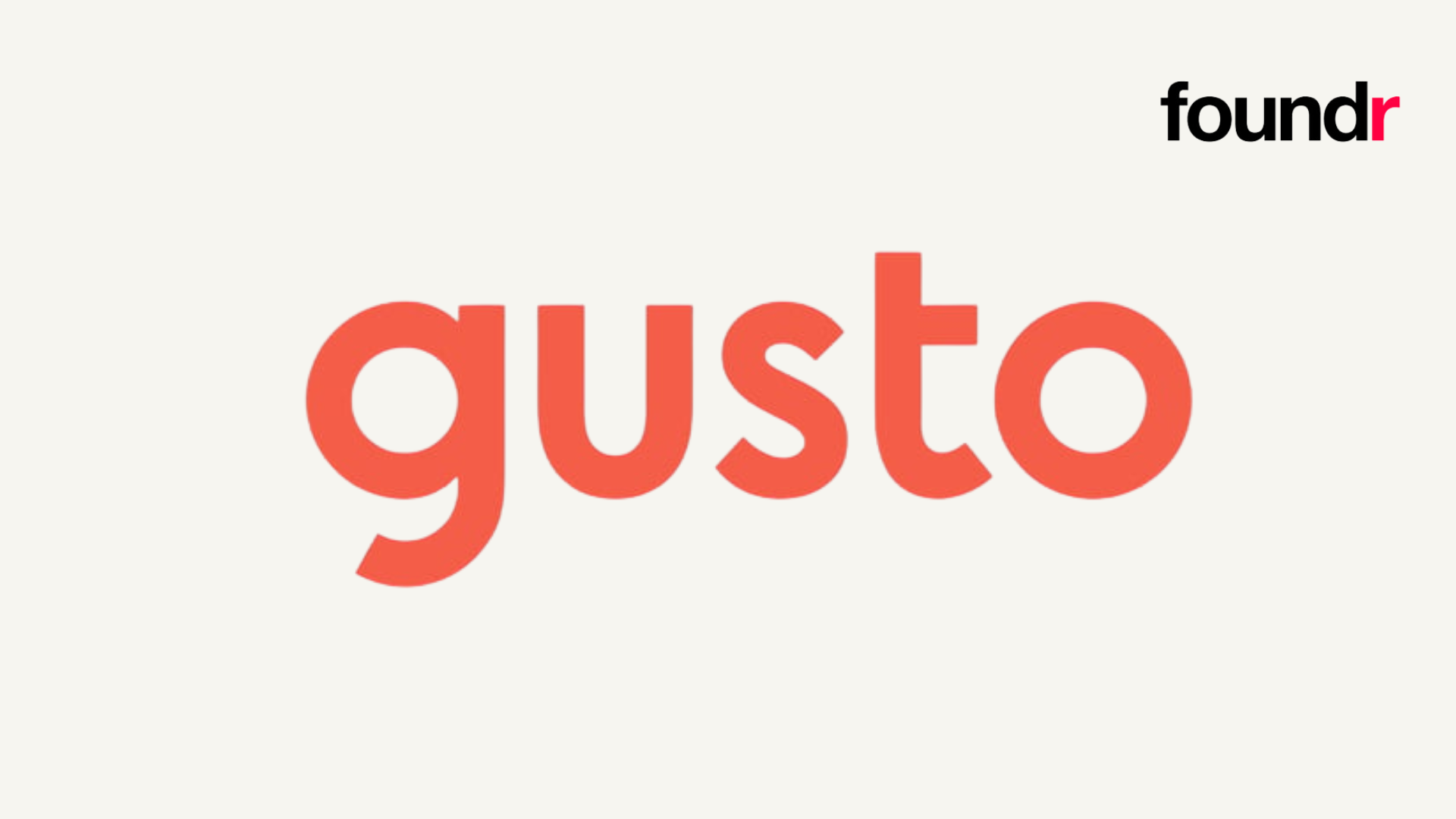
Gusto is a top choice for small businesses looking for an easy-to-use, all-in-one HR platform. It offers full-service payroll, benefits management, hiring tools, and employee onboarding in a straightforward dashboard, making HR tasks much easier for busy small business owners.
Known for its friendly interface and transparent pricing, Gusto is particularly well-suited for U.S.-based businesses that want to stay compliant and support their expanding teams.
However, it’s worth noting that Gusto has limited support for international employees, which could be a drawback for businesses planning to expand globally.
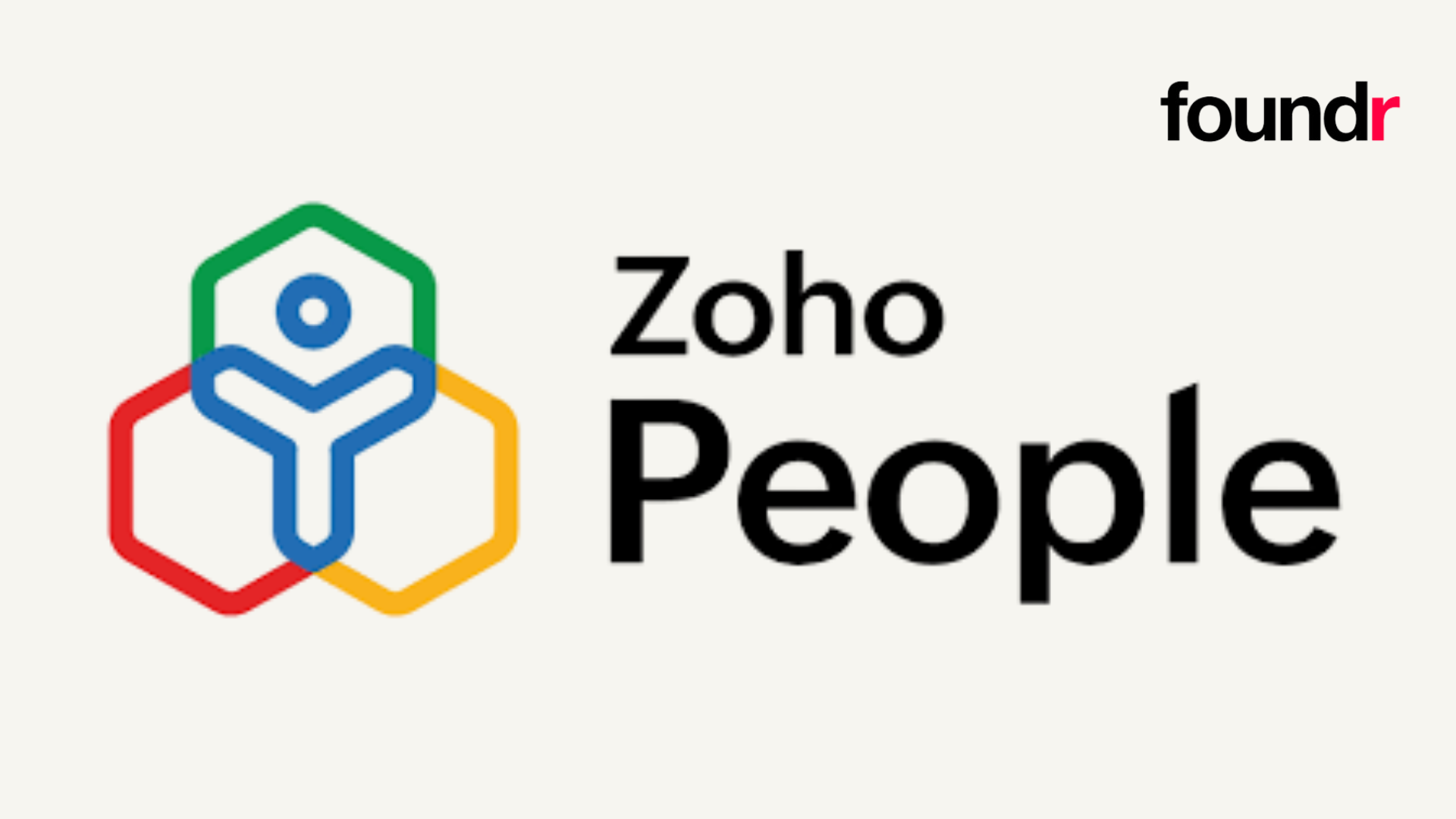
Zoho People is a flexible and affordable HR software solution that’s perfect for small businesses requiring customizable workflows and strong employee management tools.
It offers features like time tracking, leave management, onboarding, and performance reviews, all integrated with the broader Zoho ecosystem.
Zoho People is ideal for businesses seeking a highly adaptable system without a substantial price tag. However, some users find the interface less modern and occasionally challenging to navigate compared to newer competitors.

Homebase is a user-friendly HR platform tailored for small businesses, especially those with hourly employees in sectors like retail, hospitality, and food service. It offers a comprehensive suite of tools, including employee scheduling, time tracking, team communication, hiring, onboarding, and labor cost management, all accessible through a mobile-friendly interface.
While Homebase is excellent for small teams, it may not be ideal for larger organizations or those requiring advanced customization. From my experience, there were some limitations in configurability and scalability, which could pose challenges as your business grows.

Deel is a comprehensive global HR platform designed to simplify international hiring, payroll, and compliance for businesses of all sizes. It enables companies to hire full-time employees and contractors in over 150 countries without the need to establish local entities, making it an ideal solution for small businesses aiming to expand globally.
While Deel offers a robust solution for global HR management, I noticed a few issues with customer support responsiveness and occasional system complexities. Additionally, the cost is higher compared to other platforms that made the list, which could be a consideration for small businesses with limited budgets.
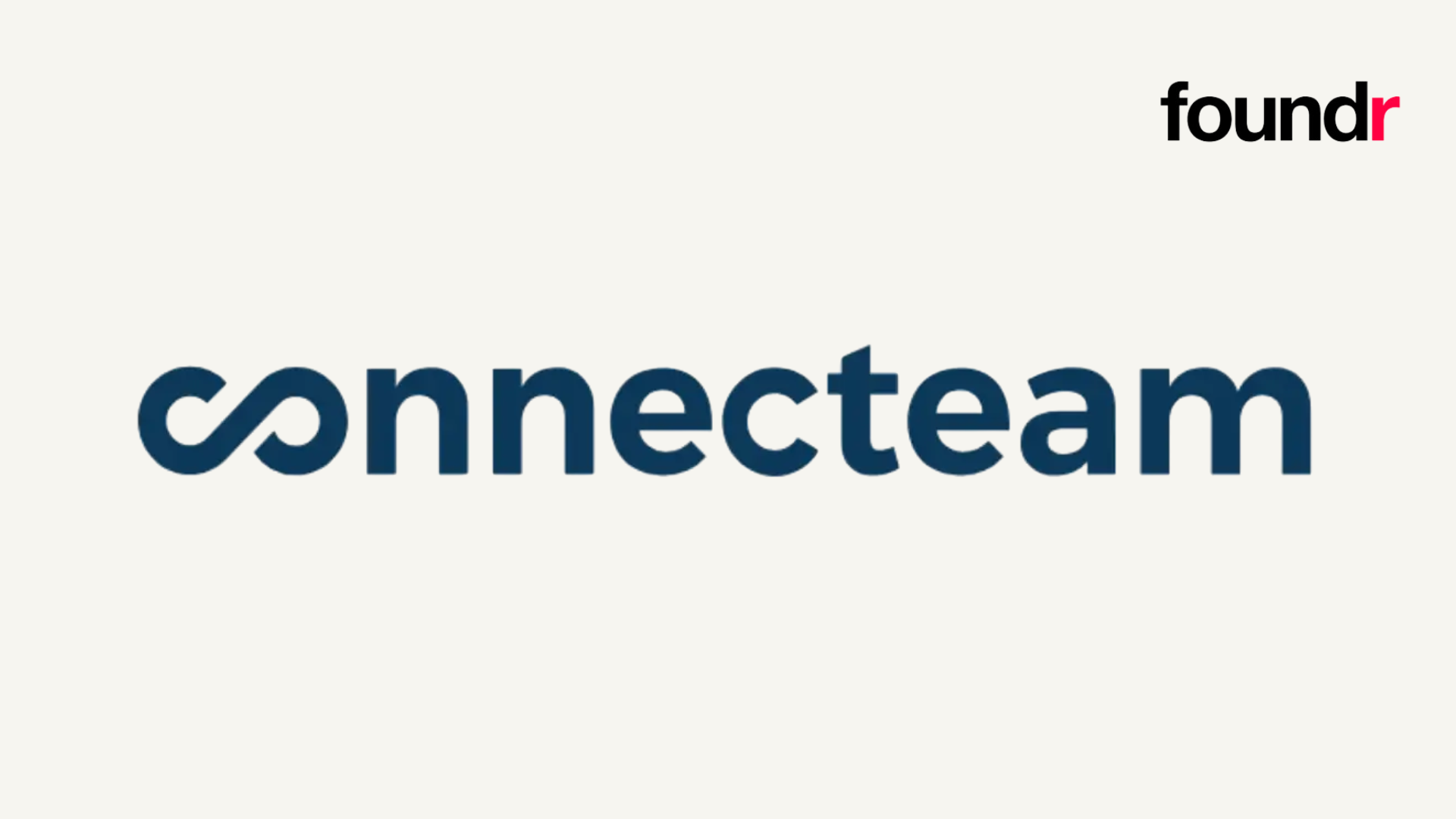
Connecteam is a mobile-first HR and workforce management platform designed for small businesses, particularly those with deskless or frontline teams in industries like retail, construction, hospitality, and field services.
It offers a comprehensive suite of tools, including employee scheduling, time tracking, task management, internal communication, and HR functionalities such as onboarding, training, and document management.
While Connecteam excels in managing deskless workforces, it may not be the ideal choice for businesses seeking advanced payroll functionalities or extensive desktop-based operations.
Not to mention the fact that researching pricing made my head hurt!
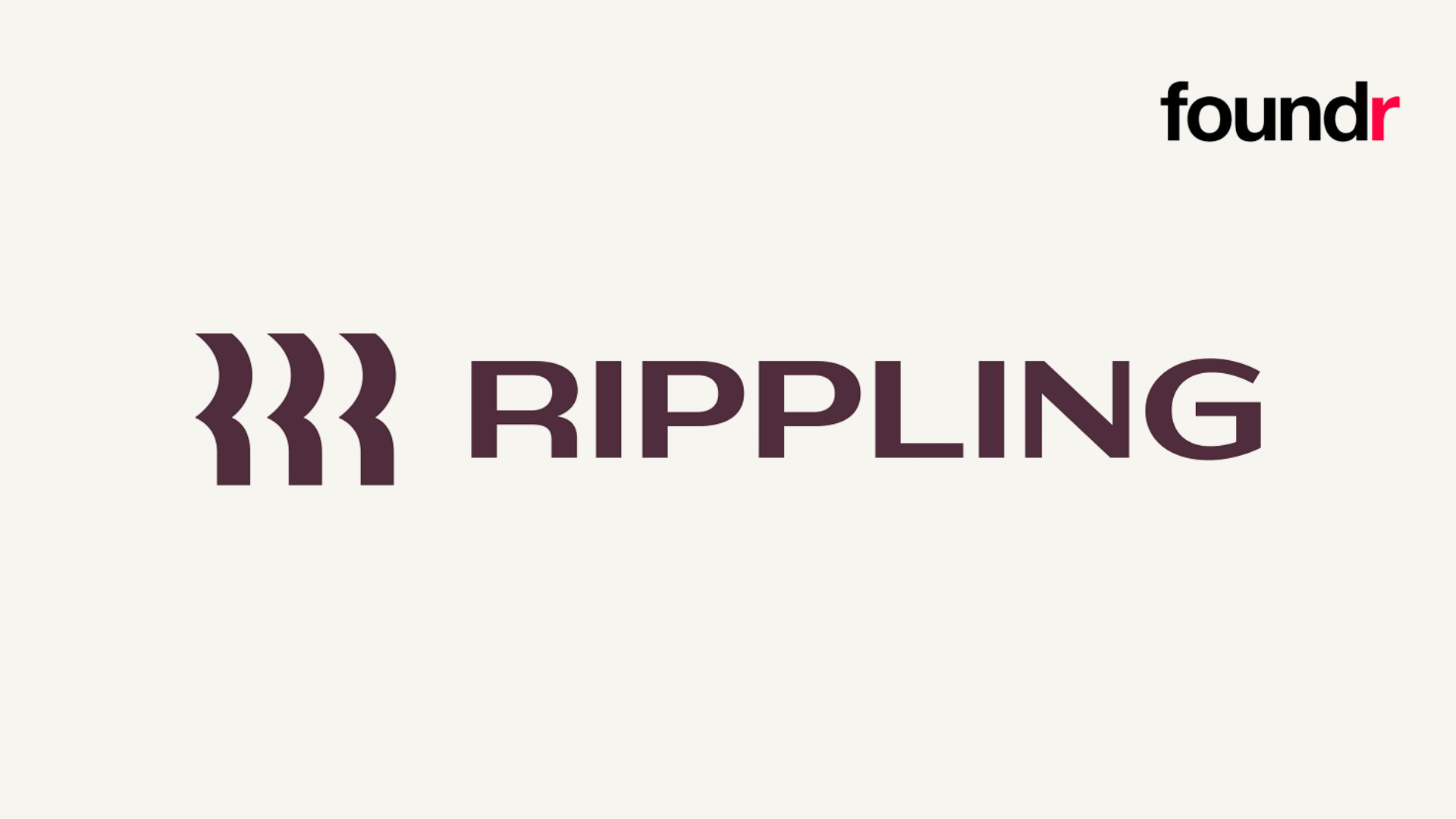
Rippling is a comprehensive HR platform that unifies HR, IT, and finance systems into a single, easy-to-use solution. It offers a wide range of features, including payroll processing, benefits administration, time and attendance tracking, device management, and expense management.
Rippling’s modular approach enables businesses to tailor their plans by selecting only the features they need, making it scalable for companies of all sizes. Its intuitive interface and automation capabilities streamline complex processes, reducing manual work and improving efficiency.
While Rippling offers a robust and flexible platform, I did find that the pricing structure can become complex and potentially costly as additional modules are added. Additionally, customer support is primarily chat-based, with phone support available only for clients with over 150 employees, which may be a limitation for smaller businesses seeking immediate assistance.
Choosing the right HR software is just the beginning. If you want to scale your business in 2025, mastering HR, leadership, and team growth is essential.
For just $1, unlock access to 30+ expert-led courses and 1,000+ lessons designed to help small business owners and entrepreneurs hire smarter, build strong teams, and streamline operations.
Learn everything from selecting the best HR tools to managing employee data, boosting retention, and creating a thriving company culture.
Join thousands of entrepreneurs growing smarter and faster.
The main functions of HR include recruiting, onboarding, managing employee data, handling payroll and benefits, ensuring compliance, and fostering employee engagement.
Accurate employee data management is crucial for tracking performance, maintaining legal compliance, streamlining payroll, and making informed business decisions.
Small businesses can create effective HR processes by clearly defining workflows for hiring, onboarding, time tracking, performance reviews, and employee offboarding.
Small businesses should track HR data like employee personal information, job history, time-off records, performance evaluations, and compensation details to support operations and compliance.
The post The 6 Best HR Software For Small Businesses in 2025 appeared first on Foundr.
Trying to work out which slides you must have in your pitch deck for 2025?
Perhaps you’re at the start of your business journey, and you want to bring your product to market.
Or maybe you’ve started to make some sales, and you want to scale your brand up and take it to the next level.
Here, I will talk you through the 10 slides you need to include in your pitch deck, as well as the key points you need to include in each slide.

Let’s dive straight into the essential slides you need in your pitch deck to turn your business idea into a business dream.
First off, what’s a good pitch deck without a great title slide?
Think of the title slide as your first opportunity to impress. A great title slide can be the make or break for some investors, as you have a split second to capture their attention or lose them for the entire presentation.
A great title slide commonly features your brand name, logo for professionalism, and a strong tagline that highlights your mission statement.
That tagline should highlight what you will cover in your pitch deck and not overly promise and underdeliver.
Once you’ve nailed your title slide, it’s time to consider your problem side.
What is it that your product or service is trying to resolve?
The pain point slide should identify the common problem that your target audience faces and also highlight why there should be some major urgency put towards solving it. You want to create a sense of urgency and highlight the true significance of the problem your audience is experiencing.
Once the problem has been identified, it’s time to explain how your product or solution solves it. Here, spend time going into details where necessary, forming a clear narrative that your business solves this issue, is of high demand, and is a no-brainer when it comes to profitable investments.
But you can’t just tell your audience that you can solve the problem with your product or service, you need to show them.
In this slide, you can identify and explain the benefits, key features, and unique selling points of your particular solution.
Money talks, and that’s exactly what the business model slide is all about. Investors want to understand how your company plans to generate profit. Use this slide to break down your revenue streams, pricing model, and sales channels. It’s your chance to prove that your venture is financially sound and built for long-term success.
Your customer acquisition strategy is key, and that’s the focus of the go-to-market slide. Use it to outline how you’ll market, sell, and distribute your product and how you plan to win over and keep your ideal customers. This slide gives investors a clear view of the actionable steps behind your growth plan.
The competition slide shows you know the landscape (and how you stand out!). Acknowledge your competitors, then highlight what sets you apart. This slide proves you understand the market and have a clear edge in your positioning.
While understanding the competitive landscape is important, it’s not as important as ensuring potential investors understand your team.
After all, that’s who they’re going to invest in, so you need to ensure they are confident in the experience, passion, and skillset your team has to offer.
Focus on aspects that investors want to see, such as experience, success stories, and any additional value they bring to the business (think, acquiring customers, creative marketing, and so on).
Okay, so far, you’ve likely highlighted the problem, impressed with your business model, team, and market research, and investors are seriously considering working with you.
Now it’s time to seal the deal with your financial projections. That means showing off detailed revenue forecasts, expenses, and your break-even point. Venture capitalists want to ensure there is an exit strategy in place and that they can be confident that they’ll make their money back and more.
When pitching your potential revenue model, don’t be afraid to use detailed competitive analysis to back up any statements.
Lastly, you need to finish your pitch deck with a sense of urgency.
After all, if you’ve just made a killer pitch, now is the time to strike while the iron is hot! The last thing you want is to lose the momentum you’ve generated and ultimately lose sales or investors.
That’s where the why-now slide comes in, highlighting marketing trends, outlining why this market opportunity needs to be taken now to gain a competitive edge, and pushing venture capitalists to act now.

Having a high-quality pitch deck ready is something you certainly shouldn’t take lightly. A winning pitch deck can be the difference between potential investors backing your business venture and walking away from the negotiating table.
Venture capitalists want to ensure you have a true competitive advantage and have conducted the relevant market research. A pitch presentation is the perfect place to convince investors of your unique selling proposition, raise money to take your business model to market, and turn your business dreams into a reality.
Ready to level up your eCommerce strategy in 2025? Learn how to drive more traffic, captivate your audience, and build a standout brand with Printful.
For just $1, you can access 30+ expert-led courses and 1,000+ lessons designed to help you launch and scale a thriving print-on-demand business. From mastering Printful and social media to building a powerful online presence, everything you need is here—alongside a supportive community of ambitious entrepreneurs.
Join Foundr+ today and take the first step toward launching your Printful-powered brand.
The post The 10 Slides You Must Have in Your Pitch Deck for 2025 appeared first on Foundr.
What is Printful?
Perhaps that’s a question you often find yourself asking when you read about other entrepreneurs and their production line processes.
Or perhaps you have been searching for a new solution to some current supply line issues, and you want to see if Printful is the right option for you or whether the services offered aren’t quite up to scratch.
Here, I will discuss Printful in more detail, helping you understand if it’s the right option for your print needs.

First off, let me explain what Printful is!
In simple terms, Printful is a print-on-demand service that allows users to create, print, and sell their products quickly and easily.
The platform can easily be integrated into your store whether that’s Amazon, Etsy, or even eBay, and offers a wide variety of customizable print products.
Some of the most commonly chosen product ideas include:
Not only that, but unlike other competitor apps in the world of print on demand, it also offers a built-in design feature, making it even easier to develop products quickly.
Plus, if you’re unsure how you can improve on a design, the Printful design tool also offers several useful recommendations.
One of the biggest benefits of Printful is the fact that you don’t have to hold any inventory.
You can opt to keep a few extras if you feel it’s necessary, but ultimately, when a customer purchases an item, Printful then makes it and delivers it, meaning you don’t have to worry about order fulfillment.
Not only that, but delivery is incredibly fast, too! Once you receive an order, Printful automatically starts creating the custom products without you needing to do anything.
As mentioned already, Printful seamlessly connects with major e-commerce websites like Shopify, Etsy, and WooCommerce, and also offers global fulfillment, meaning you can sell products across the U.S, Canada, Europe, and even further afield.
One of the biggest benefits for founders is that Printful doesn’t require a minimum order amount, making it ideal for testing new products and growing your brand without the pressure of extra products sitting on the shelves.
Another major benefit for customers is that Printful stays behind the scenes; your brand takes the spotlight.
Lastly, it’s important to highlight the quality of the products. From my experience, Printful does a fantastic job on this front, providing companies with the quality their audience has come to expect.
Of course, you can’t have all those benefits without a few drawbacks to be aware of!
The biggest drawback (one that almost all print-on-demand systems have) is the profit margin.
Margins are often significantly lower compared to bulk ordering from wholesalers, making revenue growth much slower.
There is also quite significant limits on customization, as some design placements and customization options are restricted.
The other major issue with opting for a print-on-demand platform is that quality control is completely out of your hands.
Mistakes (though rare) can happen during fulfillment, and no matter how much great marketing and advertising you do, it can be very hard to regain customer trust and create loyalty if you aren’t able to sort issues quickly when they arise.

Ultimately, whether or not Printful is right for you depends entirely on your brand, goals, and the products you want to sell.
If you want to sell these types of products on your site, Printful could be a good option for you to consider before moving on to a wholesaler when you have a built-in audience for better product margins.
For example, you could use Printful for about two years, gain a loyal following, and then move to a system that offers better profits when you’re confident you won’t be left with stock collecting dust.
Looking to elevate your eCommerce game in 2025? Discover how to attract more traffic, engage your audience, and grow your brand using Printful.
For just $1, unlock access to over 30 expert-led courses and 1,000+ lessons focused on building and scaling a successful print-on-demand business. Learn the ins and outs of using Printful, mastering social media, and creating a strong online presence—all within a thriving community of modern entrepreneurs.
Join Foundr+ today and take the first step toward launching your Printful-powered brand.
Yes, you can create custom products with Printful. The platform lets you design and sell a wide range of products, like t-shirts, hoodies, mugs, and more, using your own artwork, logos, or text through an easy-to-use mockup generator.
Yes, Printful is free to use. There are no setup costs, monthly fees, or minimum order requirements. You only pay when a customer places an order, covering the product and fulfillment costs.
The end customer typically pays for shipping. As the store owner, you set your retail prices, including shipping fees. Printful charges you their shipping rate, and you can either pass that on to the customer or include it in your product pricing.
There is no minimum order requirement on Printful. You can sell and fulfill orders one at a time, making it ideal for startups, small businesses, and creators testing new designs.
The post What is Printful? The Definitive Guide appeared first on Foundr.
If you’re reading this, chances are you already know about dropshipping, how it works, and some of the profits other people have made.
But one big question may still remain.
Does dropshipping work in 2025?
After all, the concept of dropshipping is no longer new. Now, with more dropshippers joining the party every day, there is more competition than ever, with some being quick to claim that ‘dropshipping is finished.’
But that’s not entirely true. Instead, you need to be savvy, calculated, and driven to see success. Here, I’ll show you that dropshipping continues to be profitable in 2025 and how you can get started today.

It’s easy to understand why some people think dropshipping is dead in 2025. After all, there are more people than ever trying their hand at it.
Anecdotally speaking, I was in Bali recently, and I would say one in every three people I met was doing dropshipping!
However, there’s a reason why people continue to give it a go. Here are some of the most notable dropshipping statistics for you to be aware of, highlighting just why it’s still a profitable endeavor.
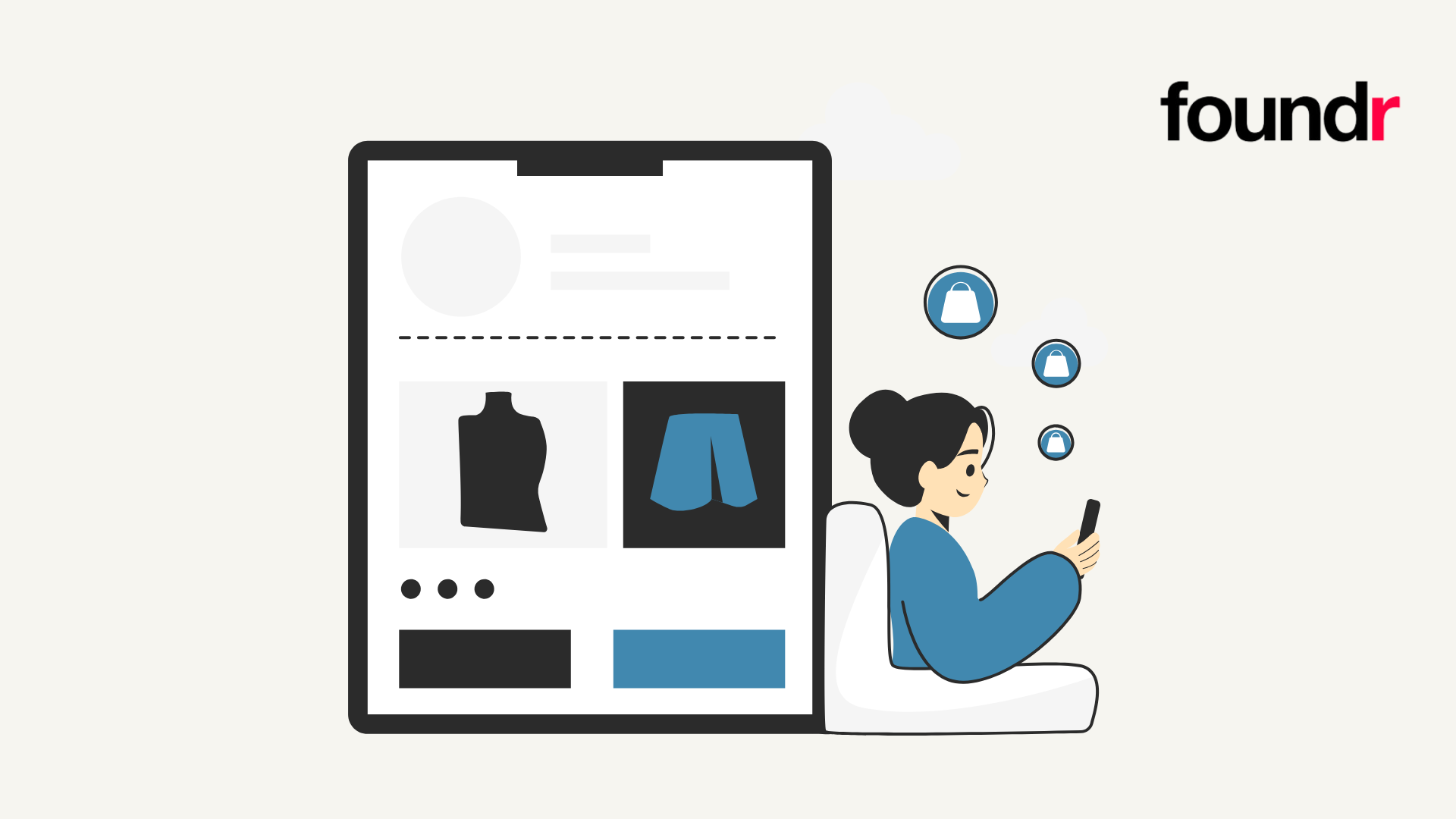
With that in mind, let’s take a look at the steps you need to take to start your dropshipping business.
First off, you need to decide what business model you are going to opt for. Are you going to niche down and select a store that focuses on a very small but fiercely loyal community? Are you going to try and set up a general store that appeals to a larger audience but comes with more competition? Or are you going to go down the ‘one-product store’ approach?
Each option comes with its own pros and cons, so it’s important to identify a route and ensure everything you do helps you achieve that goal.
Want to understand niche markets in more detail? Check out this article.
Once you have decided on your niche, whether it’s a very specific or broader one, it’s important to swat up on everything you can about it. This will help you understand what your competition is selling, what your audience is looking for, where they shop and engage with brands on the internet, and any potential pain points you could look to exploit for quick success.
To do this, tools like TikTok, Instagram, Amazon Best Sellers, and Google Trends are all excellent options. They will help you understand what the competition is doing well and also what you could do better than them, allowing you to carve out a much-needed USP, especially in a saturated market.
Another important factor to consider at this stage is profit margins and feasibility. If you can’t find a way of making a profit from your chosen niche, then it’s essentially a non-starter. You need to be confident that sales will at least cover your costs at first and have the potential to scale smoothly, thanks to easy shipping.
As a dropshipping company, not handling inventory can seem excellent, but it does also come with some downsides, most notably, if there are issues with shipping, it can have a major impact on your brand’s perception as it can be tricky to rectify issues that are out of your control.
Firstly, you need to find a reliable supplier. I cannot stress enough how important this step is. So much so that everything else from this point becomes significantly less impactful if you fall at this hurdle.
Some of the most popular options include AliExpress, DSers, Zendrop, CJ Dropshipping, and Spocket, but we also have a fantastic video training course on this subject.
If you’re planning on dropshipping on Amazon, you need to be really careful who you partner up with. Amazon has some pretty strict policies on suppliers and wholesale distributors, so I strongly recommend checking out their list of vetted candidates.
Once picked, take time to order samples, making a note of the product quality, delivery speed, and other important aspects of the customer experience.
Once you’re happy with the supplier you opted for, it’s time to consider where you’re going to set up your online store.
The most popular options tend to be Shopify or Amazon, each of which comes with its own benefits.
Shopify is an excellent option as it offers a lot of excellent eCommerce features, it’s easy to set up, and it gives you control over the design of your page and branding.
However, it is trickier to get people to find and purchase from your brand at first, especially when compared to setting up on Amazon.
As you can imagine, setting up on Amazon means you open yourself up to a much bigger target audience automatically, which is very attractive for new dropshippers.
However, Amazon is also aware of the many benefits they offer you and that your choices are minimal due to their market dominance. As such, they often take significant fees, monthly costs, and a percentage of sales.
Fortunately for you, I’ve compiled a list below of some excellent Shopify guidance, ensuring you give yourself the best chance of success:
Okay, calling them ‘the boring bits’ might be a bit harsh, but I know I would much rather be working on the creative aspects of a brand rather than setting up policies for shipping, returns, and refunds.
However, these pieces of legislation are all absolutely crucial for protecting yourself in case of any issues, which can get quite complicated as a drop shipper.
You also need to consider other important aspects like basic liability insurance or whether you want to set up as an LLC or a sole proprietor.
Luckily, you can learn a bit more about all that here: Sole Proprietorship vs. LLC: Everything You Need to Know.
Now that those bits are out of the way, it’s time to optimize your website. That means writing compelling product descriptions that are SEO-friendly and what the consumer wants to see. Focus more on the benefits of your products rather than the features.
Does a consumer want to know that your vacuum has powerful 26kPa suction? No, probably not. Do they want to know that it has the power needed to suck up everything, even dog hair? Yes!
You should also focus on using other important user-focused features, such as high-quality imagery. It makes your brand look professional and your products more valuable.
Lastly, test out different urgency elements, such as highlighting limited stock and countdowns; just make sure not to overdo it.
Once all your foundations are in place, it’s time to get your brand in front of your target audience.
Start getting an email list in place for future discounts and new products by adding pop-ups to your website and promotions on social media.
Use micro and macro influencers to promote your product, ensuring you work with influencers specifically within your niche.

While it’s easy for almost anyone to set up a dropshipping business in 2025, making it a success is a different matter altogether. Here are a few tips and tricks I recommend that will help you ensure your brand gets off to a great start and builds sustainable long-term success.
For branding, it’s absolutely crucial that you invest time and effort into this early on. Use websites like Fiverr to get a quality logo made, ensure you have a consistent color palette in place, and don’t be afraid to lean into the story of how your brand came to be and what you want it to represent.
Consumers also want to see other trust signals, especially those who haven’t purchased from you before. That means collecting legitimate reviews, laying out a detailed frequently asked questions page for customer support, and adding real photos of the products you’re selling.
When it comes to marketing, it can be very tempting to spend big in the hopes of attracting new customers.
However, the best approach is to actually start small, testing each route before identifying where you are seeing the most success and then spending more in those areas.
Dropshipping is not passive income.
I can’t stress this enough: Anyone who tells you it is passive either doesn’t do dropshipping themselves, or if they do, they don’t do it successfully!
You have to treat your dropshipping like a real business, focusing on long-term strategies like focusing on customer experience.
Lastly, it’s important to know that once you’ve done all of the above, the work doesn’t stop there! Dropshipping and eCommerce as a whole are rapidly evolving, and staying up to date with the most recent trends, success stories, and products is a must for long-term success.
There are plenty of great resources, such as r/dropshipping on Reddit, but for the very best results, joining Foundr’s community is the best solution, as it will put you in touch with authentic, current eCommerce business owners and dropshippers, allowing you to learn and grow with each other.
Ready to build a successful dropshipping business in 2025? Learn how to drive high-converting traffic, grow a loyal customer base, and turn your store into a powerful brand.
For just $1, unlock instant access to 30+ expert-led courses and 1,000+ lessons on Shopify, Amazon, social media marketing, and online branding. Join thousands of ambitious dropshippers and digital entrepreneurs inside Foundr+—your ultimate resource for eCommerce success.
Sign up for Foundr+ today and start scaling smarter.
The post Does Dropshipping Work in 2025? The Definitive Guide appeared first on Foundr.
For most founders, securing funding to get started is often one of the most difficult hurdles to overcome.
Often, it can be hard to get the credentials required for a business loan, and in many cases, owing someone money or handing over business equity is not very appealing!
That’s where grants for small businesses come into play!
In this article, I’ll take you through the grant programs you should be capitalizing on this year, helping you get the funding you need without the strings attached.
First off, let me quickly explain when I refer to a small business grant, as there is often a little confusion between the difference between a loan and a grant.
A small business grant is a form of funding provided by government agencies, private foundations, or corporations to support the growth and development of small businesses.
Unlike loans, grants do not require repayment and typically come with specific eligibility criteria and designated purposes, both of which I will discuss in greater detail later in this article.
For a comprehensive guide to bootstrapping vs. external funding, check out our recent article!
There are a ton of benefits that small businesses can get from a successful grant application. Most notably, grants provide funding that doesn’t have to be repaid, reducing financial stress during early growth phases.
Not only that but you can also maintain the full control of your business, as no equity stake is taken. However, there are also some less obvious benefits to securing a grant, such as the credibility and visibility it can offer your brand.
Securing a grant often signals that an external party believes in your business, which can boost credibility with investors and customers.
With that in mind, let’s take a look at some of the most common grants that small businesses can attempt to take advantage of.
Federal agencies could be handy places to start your search! Federal grant programs like the Small Business Innovation Research (SBIR) and Small Business Technology Transfer (STTR) are excellent options for any startup that has launched a tech-focused company.
The added benefit of these grants is that they don’t just offer funding, but they also help you validate your technology or service.
However, while federal grants can be very beneficial for certain businesses, they are tricky to acquire for most businesses, especially for those not focused on technology.
State grants could be a solution to that issue, as many local governments offer unique grant programs to promote entrepreneurship and economic development in their area.
These grants also tend to target specific industries based on their needs at that time, but it’s always worth reaching out to their small business administration to see what may be on offer.
As a small business owner, it can sometimes feel hard to compete with the larger companies in your industry. However, large companies tend to help give you a leg up occasionally, running grant competitions to foster innovation in sectors they care about.
These may be technology-based, but they can also be for a wide range of industries, such as businesses that support community services.
For nonprofit organizations, there are specific grants you can go after, such as the Ewing Marion Kauffman Foundation or local economic development nonprofits. These grants are often relied on by nonprofits to stay afloat, and as such, there are likely plenty of options to look into in your area.
There are also plenty of funding opportunities in place for anyone who starts a women-owned small business, with numerous programs focusing specifically on promoting women’s business ownership.
Eligible businesses will need to prove their ownership is women-led, but with more small business loans and grants becoming available, it’s an avenue worth looking down.
For eligible small businesses, there are also minority and veteran-owned grants to consider. Often, these grants don’t just offer funding, but also mentorship and networking opportunities.
If you’re shaking up an industry with a potentially ground-breaking technology, you may be eligible for grants that cover research and development expenses, which can be a game changer.
These opportunities help reduce the financial risk of innovation without taking on debt or equity dilution, allowing you to truly test your thesis, create product prototypes, and get them to market.
Lastly, let’s talk about how you go about enquiring about potential grants, as the routes for nonprofit organizations and for-profit businesses differ slightly.
The best place to start your search is with good ol’ Google! Search for ‘government grants for small businesses,’ and you’ll be able to see specifically what is on offer in your area. As I mentioned earlier, local areas tend to provide grants with different criteria unless you’re interested in federal contracts.
However, as the local or federal government isn’t your only option, you should also attempt to identify private companies and foundations that support entrepreneurial ventures.
For women entrepreneurs, minority-owned ventures, or industry-specific initiatives, these grants aren’t always clearly advertised, so don’t be afraid to reach out to someone you think may be able to help.
When you have uncovered a potential grant opportunity, it’s important to spend time learning the requirements.
Each grant comes with specific requirements, so make sure your business qualifies before investing time in the application.
Determine if the grant is intended for research and development, expansion, marketing, project costs, or another specific area. Tailor your application to show how the funds will meet these goals.
If you think you meet the criteria in question, then it’s time to craft your pitch! After all, you can’t expect an entity to just give you money because you asked for it.
Within your plan, include clear objectives, detailed financial projections, and measurable outcomes. Demonstrating a well-thought-out strategy reassures grantors of your business’s viability and dramatically improves your chances of a successful application.
Small grants can provide a vital boost, but they’re only one piece of the entrepreneurial puzzle. To build a thriving business, you need comprehensive guidance that covers everything from branding and design to eCommerce and marketing.
That’s where Foundr+ comes in. For just $1, you’ll get instant access to 30+ expert-led courses and over 1,000 lessons designed to guide you through every aspect of setting up and growing your business.
Whether you’re learning how to secure grants, perfect your brand identity or master digital marketing strategies, Foundr+ equips you with the tools, insights, and community support you need to succeed.
The post Grants for Small Businesses: Grants You Should Be Taking Advantage Of in 2025 appeared first on Foundr.
What is Canva?
As a business, it is crucial that your website and marketing collateral match the high quality of your services or products.
However, with your time and effort getting pulled in multiple directions, taking night classes to become a master at graphic design probably isn’t too high on your to-do list!
That’s where Canva can help.
But what is Canva? Here, I’ll explain what Canva is, and how you can use it for your business in 2025.
Firstly, what is Canva?
Canva is a fantastic design tool that businesses can use to create high-quality marketing materials, regardless of their design skills.
The tool uses a clever drag-and-drop interface, making it much more simplistic (but also significantly easier to use!) than more advanced tools like Adobe Illustrator or Photoshop.
As a result, it is a much more accessible tool for creating professional designs, especially given the pricing. ‘Canva Free’ is an incredible free version of the tool that lets you access almost every aspect of the platform at no cost whatsoever.
I have used Canva myself for several years, and only started paying for Canva Pro in the last year or so to access some of the premium templates. It’s a brilliant tool for people like me who are not advanced enough to get the most out of Adobe products but still need to be able to produce the odd Instagram post and blog header from time to time.
And on that note, let’s take a look at how Canva can support your design process, helping you create a range of forms of content for your marketing efforts.
Canva can be a brilliant tool to start brainstorming your potential brand assets. If you’re like me, you would count yourself as creative but sometimes need a little bit of extra support to get kickstarted. With Canva, you get that little bit of help and so much more!
Simply log in, click Create New Design, and search ‘brand’.
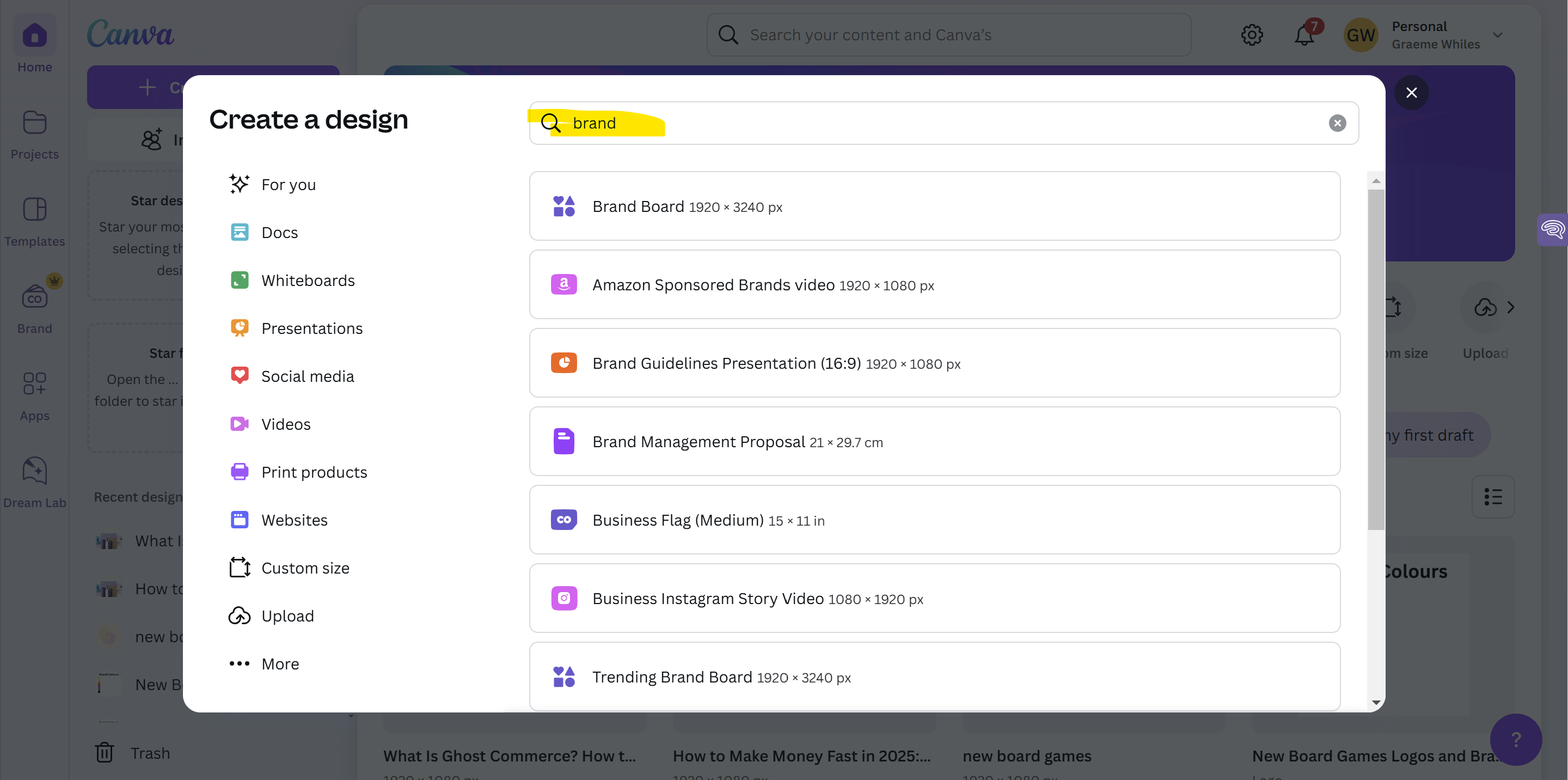
As you can see, the first option that comes up is ‘Brand Board’ click on that and you’ll immediately be shown some brilliant brand templates.
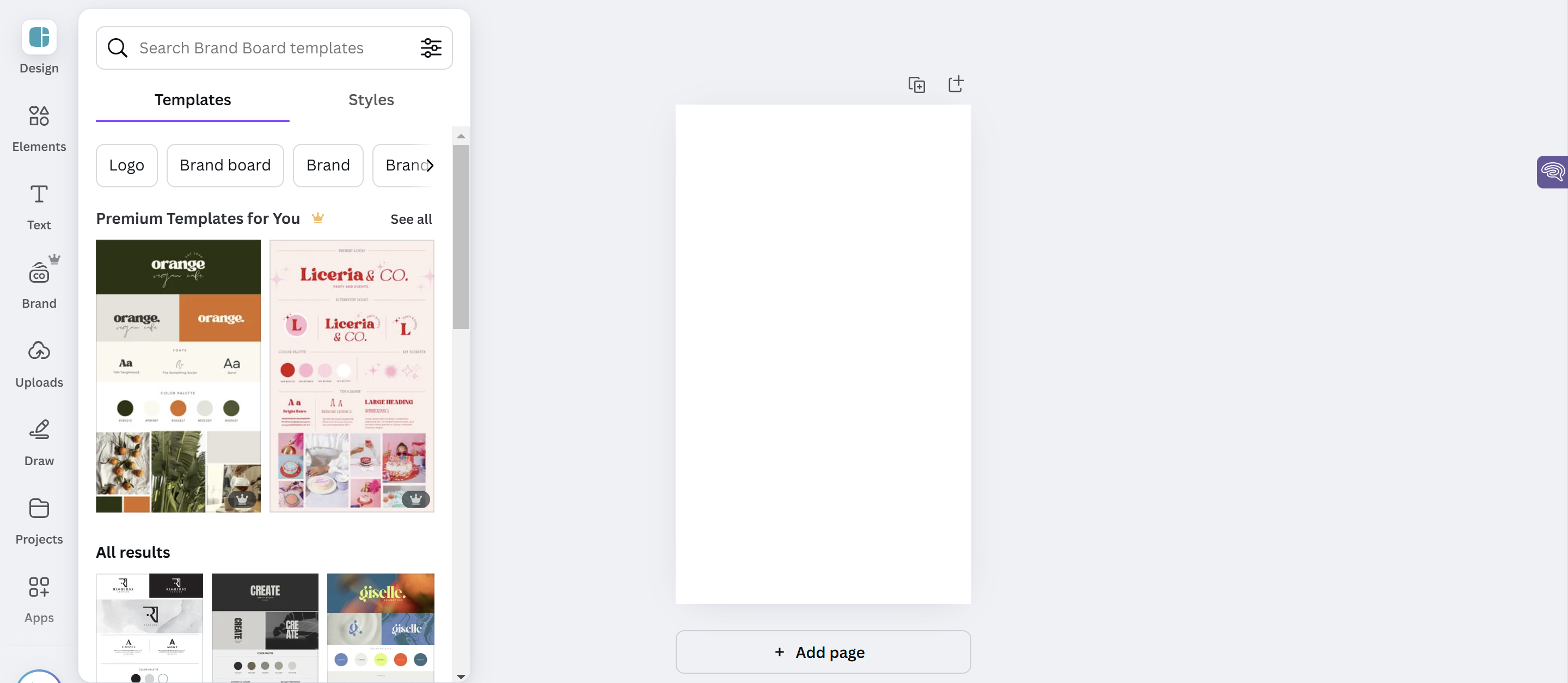
Let’s say I’m starting a new game company that focuses on video editing and graphic design for gaming companies, called ‘Gaming Graphics.’ A quick scroll and a few tweaks, and we have a great starting point for our brand!
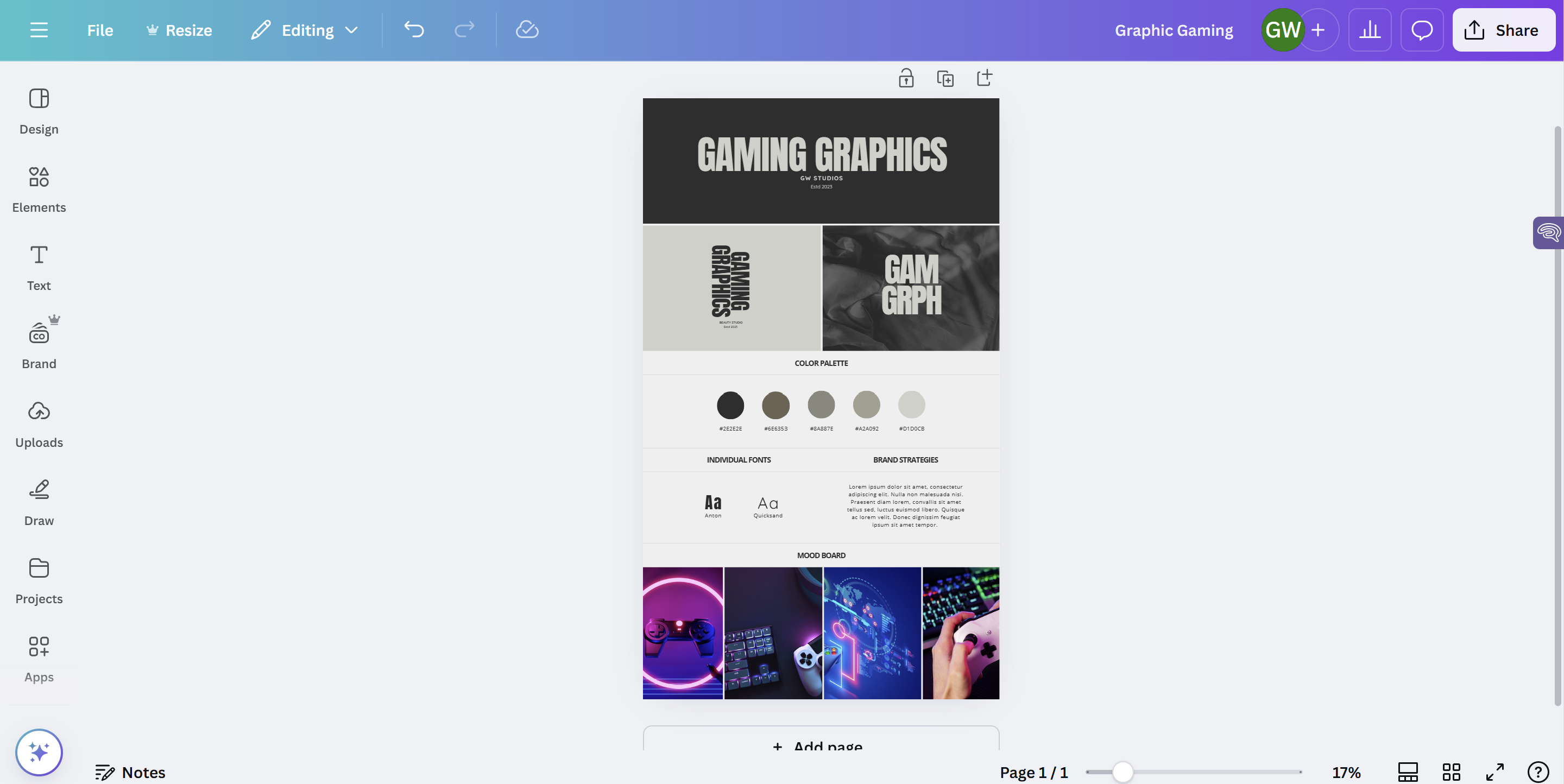
Canva is also brilliant for creating social media posts, with templates for TikToks, Instagram posts, stories, and Facebook posts.
Using our Gaming Graphics example, here are a few quickly worked-up posts based on our branding from above and the templates available in the platform.
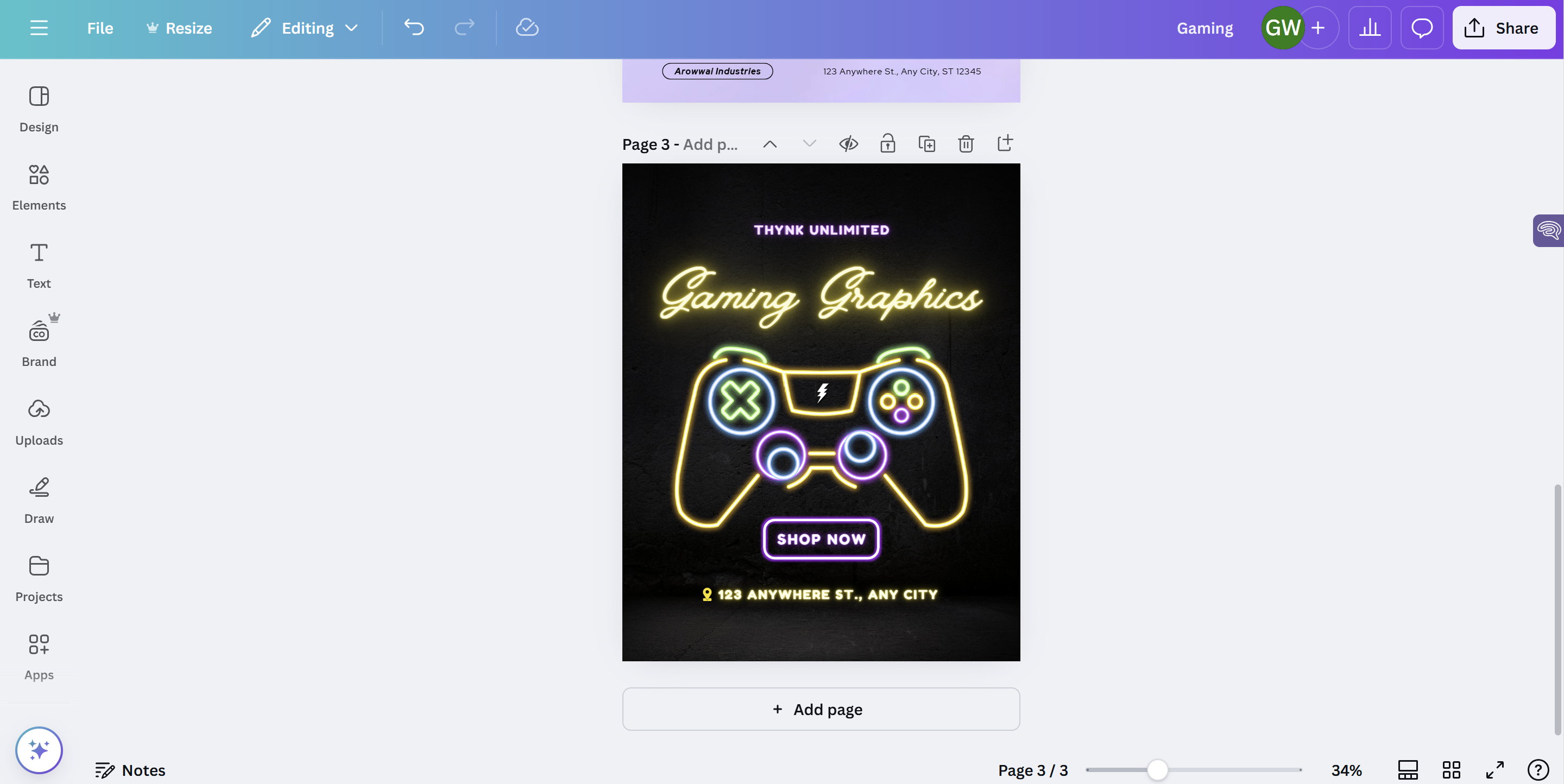
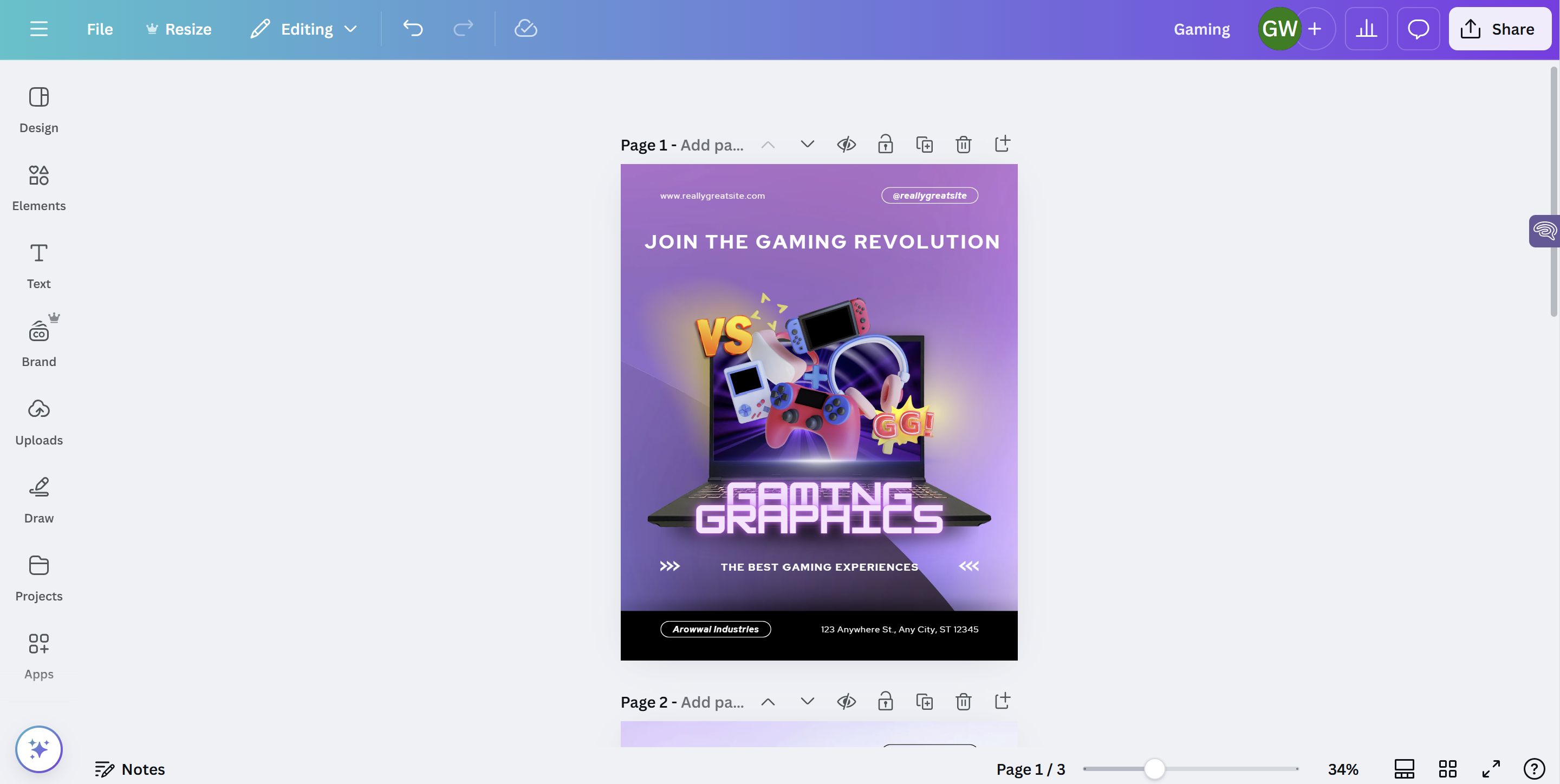
When it comes to creating high-value, truly engaging blog content, you need to be able to produce excellent blog headers and additional visuals, such as tables and infographics.
These keep your readers engaged, and also act as useful SEO signals for the Google algorithm as well!
With Canva, you can use the infographic or blog header Canva templates to create high-quality content, even if you don’t have a graphic design background.
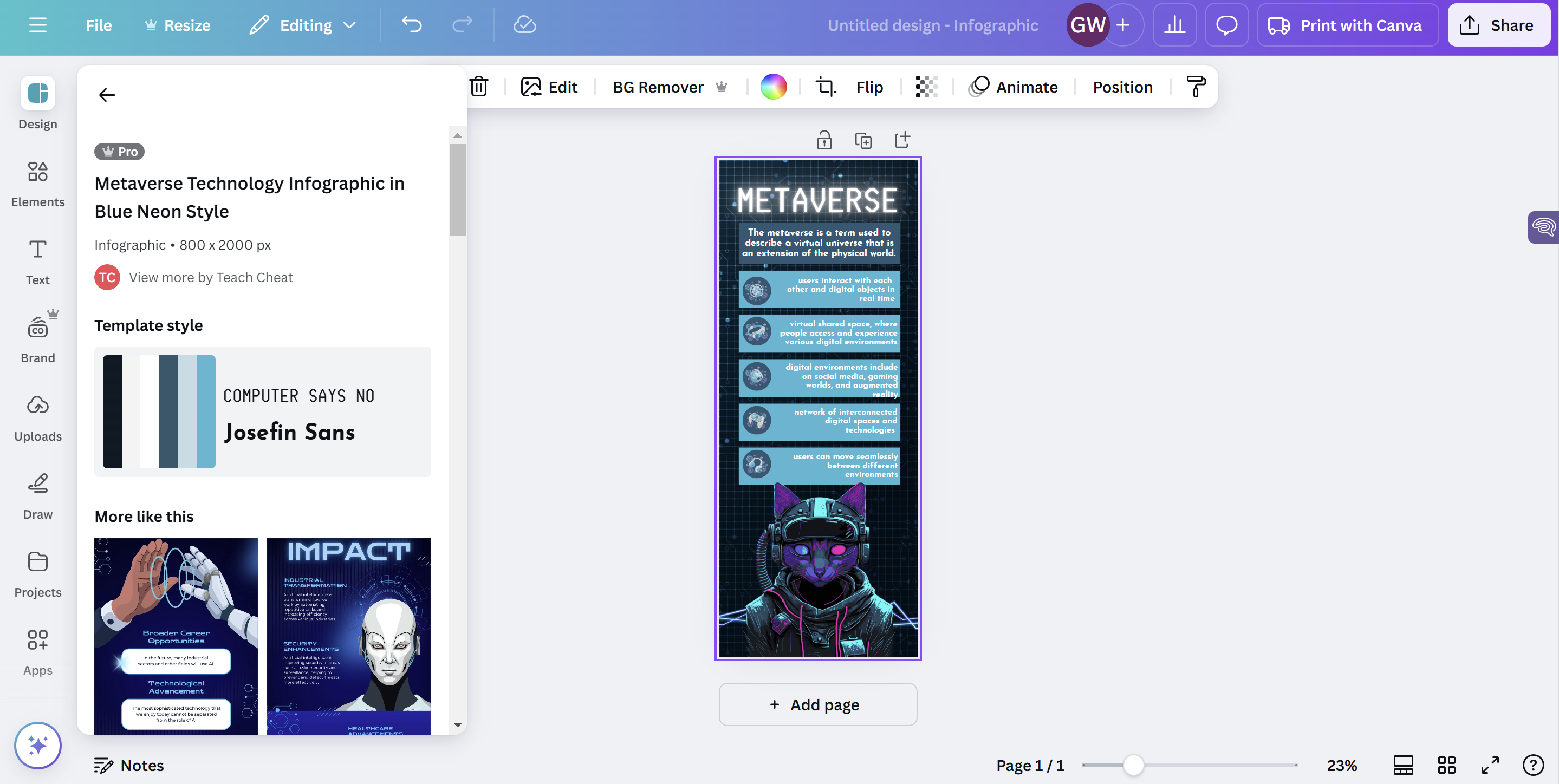
Another essential aspect of any marketing effort is a strong lead magnet, such as a free eBook. Again, it is essential that these pieces of marketing collateral look the part, and Canva can help ensure your work looks professional and of the highest quality.
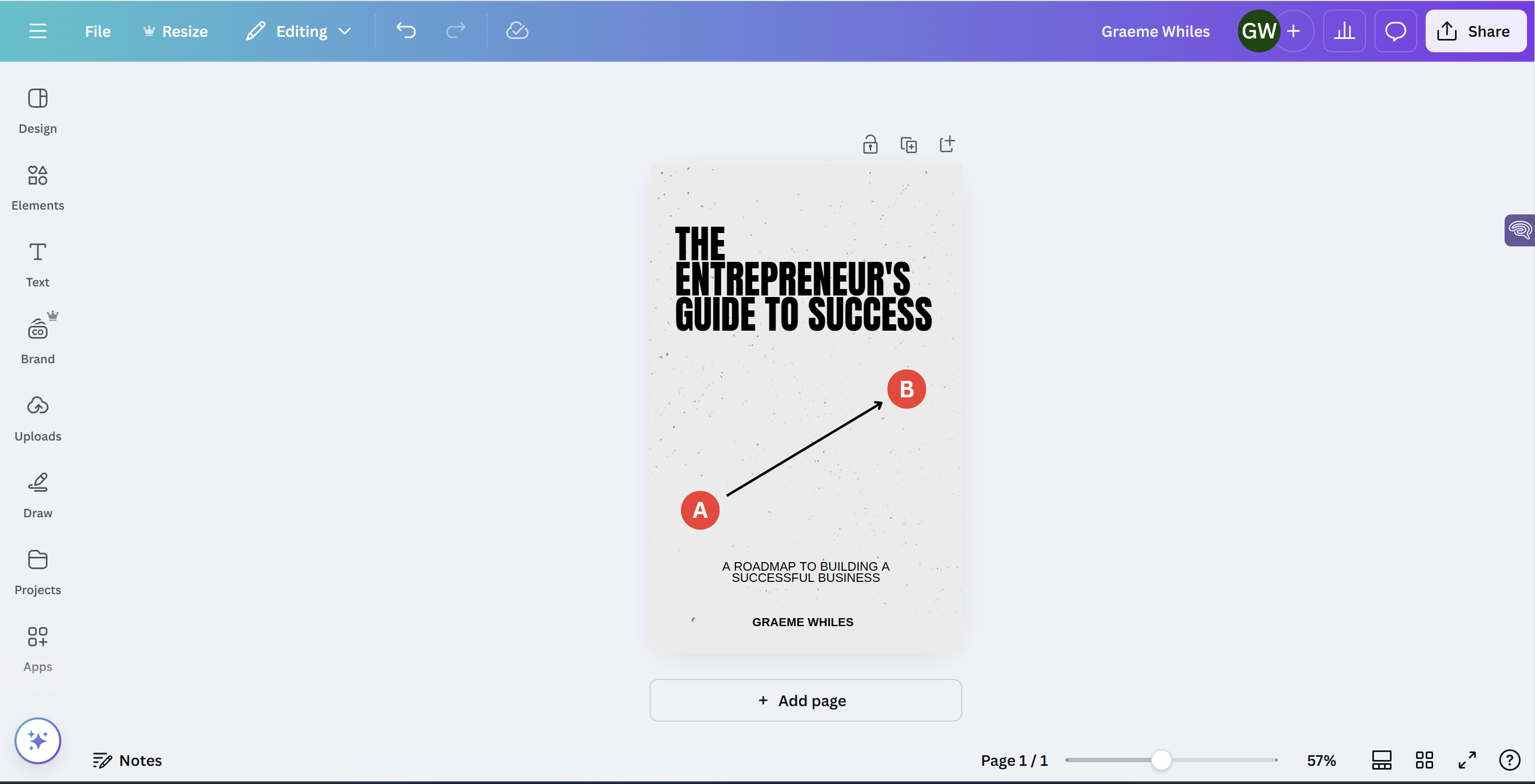
Fun fact: If you want to ensure your whole team has access to Canva, there are multi-person subscriptions available as well, called Canva Teams and Canva Enterprise (ideal for large organizations.).
In conclusion, Canva is a fantastic design tool, and one you should definitely consider adding to your marketing suite.
But to truly harness Canva’s potential, you need comprehensive guidance that covers all aspects of running a successful business.
That’s where Foundr+ can help.
For just $1, gain instant access to over 30 expert-led courses and 1,000+ lessons on branding, marketing, eCommerce, and beyond.
Ready to elevate your business in 2025? Take the next step and unlock your entrepreneurial potential with Foundr+ today.
The post What is Canva? 6 Ways to Use It For Your Business in 2025 appeared first on Foundr.
Trying to show off all your great digital content on social media can be tricky at the best of times.
Should you direct followers to your company website? What about a current offer? Or even your other social accounts?
Well, you have to choose, as you can only put one link in your bio!
Or can you?
With Linktree, you can create a landing page that your target audience can use to seamlessly move around your brand’s digital pages, allowing you to promote new offers, YouTube videos, a company contact page, and everything in between.
Here, I will answer the question ‘What is Linktree?’ As well as showing you how to set one up for your brand this year.
First off, let me explain what a Linktree is for those that are not aware. For those who already know this, you can skip to the next bit!
Linktree is a tool designed for social media users to add personalized links to their platforms, acting as a jumping-off point for their many other digital content.
You might think your favorite social media channel features multiple links, but most of them only allow one, making it hard for users to pick the right one to promote.

Linktree takes away that issue, taking fans and viewers to a Linktree landing page, where social media celebrities and brands can show several different links.

Linktree (not ‘link tree’) has a free and paid version, with the paid version offering advanced customization options, as many links as you want, and in-depth analytics data.
Fortunately, it’s incredibly easy to set up a Linktree landing page and start promoting various links.
Now that you know how to set up your Linktree link, one important question remains: is it actually worth doing? Does your website need all the important links in your Instagram bio, or can you make do with one link in bio?
One of the biggest and most obvious benefits of implementing a Linktree as part of your social media marketing efforts is that all of your links are easily accessible in one simple location.
Rather than asking customers to come through to your website and then try to get them to follow your other accounts, check out product drops, and other actions, you can do all of that from your brand’s Linktree landing page.
The other major benefit is that you can use Linktree to add links to almost every social media platform. Instagram, X, YouTube, and TikTok all only allow one bio link as standard, so this link-in bio tool really can come in handy!
Another major benefit? It’s completely free! For startups that are keeping their budget tight, you’ll be pleased to hear that you can set up and start using a Linktree account without spending any money. You will have to deal with the Linktree logo on your Linktree page, but as soon as you see the platform bringing you success, you can always upgrade to a pro version to customize colors, branding, and fonts.
One of the reasons I particularly like the Linktree website compared to the alternatives is that it has some very detailed tracking data and analytics.
Much like when your executing search engine optimization marketing, you want to ensure that your social media marketing efforts are actually driving traffic and conversions.
Linktree lets you gather insights into how many users are clicking each link, as well as where those link clocks are coming from.
As a paid plan user, you can also prioritize and schedule lists, ensuring certain ones go live at specific times and also get removed automatically at a later date. This is a fantastic tool for brands running offer periods where they want to launch a limited-time deal to generate interest.
Of course, if Linktree isn’t quite to your liking but you’re still interested in the concept in general, there are a few other options to consider:
Milkshake: The best alternative, in my opinion, as I feel like the user interface is the easiest, especially on mobile, where most of your clicks will be coming from.
Beacons: Another good option, mainly as it offers some minor customizations as part of a free plan, as well as arguably providing more advanced analytics than Linktree.
Koji: Not my personal favorite, but it offers customizable storefronts as well as some interesting built-in mini-apps.
Creating a Linktree? Piece of cake.
Making it a success? That takes a little more skill!
After all, if you’re going to go through the effort of setting one up, then you must ensure it is optimized for maximum engagement and conversions.
To do this:
Want to maximize your online presence in 2025? Learn how to drive traffic, increase engagement, and grow your brand.
For just $1, get instant access to 30+ expert-led courses and 1,000+ lessons designed to help you master Linktree, social media marketing, and online branding. Join a community of forward-thinking entrepreneurs who are building powerful digital presences.
Yes, Linktree allows you to add multiple links to your profile. You can customize the order, add thumbnails, and include icons to make all your links more engaging.
Yes, Linktree offers a free version that includes basic features like unlimited links and some customization options. However, premium plans provide advanced features like analytics, custom branding on your Linktree landing page, and integrations.
Linktree can be used on Instagram, TikTok, Twitter (X), Facebook, YouTube, LinkedIn, and other platforms where you can share a single bio link. It helps you share multiple links in one easy-to-access landing page for social media users.
The post What Is Linktree? How to Set One Up in 2025 appeared first on Foundr.
What has no physical presence and haunts every entrepreneur’s dreams?
No, I’m not talking about actual ghosts.
I’m talking about building a ghost e-commerce brand!
Many entrepreneurs dream of opening their own ecommerce store, selling products and services online, and growing their own businesses in the process.
However, one major barrier is that a physical inventory can be too much of an upfront cost, not to mention the issues that can arise with inventory management.
But what about exploring a simpler business model like ghost commerce?
Here, I will take you through the concept of ghost commerce business, as well as highlight some of the major upsides and potential drawbacks to consider before going all in on this unique twist on traditional ecommerce.
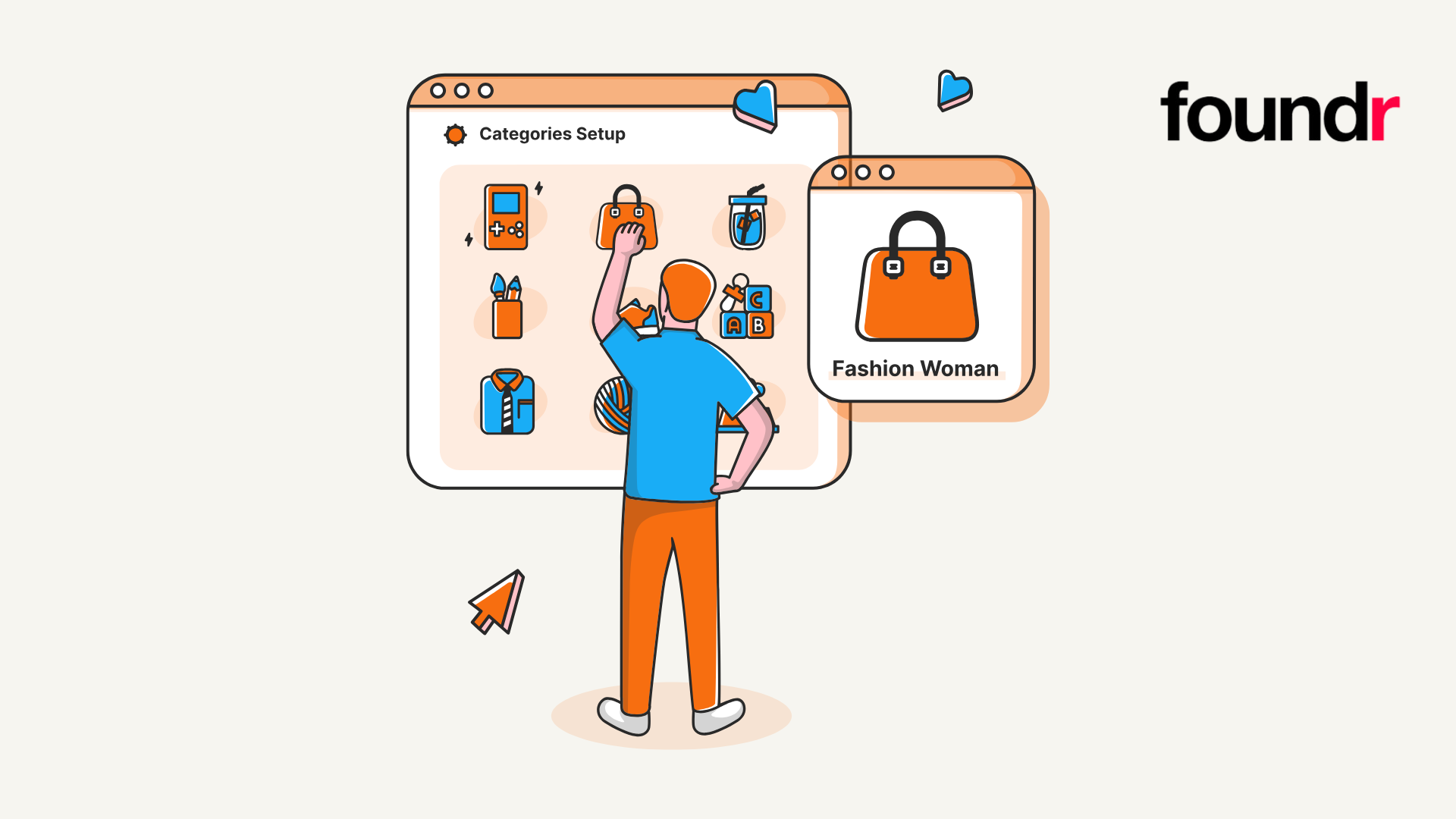
First, let me explain what I mean by the term ‘ghost commerce.’ Ghost commerce is the phrase used to describe running an online store that has no physical store for shoppers to visit or any physical inventory to manage.
Instead, a ghost commerce business sells products or services from third-party manufacturers.
When reading that description of ghost commerce, chances are a few benefits immediately come to mind.
First and foremost, the barrier to entry is almost non-existent! You have the potential to run a ghost commerce store from anywhere, without worrying about creating a product, managing inventory, or even fulfilling orders.
That means the upfront costs are significantly lower than traditional ecommerce businesses.
You can also act much quicker and adapt to changes in trends, rotating products in and out based on consumer behavior.
Rather than waiting for manufacturers to create new products and set up the line of production, ghost commerce business owners can simply host another third-party product at a minute’s notice.
Lastly, the ghost commerce business model is also ideal for anyone searching for the holy grail: passive income.
While no business venture is ever truly passive, ghost commerce requires minimal day-to-day maintenance, as you can automate the process of passing order information to suppliers and vice versa.
Sounds pretty great, right?
Well, there are some potential drawbacks to consider as well.
For starters, ghost commerce means you have much less control over the quality of the products and shipping process, which means you’re relying heavily on the partners you work with.
In many instances, this won’t be an issue, but a bad customer experience could lead to negative feedback and a lack of repeat purchases.
As you’re not the owner of the products, you also need to adjust your expectations when it comes to profit margins.
As a ghost commerce owner, you’ll only be able to charge a small markup, meaning you’ll need to grow to become a large brand before the income earned becomes significant.
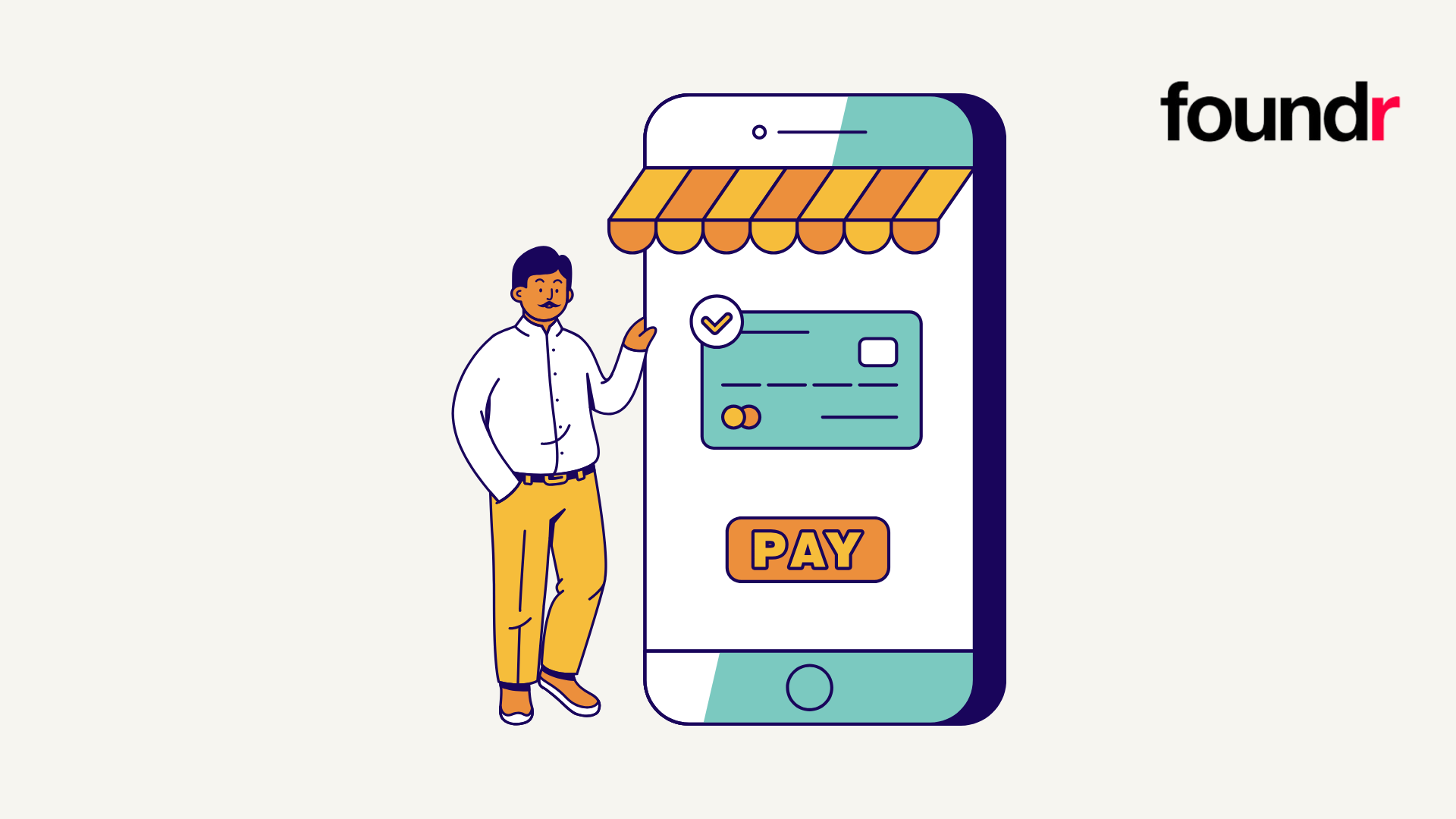
With that in mind, let’s take a look at the steps you need to take to give your ghost commerce business the best chance of succeeding. With tight profit margins, ensuring you put your brand in the best possible position is crucial.
First and foremost, look for a niche that you know very well or at least feel very passionately about.
Niching down can sometimes feel like a limiting decision as it cuts down your audience size, but as a new brand, it is often impossible to compete with a generalist approach. Instead, focus on trying to build a loyal customer base within your niche. The key to long-term success is repeat business and word of mouth, both of which can be achieved by choosing a specific niche.
Not only that, but picking a niche you know well will ensure you remain passionate about your business venture and also allow you to use your inside knowledge of current trends to promote products you know your target audience will want to see.
Optimizing whilst you go through the online store setup is crucial for getting all your digital ducks in a row early. It can be tempting to quickly set up your store, skipping key aspects like meta descriptions and alt-tag text on imagery, in an attempt to go live as quickly as possible.
However, optimizing as you go ensures you won’t need to go back and troubleshoot issues after going live, which can be difficult to do and will cost you valuable time. Take the necessary steps to conduct search engine optimization during the setup process, and your future self will be very grateful!
Another crucial step in ensuring your setup for success is to partner yourself with reliable suppliers. As mentioned above, as a ghost commerce business, you have minimal control over the delivery of your products, yet any negative customer reviews will impact your business and not the manufacturer.
Therefore, you must control the controllables! If a manufacturer’s rates or lead times seem too good to be true, it’s best to steer clear and stick to suppliers that have a strong track record for hitting their deadlines and meeting customer expectations.
Laslty, ensure that all of your marketing strategies are tailored specifically to your target audience. It can be tempting to try and attract the most people with your efforts, but that generalist approach will likely mean you attract no one.
Instead, lean heavily into your niche, conducting targetted social media ads that reach them specifically, and focusing on PPC topics that they search.
One of the most obvious examples is via your SEO efforts. If, for example, your ghost commerce business is selling functional fitness sneakers, it can be tempting to write content for your website that focuses on the keyword phrase ‘sneakers.’
After all, as you can see below, there is plenty of traffic for that search term:
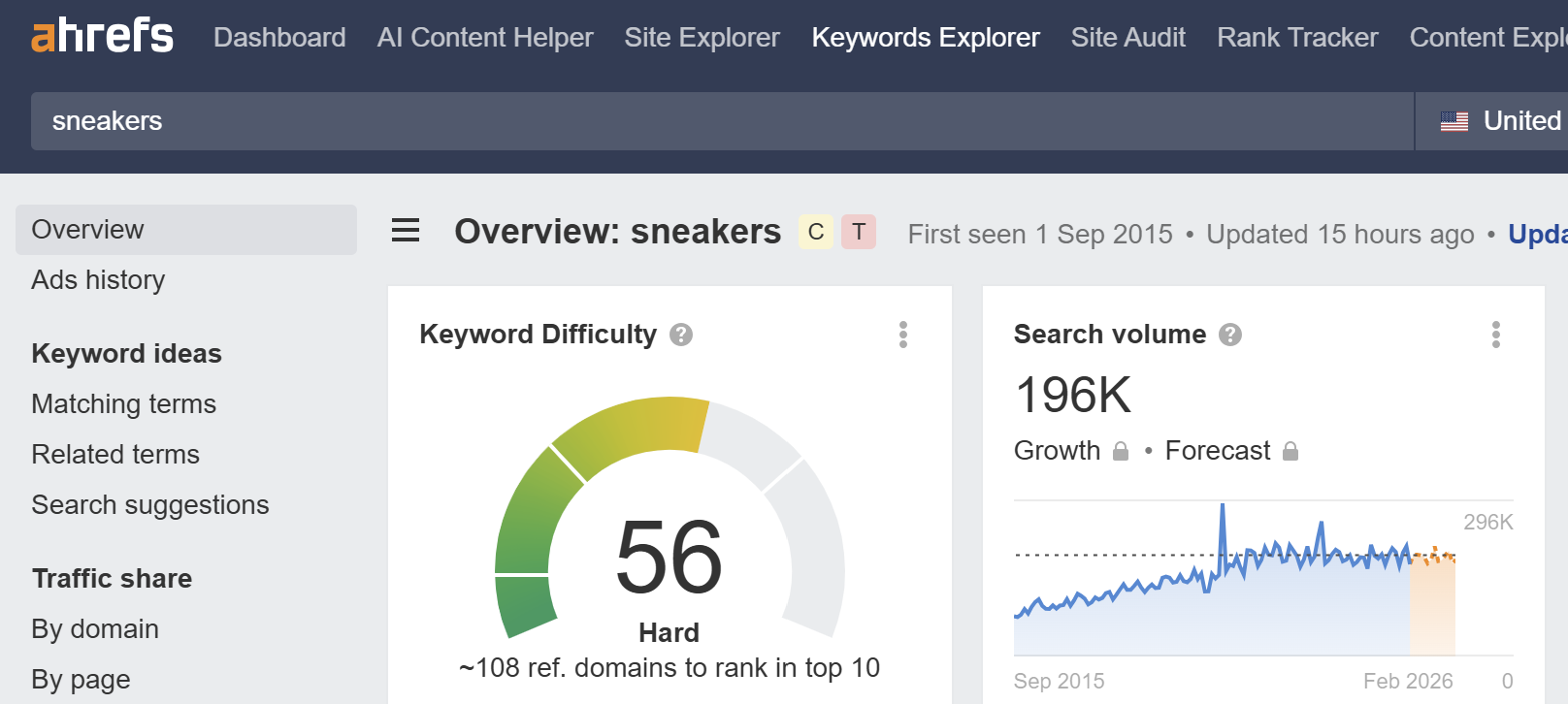
However, it is also a very competitive keyword (56) and you will be competing with leading brands like Adidas and Nike.
Instead, opt for a search term like ‘functional fitness’ which has less search volume (4.1k) but also much lower competition (23).
As a new website, your domain rating will be very low, so tackling topics with less difficulty is crucial as you grow your brand.
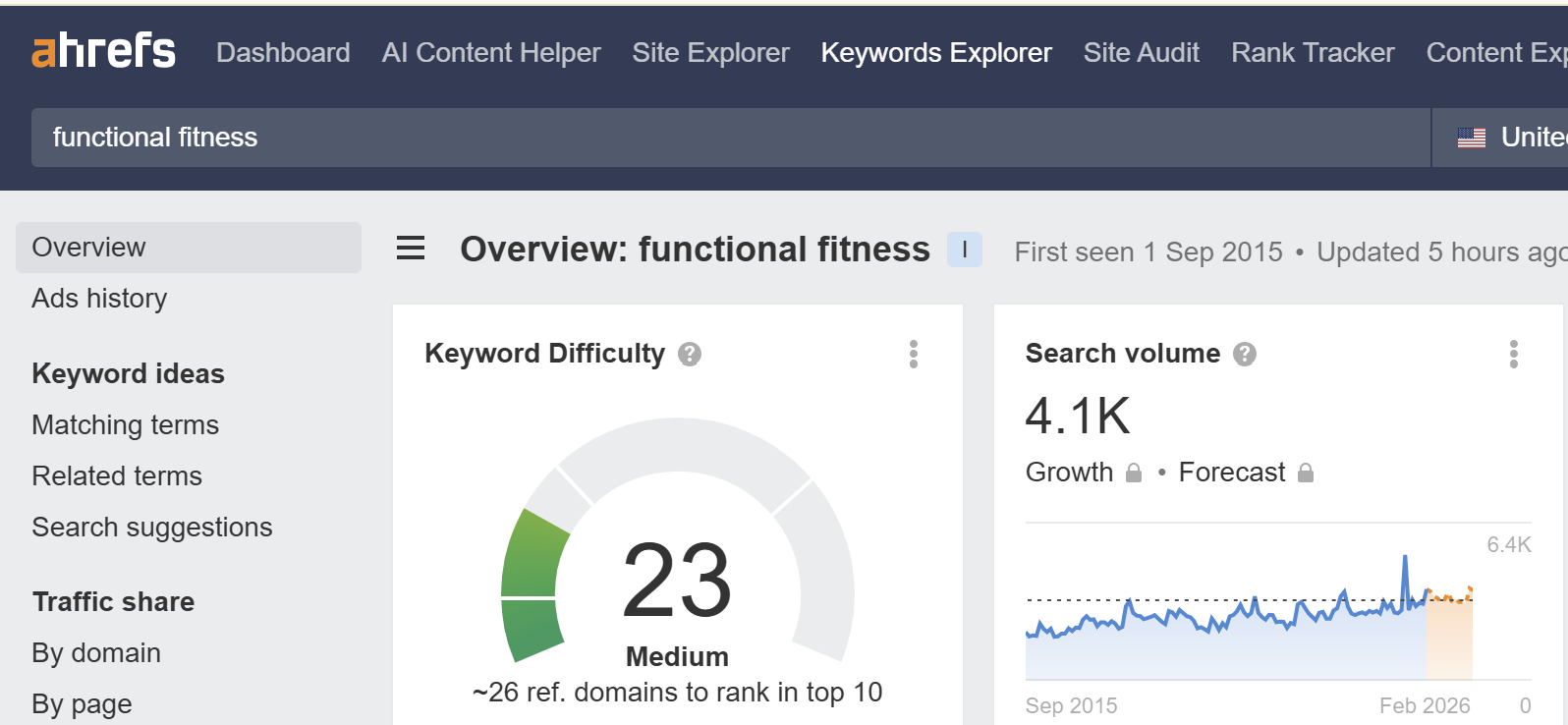
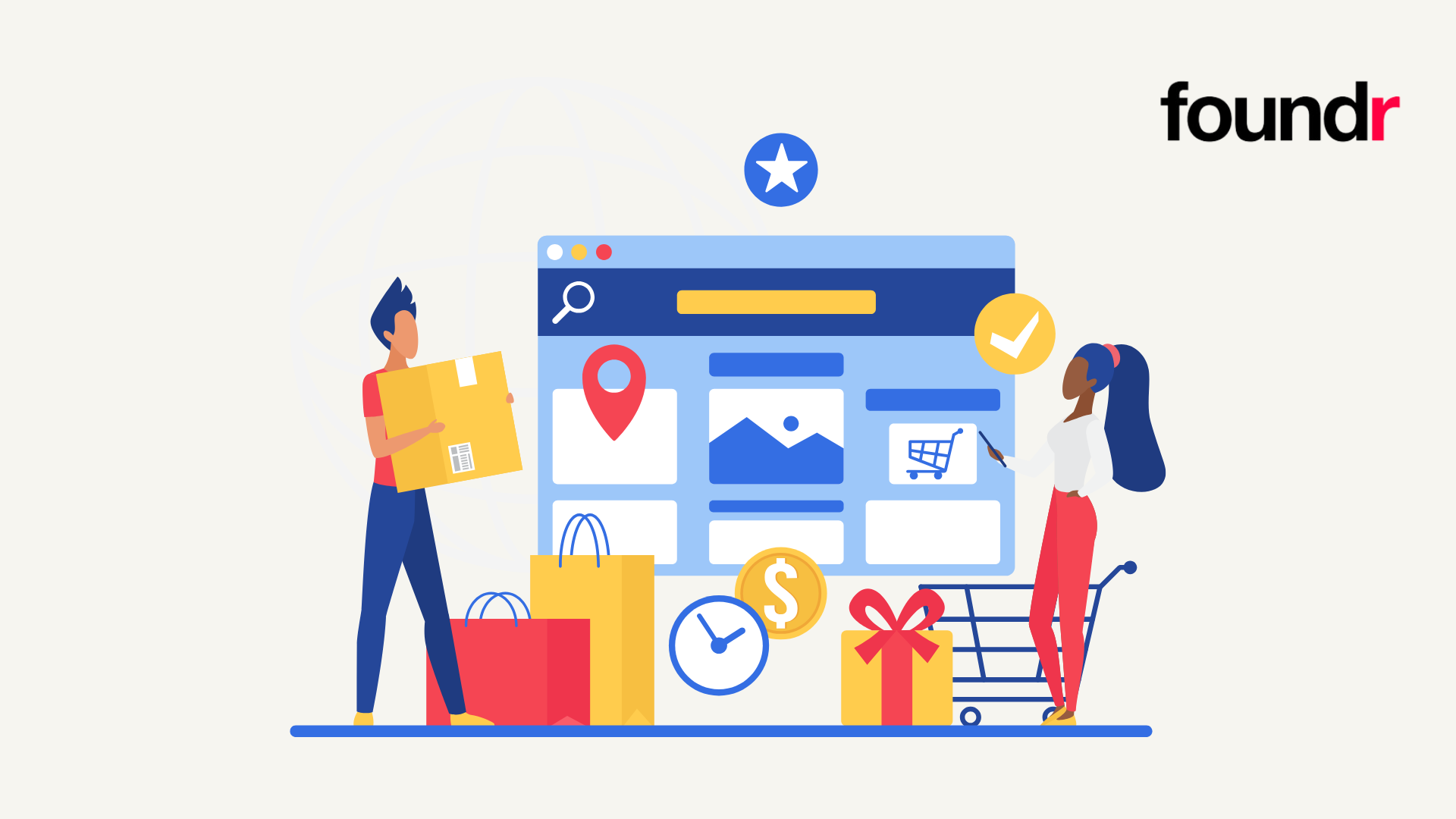
Ghost commerce is one of the most low-risk, high-reward ways to start an online business—no inventory, no upfront stock costs, and no need to handle logistics. But to succeed, you need the right strategies, suppliers, and marketing tactics to make it work.
That’s where Foundr+ comes in. For just $1, you’ll get instant access to 30+ expert-led courses and 1,000+ lessons on eCommerce, branding, digital marketing, and supplier sourcing—everything you need to launch and scale your ghost commerce brand.
Start building your ghost commerce brand today for just $1.
To identify your target audience, you must evaluate your competitor’s content marketing strategies, see who they’re going after, and identify common traits that you can then bake into your ideal customer profiles. As you start to make sales, you can then look for common traits in your purchasers to make more specific target audiences.
Ecommerce ghost commerce only works with a strong online presence and plenty of visitors. To get more people to your site, ensure your content marketing efforts are aligned, and you must be willing to spend on advertising through social media accounts or via PPC.
The post What is Ghost Commerce? The Definitive Guide appeared first on Foundr.
Interested in learning how to make money fast in 2025?
The good news is, it’s not as difficult as you may think.
And no, this isn’t another article about how you can ‘earn passive income by buying our AI software’.
These are real, unique ways that you can tap into online money making opportunities that will help you earn quickly, and also for the long-term.
Before I dive into some clever ways that you can make money quickly in 2025, I just want to quickly explain how I researched and pulled together this list.
After all, there are lots of ways to make money online quickly, but some of those are not quite as morally correct (think crypto rug pulls, sports gambling, or selling online courses that are just a collation for freely accessible content).
I wanted to provide you with real ways to make money fast, and from my market research, I’ve come up with six options that are not only great for short-term gains but also long-term success.
Many of the below also require limited additional knowledge, and all you need is a strong internet connection, a few digital marketing skills, and some old-fashioned hard work!
With that in mind, let’s take a look at six unique ways to earn money online. Some have minimal upfront investment, whereas others will require you to put in some additional extra money and time. However, these ideas all aim to provide you with unique ideas for your own online store rather than simply telling you to sell online courses or take part in dropshipping.
There’s a ton of information on how to earn money in those ways, so let’s take a look at some more interesting options!

It can be difficult to get your products to stand out in today’s overcrowded digital marketplace. Sometimes new products can take a while to gain the traffic, reputation, and customer reviews needed to become a popular product.
However, there is a way that you can skip the digital queue.
Brands have seen great success limiting stock, drumming up demand through scarcity, and earning money fast.
Not only that but limiting stock also ensures you never get caught out with a lack of stock compared to demand, which is a lovely bonus!
The fitness shoe company R.A.D has done this really well, rising from relative obscurity to become the must-have functional fitness shoe in just a couple of years.
Here’s an example of their upcoming drop, where the product is not currently available and will sell out in a matter of minutes, much like coveted gig tickets for a Dolly Parton reunion tour would.

And here’s a traffic graph highlighting the brand’s growth in recent years since taking this approach to product launches.
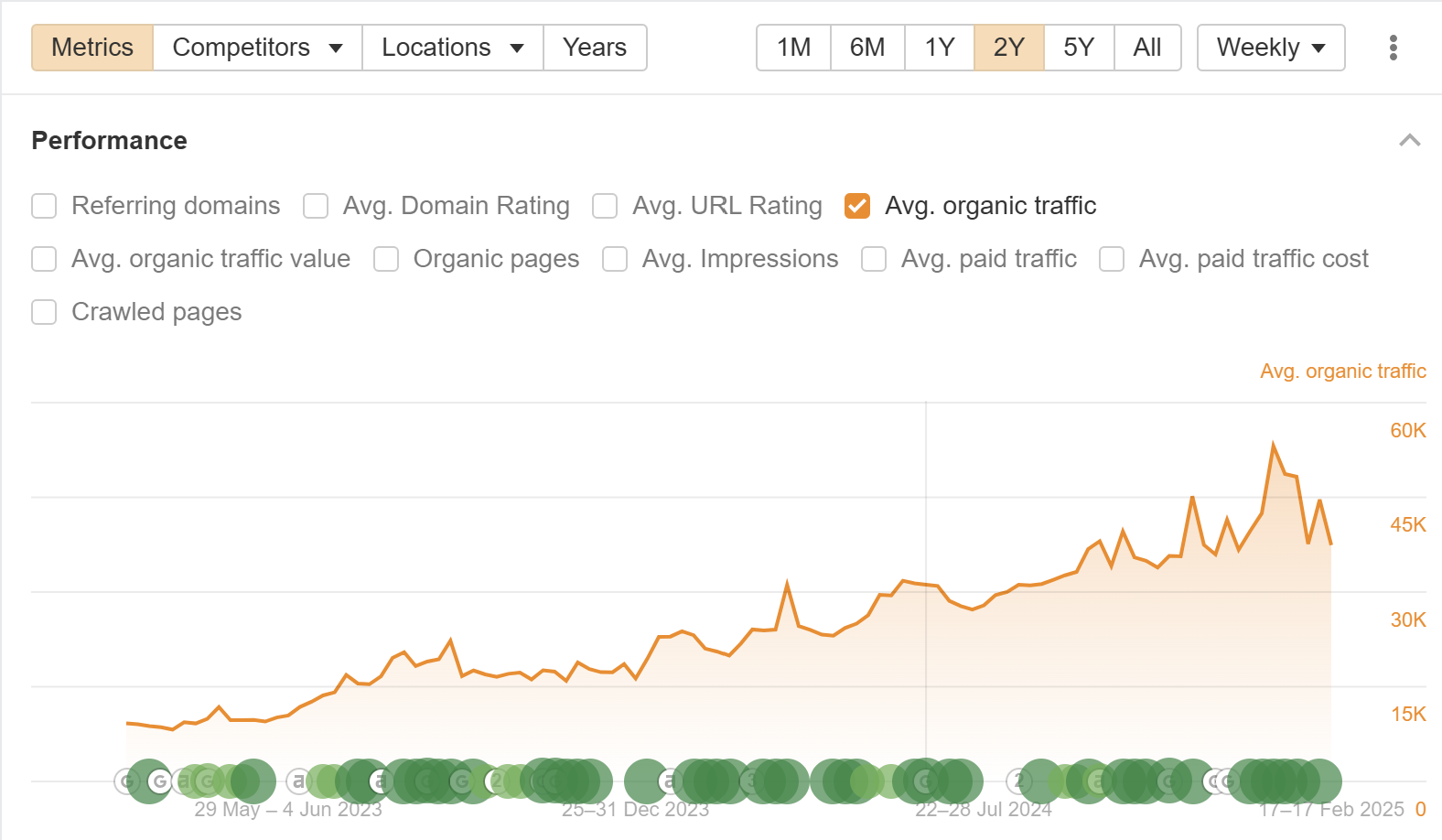
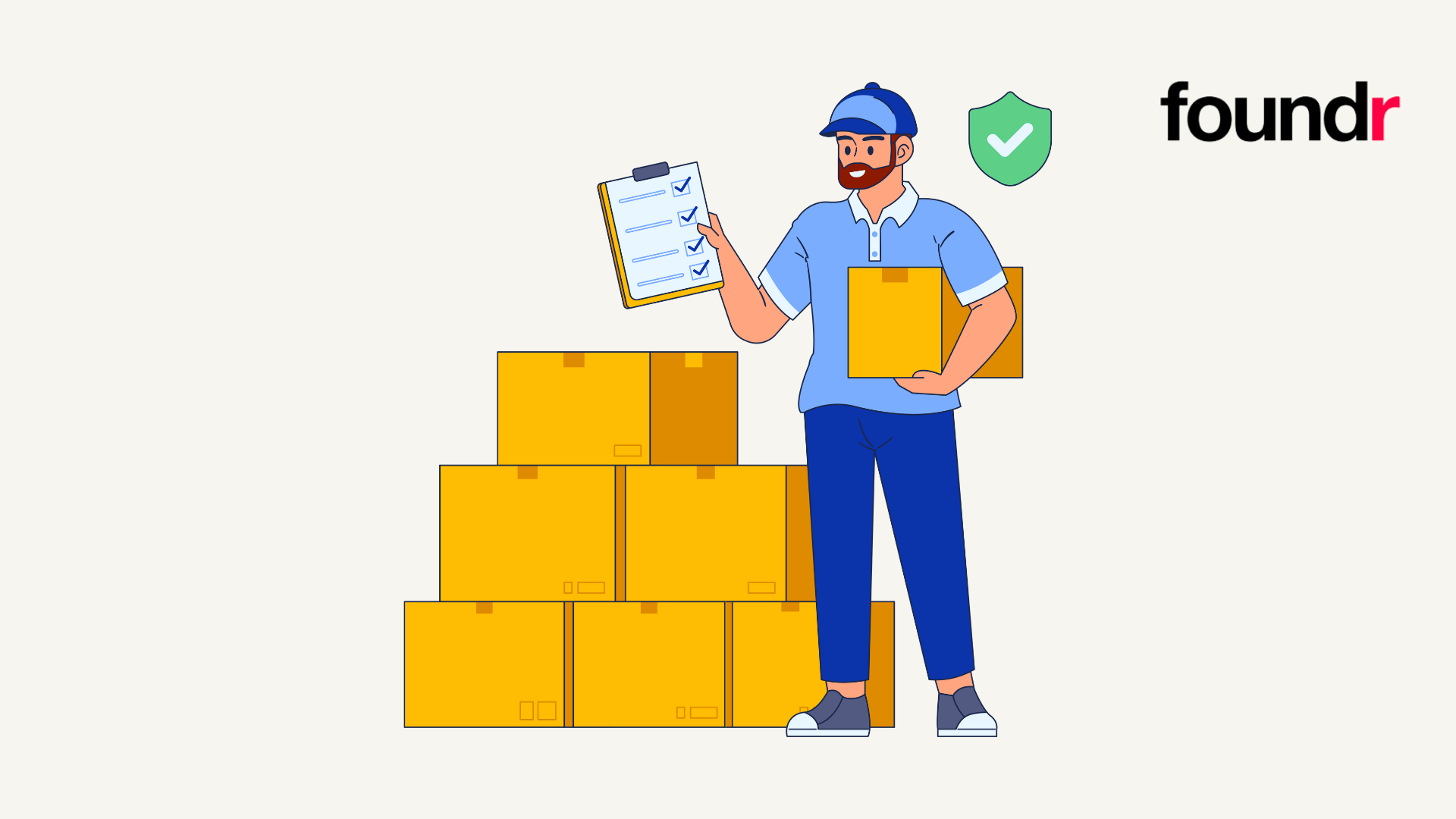
Another way to help get your foot in the digital door and start making money quickly is by focusing on trend-specific products.
Rather than setting up an online business that focuses on one specific niche or industry, one way to ensure traffic is to quickly adapt to current trends, selling products or services that are in high demand. One of the benefits of being small team or independent business is that you can be much more flexible, adaptable, and quick than market-leading businesses.
Thanks to advances in technology, you don’t need any web development skills to quickly set up a high-quality shop with sites like Shopify. For this venture to be successful, you’ll need to ensure you keep abreast with any new trends, and also find yourself a reliable supplier than can produce the products you need, at a timeframe that ensures they are still relevant.
For example, remember fidget spinners? One entrepreneurial teen managed to make hundreds of thousands of dollars by jumping on the craze, setting up an online shop and gaining large volumes of traffic almost overnight.

However, if the generalist approach isn’t right for you, niching down could be a great alternative. Creating a business model that focuses on a very specific niche can seem limiting, but it’s a fantastic way to build a strong online presence and brand loyalty.
For example, your brand may start as one that focuses on high-quality coffee beans, but in the future that can easily branch out into a brand that focuses on all kinds of coffee, tea, and other relevant products.
Subscription boxes are also an excellent choice because they help brands get a much better understand of monthly demand, not to mention a consistent income each month. They take a little bit of effort and upfront costs, but one of the benefits of subscription models is that once everything is in place, the process requires minimal tweaks and time managing.
I actually covered How to Build a Subscription Box Business in a separate article, which dives into the subject in greater detail.
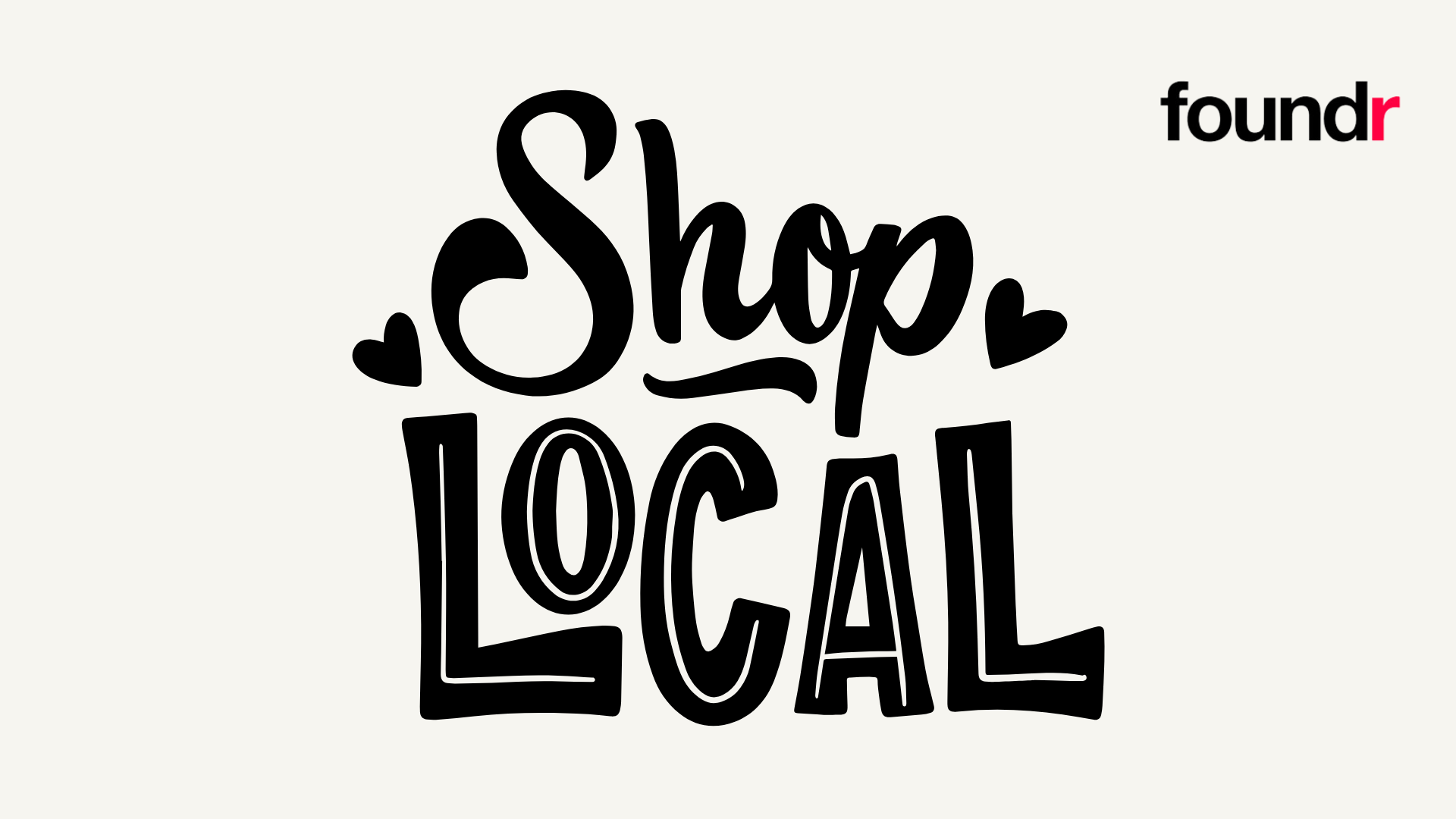
The allure of purchasing local produce has never been more attractive for consumers.
It is easier than ever for consumers to get a taste of any part of the world, without ever having to leave their home!
As a brand, the best way to capitalize on this is to lean into your local produce, and sell it on a global scale.
For example, if you’re based Texas, a quick ChatGPT search can help you identify what type of products could gain quick traction.

Who is going to resist the chance to purchase BBQ sauce, made and distributed directly from the Lone Star State?
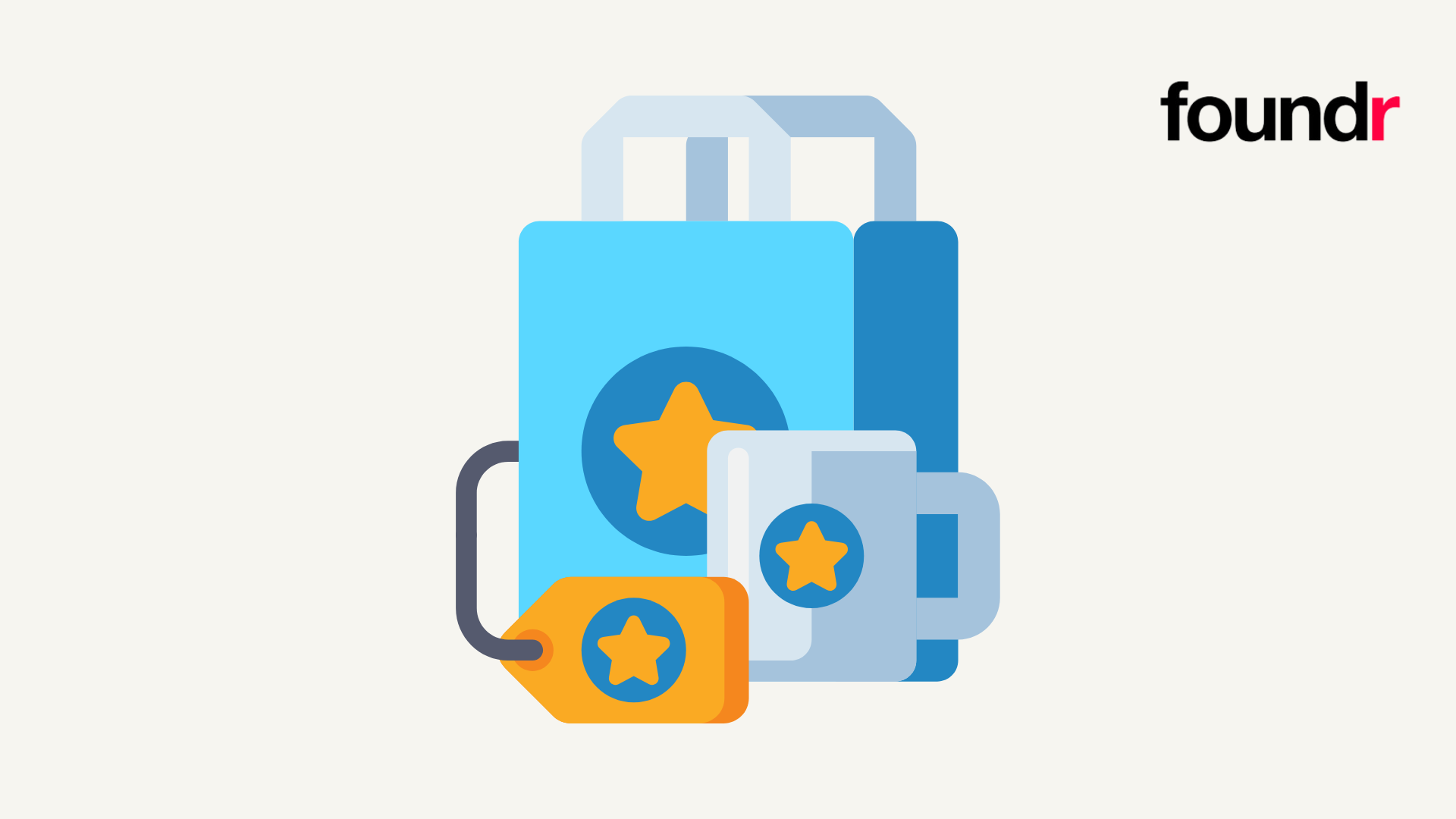
For companies that already have a following of sorts, one way to quickly capitalize on that is by created branded merch.
For several customers, purchasing branded merch is their way of showing their support for the brand, while also getting their hands on something unique that helps them show off their style and interests.
I recently explained How to Make and Sell Merch For Your Brand in this detailed article. If your business is in a position to start profiting from branded products, be sure to check it out!

Lastly, while every other business is trying to sell to customers, why not flip the script, and focus on selling to other businesses instead?
For example, you could start selling custom office supplies for other startups, or branded packing for small businesses.
One of the biggest benefits of pitching your products to businesses is that they are much liklier to purchase in bulk, ensuring you can earn money quickly that can then be reinvested back into your business.
If you’re serious about making money online and want expert guidance to help accelerate your success, then Foundr+ is the perfect solution. For just $1, you’ll get 14 days of live coaching, direct support from real experts, access to an engaged community of 30,000+ entrepreneurs, and over 30 business courses designed to fast-track your business growth.
Whether you’re launching a niche subscription box, branded merch, or a trend-driven online store, having the right strategies in place can make all the difference.
Claim your $1 trial now and start scaling your business today.
While it is possible, it is very difficult, most notably due to the saturation of the market, plus the bad reputation that online courses have gained after many poorly put-together courses have let consumers down before.
For businesses that already have a following, you can identify your target audience by tracking common traits in your existing customer base. For businesses that are still starting out, use a combination of ChatGPT and your competitor’s customer base to identify who your ideal audience is.
Each person’s situation is completely different, but we would recommend that you only take this step if you are confident that your essential payments are all covered, at least until your new business is up and running.
The post How to Make Money Fast in 2025: 6 Easy Options appeared first on Foundr.
When running a startup or small business, finding new revenue avenues can be significantly beneficial.
After all, building a brand isn’t always cheap, so any way that you can generate additional income should be welcomed with both arms.
That’s exactly what high-quality merch can do for you! Here, I’ll show you how to make and sell merch for your brand in 2025, expanding your business and making some additional funds along the way.
Before we jump straight in, I wanted to quickly touch on what I mean by the term merch. Merch is a common abbreviation for merchandise, and you’ll likely hear influencers, YouTubers, and streamers refer to it as one of their main sources of income.
In simple terms, the phrase ‘merch’ refers to any products that are branded in line with a company or popular personality and sold to fans of that business or person.
While it has often been popular with social media celebrities, it has become more and more popular option for more mainstream businesses as well, most notably coffee shops, bookstores, or other locally run businesses.
The popularity of merch doesn’t just come from one key reason; there are actually several reasons why customers would opt to purchase a brand’s merchandise.
One of the main reasons is that it is a great way to show support and loyalty to that brand and allows them to feel a little bit closer to the inner workings of the business.
That’s why merch is so popular with shops that operate locally in the community, as people appreciate that running a small business can be challenging and purchase merch as a show of their appreciation.
It also offers sentimental value, as it can be seen as a memento from a memorable experience, such as a t-shirt from a concert of your favorite brand. Speaking from experience, I have several Sam Fender t-shirts that fill this reason, and also a t-shirt from a coffee shop I have many fond memories for that closed down in 2020.
It also allows customers to not just show support but also personality. People want to wear clothes that represent who they are and what they like, and what better way to do that than by purchasing merch from their favorite brands?
As you can imagine, setting up a successful merchandise shop can be incredibly successful. Because of this, many brands and influencers are also attempting to get into the merch game, so it is crucial that you create the sort of products your audience want to see, or you will struggle to get a foothold in the market.
With all that in mind, here is a very quick six-step process that you can follow to start selling merch successfully. For a more detailed approach to selling and scaling, be sure to check out Gretta’s fantastic course on the subject in this free training video.
Before you go ahead and plunge valuable funds into your merch adventure, you need to ensure that you have an audience that will be receptive to what you put out.
After all, your customers might be happy with your IT solutions, but that doesn’t necessarily mean they want your brand plastered on their tote bags and mugs.
You must, therefore, ensure you have established a clear and exciting brand identify first. That’s more than just an eye-catching logo, though. It’s also the image and personality that is related to your brand and what people think about when they see your branding.
Some of the most successful merch sellers are trendy coffee shops, popular influencers, and cool content creators. That’s because merch for these brands allows customers to show off their love of the brand while also projecting to other people that they are cool because they are fans of those brands and personalities.
Here’s a quick guide to creating a quality, authentic brand.
Once you’ve nailed down your branding, it’s time to get more familiar with your audience. Understanding your audience’s behavior, wants, and needs will greatly help when it comes to choosing the type of products you should be selling.
If you already have a group of loyal customers, gathering this information should be quite simple and can be done by reviewing feedback, reviews, and engagements on social media.
If you haven’t got a large dataset just yet, you can pull together all the information you have on your existing audience, running it through ChatGPT to glean more insights and expand on the limited data you have available.
If you do have the audience size necessary, running surveys or asking for comments on social posts is a great way to take the guesswork out of product selection.
Failing that, review your current customers, establish their other likes and dislikes in your industry, and see what those competitors seem to be selling and to what level of success they are doing so.
Next, it’s time to pull those product ideas together and identify what you want to sell. While most of the information you will use for this will be based on audience preference, you will also need to factor in costs, profit margins, and availability.
Melisa Vong has a fantastic free masterclass on How to Find a ‘Hot Product’ that you should definitely check out for inspiration!
Here’s a quick breakdown of some of the most popular choices that many businesses and individuals opt for:
This step is perhaps the trickiest, as it doesn’t matter what merch you have lined up if the designs are no good! Create designs that you know will resonate with your target audience, leaning heavily on your brand colors and only using the highest quality imagery and graphics.
I always suggest to brands that they keep things as simple as possible, focusing on clear and easy-to-read fonts and easy-to-recognize designs.
Once you’re happy with your designs, it can be very tempting to quickly rush to get your products to market, but this is one of the biggest mistakes that you can make.
After all, what if you’ve made a horrific spelling error? Suddenly, your ‘Getting Your Ducks in a Row’ hats might not be so child-friendly!
To prevent such expensive problems from arising, chat to friends and family for honest advice on your efforts. You need to choose people that you trust will tell you what they really think, as purchasing stock is not cheap.
Feedback is the best way to identify what is most likely to work and what isn’t, and gives you the confidence you need to sell your products online.
Once you’ve got your honest feedback, swallowed your pride, and made any necessary changes, it’s time to turn your merch ideas into tangible products!
When it comes to producing and stocking your merch, you have two main options to choose from: Print on demand or via a Manufacturer.
Each has its own benefits, so it’s important to research both in as much detail as possible. Print-on-demand allows you to keep costs low and reduces any inventory concerns you may have, which can be very helpful for anyone who is unsure how well their merch will be received.
For those who are confident they will sell their merch quite quickly, you may want to opt for a manufacturer, as purchasing in bulk is often significantly cheaper than a print-on-demand alternative.
Want to learn more about creating the perfect product blueprint? Check out Kian Golzari’s brilliant course on this subject.
Want to launch a successful merch brand? Foundr+ gives you everything you need to make it happen. For just $1, you’ll get instant access to 30+ expert-led courses and 1,000+ lessons covering branding, design, eCommerce, and marketing.
From crafting standout designs to choosing the right suppliers and growing your audience, Foundr+ equips you with the tools, strategies, and community support to build a profitable merch business.
Don’t wait—start creating and selling your merch today.
The post How to Make and Sell Merch For Your Brand in 2025 appeared first on Foundr.
Starting a business can be tricky.
Not only does it require a lot of time and effort, but it can also be very daunting to consider quitting your 9-5 without knowing whether or not you’ll be successful.
With that in mind, I’ve pulled together eight unique side hustles for you to try this year. The aim is to provide you with potential side hustle ideas that you can scale and grow into full-time businesses over time.
That way, you can build an audience and an income stream before taking the ultimate leap and laying the foundations for your future success.

Pros:
Cons:
Firstly, you could opt to create an online course to make a little bit of extra money on the side. Creating an eCourse is easier than ever, with minimal upfront costs other than your time and effort in researching and writing.
Plus, once your course is live, there’s minimal upkeep required, just quick edits and amends where necessary when information changes.
Of course, it’s important to note that the internet is flooded with average, at best, eCourses, so it’s very important that you produce something that doesn’t just regurgitate already available knowledge. Instead, focus on providing true value, accept that this will take a little longer in the short term, and you’ll slowly build a library of popular eCourses that provide you with a healthy monthly income.

Pros:
Cons:
Another popular side hustle you could consider is social media management. One of the biggest benefits of this approach is that you can do the work completely remotely and use tools to schedule content in advance, ensuring it meets client deadlines without taking over your entire life.
Plus, thanks to increased awareness of the value of having a brand presence on social media, there is plenty of opportunity here to scale up your efforts and turn it from a side hustle to a full-time business.

Pros:
Cons:
I don’t know about you, but I don’t think I’ve gone a day without hearing about the advancements or capabilities of AI so far this year!
However, while some of those advancements either seem minimal at best or hard to understand, the evolution of AI has led to companies desperately searching for ways it can increase production and improve profit margins.
That’s where an AI consultant can help. There’s a ton of scope for growth with this role as the technology develops and becomes even more mainstream, and although it requires consistent upskilling to keep up with the updates, this side hustle could be very profitable.

Pros:
Cons:
Domain flipping is another from-home side hustle that can quickly start to make you a nice little second income.
As it becomes easier and easier for people to create websites, web domains are also becoming more sought after, increasing the demand (and therefore competition) for good quality domain names.
However, I would be wary of expecting this to turn into a full-time role. It can be hard to pick domains that will one day be worth a lot more than you paid from them, and it can be difficult to scale without investing more time and money.

Pros:
Cons:
The rise of generative AI would have many people thinking that the role of a ghostwriter is no longer needed. In actual fact, high-quality writing is now more important than ever!
High-quality content is now a significant differentiator for brands, and especially for CEOs and influencers, whose personal brand is absolutely critical for business growth.
You can offer this service fully remotely and work at a time that works for you around other commitments, although it is worth noting that rates will often be dictated by clients somewhat, so income may vary.

Pros:
Cons:
When drones first became available, many people (myself included) scoffed at the price. However, now they have been in the market for several years, drones are much more affordable, and as such, have become a very useful tool for setting up a photography or videogreaphy business.
Whether you specialize in weddings and work your side hustle at the weekends, or work with brands that want more marketing collateral, drone-based photography and videography can be very attractive for many businesses in your area.

Pros:
Cons:
When launching an eCommerce brand, it can be tricky to show audiences your USP. After all, what separates your brand from others in the industry?
One way to truly differentiate is to offer a personalization-based service. It could be embroidery, it could be metalwork, it could be anything in between! The main thing is that you adhere to a specific type of customer, building a loyal audience that people will make repeat purchases from, helping you grow your side hustle into a business.

Pros:
Cons:
Lastly, I wanted to include a subscription business as part of this list, as they are an excellent option for founders who want to track consistent sales and manage inventories on a budget. The reason I chose coffee subscriptions is that it is a commodity that coffee lovers are willing to spend money on, it’s a product that people frequently use each month, and it’s a product that has been proven to be popular for generations.
All of that ensures that coffee-roasting brands are not going anywhere any time soon and that there is a built-in market ready to taste your delicious concoctions.
Looking to start a unique side hustle this year? Foundr+ provides the perfect resources to help you turn your ideas into reality. For just $1, you’ll gain instant access to over 30 courses and more than 1,000 lessons, all taught by industry experts.
Whether you’re launching a passion project or building a profitable business, Foundr+ equips you with the skills, strategies, and community support you need to succeed.
Don’t wait—take the first step toward your next side hustle today. Sign up now.
The post 8 Unique Side Hustles to Try This Year appeared first on Foundr.
Traditionally, new businesses would need to set up a brick-and-mortar shop in the middle of their city to start making sales.
But the world has changed significantly since then, with more avenues than ever available for launching a brand.
One such avenue is the TikTok shop, which can be incredibly successful for some brands but also difficult to understand.
Here, I will discuss how businesses can thrive on TikTok Shop in 2025 and successfully grow their brand.
TikTok Shop is a feature within the TikTok app where users can make purchases while browsing the social media app.
It is well known that TikTok shop is one of the most popular social media apps, especially with the younger generation, and being able to reach them where they already are is much easier than convincing them to come across your website or social channels.
If you use TikTok yourself, you’ll notice that TikTok shops appear infrequently as you’re scrolling, showing up in between the content you follow and what the algorithm recommends and sends your way.
The videos are often of a very passionate seller, confidently communicating and engaging with the chat while also promoting products, regularly with some form of urgent discount.
For those of you reading who are old enough to remember, it is the closest thing to a modern-day version of the TV shopping channels you’d stumble upon when flicking through terrestrial TV channels.
All that sounds great, but what’s really impressive is the numbers behind TikTok Shop. In 2024, there were as many as 264,500 TikTok shops, with the gross merchandise value sitting at just over 11 billion dollars!
The main winners are fashion and beauty brands, with beauty and personal care (22.50%), Womenswear & Underwear (12.56%), and Menswear & Underwear (8.06%) dominating the market.
However, other industries like Health (5.42%) and Phones & Electrics (3.88%) also have plenty of market share.
You can see plenty more insights and data in this great report from AfterShip.
Now that you know some of the incredible numbers behind TikTok Shop, let’s discuss how to be successful on the platform. After all, simply setting up a TikTok Shop does not guarantee success. You need to ensure your shop is well set up and you’re doing everything you can to bring in new customers.
The first tactic to be aware of is the need to promote urgency when selling on TikTok. User’s engagement time per post is so short that you need to capture their attention immediately by promoting the need to act urgently.
Not only that but the more time you give your viewers to weigh up and consider whether they should purchase from you, the more chance there is that they opt to swipe and move on without buying from you.
Of course, I’m not saying you should lie to promote urgency to your audience, but you should use incentives to motivate quick action.
One of the best ways to do that is by offering a ‘here and now’ discount that isn’t available on your website. This tactic is very common on TikTok and motivates viewers to act now rather than wait or move on from your shop.
Not only that, but you could also run occasional giveaways for those who comment on the live video. People love the idea of winning free stuff, even when it isn’t something they need! Plus, by doing this through the comments section of the video, you also please the TikTok algorithm gods with your consumer interaction, which in turn will mean your shop is shown to more potential customers, and the cycle continues.
Another way to promote action is to limit volume. You’ll notice that most of these suggestions are all focused on not only keeping your audience for longer but also driving them to take action.
By limiting the volume (aka, stating you only have three left in stock), you tug on people’s fear of missing out. This approach will push some people who were unsure about purchasing into purchasing out of fear that if they don’t act now, they’ll miss out.
Again, it’s important to keep the ethical aspect of your business in mind here. If you say you’re only selling 10 items at a specific price, it’s important that you stick to that and not expand the offer or lie about the volume.
Not only is this unethical, but your audience will quickly see what you’re doing and move on while also no longer trusting you in the future.
As a founder of a small business, trust is everything, and building a loyal customer base is the first step to achieving long-term sustainable growth.
Another essential tip for success on TikTok Shop is to engage with your audience. Keep an eye on the comments that are coming in, as they are likely questions about your product, similar to what you would see answered on an FAQ page.
Not only will this turn those potential customers into paying ones, but it also shows other viewers that you’re listening and engaging, which adds authenticity and trust, two essential signals for new brands trying to get a foothold in the market.
Next, it’s important not to forget the importance of visuals on TikTok Shop. According to DigiDay, as many as 75% of social media users scroll their apps with the sound on mute.
Therefore, the only way to capture their attention is by providing them with an interesting and engaging visual.
That means being conscious of the backdrop you are streaming live from, as well as the lighting situation and where you are positioned within the frame.
This all might seem like little things, but they all add up to ensure more people stay on your video for longer.
It’s also important to show physical copies of the product that you’re selling. Not only will this excite viewers, but it also makes them more trustworthy that you will deliver the product if they make a purchase.
Lastly, any dead air is an opportunity for your audience to swipe and move on. Practice your talking to the camera by doing the same in the mirror, cutting out any empty space in your selling, and trying to cut out any mumbling or filler words like ‘um’.
Unfortunately, this just comes more naturally to some people compared to others! But it is also a skill that you can work on.
After all, practice makes perfect!
Looking to leverage TikTok Shop to drive your business growth in 2025? Discover proven strategies and expert tips with Foundr+.
For just $1, unlock instant access to over 30+ expert-led courses and 1,000+ lessons tailored to help you excel on TikTok and beyond. Join a vibrant community of forward-thinking founders who are mastering the art of online selling.
The post How Businesses Can Thrive on TikTok Shop in 2025 appeared first on Foundr.
Do you have a grasp on the potential niche your brand might operate within?
While niche markets are much smaller than broad ones, successfully tapping into them can be incredibly lucrative in the long run.
In this article, I will show you the value of moving into niche markets, and how to reach the target audience of your chosen one.
But first, I should start by defining what I mean by a ‘niche’ market. In simple terms, a niche market is a smaller segment of a much larger market. For example, the broader market could be male trainers, and the niche market would be Olympic-lifting male trainers.
The audience for these trainers is much smaller but also much more specific. Catering to this particular group of consumers means adhering to their specific needs and preferences, which in this example would be trainers with a flatter sole and a wide toe box.
When deciding whether or not you have identified a niche market, here’s a quick checklist you can use:
Now I know what you’re probably thinking. ‘Why on earth would I cut my target audience by as much as 75%? Surely, as a new brand, I should be trying to reach as many people as possible?”
Well, the truth is that if you take a generalist approach to your targetted audience, you will struggle to meet any of their needs completely, making it hard to sway them to change from their usual brand purchases.
Remember, as a founder, you are fighting a fun (albeit uphill) battle as you are competing with established brands, trying to convince their customers to jump ship and give you a try.
So, put yourself in your target audience’s shoes. If you are not meeting their specific requirements, why would they change their consumer behavior?
Instead, by focusing on fully meeting a select few’s needs, you stand a much better chance of turning them into loyal repeat customers, which can then set the foundations for your business to grow into a larger marketplace in the future.
With that in mind, let’s take a look at how you can reach a niche market.
The best place to find a niche market is by starting in a broad one! Let’s say, for example, you’re interested in creating a new clothing brand. You can start by looking at male and female clothing and niche down from there.
For example, you could close in specifically on male and female sports clothing, and from there, you could niche down into specific clothing within specific sports.
You could become the go-to brand for brand-new golf trousers before venturing further into other golf clothing further down the line, and then other sports, and so on.
You may know Amazon as one of the biggest brands in the world, offering almost everything under the sun, but that isn’t how it started.
Instead, it started focusing on the niche market of selling second-hand books online and has gone from strength to strength since then.
Once you’ve identified your nice, it’s time to reach your target audience. Using our golf trousers example, you can then search for related golfing terms that will attract the right audience to your brand, writing SEO-friendly content that suits their needs.
Another benefit of going after a niche market is that the ranking difficulty becomes much easier.
Take a look at this data from Ahrefs, using the golf example once more.
Keyword term: Golf
Keyword difficulty: 84
Search volume per month: 81,000
Keyword term: Golf clothing
Keyword difficulty: 56
Search volume per month: 5,300
Keyword term: Golf
Keyword difficulty: 84
Search volume per month: 81,000
Keyword term: Golf trousers
Keyword difficulty: 5
Search volume per month: 7,500
As you can see from this snapshot of data, the term ‘golf trousers’ is much easier to try and rank for than ‘golf’ and still provides plenty of traffic potential for new brands.
As a new business, Google needs to see that you are a legitimate company before providing you with what’s known as a high ‘Domain Rating’. Without a high DR, it doesn’t matter how great your content is; Google won’t rank it highly in the results.
However, that issue largely disappears for low-competition keywords, and as more customers come to your site from these sources, purchase from you, and leave reviews, your DR will increase, and then you can tackle larger terms.
Another way of reaching your niche market is via social media, either by creating content they want to see or even by DMing them directly. It’s a tactic several of our founders have used to build hype and expectation before brand launches and to great success.
Engage with your target audience in a friendly manner, and try not to be too pushy or ‘salesly’ in your messaging. This can be a big turn-off for potential customers, as they are often bombarded by brands trying to get their attention.
Lastly, a great way to identify and contact your niche market is to track competitor performance and behavior. Identify brands in your niche, find their social media profiles, and note down their followers.
As your competition, you know these followers are already interested in the product or service you provide, so reaching out to them is likely to be much more successful.
If you’re seeking advice on how to plan a marketing strategy or need a personal coach to discuss the best business practices for growth, consider Foundr+. By signing up for just $1, you gain instant access to over 30 courses and more than 1,000 lessons led by top experts, including multi-millionaire Gretta van Riel. Sign up here.
The post What Is a Niche Market And How to Find One For Your Brand appeared first on Foundr.
As a founder, there are many things you have to consider, such as product development, marketing, accounts, and much (much!) more.
Understandably, it can be easy to get caught up in the day-to-day requirements and not think enough about the steps you need to take to future-proof your business.
One such step is developing excellent leadership skills. In this article, I’ll share with you some great tips you can use to develop leadership skills in 2025 and ensure you are perfectly placed to grow and scale your business effectively.
Work on your emotional intelligence: The best leaders are receptive to the needs of their team.
Think flexibly: As the leader of a small team, flexibility is key for continued success.
Challenge regularly and respectfully: Don’t be afraid to challenge your team, but do so in the right manner.
Understand incentives: Not all of your team will be incentivized by the same rewards and goals.
Overcommunicate: In a small dynamic team, there is no such thing as too much communication.
First off, let’s touch on why leadership is so important for company founders. After all, as a founder, you may not currently have a team working for you, and your primary focus is on more short-term objectives, such as product ideation and building a community.
However, while most of your efforts certainly should be on the near-term success of your business, you should also have at least one eye toward the future.
It’s much better to have high-quality leadership skills in place BEFORE you onboard members of staff or work with freelancers on a regular basis rather than losing valuable time trying to learn after they’ve joined.
The difference between great and weak leadership can have a monumental impact on the success of your brand, and given it is still in its infancy, you need to give yourself every chance of success!
With that in mind, let’s take a look at a few ways you can improve your leadership and ensure you’re prepared to be the founder that your team needs you to be.
Just as you have to think flexibly and adapt quickly to get a successful brand off the ground, you also have to be flexible with your leadership.
As a founder of a small, growing business, hiring the right people for your team is absolutely crucial. You need someone who is able to work in a small team, highly driven, and open to learning on the job.
After all, you may hire someone to do a specific role, but that role will likely change and differ day to day, depending on your needs.
Therefore, you must be flexible with how you hire, as this will greatly improve the quality of the candidate you take on, making your role as a leader much easier.
Once you have onboarded someone, you also must be flexible with your expectations as they get their feet under the table. Remember, you founded the business, so you know everything inside out. Before it even became a brand, you had a full understanding of it in your head!
Understand that it may take some team members longer to adapt to the business you have created, and try to provide them with the time and resources they need to succeed.
As a leader, it can sometimes feel difficult to challenge those that work for you. After all, you don’t want them to take any constructive feedback personally, and you definitely don’t want to demotivate them.
However, if you aren’t challenging your team to strive for the absolute bust on a regular basis, you will struggle to continue growing your brand quickly and effectively.
That’s why you need to develop the art of challenging without offending. When providing feedback, ensure that you call out your employee’s great work as often as you challenge things you’d like to be done differently.
Plus, when you do challenge things, do so in a completely pragmatic manner, ensuring none of your feedback can be taken personally.
It’s also important to ensure any challenges are conducted as a discussion, where your team feels confident pushing back, adding their own thoughts, and contributing to changes. Businesses that allow their team to feel like they are heard and their opinions are validated tend to be significantly more successful. That is especially true for small businesses, who need to be highly adaptable and flexible.
Lastly, remember that each person is unique in how they like to receive feedback or constructive criticism. What works for you may not be right for them, so always be mindful of what they prefer and try to make them as comfortable as possible with the process.
It’s also very important to factor in what incentivizes your team. A good leader will do everything in their power to understand their staff’s incentives, as this can greatly help improve productivity and output.
After all, while your passion may be the success of your business, that may not be the case for your staff, and it’s important to understand that is absolutely okay!
Instead of trying to get them to be incentivized by the business’s top line, ask them what they would like to see as rewards for achieving performance goals. It may be more time off, it may be more work-from-home flexibility, it may even be more pay.
Whatever the case, you can then use that as your incentive for achieving goals and exceeding expectations, as this will have a much greater effect than simply asking them to care more.
For many people, a job is a job. Some people are meant to start a business, and others aren’t. Once you realize this, and realize there is no problem that, and with the right incentives these members of staff can be very productive, you will see much greater results.
Lastly, there’s no such thing as overcommunication for a leader of a small business. Small businesses require employees to wear many different hats, and as such, it’s easy for things to get missed.
A great leader ensures that not only does everything stay on track but also that staff members have the time and support they need to succeed, and that only comes from constant lines of communication.
That doesn’t mean you should be asking for constant updates on projects and digitally looking over their shoulder all the time, though. That’s called micro-management, and no employees will stick around for a long time if you’re conducting yourself in this way!
However, it does mean you ensure you push your team to keep you updated where possible and make them feel like they can ask any questions they need to succeed.
To enhance your leadership skills effectively, explore the resources available at Foundr+. By signing up for just $1, you gain immediate access to an extensive collection of over 30 courses and more than 1,000 lessons, all led by industry experts. F
oundr+ offers valuable educational content and connects you with a community of forward-thinking entrepreneurs. To start your journey towards becoming a stronger leader, register now.
The post How to Develop Leadership Skills in 2025 With These Top Tips appeared first on Foundr.
Owning a business can be a complicated and long journey.
Especially when you get stuck at the first hurdle: knowing the different types of business ownership and picking the right one for you!
Here, I’ll provide you with all the information you need to set your startup up for success, picking the right business ownership type for your specific needs.
First off, before I dive into the different types of business ownership structures, let’s quickly touch on what I mean by the term ‘business ownership.’
In simple terms, business ownership covers the legal control and structure of a business, identifying who owns the brand, what percentage they own, and the legal structure they must adhere to.
For many founders, that can seem quite confusing (if not rather boring as well!), but it is something you should be aware of, as each type of business ownership comes with its own pros and cons.
A sole proprietorship is one of the most commonly chosen options, mainly due to how simple it is to set up. For those working as solo entrepreneurs, this option is a good one as everything is owned by one person.
The main advantages of a sole proprietorship are that all the income and business assets are owned by the individual, you don’t have to worry about corporation tax, and you get to make all the decisions.
On the flip side, it also means that you are completely responsible for all business debt or losses, and there is very little to differentiate between business and personal income, which can cause problems when it comes to paying taxes at the end of the year.
Another business ownership option you may want to consider is a partnership, which can come in two different forms: a general partnership or a limited liability partnership.
For a general partnership, all partners are responsible for making joint decisions and handling finances, whereas an LLP protects each partner against the potential debt of another partner.
This is a much clearer way to share profits and division-making compared to a sole trader, but it does mean you can be held liable for the actions of your partners on behalf of the business.
Private limited companies are incorporated businesses that are owned and controlled privately. The ownership of an LTD is split by shares in the brand, allowing multiple people to own a part of the business.
One of the biggest advantages of choosing a private limited company is that it offers owners limited liability, keeping their personal assets protected from any liabilities the business incurs, which means no more sleepless nights worrying about your mortgage!
The other benefit of an LTD is that it can continue to exist after the death of any owner, making it the best option for passing the business on to a family member or friend.
Unfortunately, it is more expensive to set up an LTD due to legal and administrative costs, and you also need to factor in other aspects, such as corporation tax, but it’s a small price to pay for the security of the business and your finances.
Lastly, in specific instances, you could set up a non-profit organization, so long as you have set up your business for purposes other than profit.
In this instance, any profits the business makes don’t go to you as an owner but instead go to the cause you set it up for.
With all that in mind, here are a few important aspects to consider when choosing the right business structure for you. While each business ownership type has its pros and cons, choosing the right one for you will depend entirely on your specific situation.
As a founder, keeping on top of your budget is absolutely crucial. After all, regardless of how you’re funding your business, you need to ensure you are maximizing your money, and setting up a business can be quite expensive, depending on which business structure you choose.
One of the major issues with sole proprietorships and partnerships is the unlimited liability, which can cause some anxious entrepreneurs several sleepless nights. For many owners, they would rather not be liable for any debts that their business incurs, and for good reason!
If you opt for a limited liability company or a corporation, you can build your brand with limited liability, although there are other caveats to consider, such as corporation tax.
Are you starting your entrepreneurial venture alone or with a group of like-minded individuals? The number of owners you have as part of your structure will also be a major factor in which structure you choose. You don’t want to set up as a sole proprietor on paper, with a verbal agreement to share ownership, only to end up having some difficult conversations down the line.
The last thing to consider is how long you plan to own your business. After all, sole proprietorship businesses rely heavily on the owner and rarely outlive them.
Is it important to you that the business continues running after you’ve finished with it? If you want to pass it on to family or friends, it’s important you choose an ownership that makes that easy and seamless.
Choosing the right business entity can feel overwhelming, but understanding your options can make all the difference in your success. From sole proprietorships to corporations, the structure you choose will impact everything from liability to taxes and decision-making power.
For more expert guidance on business ownership, financing, and scaling your venture, check out Foundr+. Learn from successful entrepreneurs, including industry leaders like Alexa von Tobel, through our exclusive courses and insights.
Get full access to expert-led courses and invaluable resources with a Foundr+ membership—try it for seven days for just $1.
The post What are the Different Types of Business Ownership? Everything Entrepreneurs Need to Know appeared first on Foundr.
Being one of the first brands to adapt to a new trend can have monumental benefits.
And as a new brand, you should always be looking for ways to differentiate yourself from the competition!
In this article, I’ll take you through the importance of marketing trends for startups and some key trends you should consider in your marketing this year.
Before we dive into the trends you should consider this year, let’s talk about the importance of marketing trends for founders specifically. Jumping onto a marketing trend effectively as a brand can have significant benefits, especially for a brand that is just starting out and looking to gain a foothold in the market.
The main reason for this is that lots of marketing efforts at this time are either very expensive or won’t have an impact until much further down the line.
For example, you can write some very high-quality SEO-friendly blog content as a new brand, but without any Domain Reputation or authority in your industry, then Google will not rank your content as high as it maybe should be ranked based on quality alone.
So instead, you’re forced to focus on paid marketing avenues like PPC, which can quickly eat into your budget and take valuable resources.
So, if you are able to jump on a marketing trend, that can lead to a quick boost in awareness, which can have a notable knock-on effect on all your other marketing efforts.
Of course, marketing trends do have their limitations, which is why I’ve focused on picking ones that are more long-term than suggestions like ‘jump on TikTok trends quickly.’ But with that said, staying aware of the most effective trends for the year is a great way for Founders to gain an edge in 2025.
With that in mind, let’s take a look at four marketing trends that you should consider for your brand in 2025.
There’s plenty of chatter at the moment about the rise in AI and what it can do for your company, and I did wonder about including all the potential benefits to brands that engage with generative AI and AI agent capabilities.
But then I also figured you likely can see that information on any other website! Instead, I want to talk about the potential of using human touch as your USP in 2025.
As a small brand or solo entrepreneur, you are in a unique position that larger brands can’t compete with you on, and that is customer care.
Rather than forcing your brand to chat to chatbots and engage with AI agents on your website, why not take advantage of the fact you’re a small brand and build true customer loyalty by personally responding to queries and concerns>
In a world where AI responses are becoming the norm, this approach can be a major benefit for those who are willing to put the time in.
There has been a lot of talk in recent months about social media channels, most notably X and it’s ‘eccentric’ owner, and also the lingering potential TikTok ban in the US.
Not to mention Australia’s recent move to ban social media for children under a certain age.
As a result, 2025 could easily be the year we see a new social media channel reach the mainstream. One current contender is BlueSky.
Bluesky is a decentralized social media platform that prioritizes user control over their data and the content they see. Users can customize their feeds using various algorithms, enhancing privacy and offering a tailored browsing experience.
It’s risen in popularity due to many X users claiming the platform is not as enjoyable as it once was, but we’re yet to see whether or not it will truly take off.
However, as a founder it’s important to keep your eye on these trends, as regular posters on these platforms will put themselves in a great position to gain lots of traffic if consumers flood to the website and other brands play catch up.
Speaking of communicating with customers, building a community will also be a major USP in 2025. Brands that are able to work and chat with their customers will reap the rewards this year, and there are several ways to do so.
While influencers can still play a large role in your marketing efforts, several brands are moving toward customer collaborations instead, with the influencer world becoming slightly oversaturated and consumers becoming more familiar with that form of marketing.
Not only that, but Google has also introduced a new feature within the search results that highlights the best discussion forums on any given topic. If you’re able to meet your brands in their digital communities, not only will you improve that relationship, but you’re also putting yourself in the shop window for new, like-minded customers.
Lastly, I wanted to include a slightly ‘out there’ suggestion to try and give you as many potential options as possible to stand out from the crowd!
With voice search consistently rising each year, tailoring your content to suit this new approach could be a good way to outperform in the search results.
It’s become increasingly hard to rank for competitive keywords as a new brand using traditional measures, so optimizing for voice search could be the way to go.
But how do you optimize for voice search?
In simple terms, take a more conversational tone with your content. For example, rather than writing an article that focuses on the keyword phrase ‘fitness,’ focus instead on an article surrounding ‘how can I get a bit fitter this year.’
The reason for this is that people are much more conversational in their voice search than in traditional typed search, so accommodating that in your writing will benefit your performance.
If you’re looking to stay ahead in the ever-evolving world of brand marketing, especially as we navigate through 2025, Foundr+ offers a strategic advantage. For just $1, gain access to 14 days of live coaching tailored to the latest marketing trends.
You’ll also receive support from industry experts, connect with a vibrant community of over 30,000 professionals, and explore over 30 courses designed to fast-track your learning and business growth. Dive into Foundr+ and propel your brand to new heights this year.
The post Brand Marketing Trends in 2025 appeared first on Foundr.
There are many aspects of starting a business.
People will be quick to tell you about the importance of marketing, different sales techniques, and everything you need to know about getting a product to market.
But in truth, without the necessary discipline, all the information becomes much less important. However, discipline is not something you are born with. It takes constant work and dedication, but the results are significantly more success and better obstacle management.
Here, we will look at six ways you can improve your self-discipline and give you all the skills you need to become a productive entrepreneur.
The world of a founder is certainly a rollercoaster ride! There are days when the business thrives and others where you are faced with challenges you may never have even considered.
However, with the help of discipline, founders can ensure consistent progress, even in the face of adversity.
I for one, often find myself caught out by distractions or unforeseen circumstances that need resolving. But it is the discipline that ensures those situations don’t derail you. Remember, building a business is not a sprint. It’s a marathon that requires structure and focus, which are two things that discipline can provide.
Entrepreneurship is fraught with obstacles, and a disciplined mindset will let you remain composed under pressure, assess situations, and make pragmatic decisions.
First off, it’s important to address the term discipline. Ever heard of a child getting ‘disciplined’ for bad behavior?
Or perhaps a teenager who people describe as lacking discipline when they show bad behavior? There are countless examples of these interactions when we grow up, and as such, we often see discipline as a response to bad behavior or something we don’t want to do.
But building self-discipline shouldn’t focus on making yourself do things you don’t want to. Instead, it should be viewed as making positive changes for future success.
For example, if you were trying to become more helpful, you would have much more success if you opted for healthy habits you enjoyed. The same can be said for business. Opt for habits and goals that you are truly passionate about first to help instill self–discipline as an ingrained habit.
It’s also important to start small and not try to work on everything all at once. Going back to our health and exercise example from before, if you’ve ever tried to increase exercise, improve your diet, and reduce your alcohol intake all in one go, then you’ll know how hard that can be!
Sure, you might be able to keep it up for a short time, but ultimately, one aspect will likely slip, demotivating you to the point where you give up.
Instead, you’d like to have much more success by focusing on one of these aspects first, engraining it as a habit, and then moving on to the next.
The same can be said for business. Rather than aiming to run the perfect business overnight, focus on small wins. Start by working on your project consistently each day at the same time in the morning. A small accomplishment like this is great for setting the tone and showing immediate progress.
Next on the list? Make a list!
One of the most important aspects of self-discipline is understanding what needs doing. There is nothing more satisfying than ticking things off your to-do list, and that act alone can add valuable motivation as you continue to work through it.
If you’re not used to acting with self-discipline, you may find yourself scratching your head, trying to work out what to do next.
The best way to overcome this is to start the day by writing down everything you want to achieve. As you become more self-disciplined, you may even expand your to-do list to cover a week or a month in advance.
There are several tools that can help you make such a list, but my personal preference is a simple Google Sheet, where I list out my plans per hour, per day, per week, and per month.
It isn’t a perfect system, but then no list-making system is! The important thing is that it gives a great jumping-off point to know you’re being productive and disciplined with your time.
I don’t know about you, but I often find myself looking at the time on my phone, only to see that a solid 20 minutes have passed since I started scrolling through social media.
Mobile phones aren’t the only distraction founders face, but they can be a big one. Unless you are expecting a call or working on your social channels, try leaving your phone outside your office while at work. Little steps like this can greatly minimize your distractions and keep you focused on the matters at hand.
Another solution is to set alarms for certain projects during the day; this will prevent your whole day from getting wiped out by one that overruns.
While some technology can cause distractions, other technological tools can also benefit you on your journey to self-discipline. Platforms like Trello are great for organizing your tasks, ChatGPT can be a brilliant tool for content ideation and brand brainstorming, and there are plenty of others that can help speed up your productivity and motivate you to continue being disciplined. When tasks take time it can lead to distractions seeming more tempting, but the right technology can help ensure tasks are resolved quickly, allowing you to move on to the next project without any unnecessary breaks.
Lastly, it’s important to remember that self-discipline is not easy. After all, if it was, everyone would practice it!
That said, each temptation you avoid helps you train your discipline muscle, making it easier to avoid the next temptation.
Removing temptations where you can in life will make a huge difference to the effort you are able to instill into your business ventures and is sure to help you turn your fledgling idea into a roaring success.
Seeking advice on how to attract customers to your website? Or perhaps you’d like a one-on-one coach to guide you through proven business strategies to grow your brand? Foundr+ can help. For just $1, you’ll gain access to more than 30 courses and 1,000 lessons led by top industry experts. You’ll also join a growing community of like-minded founders. Sign up today to get started.
The post How to Build Discipline in 6 Easy Ways appeared first on Foundr.
Considering joining one of the millions of small businesses by purchasing an established brand?
Congratulations, you’re on step one to becoming a business owner!
That said, while there are many benefits to purchasing an established business as a startup or entrepreneur, there are also lots of things to factor in along the way.
In this article, I will take you through the steps you need to consider when buying a business in 2025, to help you decide whether or not it’s the right idea for you.
Step 1. Find a Business to Buy: Search for a business that meets your requirements regarding price, industry, and profitability.
Step 2. Establish a Budget: Make a budget to ensure you don’t overspend or walk away from negotiations too early.
Step 3. Do Your Homework: Buying a business is a big purchase, so make sure you’re doing plenty of due diligence beforehand.
Step 4: Value the Business: Don’t just take a seller’s valuation at face value. Get the business valued independently.
Step 5: Create a Business Sale Agreement: Work up a detailed business sale agreement to ensure you receive all assets and avoid future issues.
Now, you might be asking yourself, why would I buy a business? I’m an entrepreneur. I’m looking to start one!’
Well, buying a business doesn’t necessarily mean you aren’t starting it, and can also come with several benefits that starting from scratch can’t offer.
For example, perhaps you buy the domain and trademarks associated with a specific name before turning it into a completely different business. Or maybe you are interested in launching a new product or service in an industry, and you want to start with an established customer base.
Buying a business comes with some costly upfront costs, but access to customer information, existing infrastructure, and brand recognition can save you a lot of money and time (and headaches!) down the line.
It also ensures you can start generating revenue much quicker than starting from scratch, which will help you invest more back into your business and scale quicker.
First things first, you need to a find a business you want to buy!
The easiest way to start would be to search ‘business for sale,’ but that advice is about as good as saying, ‘just Google it.’
Instead, start by narrowing down these important questions.
Once you’ve answered those key questions, you can start searching for the right business that meets those key points.
However, I still wouldn’t recommend doing this on Google! Instead, look at online marketplaces like Upflip, Flippa, or MotionInvest. Or, consider working directly with a business broker. They’ll likely charge a big fee, but they will also significantly reduce any risks involved.
Next, it’s also important to establish your budget. For some, this may actually act as step one, but personally, I think it’s best to scope out what you are looking for first. After all, if you finish step one and realize you don’t want to buy a business and would prefer to launch your own, then you don’t need to worry about pulling a budget together to buy one!
Creating a budget is crucial for purchasing a business as it prevents you from overspending and making emotional decisions rather than ones based on analytics.
Make a note of your current financial picture, and think about how you plan to purchase your chosen business. For some, all funds will come from savings and personal accounts, but for others, it may be that investment comes from external sources, such as angel investors or a bank.
When you’re doing your budget, don’t just focus on purchase prices. You also need to factor in how much income you hope to make, how much you might lose if you’re leaving a 9-5 to start your business and any large monthly expenses the business may require, such as commercial rent.
Now that you’ve followed steps one and two let’s say you’ve found a business that meets all your expectations. It’s in your ideal industry, it’s got all the potential in the world, and it’s coming in under budget.
Now it’s time to get to work. Buying a business shouldn’t be something you rush, and doing your due diligence is crucial for ensuring everything is as it seems. By conducting thorough research, you ensure there won’t be any nasty surprises when you take the leap.
Doing your homework also gives you more time to get familiar with the ins and outs of running that business and deciding whether or not you still want to sign on the dotted line.
If the chosen business passes all your checks, it’s time to get it valued. Sure, the person selling the business will give you a price, but it’s always necessary to conduct your own valuation, even if you think what they are asking for is fair.
Many small business owners have never had their financials audited, making it difficult to be sure you are getting an honest view of the business performance.
You need to see a few years of financial records, cash statements, and balance sheets to truly understand what’s going on behind the scenes.
Ask your own accountant or bookkeeper to go through the documents as well to ensure nothing is getting hidden from you.
Fortunately, there are several laws in most countries around disclosing certain business information. It’s worth swatting up on what sellers must tell you before engaging in negotiations to see whether or not your chosen business sellers are acting in good faith.
If everything lines up as it should and your accountant is happy with the business records, you’re ready for the final stage: creating a business sale agreement.
Your business sale agreement needs to include every detail of the sale, regardless of how small, ensuring the transfer of ownership goes off without a hitch.
That might sound quite complex, and that’s because it is! However, you need a detailed business sale agreement to ensure you are protected from any potential issues. I’d always recommend getting a lawyer to help create or review your agreement, but that isn’t always the most cost-effective approach.
There are also platforms like nolo.com or lawdepot.com that offer templates for sales agreements that you can then tweak to suit your needs.
Looking to attract more customers to your website or need expert guidance to refine your business strategy and grow your brand? Foundr+ is here to help!
For just $1, you’ll unlock instant access to 30+ courses and 1,000+ lessons led by industry-leading experts.
Whether you’re starting a business from scratch or considering buying one, you’ll gain actionable insights to accelerate your success.
The post 5 Steps to Buying a Business in 2025 appeared first on Foundr.
As an entrepreneur, your time and energy are likely getting pulled in several different directions.
While you may get energy from the passion you have for designing products, planning marketing, and setting up your store, you may not have that same energy when it comes to bookkeeping!
But it is just as important as any other aspect of your business and should be treated as such. In this article, I will take you through the top 5 accounting software opportunities for startups to ensure you play by the book and play to win.
FreeAgent: For anyone who wants an affordable and user-friendly platform.
QuickBooks: For those who want a scalable platform for growing businesses.
Wave: For anyone searching for cheap options.
Zoho Books: For anyone who wants software that integrates with other business tools.
Xero: For anyone searching for a highly popular and trustworthy brand.
But first, I wanted to quickly take you through the criteria I considered when collating this list. After all, there are a ton of articles out there pushing affiliate links to convince you to choose their preferred options!
So, I wanted to put it on record that all of the below suggestions have come from first-hand research, and none of these brands have paid for promotion.
Instead, these accounting software options were hand-picked based on pricing, user-friendliness, simplicity, and any unique selling points that ensure they’re a good fit for startups and entrepreneurs!
As a business owner, you may be asking yourself, ‘Do I really need to pay taxes when I haven’t even sold any products yet?’ and the answer is, yes!
I learned this the hard way when I first set up my business and ended up getting hit with a rather annoying fine.
But a fine is just one of the issues that can come from not paying taxes correctly or on time. In the worst case scenarios, you could end up with much more serious issues, potentially even jail time.
With all that in mind, let’s take a look at five of the best accounting software that you can consider for your new business venture.
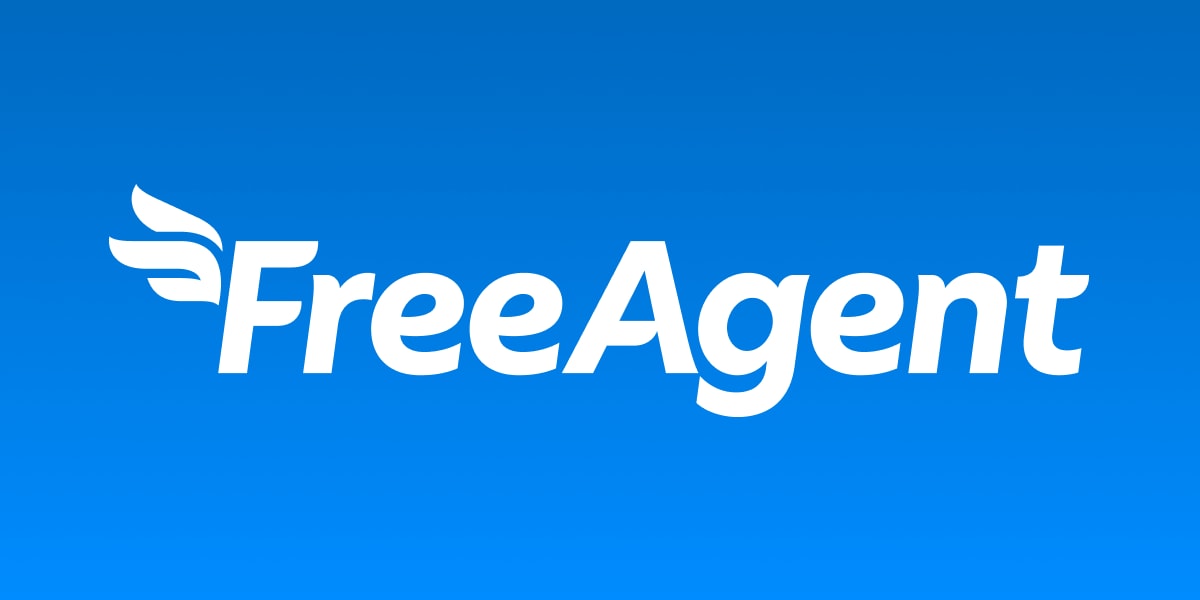
Link: https://www.freeagent.com/
Pricing: $40 per month
User-friendliness: 9/10
The first software on this list is FreeAgent, as it is my go-to choice for accounting software. From my experience using the tool, it’s extremely simple to track income and expenditure and categorize that income and expenditure as you go. That way, when it comes to paying taxes at the end of the year, everything is ready to be shared if required.
It’s ideal for solo entrepreneurs who are looking for a platform that suits their accounting needs while also having the capabilities to scale up as their business grows.
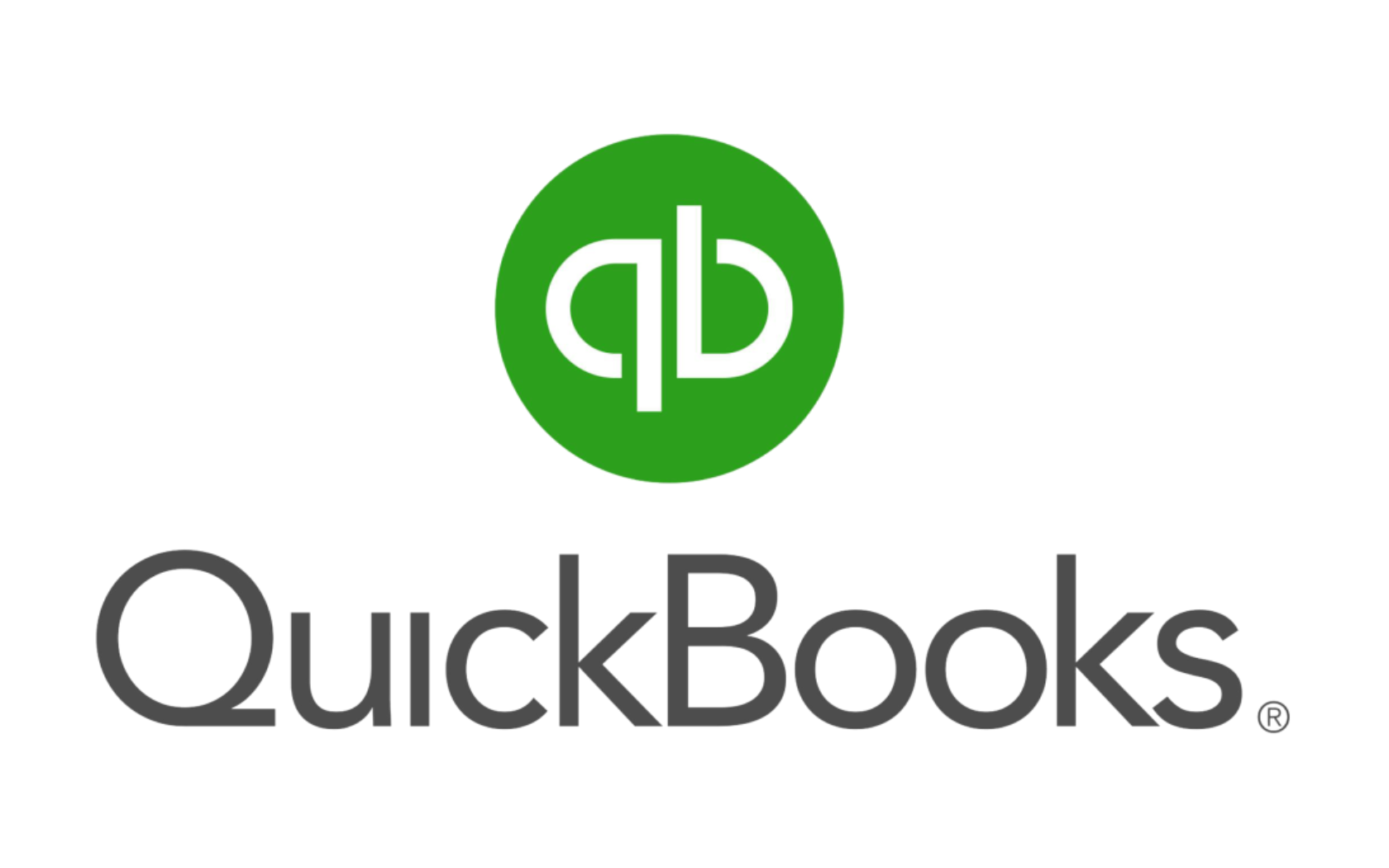
Link: https://quickbooks.intuit.com/
Pricing: $35 per month
User-friendliness: 8/10
Another great option is QuickBooks, which offers all of the same features you’d expect from FreeAgent and other leading accounting software brands. One of the big benefits of using QuickBooks is the brilliant offers that they tend to run for new customers. In the UK, for example, you can get a whole year for just £35! After your first year, that price jumps significantly, but Quickbooks is hoping to convince you it’s easier to stay with them than move again. Those offers also differ depending on which country you are based in.
However, for startups looking to save vital cash for other aspects of their business, look out for great discounts where you can.

Image
Link: https://www.waveapps.com/
Pricing: From free
User-friendliness: 8/10
For those who really want to keep the purse strings tight, Wave can be an excellent option, as the core accounting features are completely free! As you might expect, the actual features and design are not as detailed as the paid versions on this list, but for basic bookkeeping and invoicing, it’s a fantastic option.
One thing I love about Wave is that the free plan really is free! You can produce an unlimited amount of invoices, and even the paid version with more detailed features is just $16 per month.

Link: https://www.zoho.com/books/pricing/
Pricing: From $0 per month
User-friendliness: 6/10
Zoho Books also offers a free version of its accounting software, but in the form of a free trial rather than a free subscription. That said, the paid versions of this platform are still very low. One of the biggest benefits I found when looking into Zoho Books is that it is part of the much bigger company, Zoho, which also offers several other software solutions that could benefit your business.
For some startups, having accounting, CRM, Payroll, and more all in one place can be a lifesaver.
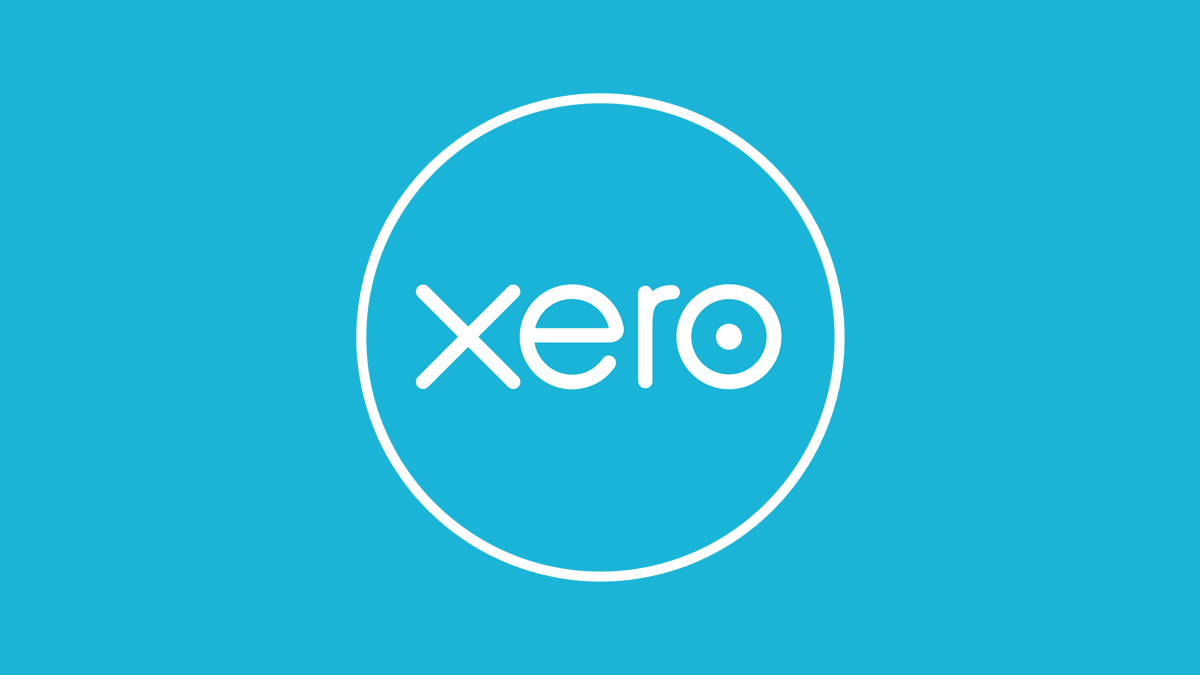
Link: https://www.xero.com/
Pricing: From $20
User-friendliness: 7/10
If you’ve done any research into accounting software, chances are you will have heard of Xero! Xero is one of the largest accounting software companies, and is a great option for any startups that have raised significant investment to launch their business and need a platform that reflects the size of their launch.
It isn’t the easiest to use for small startups, but if you’re a big startup that wants to put the right professional foot forward, this could be a great option for you.
Looking to attract more customers to your website? Or need a dedicated coach to guide you through proven strategies for building your brand? Say hello to Foundr+!
For just $1, you’ll unlock instant access to over 30+ expert-led courses and 1,000+ lessons designed to help you scale your business. Plus, you’ll become part of a thriving community of ambitious founders just like you.
Ready to take your business to the next level? Sign up today!
The post The Top 5 Accounting Software for Startups: Keep Your Brand on Track in 2025 appeared first on Foundr.
When it comes to social media marketing, you’d be forgiven for forgetting about Pinterest.
After all, there’s so much more noise surrounding Instagram, Facebook, TikTok, and even LinkedIn.
But more noise also means more competition, and for that reason, it might be worth considering Pinterest as part of your social media strategy.
Here, we’ll break down how Pinterest can drive sales for your brand in 2025 and offer insights into a different way to get your brand name out there.
Pinterest is often overlooked for business purposes in comparison to other, more prominent platforms like Instagram or LinkedIn.
However, there are plenty of ways Pinterest can help increase brand sales. Here are a few of my favorites.
Like any social media content, it needs to be engaging. Sometimes with content marketing, brands get sucked into thinking that simply ticking it off their to-do list is enough. In reality, one well-thought-out, engaging pin will be worth more to your brand than 100 bland, uninspiring ones.
To create the most engaging pins, utilize a multi-pronged approach of well-planned topics, visual appeal, and optimization for discovery. Opt for clear and high-resolution imagery, ideally with vibrant colors that will catch users mid-scroll.
However, while Pinterest is an image-based social media platform, it also requires a level of SEO to gain true traction. That means writing descriptive titles that include relevant keywords for searchability and also adding informative descriptions with relevant hashtags.
Not only does this help with SEO, but it also provides much-needed context and allows Pinterest to categorize your content accordingly, ensuring your target audience sees it.
Rich pins automatically sync important information about your brand to your pin, including additional information that potential customers may need to convert.
For example, if you used a Product Pin, you can provide your audience with availability, pricing, and where to buy information, making those pins much likelier to drive sales by breaking down any potential barriers to purchase.
To implement a rich pin, you need to ensure everything on your website is ready to go and in line with Pinterest’s specifications. Otherwise, the information may not pull through correctly. You can find those specifications here.
Once your brand has been approved for Rich Pins, your site content will automatically sync, making it easy for you to create great pins and for your audience to understand your brand’s positioning.
Another option available to you is to run ads, much like you can do on other social media platforms. For brands without much of a social presence, the paid ad approach can be a good way to boost online presence and drive more traffic to your site.
Pinterest ads (aka Promoted Pins) ensure your content reaches a wider audience while still keeping it within your target demographic, thanks to the filters within the setup process.
As you may have guessed, this approach comes at a financial cost, so I suggest testing content organically first, getting comfortable with the platform and what resonates with your brand’s audience.
That way, you can ensure that when you do opt for a paid approach, you know you’re promoting the right content to maximize exposure and interactions.
There’s no such thing as too much engagement for new brands and startups!
It’s a theme we’ve constantly seen across multiple successful founder stories. Brands that launch successfully don’t have audiences fall into their lap. Instead, they spend hours responding to comments, DMing potential customers, and building a fiercely loyal community.
This approach can be used on any social media platform and is extremely effective on Pinterest. Brands have built entire businesses off their Pinterest audiences, and one of its biggest benefits is how loyal the platform users are to brands that take time to engage. Use that to your advantage.
If you would like some personalized business coaching to help skyrocket your Pinterest and your business, then look no further. You can get access to Foundr+ for just $1. This gives you access to 14 days of live coaching, real-life human support, a community of over 30,000+ like-minded professionals, and over 30 business courses to fast-track your learning and business growth.
Use vertical images (2:3 aspect ratio) that are visually appealing. Or try step-by-step instructions or infographics that provide value.
Include relevant keywords in your pin descriptions, titles, and board names. Consider what your audience might search for.
Consistency is key on Pinterest! Ideally, aim to post 5-10 new pins per week to maintain visibility and engagement. However, it’s essential to focus on quality over quantity.
The post How Pinterest Can Drive Sales for Your Brand in 2025 appeared first on Foundr.
Trying to get traffic to your website is trickier than ever.
With more and more content to compete with, it can often feel like there is no single approach that can get people to come to your website.
And in truth, there isn’t!
But there is a combined approach you can take, each with its own creative flair that is sure to get you noticed.
Here, I’ll take you through several ways you can attempt to attract new customers to your website. Some you may have heard of, and some are a little more ‘creative’ for startups looking to gain a foothold in the market.
As you are already aware, attracting customers to your website is essential. After all, how else are they going to go through the incredible purchasing funnel you’ve created?
With that in mind, here are four different ways to do just that.
First off, you need to ensure that your site is as user-friendly as possible. That might sound obvious, but you’d be amazed at how many websites I see that load too slowly, have pages that contain broken links, and aren’t well-optimized for users.
Some marketing experts will tell you that you need to optimize for Google, but really, you need to optimize for your users.
For starters, not all of your traffic will come from Google, so your site needs to be set up to accommodate users who find you from other avenues.
Secondly, optimizing for users IS optimizing for Google! Sure, Google values certain keywords in particular places, but its main indicators are user experience, such as time spent on the site, users clicking on other pages from your home page, and so on.
So the first thing you should do is a complete audit of your website, from the shoes of your customer. Click through from an ad, imagine you’re trying to learn more or make a purchase, and make a note of the experience.
Another way to ensure more people visit your website is to build up your email list. That way, you can contact people when there is new content to consume, new products launched, or offer periods that are underway.
However, people are not going to sign up to your email list because you tell them to. After all, many people are bombarded with emails every day, so adding another email sender to their list does not come easily.
People are reluctant to part with this information unless they absolutely have to, and for good reason.
However, that doesn’t mean it’s impossible to get them to do so. Take advantage of offering unique discounts and incentives for opted-in customers, such as 15% off your first order or ongoing offers that are specific to email users.
You could also create a waitlist before product launches, offering unique insights, behind-the-scenes, and updates that other non-email customers won’t get. This tactic has been extremely successful for other startup entrepreneurs, such as Alicia Scott, who went on to turn her business into a billion-dollar venture.
Another way to incentivize website traffic is to give something away for free. It could be a digital eBook, a unique guide, or even a detailed study. Whatever it is, it needs to be your highest quality content, as you can then plaster it all over your various platforms and advertising channels, pushing people to come and get something for free.
This action will also ensure you get more email addresses on your list, which will help with the point above, so it’s a win-win!
But let’s go back to my point about the quality of the content for a second. When creating free content, it is tempting to rush it or just get something out there. Of course, something is better than nothing, but your lead magnet really should be your very best work.
Put yourself in your potential customer’s shoes. They’re not expecting it to be that good because it’s free, so if you knock their socks off with a fantastically useful resource, just imagine how highly they will value your product or service.
‘If this company gives me this for free, imagine what their paid product/service is like!’
Lastly, don’t be afraid to get a little creative with your competitor’s audiences. Of course, you can gain a lot of insight from tracking your competition and seeing how they gain traffic and attention, but there’s also another tactic you can use.
Look at who is engaging with your competition, make a list, and start interacting with them directly, likely via social media. This will help get your brand name out there and also incentivize your target audience to go learn more about what you have to offer.
These are the people you want to come and visit your website, so why not go to them instead? If your product of service is to their liking, they’ll be sure to follow you back to your website from there.
Need more advice on how to attract customers to your website? Or maybe you want a 1-2-1 coach to talk you through the best business strategies to build your brand? Well, look no further than Foundr+! When you sign up for just $1, you will receive instant access to 30+ courses and 1,000+ lessons led by top experts. You’ll also join the growing community of like-minded founders. Sign up here.
The post Attract New Customers to Your Website With These Creative Approaches appeared first on Foundr.
For most business owners and marketers, deciding how to allocate a marketing budget across various channels is a tricky balancing act. It’s challenging to make sure each dollar goes towards efforts that will move the needle, especially in a crowded, ever-evolving digital landscape. To help simplify the process, here’s an 8-step guide to creating a monthly marketing budget that will help you spend strategically, align with your goals, and maximize ROI.
By breaking down marketing spending into clear, actionable steps, businesses of all sizes can make the most of their budgets, track progress, and pivot as needed to achieve meaningful results. A strong budget isn’t just about numbers—it’s about aligning spending with your brand’s vision and goals for lasting impact.
Your marketing goals should guide every aspect of your budget. Start by identifying what you want to achieve over the month. This could be:
Once you’ve set your SMART (specific, measurable, achievable, relevant, and time-bound) goals, you’ll have a much easier time determining how much to allocate to each channel. Struggling to set SMART goals? Look no further. Read this guide! Studies show that goal-setting increases marketing effectiveness by up to 10%, so don’t skip this step!
Plan your business finances and work out your total budget available per month. The U.S. Small Business Administration recommends that small businesses spend 7 – 8% of their revenue on marketing if they’re generating less than $5 million annually and have a profit margin in the 10–12% range.
So, if your monthly revenue is $50,000, that means a marketing budget of $3,500–$4,000 is advisable. But remember, this is just a guideline. You’ll need to adjust based on your unique situation, industry, and goals.
Also, don’t be afraid to get creative to make your budget go further! Instead of overspending on traditional advertising, Airbnb invests heavily in content marketing and user-generated content. Their budget prioritizes building a strong community, fostering user trust, and creating shareable content, such as their “Live There” campaign. By focusing on content and UGC, Airbnb achieved 4.5x higher ROI on its marketing spend compared to competitors relying on paid media. As of 2023, Airbnb reduced its overall marketing spend to focus more on unpaid strategies, helping the company grow revenue by 40% year-on-year!
Benchmarking is vital when it comes to reviewing your budget and performance. Review the previous month’s data to see which channels or campaigns delivered the highest ROI. Struggling to calculate your ROI? Read this article for some top tips! Many marketers get caught up in spreading funds across all channels evenly, but this can dilute the effectiveness on the platforms that perform better. Statistics show that 76% of businesses experience wasted spend on ineffective channels – don’t be one of those businesses!
Analytics tools like Google Analytics and Facebook Insights can be used to identify which campaigns drove traffic, conversions, and engagement. Make sure you have a baseline for key metrics like cost per lead, customer acquisition cost (CAC), and return on ad spend (ROAS). Nike leverages data analytics to allocate marketing dollars efficiently across digital, social media, and experiential marketing. They shifted a significant portion of their budget from traditional TV ads to digital channels to better target younger audiences. Nike’s 30% increase in digital marketing spend drove a 59% growth in online sales in 2022, contributing to their overall revenue increase of 13%. Digital now accounts for over 50% of Nike’s total marketing budget, a strategy that aligns with their direct-to-consumer focus.
Once you’ve analyzed past data, allocate your budget according to channel performance. Here’s a simple breakdown of how your marketing budget could be spent:
Keep in mind that these percentages are only starting points and will vary depending on the size, audience and industry of your business.
Some marketing efforts need consistent funding, regardless of monthly goals. “Always-on” marketing ensures that your brand stays visible and relevant to your audience. Here are a few common “always-on” strategies:
Studies show that businesses with “always-on” marketing grow their leads by up to 70% over those with sporadic campaigns. Coca-Cola allocates the majority of its marketing budget to brand-building campaigns rather than short-term promotional efforts, spending 6–7% of its revenue on marketing globally, which amounted to $4 billion in 2021! They focus on storytelling and emotional branding to maintain their status as one of the world’s most valuable brands. As a direct result of this strategy, Coca-Cola has held its position as the 6th most valuable brand in the world, with an estimated value of $57 billion!
Aside from “always-on” marketing efforts, make room for short-term or seasonal campaigns that align with monthly business goals. These might include:
For example, if you’re launching a new service this month, allocate 10 – 20% of your budget to promoting it across relevant channels, particularly ones with high engagement rates like paid social media or Google Ads.
It’s smart to keep 5 – 10% of your budget flexible for testing new strategies or as a contingency plan in case a campaign is running particularly well or, not so well. Testing can include anything from trying out a new ad platform to running A/B tests on emails or landing pages. You can read more about A/B testing here. In fact, companies that regularly experiment see up to a 30% higher ROI than those that don’t.
If you’re allocating $4,000 for the month, set aside around $200 – $400 for testing. This will give you the chance to try out different strategies and adjust your approach based on what’s working.
Tracking your budget throughout the month is key to making sure you’re on track with spending and performance. Set weekly check-ins to review campaign results, which will ensure nothing is running over budget; you can highlight areas for improvement quickly and can equally add a little extra spend into channels that are working well.
Reallocate funds to high-performing channels if possible. For instance, if a social media ad campaign is driving tons of traffic but costing less than anticipated, you might decide to put more dollars there. Businesses that continuously reallocate marketing budgets to match performance see a 20% higher marketing ROI.
Crafting a monthly marketing budget takes careful planning, but the payoff is worth it. By breaking down your budget into clear, goal-aligned steps, you’ll be able to stretch every dollar for maximum impact! Remember to make data-driven decisions and align your test and learn strategy with your monthly marketing budget.
Need more advice on how to plan a marketing strategy? Or maybe you want a 1-2-1 coach to talk you through the best business strategy to maximize your growth? Well, look no further than Foundr+! When you sign up for just $1, you will receive instant access to 30+ courses and 1,000+ lessons led by top experts like multi-millionaire Gretta van Riel. Sign up here.
The ideal monthly marketing budget varies depending on factors like your industry, company size, growth stage, and revenue. A common guideline is to allocate 7-8% of your revenue to marketing if your annual revenue is under $5 million and you aim for a 10-12% profit margin. However, if you’re in a competitive market or in growth mode, you may want to invest more—up to 10-15% of revenue.
To maximize ROI, track key performance indicators (KPIs) for each campaign. These might include cost per lead, customer acquisition cost, and return on ad spend. Set measurable goals and adjust your budget based on performance data. Regularly reallocating funds from underperforming channels to high-performing ones can boost ROI significantly—businesses that do this can see up to 20% higher returns.
A monthly budget doesn’t mean you set it once and forget it! Weekly check-ins on spending and performance are essential to stay agile. If certain channels exceed expectations, consider reallocating additional funds mid-month. Businesses that frequently adjust their budgets based on real-time data generally see better returns and can adapt to shifts in consumer behavior faster.
The post 8 Steps to Mapping Out a Monthly Marketing Budget appeared first on Foundr.
Project management tools can be a game-changer for any business struggling with productivity, organization, and effective communication.
Whether you’re a one-man band, part of a small team, or a large organization, having the right tools in place will help streamline your workflows, improve team collaboration, and track progress effectively. All of these factors can save you time and money, helping make your business more effective and profitable.
Never used a project management tool before? Or maybe you have, but it became more of a hindrance than a help? Well, picking the right tool all depends on personal preference and what you need it for.
Here’s a curated list of the top 8 project management tools to help you optimize team performance and achieve better project outcomes and ROI. If you want to learn more about how to calculate your ROI, click here.
One of the most popular project management tools – Asana is free for basic use, is fairly user friendly, and is great for visual projects.
Trello is widely used and is easy to use. You are able to link ‘cards’ and projects to each other in a user-friendly path. This is a great project management tool if you like a clear, visual representation of complex projects. It is easy to link documents and tag your colleagues, making this a great option if you’re new to using this type of software.
You may recognize Monday from their extensive marketing campaigns! It is a great tool, slightly on the more expensive side; however, if you’re a larger business or looking to scale up, this a great project management tool that can handle complex projects. It also has a mobile app for ease of access to your projects. This is ideal for Project Managers and business owners.
ClickUp has a wide range of project management features that are great for more complicated projects and give the wider team visibility on complex workflows.
Smartsheet is like a giant spreadsheet (shock, right?!) – it is good for large projects with unlimited users; however, it can get quite complicated if you’re not used to working with a lot of data and Ghant chart style project management tools for larger, more complicated projects.
Notion is free for personal use, which is always a win if you’re a freelancer, sole trader, or just looking to test various tools! It’s pretty simple to use and has an app version that allows you to work from your phone or tablet. It’s basic but really handy for smaller or simple projects.
Basecamp is a great tool with a lot of functions, such as chat, message boards, deadline reminders, lists, and document sharing. It has an app as well as a desktop version, which means you can easily log in and work on the go.
Again, it is quite basic, so it may not be the right choice for massively complex projects. However, it’s a great tool for collaboration between teams.
As the name suggests, it’s great for collaborative working. It’s simple to use, which means your clients will have full transparency over projects. Read more about how collaboration and teamwork are integral to growing a business (with data to back it up!) here.
Each tool offers unique features and pricing models that fit different team sizes, project scopes, and workflow requirements. Consider factors like team size, the complexity of your projects, collaboration needs, and budget when choosing the best tool for your team.
Implementing the right project management tool can lead to streamlined processes, improved productivity, and better project outcomes.
If you’re looking for ways to make your business more efficient, enable quick pivots, and become more profitable, sign up for Foundr+ for just $1 a month.
You will also gain access to over 1000+ lessons that will accelerate your business growth and development, and you’ll be able to ask your business coach questions directly! If this sounds like the support you need – get access here.
The features you need depend on your team size, project complexity, and workflow requirements. However, the most useful features generally include:
Yes, small businesses can significantly benefit from project management tools. These tools provide structure, help manage resources, and reduce manual administrative tasks, which are essential for small teams that may have limited time and resources. Additionally, many project management tools offer affordable pricing plans or free versions that are suitable for smaller teams. By improving organization and collaboration, these tools enable small businesses to operate more efficiently and scale more effectively.
A project management tool is software that helps teams organize, plan, execute, and track tasks and projects from start to finish. It includes features like task tracking, time management, collaboration, document sharing, and reporting. These tools are crucial for businesses because they improve productivity, streamline communication, and enhance project visibility, helping teams complete projects on time and within budget.
The post 8 Project Management Tools That Can Lead to Better Efficiency appeared first on Foundr.
Starting a new business is exhilarating, but it can also be daunting – especially when it comes to building your online presence. With a tight budget, limited resources, or SEO expertise, you might be wondering how to get your brand noticed. SEO, or Search Engine Optimization, is a cost-effective way to attract your target audience, but it’s also scalable as your business grows.
There are specialists and search engine wizards who understand the intricacies of gaining online visibility. However, if you don’t have the budget or technical knowledge, don’t fret. There are simple steps that you can follow to help get you started and offer some clarity on what SEO is and how it all works.
Did you know that 93% of online experiences begin with a search engine? This statistic highlights the importance of SEO for startups who are looking to grow organically.
By optimizing your website for search engines, you can significantly increase your visibility and drive organic traffic without the hefty price tag of paid advertising.
Plus, SEO is a long-term strategy. Once you establish a solid foundation, the results can be exponential. But how do you get there? Here are six key tips…
Understanding what your audience is searching for is crucial. Use tools like Google Keyword Planner, SEMrush, or Ubersuggest to identify relevant keywords in your industry. Look for long-tail keywords (phrases with three or more words) that have lower competition but high search intent.
For example, instead of targeting “shoes,” aim for “comfortable running shoes for beginners.” This approach will help you attract a more specific audience that’s ready to convert.
Content is king – especially for SEO. Start a blog or resource center on your website where you can share valuable insights, how-to guides, and industry news. Not only will this position you as an authority in your field, but it also provides opportunities to naturally incorporate your keywords.
Remember, Google loves fresh, relevant content, so aim to post regularly. A study by HubSpot found that companies that blog generate 97% more links to their websites. If you need more advice on how to create solid content, read this guide!
Backlinks (links from other websites to yours) are a key factor in how search engines rank your site. Focus on building relationships with industry influencers and bloggers who may be interested in linking to your content.
You can start by guest posting on their blogs or collaborating on projects. Even local businesses can be a great source of backlinks. According to Moz, backlinks are one of the top three ranking factors in Google’s algorithm.
Don’t overlook the technical aspects of your website. Ensure your site is mobile-friendly, loads quickly, and has a clear, organized structure. Tools like Google PageSpeed Insights and Mobile-Friendly Test can help you identify areas for improvement.
Remember, a well-optimized site enhances user experience, which can significantly improve your rankings. In fact, 53% of mobile users abandon sites that take longer than three seconds to load, so by optimizing for technical SEO, you can reduce your bounce rates. And reducing bounce rates means a higher ranking on Google Search! Winning.
If your startup serves a local audience, optimizing for local SEO is essential. Claim your Google My Business listing and ensure your name, address, and phone number (NAP) are consistent across all platforms.
Encourage satisfied customers to leave reviews, as positive feedback can boost your local rankings. Studies show that 76% of consumers trust online reviews as much as personal recommendations.
SEO isn’t a set-it-and-forget-it strategy. Use tools like Google Analytics and Google Search Console to track your performance. Monitor which keywords are driving traffic and which pages are underperforming. Adjust your strategy based on your findings. The digital landscape is always changing, and staying adaptable is key to long-term success.
Chase Bank is a prime example of how they have adapted to the change in search engines. Many large companies have neglected to develop their online presence and have seen their market share shrink as a result, overtaken by young, technology-driven companies.
Chase Bank has put a lot of emphasis on the online user experience and has integrated a lot of relevant content on its website, notably through its blog. In this respect, the articles published on the site, far from being purely financial, offer a glimpse into a lifestyle to which Chase’s customers aspire.
Despite its benefits, startups often face unique challenges when it comes to SEO. Limited budgets, lack of expertise, and time constraints can make it difficult to implement an effective strategy. Here are some practical tips to overcome these hurdles:
Prioritize Your Efforts: Focus on the strategies that will yield the highest return on investment. For example, if you have a limited budget, concentrate on keyword research and content marketing, which can be done relatively inexpensively.
Use Free Tools: Take advantage of free resources to learn and implement SEO strategies. Websites like Moz, HubSpot, and Neil Patel offer a wealth of knowledge to help you get started without breaking the bank.
Learn Continuously: SEO is constantly evolving, so stay updated with the latest trends and algorithm changes. Follow industry blogs, attend webinars, and network with other startups to share insights and strategies.
SEO is an invaluable tool for startups seeking to establish their online presence and attract their target audience without incurring massive costs. By implementing these actionable strategies and overcoming common challenges, you can set your business up for long-term success. So, roll up your sleeves, start optimizing, and watch your startup soar!
Need more advice? Still baffled by the complexities of SEO? Sign up to Foundr+ for a 1-2-1 coach to talk you through the best business strategy to maximize your organic growth and build your brand. When you sign up for just $1, you will receive instant access to 30+ courses and 1,000+ lessons led by top experts. Sign up here.
First things first, you’ve got to make sure your website is crawled and indexed if you want to climb the search engine echelons. Verify your site with Google Search Console, which is a free service provided by Google for website owners. Verifying your website with GSC is considered an SEO best practice and will make it possible for Google to understand you are the site owner.
Keywords are two to five-word phrases that your potential clients would type into a search engine when looking for you or a business like yours. Choosing and inserting the right terms in your content is crucial since it will help Google’s bots to understand your website better and identify you as a relevant result for a specific search.
Once you’ve got your keywords, the main places where you want to put these are your SEO title, your URL, your page content, and image descriptions (if possible). Don’t forget your blog posts.
The post SEO for Startups: Clever Ways to Grow Organically appeared first on Foundr.
Users in the U.S. spend around 26.20 hours on YouTube each month. That’s a whole lot of minutes that you can tap into if you know how to optimize your YouTube videos to maximize your reach!
Whether you’re an aspiring content creator looking to build a following and establish a presence on YouTube, a small business owner looking to harness the power of YouTube as a marketing tool to broaden your reach, or whether you’re a Digital Marketing Manager with the goal of maximizing the impact of your video content on Youtube, this article has you covered!
YouTube is a bustling hub of creativity, with millions of videos uploaded every day. So, how do you ensure that your content doesn’t get lost in the shuffle? Optimizing your videos is the key to maximizing reach, improving engagement, and ultimately boosting those subscriber numbers. If you want to learn more on How To Increase Your YouTube Channel, read this! Now, let’s dive into some practical tips that can help make your videos stand out and thrive…
First things first, let’s talk about YouTube SEO. Just like Google, YouTube needs to know what your video is all about to rank it appropriately. Here’s how to do it right:
Pro Tip: A well-optimized title could be the difference between a few views and virality! Think “5 Easy Recipes for Busy Moms” rather than just “Recipes.”
Your thumbnail and title are the first things viewers see. They need to be compelling!
Quick Fact: Custom thumbnails get 60% more clicks than generic ones, so invest that time!
Once people click on your video, it’s all about keeping them engaged and encouraging interaction:
Remember: The more interaction your video receives, the more likely YouTube’s algorithm will favor it, pushing it to other viewers.
To keep your audience coming back, you need to develop a content strategy that resonates with them:
Fun Tip: Build a series around specific themes so viewers have a reason to return!
YouTube Analytics is your best friend; it offers valuable insights into your video’s performance:
Reminder: Regularly checking your analytics will help you adapt and improve over time!
Don’t just rely on YouTube to get the word out—leverage other platforms:
Optimizing your YouTube videos is not just about putting content out there; it’s about making it discoverable, engaging, and shareable. By following these actionable strategies, you can improve your chances of getting noticed and maximizing your reach.
Need more advice on how to optimize YouTube videos? Or maybe you want a 1-2-1 coach to talk you through the best business strategy to maximize your growth on all social channels? Well, look no further than Foundr+! When you sign up for just $1, you will receive instant access to 30+ courses and 1,000+ lessons led by top experts like multi-millionaire Gretta van Riel. Sign up here.
Like any search engine, YouTube wants to deliver content that answers the searcher’s query. For instance, if someone searches for “how to tie a tie,” YouTube won’t deliver a video titled “how to tie your shoelaces.” As you try your hand at YouTube SEO, think about how you can incorporate terms and phrases used by your target audience.
There are a lot of ways to optimize your content and your channel; however, here are a few other ideas to help you out!
According to the YouTube Creators Academy, a few of the most popular YouTube video topics include:
The post How to Optimize YouTube Videos for Maximum Reach appeared first on Foundr.
If you’re looking to transform your Instagram account into a sales powerhouse, you’re in the right place. Instagramers upload up to 500 million posts DAILY. It has evolved over the years from a simple photo and video-sharing tool to a powerful marketing tool and has a significant impact on its users’ buying behavior and how businesses can target their audience.
90% of users follow a brand on Instagram, 83% have discovered a product/service from Instagram. And 80% have made a purchase based on a product or service they discovered on the platform.
So, if you are a small business owner and want to keep up with the competition but have a limited budget or want to grow your brand’s awareness and want to be able to prove ROI, you should use Instagram Shopping.
Instagram shopping isn’t just a trend—it’s a fundamental shift in how brands connect with consumers. Did you know that 70% of users turn to Instagram to discover new products? So, if you’re not leveraging this platform, you’re seriously missing out!
This guide will walk you through everything you need to know about setting up your Instagram shop, optimizing your posts, and leveraging the platform’s features to boost engagement and sales.
First things first: let’s get your shop set up!
Now that your shop is set up, it’s time to showcase your products effectively.
Understanding Instagram’s algorithm is key to getting your posts seen by your target audience, or on any social media platform for that matter. If you want to sell on multiple social channels, read this guide on How To Sell Directly Through Social Media.
Tracking your performance is crucial for success and proving all the important ROIs.
Staying ahead of the curve is essential in the ever-evolving world of social media.
By following these steps, you can transform your Instagram account into a vibrant storefront that not only engages your audience but also drives sales. Now, get out there and start turning those likes into sales!
If you would like some personalized business coaching to help skyrocket your Instagram and your business, then look no further. You can get access to Foundr+ for just $1. This gives you access to 14 days of live coaching, real-life human support, a community of over 30,000+ like-minded professionals, and over 30 business courses to fast-track your learning and business growth.
Instagram users spend an average of 30.6 minutes daily on the platform – with 500 million people using Instagram Stories daily and 130 million Instagram users tapping on shopping posts monthly. Is Instagram Shopping Driving Sales? The Results Are In: Brands Report +1,416% Traffic, +20% Revenue.
With your Instagram shop set up, harness these Instagram marketing tips to start bringing in sales:
Pricing! Although it is free to set up – there are a few sneaky fees you should be aware of:
The post The Ultimate Guide to Instagram Shopping appeared first on Foundr.
Implementing AI in customer service can transform how businesses interact with their customers by enhancing efficiency, personalization, and scalability.
There are a multitude of different AI strategies you can use, from chatbots for instant responses, sentiment analysis for emotional insight, data analytics for actionable insights, predictive support, and personalization engines – AI offers practical ways to improve customer satisfaction and streamline support efforts.
Chatbots are one of the most effective and accessible AI tools for customer service, significantly reducing response times. Businesses can benefit from efficiency by deflecting simple inquiries to ChatGPT-powered bots. Studies show that 64% of consumers and 80% of business buyers expect businesses to respond and interact with them in real time. Bots can provide quick answers to common questions 24/7, allowing staff members to deal with more important or complicated issues.
In addition to simple query handling, modern AI chatbots are evolving into intelligent virtual agents that can guide customers through complex processes like troubleshooting, onboarding, and even personalized recommendations. These advanced systems learn from past conversations, adapt to user behavior, and escalate only when truly necessary, offering a seamless blend of automation and human-like understanding.
Benefits:
Implementation Steps:
Clothing brand H&M uses an AI-powered chatbot on its website and social media to help customers find products, check availability, and manage returns. By handling common queries, the chatbot reduces the load on customer support and improves response times significantly.
ChatGPT’s natural language processing (NLP) capabilities or AI-based sentiment analysis tools allow customer service teams to gauge the emotional tone of customer interactions, whether it’s through live chat, emails, or social media, helping staff to understand the customer’s mood and urgency level. You can read more about social listening here.
This insight allows support teams to prioritize cases effectively and tailor responses based on the customer’s emotional state, leading to more empathetic and satisfying interactions. This information helps businesses make data-driven decisions about where to improve products, services, or customer support processes.
AI-powered sentiment analysis goes beyond keyword detection. It evaluates tone, urgency, and intent across channels to help support teams respond more empathetically and in real time. This not only prioritizes at-risk conversations for faster handling, but also gives leaders better visibility into recurring customer frustrations that might not show up in traditional feedback metrics.
Companies using AI-based sentiment analysis experience a 25% reduction in customer complaints and a 10% increase in customer satisfaction scores.
Benefits:
Implementation Steps:
Coca-Cola uses AI sentiment analysis to track customer feedback in real-time, allowing them to adjust marketing strategies and customer support responses based on trending sentiment.
As a result, they have seen an 18% improvement in brand perception scores by proactively addressing issues that surfaced through sentiment analysis.
AI-based data analytics tools help businesses analyze vast amounts of customer data to identify trends, preferences, and potential pain points. If you want to know more about how to use customer insights to drive business growth, read this!
This deep understanding enables companies to make informed decisions about how to improve their service and tailor their offerings. AI can uncover patterns that may not be obvious, such as the most common times customers contact support or recurring issues with specific products.
Implementation Steps:
Sephora uses AI-driven analytics to gather insights from customer feedback on products and in-store experiences, allowing the company to make targeted improvements that enhance customer satisfaction.
While AI can automate many customer interactions, its greatest value often comes from enhancing human performance. AI support tools act as real-time assistants to agents, surfacing relevant help articles, recommending answers, and summarizing past interactions as the conversation unfolds. This lets agents focus on nuanced, relationship-building tasks instead of digging through databases or past tickets.
Benefits:
Improves accuracy and response time without overloading agents
Helps new hires ramp up faster by offering in-the-moment suggestions
Reduces repeat questions by surfacing context instantly
Implementation Steps:
Choose an AI platform that integrates with your service desk or CRM
Enable real-time prompts and auto-suggestions for common issues
Train agents to balance AI input with their own judgment and voice
Predictive customer support uses AI to anticipate customer needs and proactively address potential issues before they escalate. For example, if a customer has repeatedly contacted support about a particular product issue, AI can identify this pattern and trigger a follow-up or suggest a solution even before the customer reaches out again.
Generative AI can be a fantastic tool when used properly, allowing your business to scale. If you want 5 top-tips on how to use AI to scale your business, look no further! Predictive support can reduce frustration, build trust, and create a more seamless service experience. Gartner predicts that by 2025, 75% of customer service interactions will be powered by AI, significantly decreasing the burden on human agents.
Implementation Steps:
AI-powered systems can now proactively spot issues customers might not even know they’re experiencing, such as service degradation, expired warranties, or missed messages, and initiate outreach to resolve them. This shifts support from reactive problem-solving to preventive care, which can dramatically improve trust and retention.
Comcast uses predictive analytics to identify and solve connectivity issues before they affect customers, often resolving problems without any interruption to service. This proactive support approach reduces customer calls and improves overall satisfaction.
Personalized experiences are critical to modern customer service, and AI-powered personalization engines enable companies to offer each customer a uniquely tailored experience. By analyzing purchase history, browsing behavior, and customer preferences, AI can recommend relevant products, customize responses, and anticipate customer needs. This level of personalization can make customers feel valued and understood, leading to higher satisfaction and loyalty.
With access to customer data, ChatGPT can tailor responses to individual customers, enhancing the personalization of each interaction. By using data such as purchase history, previous interactions, or stated preferences, ChatGPT can recommend products, provide customized solutions, and address customers by name or with specific information relevant to their history with the company. McKinsey reports that personalization can lead to 5 – 15% revenue growth and improve the efficiency of marketing spend by 10 – 30%.
Benefits:
Implementation Steps:
Netflix utilizes AI to recommend shows and movies to each user based on their past viewing habits, creating a highly personalized experience that keeps users engaged. In a customer service setting, this approach could apply to suggesting relevant support resources, product upgrades, or loyalty rewards.
Using Chatgpt and other AI tools in customer service offers businesses the opportunity to support their team rather than replace it. Whether it’s automating responses, helping to personalize interactions, conducting follow-ups, or analyzing sentiment, AI enables companies to streamline processes, boost response times, and understand their customers better. With staff and AI working in harmony, it opens up opportunities for growth, scale and increased brand reputation.
However, successful AI implementation depends not just on the technology, but also on the readiness of your team. Clear processes, ongoing training, and trust in the system are essential. When AI is positioned as a co-pilot, supporting rather than replacing your agents, it drives employee satisfaction and customer loyalty.
If you’re looking for more information on the power of AI or you need a business coach, look no further than Foundr+. When you sign up for just $1, you will receive instant access to 30+ courses and 1,000+ lessons led by top experts. Get support, motivation, and advice whenever you need it. Sign up here.
AI-powered chatbots significantly improve customer service efficiency by handling high volumes of routine inquiries instantly, which reduces response times and ensures customers receive timely help. Chatbots can be programmed to answer common questions, such as those related to store hours, order status, return policies, and product information. This automation frees human agents to focus on complex or high-value inquiries, increasing overall productivity.
AI personalizes customer interactions by analyzing data such as browsing behavior, purchase history, and previous support interactions. Using this information, AI can tailor responses, offer relevant product recommendations, and anticipate customer needs, creating a more engaging and meaningful experience.
AI can work alongside human agents by providing real-time support during customer interactions. AI tools can suggest responses, retrieve relevant information, and summarize past interactions, allowing agents to provide faster and more accurate support. This integration enhances agent performance while preserving the human touch, which is crucial for handling complex or sensitive issues.
The post 8 Ways You Can Implement AI to Improve Customer Service in 2025 appeared first on Foundr.
In 2025, loyalty programs are less about freebies and more about personalized engagement, data-driven decisions, and emotional connections with customers.
Loyalty programs are everywhere today, and for good reason: they work. When done right, loyalty programs can increase customer retention, drive more sales, and boost brand reputation without a huge marketing budget.
However, not all loyalty programs are created equal.
You need to understand your customer’s wants and needs in order to set up a killer loyalty program that keeps them coming back. Here’s how to create one that genuinely benefits your business, with examples, facts, and a few smart strategies…
Loyalty programs are marketing strategies designed to retain customers by rewarding them for repeat purchases or engagement. Check out this article on the secrets to customer engagement. They encourage loyalty by offering perks like discounts, points, or exclusive access, incentivizing customers to stick with a brand over competitors.
A complicated loyalty program is a quick way to lose customers’ interest. The most effective loyalty programs are easy to understand and don’t require a lot of effort to participate in.
Your customers, just like all of us, want quick wins! Points-based systems are one of the most popular because they’re easy to grasp and work across various industries. Customers earn points per purchase, which they can later redeem for rewards.
Simplicity is critical, as complex point conversions or vague reward thresholds frustrate users.
Take Starbucks Rewards as an example: customers earn 1 star per dollar and can clearly see what 25, 50, or 150 stars will get them. The redemption chart is mobile-friendly, always accessible, and crystal clear. Keep your program intuitive so customers know exactly what to expect and how to benefit.
In fact, Starbucks claims that loyalty program members drive about 40% of its U.S. revenue.
A tiered loyalty program rewards customers based on their loyalty level. This type of system can motivate customers to spend more to reach higher tiers, unlocking better rewards along the way. Not only does this create a sense of accomplishment, but it also keeps the customer engaged with the brand.
Tiered programs create aspirational goals. Sephora’s Beauty Insider moves customers through Insider, VIB, and Rouge levels, each unlocking increasingly exclusive benefits, from birthday gifts to private shopping events. This not only incentivizes spending but also builds a sense of belonging to an exclusive club. Even small brands can offer tiered perks, such as ‘Silver’ members getting early sales access and ‘Gold’ members getting free shipping.
This tiered structure not only encourages spending, with 80% of Sephora’s transactions in the U.S. coming from Insider members.
Personalization is key to a successful loyalty program. According to a study by Bond Brand Loyalty, 79% of consumers are more likely to engage with a loyalty program that offers personalized rewards. Use data to track purchase history, preferences, and spending habits so you can tailor rewards accordingly. Want more information? Read about using customer insights to drive growth and build loyalty.
Personalization increases loyalty by making customers feel seen. Netflix does this through personalized content recommendations, and e-commerce brands can apply the same principle to rewards. For instance, if a customer regularly buys eco-friendly products, offer them early access to your next sustainable collection. Tools like Omnisend or HubSpot can help segment audiences and trigger tailored offers based on individual behavior.
Amazon Prime isn’t just a loyalty program – it’s an entire ecosystem of personalized perks! From free two-day shipping to Prime Video, customers feel they’re getting special treatment tailored to their needs. That’s why as many as 90% of Prime members in the U.S. renew their memberships annually.
Amazon’s success with Prime shows how personalization can make a loyalty program feel valuable and indispensable.
Gamification involves adding fun elements like challenges, rewards for completing tasks, or limited-time offers. This technique works well because it taps into the natural human desire for achievement and competition. A gamified loyalty program can make customers feel more engaged and likely to return.
Example: Nike’s NikePlus Membership
Nike’s loyalty program is built around fitness challenges and community events. Members can track their workouts, compete in challenges, and even unlock exclusive products.
By gamifying the experience, Nike has built a vibrant community and increased brand loyalty among fitness enthusiasts, which is a huge part of their customer base.
Modern consumers want more than just rewards – they want to make a positive impact. Loyalty programs that incorporate a social responsibility aspect can attract customers who care about sustainability, charity, or giving back. This will also set you apart from crowded marketplaces and give you a one-up on competitors.
Example: TOMS Passport Rewards
TOMS’ loyalty program allows members to earn points and redeem them for rewards like early access to new products or exclusive events.
They also give members the option to donate points to help fund TOMS’ giving initiatives. This approach resonates well with TOMS’ socially conscious audience, and it’s aligned with the brand’s mission to make a difference in the world.
With the rise of digital wallets and mobile apps, it’s crucial for loyalty programs to be mobile-friendly. Mobile access allows customers to easily track their points, redeem rewards, and engage with your program on the go. This accessibility keeps your brand top of mind.
Example: Target’s Circle
Coupon website, Target Circle has a loyalty program embedded into the Target app. Members get personalized offers, earn cash back on purchases, and can choose causes for Target to support. The convenience of an in-app experience has made Target Circle a huge hit, with 80 million members by 2022.
Nothing frustrates a customer more than realizing they need to spend a small fortune to redeem a reward. Keep the rewards attainable, and make sure they’re genuinely valuable. Smaller, achievable rewards make the experience satisfying from the get-go, keeping customers motivated to continue and increasing brand loyalty.
Example: Dunkin’s DD Perks
Dunkin’ keeps rewards attainable by letting customers earn points with every purchase, and they can quickly earn free drinks.
By providing frequent, achievable rewards, Dunkin’ maintains customer interest and keeps them coming back. DD Perks members spend 20% more than non-members so they must be doing something right!
Offering exclusive experiences or behind-the-scenes access can create a unique bond between your brand and the customer. Experiences add a personal touch and make customers feel valued in a way that a simple points program may not.
Example: American Express Membership Rewards
American Express’s loyalty program is known for offering exclusive experiences, like early access to concerts, VIP tickets, and invites to special events.
This approach appeals to Amex’s high-end clientele, and members see these perks as highly valuable, building loyalty and satisfaction. Amex cardholders spend 43% more annually than other credit card users.
Adding a referral program to your loyalty initiative can help expand your customer base while rewarding your current customers. Referral incentives encourage loyal customers to spread the word, making your program work as a marketing tool.
Example: Dropbox’s Referral Program
Although not a traditional retail loyalty program, Dropbox’s referral system is highly effective. Users are rewarded with additional storage space for referring new users, which works as a win-win. This strategy helped Dropbox grow from 100,000 to 4 million users in just 15 months.
Loyalty programs are more than a nice-to-have. They’re essential for customer retention. 56% of customers say they’re more likely to stick with brands with good loyalty programs. By keeping your loyalty program simple, personalized, and rewarding, and by tapping into technology, you’ll create a program that attracts and retains customers.
Whether you’re a small business or a global brand, these loyalty program strategies can help turn one-time buyers into loyal brand advocates.
Want more business advice? Are you a founder looking to scale your business or struggling to find a loyal customer base? Struggling to maintain customer engagement? Well, why not join Foundr+ for just $1? This gives you access to 14 days of live coaching, real-life human support, a community of over 30,000+ like-minded professionals and over 30 business courses to fast-track your learning and business growth.
Loyalty programs are crucial because they increase customer retention, which is often far more cost-effective than acquiring new customers. On average, return customers spend 67% more than new ones. Brands with loyal customer bases tend to see more consistent revenue, higher customer lifetime value (CLTV), and better word-of-mouth referrals.
By offering points, exclusive discounts, early access to products, or personalized rewards, customers feel valued and are more likely to return. Programs that use personalized offers can increase customer retention even more – 79% of customers say they’re more loyal to brands with personalized rewards.
To measure a loyalty program’s success, track these key performance indicators (KPIs):
Program ROI: Compare the cost of running the program (rewards, software, marketing) with revenue from loyalty members.
The post 9 Ways to Implement a Loyalty Program That Actually Works appeared first on Foundr.
Ever wonder how the most successful businesses in the world started? How did they create a globally recognised brand?
Well, we take a deep dive into eight of the top brands in the world and outline their lessons and guidance on building a strong brand identity. It addresses the challenges many businesses face when creating a brand that resonates with their target audience, how to stand out in the market, and how to foster long-term loyalty.
The article provides actionable steps and insights from top entrepreneurs to help business owners craft a memorable and impactful brand identity.
Let’s deep-dive into the top tips from some of the world’s biggest business success stories. Below, you will find advice on how to create a strong brand identity and business growth from the people who have been there, done that, and got the millions to show for it!
Netflix co-founder, author, podcast host, and investor-extraordinaire Marc Randolph reveals his journey from failed business ideas and last-minute pivots to being laughed at during a $50m pitch with Blockbuster. His key business lessons from working for Netflix include:
Watch the full interview here.
Anthony Katz, founder of Hyperice, shares his incredible journey from being a high school teacher to building a global recovery brand used by some of the world’s top athletes, including Kobe Bryant.
Anthony Katz’s journey with Hyperice offers these top tips when it comes to using influencers to create a strong brand identity:
Matteo Franceschetti, founder and CEO of Eight Sleep, shares his incredible journey of transforming sleep into a science-backed, performance-enhancing tool.
He discusses how the company achieved product-market fit by listening to customers and dives into the challenges of building a hardware startup, the importance of team dynamics, and how Eight Sleep is expanding globally.
Key branding lessons from Matteo Franceschetti’s journey with Eight Sleep include:
After her family’s failed business left her in $700K in debt, MaryRuth Ghiyam used client feedback from her private nutrition practice to develop a liquid morning multivitamin.
8 years and 130 products later, MaryRuth Organics has earned $100M in revenue and employs over 100 people. So, how’d she do it? MaryRuth Ghiyam’s key scaling lessons include:
Sabri Suby is the founder of Australia’s fastest-growing digital marketing agency, King Kong, and a featured Shark on Australia’s Shark Tank. In 10 years, King Kong has generated over $7.8 billion in sales for its clients in 136 different countries.
His top tips for how to approach digital marketing to elevate your brand identity include:
Allison Ellsworth, founder of Poppi, talks about her incredible journey from humble beginnings at farmers’ markets to achieving national recognition with her modern soda brand.
She shares the challenges, including the pivotal decision to appear on Shark Tank, strategic rebranding, the impact of her Super Bowl commercial, and how she’s built a brand that resonates deeply with consumers through authentic, community-first marketing. Ellsworth’s key branding lessons include:
Sheena Zadeh-Daly, founder of Kosas, shares her journey from selling lipsticks from her home to building a clean beauty brand that’s taken the industry by storm.
Sheena discusses the early challenges of launching Kosas, including her hands-on approach to everything from product development to shipping orders and business positioning.
Key business lessons from Sheena Zadeh-Daly’s journey with Kosas include:
Hudson Leogrande, the founder of Purely White Deluxe teeth whitening and Comfrt, shares his remarkable journey from packing products in his mother’s basement to building not one, but two multimillion-dollar brands.
Hudson discusses the early struggles of launching Purely White Deluxe, including the challenges of marketing a teeth whitening product with no prior experience and the breakthrough moment when he discovered the untapped potential of Snapchat.
His key business lessons for creating a strong brand identity include:
Watch the full interview here.
Want more brand identity and business growth lessons from top entrepreneurs and coaches? Are you a founder struggling to define a clear brand identity that resonates with your target audience? Or maybe you’re a Marketing Manager experiencing difficulty balancing the company’s evolving business strategy.
No matter what your situation, you can join Foundr+ for just $1. This gives you access to 14 days of live coaching, real-life human support, a community of over 30,000+ like-minded professionals and over 30 business courses to fast-track your learning and help your brand identity.
Brand identity serves to establish a unique presence in the market and communicate the brand’s values to consumers. It differentiates the brand from competitors and helps build customer loyalty by creating an emotional connection. A well-defined brand identity guides all branding efforts and ensures consistency across various platforms.
Establishing a brand voice involves determining how your brand communicates with its audience. Consider your brand’s personality (e.g., friendly, professional, humorous) and ensure that this tone is reflected in all content, from marketing materials to social media posts. Regularly review and refine your voice based on audience feedback and engagement.
Storytelling helps humanize a brand, making it relatable and engaging. By sharing the brand’s journey, values, and mission through compelling narratives, brands can foster emotional connections with their audience. This approach can enhance brand loyalty and encourage customers to become advocates.
The post Creating a Strong Brand Identity: Lessons from Top Entrepreneurs appeared first on Foundr.
Running a business is not easy, sometimes it feels like you’re constantly balancing on a tightrope with cash flow issues, competitors, declining sales and decreasing customer engagement trying to knock you off at every opportunity.
Sound familiar?
It might be time to consider pivoting your business model. How do you know when it’s time to make that change? Let’s dive into the world of business pivots and how they can help your business stay on track.
A business pivot is a strategic shift in your company’s direction. It could involve changing your product, service, target market, or revenue model. Think of it as steering the ship in a new direction based on the winds of market demand, feedback, or even new opportunities. While pivots can seem risky, they’re often necessary for long-term survival.
Some of the biggest companies today successfully pivoted. YouTube started as a video-dating platform, while Slack was originally a gaming company called Tiny Speck. And according to research 70% of startups make at least one pivot during their journey.
If your revenue has plateaued or started to dip, it’s a serious indicator that something isn’t clicking. A Startup Genome report found that 74% of high-growth startups fail due to premature scaling, often because they didn’t pivot in time when initial growth slowed. If your product no longer excites customers or fits the market, it’s time to reconsider your approach.
If your competitors are stealing all of your customers, it could mean they’ve hit on something you’re missing. Sometimes, they might be taking advantage of a niche you hadn’t considered or have found ways to serve your market more effectively. Companies that focus on differentiation during a pivot are 2.5 times more likely to see high returns than those that stick with the status quo.
Are you getting complaints, or worse, total silence? No one likes to be ghosted. Customers not giving feedback may indicate they aren’t engaged with your product. Approximately 90% of dissatisfied customers will leave without complaining, meaning by the time you notice it, many of your potential buyers are already gone.
Passion drives creativity and perseverance! Are you constantly wishing you weren’t tied to your business? If so, you may need to reassess your path. Founders who lose enthusiasm for their product often struggle to inspire employees and customers which means your business will never flourish.
Your burn rate – AKA how fast you’re burning through your cash, is one of the most critical metrics for any startup. According to Forbes, 38% of startups fail due to running out of money. If your financial runway is shrinking and profitability feels out of reach, it might be time to pivot to a more sustainable business model. Take a step back and assess what isn’t working, and look to other companies for inspiration!
If it feels like you’re always solving one crisis after another, that could be a sign of underlying issues with your business model. A constant state of firefighting usually points to a lack of scalability or structural inefficiencies.
External factors like technological advances or changes in consumer behavior can make a once-viable business obsolete. For instance, the shift to digital-first operations during the COVID-19 pandemic saw countless businesses pivot to survive. 91% of businesses sped up their digital transformations as a result.
Sometimes, during the course of running your business, a new, more profitable opportunity presents itself. Ignoring it because you’re too focused on the original plan could mean missing out on long-term growth. A Harvard Business Review study found that businesses that pivot effectively based on market insights are 36% more likely to succeed than those that don’t.
Before you rush into a pivot, make sure it’s the right decision. Here are key questions to ask:
Is it a product issue or a marketing failure? Pinpoint where the problem lies. A failed marketing campaign doesn’t necessarily mean your product is flawed – it could just mean you’re not targeting the right audience. Take a look at this guide on the ultimate content marketing strategy for startups to help give you some inspiration!
A pivot without a clear market is risky. It’s like a blind date. You may get lucky, you may not! Ensure there’s demand for the direction you’re considering. 42% of startups fail because there’s no market need for their product, so it’s crucial to do your homework before changing course.
Pivoting isn’t free. It requires time, capital, and often new hires or technology. Make sure you have the resources necessary for a successful transition.
A pivot is a short-term move that should set you up for long-term success. Ensure that your new direction supports your broader vision. You don’t want to pivot just for immediate survival if it sacrifices your company’s future potential. If you want some top-tips for how to set profitable business goals, read this quick guide!
Will your loyal customers still be interested in your new direction? While some customers may embrace the change, others might leave, which could affect your revenue in the short term. Weigh the risks and rewards of losing versus gaining customers.
If you’ve decided that a pivot is in order, the next step is deciding what kind of pivot makes the most sense for your business.
Is your product the right fit for your market? Take a look at this guide on how to find the right fit for your start-up. A great tip is to focus on one successful feature of your product and make it the core of your business. For instance, Instagram started as Burbn, a complicated check-in app, crazy, right?! When users gravitated toward the photo-sharing feature, they zoomed in on that, leading to massive success.
Opposite to zooming in, a zoom-out pivot expands your offering to provide more value to your customers. If customers are asking for more, or if your current product feels too niche, zooming out might help broaden your appeal.
Sometimes, the problem isn’t your product but who you’re selling it to. Pivoting to target a new customer segment can open new doors. Airbnb originally targeted a niche market of conference-goers, but when they broadened their audience to anyone needing short-term lodging, their business took off. And let’s be honest, how many times have you used Airbnb?
Switching to a new technology or platform to improve performance or scalability can be a game-changer. This kind of pivot is especially common in software and tech companies where rapid advancements can quickly render old solutions useless and not cost-effective anymore.
Are you monetizing the right way? Is your business making any money at all? No? Well, if you need to shed some light on why that may be, read this guide. A revenue model pivot involves changing how you make money. For example, many software companies have moved from one-time purchases to subscription models, capitalizing on a more consistent cash flow.
Switching how you deliver your product, whether that means moving from physical retail to e-commerce or changing your sales strategy, can unlock growth. Shopify saw explosive growth by helping brick-and-mortar businesses pivot to online sales during the COVID-19 pandemic, contributing to their 96% revenue growth in 2020.
This involves using your existing technology or platform to solve a different problem. For example, Twitter started as a podcasting platform called Odeo before pivoting to microblogging when podcasting became oversaturated. And then it got bought for $44 BILLION, so don’t be afraid to change your tactics.
The most dramatic of all pivots, this involves completely changing how your business operates. It’s risky but can be transformative if done correctly. Netflix, for instance, pivoted from DVD rentals to streaming, and now, their streaming revenue exceeds $31 billion annually.
Pivoting your business model isn’t about admitting failure – it’s about learning and adapting. Recognizing the signs, asking the right questions, and choosing the right type of pivot can set you up for future success. Remember, some of the world’s most successful companies, from Slack to Netflix, only found their stride after a well-timed pivot. So, don’t be afraid to make that change, it might just save your business!
Want more advice on whether or not pivoting your business model is a good idea? Joining Foundr+ for $1 will give you access to 1000+ business lessons, 30+ courses and not to mention, world-class instructors and live coaching sessions. If you’re unsure about the right next step for youtube business, join the Foundr+ community!
Signs that it’s time to pivot include:
A pivot is a specific, strategic shift to improve an existing business model, while a business model change involves completely reworking how the company delivers value, earns revenue, or interacts with customers. A pivot is generally more focused and aims to refine a part of the business, while a model change is broader and may involve starting from scratch in some areas.
Pivoting involves risks, as it requires investment in time, money, and resources. However, it’s often necessary for long-term survival, especially when market conditions change. The key is to base your pivot on data and feedback. According to research, startups that pivot early have a much higher success rate compared to those that stick too long with a failing strategy.
The post How to Know It’s Time to Pivot Your Business Model appeared first on Foundr.
Are you struggling to find relevant networking opportunities? Struggling to develop relationships that drive tangible results? Are you thinking about how to create more brand opportunities for your business? However you feel about networking, this is the guide for you! Dive into strategies and practical tips to effectively network and build connections that lead to new brand opportunities.
Networking can feel intimidating at first, but it’s one of the best ways to develop your career and brand growth. Whether you’re launching a startup or expanding an existing brand, knowing how to effectively connect with others can put you in front of potential partners, customers, and mentors. Read this article on the best business networking apps for you!
Not all networking events are created equal, so the trick is to find the ones where your time (and energy) will pay off. The key is to be selective and intentional about where you spend your time. Here’s how:
Once you’ve identified the right places to network, it’s all about showing up and making a memorable impression. Research published in the Journal of Occupational and Organizational Psychology suggests that people make a first impression in 7 seconds so here are some top tips:
Networking isn’t just about what you can get – it’s about what you can give. The best relationships are built on mutual benefits, so figure out what you can offer to others.
In today’s digital age, some of the best networking happens online. Platforms like LinkedIn, Twitter, and even Instagram can be goldmines for networking if used strategically. You could even build your own networking community – read how to do that here.
Don’t let those new connections gather dust! Research by Salesforce suggests that following up 2-3 times after a networking event can lead to a 50% increase in creating meaningful business relationships. Here’s how to keep the momentum going:
Successful networking to increase brand opportunities is all about showing up in the right places, communicating effectively, offering value to others, and maintaining those relationships for the long haul. Whether you’re attending events, joining online groups, or leveraging LinkedIn, your goal should always be to build authentic, mutually beneficial connections. Stick with it, and you’ll soon start seeing those new brand opportunities roll in!
Whether you’re an introvert, just starting out, or simply not used to walking into a room full of strangers, these tips can help you build your confidence and become better at networking. You can also check out this blog post on networking for introverts. It takes an average of 5-7 interactions for someone to remember you! So, the more networking you do within your industry, the more likely you are to see dividends and remember… practice makes perfect!
Don’t feel pressured to dive straight into massive conferences or industry expos. Start with smaller, local events or informal meetups. These environments are often more relaxed, allowing you to practice your networking skills without feeling overwhelmed by large crowds. Set realistic targets like aiming to connect with three new people or have one meaningful conversation, rather than 300…
As Scar once said, ‘Be Prepared!’ – Confidence comes from knowing what to say. Before any networking event, have a short and polished elevator pitch ready. This is a 30-second introduction that explains who you are, what you do, and what you’re passionate about.
Sometimes people feel anxious about networking because they think they need to dominate the conversation. The good news is, you don’t! Being a great listener is just as valuable as speaking. When you show genuine interest in others and ask thoughtful questions, it helps build relationships and takes the focus off your nerves. Ask open-ended questions to get the conversations flowing like, “What excites you most about the work you’re doing right now?”
Shifting your mindset from “What can I get out of this interaction?” to “How can I help this person?” can make networking feel more natural. When you focus on being helpful and offering value to others, whether it’s advice, a connection, or just lending a sympathetic ear, you’ll feel less self-conscious and more confident.
Becoming confident at networking is a gradual process, but with these tips, you’ll feel more at ease over time and will open the doors to new brand opportunities. By focusing on offering value, staying genuine, and embracing the experience, you’ll find that networking can be a lot more enjoyable and rewarding than it seems!
Getting access to Foundr+ for just $1 is the ideal first step if you’re looking to kick-start your networking for new brand opportunities. Foundr+ has a community of over 30,000+ talented founders and business owners, so you can get support, motivation, and advice whenever you need it. You will also have access to weekly live coaching, expert Q&A sessions, and real-human help. Click here for access.
Don’t jump straight to asking for favors or pitching your product. Business networking is all about balance – offer value, ask questions, and show interest – and avoid going in for the hard sell!
There are so many types of business networking events it can be hard to know which one to choose . Trade shows and industry expos are great for meeting a lot of people but can be overwhelming, whereas local business meetups or online webinars and social media groups can be less full-on and attract a more niche audience.
The post How to Network Successfully for New Brand Opportunities appeared first on Foundr.
By 2028, the global social commerce market is projected to reach $2.9 trillion, growing at a rate of 28.4%. The influence of social media platforms like Instagram and TikTok has been a key driver behind this incredible rise. If you’re looking for strategies to drive direct sales through social media, look no further. It’s time to look at these channels as a profitable sales tool.
Social media has evolved massively – no longer are platforms used to share personal content, but now businesses can sell to customers at any time of the day, in any location around the world. Here’s an overview of the most effective platforms and their tools for social selling:
130 million users tap on Instagram shopping posts each month to learn more about products, highlighting the effectiveness of shoppable posts for selling your products. 44% of people use Instagram to shop weekly, making it one of the leading platforms for social commerce.
Kylie Cosmetics generated $360 million in revenue within two years of launching attributing more than 25% of their sales to social media. Gymshark, a UK-based gym wear brand has grown into a billion-dollar company largely by utilizing Instagram’s Shoppable Posts to tag their products in influencers’ content, driving sales. Check out these top Instagram analytics to track when launching your commerce campaigns.
TikTok is not only a platform for viral content but also a growing space for social selling. Its short-form, highly engaging content drives product discovery, especially through viral challenges and demonstrations. TikTok saw over $1 billion in social selling transactions in 2022, making it a hub for viral marketing trends, with the hashtag #TikTokMadeMeBuyIt gaining massive traction.
56% of U.S. consumers made a purchase using Facebook last year! Footwear brand, Allbirds reported a 14x return on ad spend across social media platforms in 2020, showing the power of social media advertising in increasing revenue. To learn more, check out this post on Facebook advertising for beginners.
Pinterest is a discovery-focused platform, ideal for brands looking to target users with purchasing intent. It is possible to create native-looking adverts that drive higher conversions and encourage users to save your ‘pins’ to inspiration boards.
Key Features:
LinkedIn has evolved from a professional B2B networking site into a robust platform for social selling. Its features support businesses and professionals in building relationships, nurturing leads, and driving sales.
Key Features:
Social media has become a powerful avenue for businesses to reach and engage customers directly. However, like any sales channel, it comes with its own pros and cons.
Social media platforms like Instagram, Facebook and TikTok boast billions of active users. This vast audience provides businesses with significant opportunities to reach potential buyers and create brand visibility. Brands can reach specific demographics based on age, interests, location, and even behaviors. This enables businesses to target users who are more likely to convert, reducing wasted ad spend and increasing return on investment.
Collaborating with influencers and encouraging user-generated content helps brands leverage the trust and authenticity that comes from recommendations, because people trust people, not businesses.
Social selling allows brands to engage directly with customers in real-time through comments, direct messages, or live-stream events. Businesses can answer questions, provide customer support, and address concerns almost instantly, which helps to build trust and boost conversion rates.
When selling through social media, businesses are dependent on the platform’s algorithms and rules. Changes in algorithms can reduce your organic reach, and policy updates may affect your ability to sell. There’s also the risk of account suspensions or bans, which could severely impact sales.
Social platforms collect and use large amounts of data, and privacy concerns are growing among users. Some consumers are wary of sharing their information or making purchases directly through social platforms due to security or privacy concerns, limiting the number of transactions.
Selling on social media requires a constant stream of engaging, high-quality content to keep your audience interested. Creating this content takes significant time and resources. Small businesses may struggle to keep up with the content demands needed to drive sales.
But all is not lost! Here are some quick conversion-focused content ideas to help drive direct sales on social platforms… It’s important to focus on creating content that not only engages your audience in a very, very crowded marketplace but also prompts conversions. As a rule of thumb, you have about 2 seconds to engage your audience before you get swiped!
What gets measured gets improved! By measuring some of the below metrics or key performance indicators (KPIs), you will be able to assess how well your social media sales are performing:
Social media platforms are no longer just about visibility and engagement. They are powerful tools for driving direct sales through features like shoppable posts, live-stream selling, and storefronts. By creating conversion-focused content and optimizing the buyer’s journey, businesses can tap into social commerce to boost revenue. If you want to know more about the power of TikTok and the most important metrics to monitor, give this article a read.
If you are looking for more training, honest business advice and access to over 1000+ online lessons around launching, scaling and marketing your business, why not sign up to Foundr+ for just $1 a month? Get access here. You will find plenty of content and live coaching around how to utilize the power of social media for selling your products and services.
Ensure you set up a business account to unlock selling features and insights which will make your life so much easier! You could also do things like uploading a product catalog to enable tagging of products in posts and stories. This step is crucial for shoppable content.
Think about creating content that will engage your customers, but will also make them go, “I WANT THAT PRODUCT, NOW!” Try and create a sense of FOMO through influencer marketing, or life hacks through video content. Include shoppable posts and stories with clear CTAs to eliminate any friction points in their path to purchase.
First things first – know your audience. Once you know your audience inside out, you can implement testing and learning to ensure your social selling is optimized and performing well. The KPIs may be different for your brand but, some of the top ones to keep an eye on include: Your conversion rates, cost per acquisition and return on ad-spend.
The post How to Sell Directly Through Social Media appeared first on Foundr.
Whether you’re a startup or a global powerhouse, hopping on the podcast bandwagon is a smart move to boost your brand awareness, increase sales or subscriptions and dive deeper into the data of your target demographics.
The best part is that all of this has the potential to be achieved with a smaller budget than traditional advertising.
With the podcast space evolving rapidly and key trends reflecting shifts in listener habits, now is a great time for you to leverage podcasting for growth. Read this article for how to make a great podcast.
Podcasts are booming in 2024, with forecasts suggesting that there will be over 500 million global podcast listeners by the end of the year.
These listeners engage with a wide variety of niche genres, from true crime to tech and entrepreneurship. If you are looking for some top tips on how to start your own podcast, read this.
Podcasts are all about the niche. Whether it’s true crime, tech, wellness, or business tips, listeners are loyal and engaged. This means you can target specific groups who are already interested in topics related to your brand.
For example, HubSpot’s “The Hustle Daily Show” taps into the startup and entrepreneurial crowd by diving deep into daily business news and trends. HubSpot has reported significant increases in sign-ups from small business owners who became aware of their brand through the podcast, making it a highly targeted and effective tool.
By sponsoring episodes or creating content that resonates with niche listeners, your brand instantly connects with relevant audiences.
83% of listeners say they trust podcast hosts more than traditional advertisements, which reinforces the authenticity of brands that partner with trusted podcast personalities. Listening to Oprah Winfrey’s Super Soul podcast makes you feel like she’s sat in the room with you and I don’t know about you, but I’m certainly going to trust everything she says.
Unlike traditional ads, podcasts let brands engage in a more authentic and intimate way. Squarespace has mastered this by partnering with high-profile podcasts like The Tim Ferriss Show, contributing to the company’s $300 million annual revenue.
Ferriss casually mentions his own experience using the product, making it feel like a genuine recommendation.
67% of listeners say podcast ads raise their awareness about new products and services. Listeners tune in while commuting, cooking, or working out, meaning they’re invested and less likely to skip ads – winning! This means that podcast listeners have some of the highest engagement rates in digital media.
Take BetterHelp, the online therapy platform. They consistently advertise on wellness and mental health podcasts. After investing heavily in podcast ads, BetterHelp saw a 60% increase in sign-ups from listeners, and podcast ads now account for a significant portion of their marketing strategy.
You could invest in AI-driven ad platforms like Megaphone or programmatic ad buying to help place targeted ads into the ears of relevant listeners, driving engagement.
Podcast ads and sponsorships can often be more affordable than other types of marketing yet still drive high ROI. Despite this, podcast ad spending in the U.S is expected to reach $2.5 billion by the end of 2024!
Brands like HelloFresh have built huge visibility by sponsoring a variety of podcasts, from food to lifestyle shows like Armchair Expert.
By 2023, HelloFresh saw a 50% increase in subscriptions due to their podcast sponsorships, significantly lowering their cost-per-acquisition compared to other channels.
Podcasts let brands dive deeper into storytelling through longer-form content. Instead of 30-second ads, you can have longer, meaningful conversations. This is where branded podcasts come in.
GE’s “The Message” is a great example of a company producing its own narrative podcast, blending science fiction with real-world innovation. The show was so good people didn’t even realize it was branded content. It boosted awareness around GE’s tech-forward thinking.
When a brand sponsors a podcast or even creates its own, they gain access to the podcast host’s social media following. It’s a two-for-one deal, and who doesn’t love a bargain?
Brands can repurpose their podcast content on multiple channels such as Twitter, Instagram, and YouTube, you name it, and get even more eyeballs on their ads.
Look at Athletic Greens, a wellness company that frequently sponsors health-focused podcasts like The Joe Rogan Experience.
Not only do they get shout-outs on the podcast, but Joe Rogan’s massive 15 million following also amplifies their message through his social and Youtube channels. Win-win!
In 2024, podcast platforms provide robust analytics such as; downloads, listens and listener demographics. With tools like Megaphone or Spotify’s Ad Studio, companies can see what’s working and refine their messaging to boost performance.
Mailchimp has leveraged this data to optimize its podcast ads, tailoring them to specific audience behaviors, resulting in higher conversion rates. Tailoring your message is key and you cannot tap into your audience’s wants, needs and desires without data.
In short, podcasts are one of the best ways to build brand awareness in today’s market. With targeted audiences, high engagement, and authentic storytelling, your brand can make a genuine connection with potential customers.
So, if you haven’t considered podcasting as part of your marketing strategy yet, it’s definitely time to tune in!
Are you looking for honest advice around what marketing channels will suit your business? Stay updated with the latest marketing tactics to build and grow your audience through live coaching and support from the Foundr business team for just $1 a month.
You will also gain access to over 1000+ lessons that will accelerate your business growth and development! Get access here.
If you’re looking for some inspiration, check out these podcasts – all of them are sponsored by various brands or are a brand themselves. If you want a further list of the best business podcasts, check out this article.
The Foundr Podcast with Nathan Chan is one of the leading global entrepreneurship podcasts with a significant impact on the startup and small business communities. Launching in 2014, the show has over 500 episodes to date, featuring interviews with top entrepreneurs like Mark Cuban, Tony Robbins, Tim Ferriss, and Daymond John.
Each episode dives deep into actionable strategies and insights from these business leaders, helping inspire and educate its listeners.
As I’ve already mentioned, Joe Rogan dominates the podcast charts with an average 11 million listeners per episode! Known for his long-form interviews that cover a variety of topics such as politics, culture, science, and entertainment, it attracts a wide demographic. His ability to host guests ranging from Elon Musk and David Goggins to scientists like Neil deGrasse Tyson keeps the audience engaged.
Hosted by neuroscientist Dr. Andrew Huberman, this podcast has gained popularity by making complex health and science topics accessible. Its episodes are also filmed for his YouTube channel, with some videos hitting 3 millions views, meaning he’s targeting an even broader demographic. He is also very active on his social channels which frequently promote clips from the pod.
Fridman’s podcast mixes conversations on technology, AI, and philosophical discussions with a wide range of high-profile guests like Elon Musk and Sam Harris. He regularly draws large audiences, cementing Fridman’s podcast as a top intellectual show, gaining a strong following among tech enthusiasts and curious minds. He has also harnessed the power of video and has grown his YouTube channel to 3.5 millions subscribers!
A true-crime podcast with a twist of dark humor, hosted by Stephanie Soo, Rotten Mango continues to grow in popularity. Its unique blend of storytelling and comedy makes it stand out in the oversaturated true-crime genre, drawing in both hardcore true-crime fans and newcomers.
Podcasts are a powerful marketing tool for storytelling and building deeper connections with audiences. Brands can integrate podcasts by:
Podcast ads, especially host-read ads, are effective because they:
Podcasting streaming platforms have a lot of data available to the listeners, but what about the ads? With the right tools, you can track the ROI through the following:
The post Harnessing the Power of Podcasts for Brand Awareness in 2025 appeared first on Foundr.
Effective retargeting campaigns are a powerful way to re-engage potential customers who visit your website or social channels to drive conversions and decrease cart abandonment rates.
By following key steps and best practices, businesses can create compelling, personalized ads that boost their sales and maximize ROI.
And do you know the best part? Retargeting ads see higher CTRs and conversion rates than regular display ads, making these a cost-effective marketing tool.
First things first, what is retargeting? Why is it crucial for recapturing potential customers and improving conversions?
Retargeting is a game-changer, the Joker in your pack of marketing cards, offering you a way to win potential customers who have shown interest in your brand. Want to know more about how to create a marketing campaign that makes you stand out? Read this!
Whether you’re running an e-commerce shop or offering a service, retargeting helps you stay top of mind. Here’s how you can set up a killer retargeting campaign in 6 easy steps.
Setting up ads shown across different platforms and retargeting helps remind these potential customers of how awesome you are and why they should come back and complete the desired action. If you need some more convincing about how useful retargeting is, here is why:
Your next step is choosing where to run your retargeting ads. Some popular platforms include:
Start by selecting platforms where your audience is most active. You can run ads across multiple platforms for broader coverage or focus on just one to maximize your ad budget.
Now that you’ve picked your platform, the key to an effective campaign is defining the right audience segments. Here are a few common audience types for retargeting:
The message matters! Your ad creative should resonate with your audience and reflect their specific stage in the customer journey. Make sure your ad visuals are eye-catching, concise, and include a clear call to action. For example:
Once everything is in place, launch your campaign and track its performance closely. Testing and learning is a crucial part of marketing – track what is working or not working to optimize your performance. Most platforms offer detailed analytics showing how your ads are doing in terms of clicks, conversions, and cost-per-click.
To keep your retargeting campaigns performing at their best, monitor metrics closely. Worried about what metrics to focus on? Check out this guide on the most relevant marketing stats and adopt these best practices:
The moral of the story is, whether you’re a small startup or an established company, retargeting can be a highly effective way to drive growth and boost conversions. It is a powerful tool for businesses of all sizes, helping you maximize every potential lead and conversion opportunity.
If you want more business support, stay updated in a fast-evolving business world with weekly live coaching and Q&A with expert founders and real-human support from the Foundr business team for just $1 a month.
You will also gain access to over 1000+ lessons that will accelerate your business growth and development! Get access here.
The main difference between retargeting and remarketing is the audience they target and the channels they use:
There are so many! Shop around and discover the best platforms for your business as each one will have its own pros, cons and pricing.
This will vary depending on the business. However, the average cost for remarketing on Google is $0.66 to $1.23 per click. In comparison, the average cost-per-click (CPC) for search and display ads on Google ranges from $1 to $2 for search ads and less than $1 for display ads.
Personalization is one of the biggest wins you could implement. Personalized messaging is proven to boost conversations. You could also implement frequency capping – set a limit on how often users see your ads to avoid ad fatigue.
The post 6 Steps to Create Effective Retargeting Campaigns appeared first on Foundr.
A subscription box model is essentially a personalized delivery of products that get delivered to customers on a recurring basis.
The subscription box industry is expected to grow by 18.3% annually from 2023 to 2027, reaching over $65 billion globally by 2027.
Startups and small businesses can effectively implement subscription models to create a sure-fire way of generating recurring revenue with great scalability options and a high lifetime customer value.
This step-by-step process for developing a subscription box model will talk you through how to kick-start your concept, market research, branding, logistics, and marketing strategies.
If you can find your niche and create unrivaled value for your customers, then the possibilities for growth in this market are exceptional.
In a crowded market, a unique and well-defined concept is essential to differentiate your brand.
42% of subscription box customers say they subscribe for access to unique or exclusive products that they can’t easily find elsewhere, and 89% of consumers subscribe to multiple services, suggesting there’s room for new entries in different niches.
Identify popular trends or gaps in existing subscription box offerings and channel what you’re passionate about and interested in – are you a gamer who likes to knit scarves?
Or a cat owner who collects Marvel figurines? Use online tools like Google Trends, social media, and competitor research to understand your niche and what your value proposition is.
You could also build prototypes and hold focus groups for honest feedback before you develop further. Look for opportunities in under-served markets or gaps where consumer demand is unmet – essentially, find your cash cow!
Once you have your concept and USP, it’s time to think about how you’re going to source products for your subscription. There is a wide range of unique products out there; you just have to find the right sellers for you!
Pricing is crucial if you want to be profitable and scaleable for long-term success. As a general rule, your box will need to have a 40% profit margin to be considered sustainable.
Products and shipping are the big expenses, but there are also credit card fees, packaging materials, custom box design, and marketing costs. Calculate your fixed monthly costs, factor in your profit margin, and work out your pricing strategy based on your predicted volume of subscribers. This will give you a rough price point from which to start.
55% of subscription cancellations are due to “low value for money,” reinforcing the need to understand your target market values and pricing this right.
BarkBox is one of the biggest subscription box companies in the world. Their model includes a range of subscription options, including monthly, six-month, and 12-month options.
They are also a great example of how they have expanded their product offerings. A tiered model increases customer lifetime value by encouraging upgrades to premium plans and attracting a broader customer base without raising costs on lower-tier boxes.
Once your concept, products, pricing and model is established, it’s time for phase 2: marketing!
In such a booming market, you need to establish a unique selling point, authentic marketing, personalization options, and a sexy unpackaging process (for your box).
Strong company values communicated through your branding will help reach your target market. Blue Apron Holdings is a meal kit delivery company.
Their unique value proposition is their commitment to reducing food wastage partnering with food banks to donate excess food, which is communicated in their marketing. What makes you unique? What are our morals and values? If you want some more tips on brand authenticity, check out this post.
Don’t be afraid to get up close and personal with your customers. Think Tinder profiles but for your customers… How old are they, what are their interests, what are their dislikes, what problems can you help them solve?
Research from Deloitte shows that 36% of consumers are interested in personalized products, meaning customizable subscription boxes can significantly improve satisfaction and retention.
Social media and influencer marketing mean that big players are collaborating with content creators to promote their products. Take Loot Crate. This gaming-based subscription box got over 10 million views on their sponsored video with popular Youtuber PewDiePie.
This is a prime example of how you can tap into niche communities and create low-budget content that will resonate with your target market and drive mass brand awareness!
Become a smooth operator! Efficient operations are crucial to the success of your subscription box business.
You need to decide whether you’ll handle fulfillment in-house or outsource to a fulfillment center. Notably, 94% of consumers say poor delivery experiences negatively impact their loyalty.
As your business grows, perhaps packaging your boxes in the garage is no longer an option… Research shows that 44% of small business owners find managing logistics and fulfillment their biggest operational challenge.
Streamlining the processes can reduce churn and improve customer retention. If you need more advice on this, click here for more tips!
Step 2 – Packaging: 40% of consumers say they’re more likely to share a product on social media if it arrives in premium, branded packaging. So, make it sexy! I don’t mean add a confetti cannon but if you have the capacity, a personalized note, snazzy boxes or cool colors can go a long way.
According to a survey by Pitney Bowes, 74% of shoppers say that free shipping options impact their purchasing decisions. Try and negotiate with shipping carriers for the best rates and delivery times – especially as your business grows, guaranteeing repeat business could earn you a discount!
Try offering free or discounted shipping where possible to increase customer acquisition.
The good news is, a subscription model means you can accurately predict your inventory needs, helping you manage costs more efficiently and avoid stock delays.
Remember, time is money, and the longer you’re waiting for stock, the more likely your customers will look elsewhere.
With a predicted growth of 18.3% annually from 2023 to 2027, ensuring your business has the right foundations and process to scale-up efficiently, is vital to growing your business.
FabFitFun has positioned itself not just as a beauty box, but a lifestyle box. With a growth of 300% year-on-year, CEO Michael Broukhim has built more than a subscription box business, he has created an exclusive members community and mobile app to retain loyalty and create FOMO!
Reducing churn improves long-term profitability, so ensure your subscribers get rewarded or receive exclusive offers to keep them coming back. Click here to read more on why retention is more important than leads.
Acquisition can be tricky but there are plenty of ways to get the attention of your potential customer. Think of it like peacocking… Show off the best your business has to offer. Maybe offer a half-price first box, refer a friend scheme, encourage user-generated content for some low-budget conversions and try micro-influencer tactics.
Options like small business loans, venture capital, or crowdfunding can raise capital for growth. With the added investment, you could look at automation software that saves time, reduces human error, and improves efficiency.
This is all crucial as your business grows, and can save you time and money! Utilize the power of technology for inventory management, order fulfillment, and recurring billing to ensure smooth operations.
Let’s recap! To build a successful subscription box business, you need to find your niche, create value for money, get to know your customers and offer them a slick and smooth order and delivery process.
Sounds easy right? Well, if you want more business advice to fast-track your ideas confidently, become a Foundr+ member for a 14 day trial. For only $1, you will join a community of over 300,000+ like-minded peers and access experts to help support you and your business.
Start-up costs vary, but a typical subscription box business requires $10,000–$50,000. Start with a small initial investment by sourcing products in smaller quantities and scaling as demand increases.
To set a price, calculate your cost of goods sold, including product costs, packaging, and shipping. Then, factor in your overheads like marketing. Check what your competitors are priced at to ensure your box offers competitive value!
Research suppliers online through platforms like Etsy for wholesale partnerships. You could also try trade shows or connect with local makers and small businesses. Build strong relationships with suppliers by negotiating bulk discounts!
The post How to Build a Subscription Box Business appeared first on Foundr.
Have you ever felt stressed when the economy changes or surprise bills show up? You’re not alone. Many homeowners feel this way and wonder how to get ready. Life is full of twists and turns, and things like job loss, medical emergencies, or rising prices can throw off your budget. But with the right strategies, you can keep your finances steady, even when things are uncertain.
You’ll find practical tips to help you build financial flexibility, so you can handle uncertain times with more confidence and control.
Creating a clear monthly budget is the first step to financial flexibility. A budget tracks your money in and out and shows your income, bills, debts, and extra spending. Write down all sources of income, then list every expense—from your mortgage to groceries to streaming services.
Once your budget is in place, review it regularly. Life changes, and your budget should too. If your income goes up or your bills shift, update your budget. Look for areas where you can cut back, such as eating out less or canceling unused services.
An emergency fund acts as a financial cushion for life’s unexpected moments. It’s a special savings account you use only for real emergencies, like car repairs, medical bills, or sudden job loss. Experts often recommend saving enough to cover three to six months of living expenses. This might sound like a lot, but you can start small.
To make saving easier, set up automatic transfers to your emergency fund. When an emergency does happen, you won’t need to borrow or rely on high-interest credit cards. And if you’re a homeowner with enough equity, you may also consider HELOC loans for bigger unexpected costs—but these should be used carefully and only when necessary. The more prepared you are, the more peace of mind you’ll have.
Refinancing your mortgage can be a smart way to save money, especially when interest rates are low. By refinancing, you replace your current mortgage with a new one that may have a lower rate or better terms. This could lower your monthly payments, helping free up cash for other needs. Some homeowners also refinance to shorten their loan term or switch from an adjustable-rate to a fixed-rate mortgage.
Before refinancing, calculate the costs. There are fees involved, and it’s important to see if the long-term savings will outweigh them. If you plan to stay in your home for several years, refinancing might save you thousands over time. Talk to your lender or a trusted financial advisor to see if it’s a good fit for your situation. Making thoughtful decisions now can ease financial stress down the road.
Every dollar saved is a dollar that can go toward your future. Start by reviewing your bills and spending habits. Are there any subscriptions you rarely use? Could you reduce your dining-out budget or cancel a gym membership you never use? Small changes in your daily choices can add up to big savings over a year.
Try doing a monthly audit of your spending. Compare what you planned to spend with what you actually spent. If there’s a big gap, look deeper into the cause. Cutting back doesn’t mean cutting joy—it just means spending smarter. You can still enjoy life while being mindful of your finances. In fact, knowing your money is working for you can make everyday choices more satisfying.
Improving your home’s energy efficiency can lower your utility bills while also helping the environment. Start with easy fixes like sealing windows and doors, installing LED light bulbs, and setting your thermostat a few degrees lower in winter and higher in summer. These small steps make your home more comfortable and your energy bills more affordable.
You can also invest in bigger upgrades like energy-efficient appliances or solar panels, which can save money in the long term. Many local governments offer rebates or tax credits for making energy upgrades. These programs can help you afford improvements while building value in your home. Spending less on bills leaves more room in your budget to save, invest, or cover other important expenses.
Relying on just one source of income can feel risky in uncertain times. Having a side hustle or part-time gig can give you a safety net if your main income drops. Think about what skills or hobbies you have that could bring in extra money. This might include freelancing, tutoring, selling handmade goods, or offering services in your community.
Even a few hundred dollars a month from a second income stream can make a big difference. Use that money to build your emergency fund, pay down debt, or invest for the future. Also, if you have unused space in your home, consider renting it out for extra income. Being creative with your earning potential gives you more financial breathing room.
High-interest debt, like credit card balances, can take a big bite out of your budget. The longer it takes to pay it off, the more it costs you. Focus on paying more than the minimum each month. Give the snowball method a try (this means getting the smallest balance out of the way first) or the avalanche method (dealing with the largest interest rate first) to make progress.
Every time you pay off a balance, redirect that money toward your next debt. Also, avoid adding new debt if you can help it. Use cash or debit for purchases instead of credit. Reducing debt not only saves money—it also reduces stress. Without heavy debt, you’ll have more freedom to handle surprises or invest in your goals.
In conclusion, financial flexibility doesn’t happen overnight. It’s built step by step, with thoughtful choices and smart planning. Homeowners who take time to budget, save, reduce debt, and protect their assets can face uncertain times with less fear and more confidence. These habits don’t just prepare you for the unknown—they help you live better every day.
The post How Homeowners Can Build Financial Flexibility in Uncertain Times appeared first on Prague Post.
The Czech Republic is one of automotive key players in Central Europe,it has developed a strong industrial base and has focused on the improvement of vehicle procurement and management. The country is also improving its transportation and logistics infrastructure, converting it into a crucial region for vehicle procurement and spare parts supply.
Today, the automotive industry is growing at a fast rate that requires efficient vehicle’s procurement and the consistent supply of genuine spare parts, as it becomes critical to maintaining the operational fleet’s quality. Here we are going to explore the importance of these components, concentrating a particular focus on practices and developments in Prague and the broader Central European region.
Vehicle procurement does not just involve vehicle purchases, it also encompasses a strategic approach to the right vehicle selection that aligns with an organization’s operational needs and long-term goals. Effective vehicle procurement support offers several benefits:
In Prague, the attention to transparent and efficient procurement processes has been highlighted by legislative measures. For example, public procurement laws have been amended by implementing to combat corruption and ensure fair tendering processes. The purpose of those changes is vehicle procurement’s scrutiny and transparency, which will foster trust and integrity in public contracts.
The durability and performance of the vehicles depend a lot on the quality of the spare parts used during the servicing and repair. Genuine parts are essential for several reasons:
Reliable genuine parts supplier STS-Global emphasizes the importance of authentic vehicle components. They can provide their customers access to high-quality, genuine parts that guarantee a fleet’s reliability and longevity.
Procuring genuine parts presents several challenges, especially in a globalized market:
To address these challenges, companies are implementing smart procurement strategies. The application of predictive procurement can improve supply chain management, decrease downtime of vehicles and improve inventory control.
Several countries in Central Europe, including the Czech Republic, have been spending a lot of money on updating their vehicle fleets in the past few years.
Over the past few years, several nations in the region have implemented substantial programs for the acquisition and modernization of armored vehicles. These initiatives aim to improve defense capabilities and make sure that military vehicles are fitted with the best technology and genuine parts for maximum efficiency.
Public transportation In Prague is also going through transformation. The city has started projects to automate metro lines C and D, with a focus to make procurement processes more transparent. The tender for automation and train procurement was overseen by an anti-corruption agreement to make sure that the process remains fair and free of corruption.
To navigate the complexities of vehicle procurement and spare parts supply, organizations can adopt the following best practices:
The consistent and proper supply of genuine parts as well as effective and proper vehicle procurement are very important for the operational success in the automotive sector. That’s why, paying attention to strategic procurement, encouraging transparent processes, and focusing on the authentic components used, give organizations a chance to improve their performance, ensure safety, and get long-term cost savings. The developments in Prague and the whole of Central Europe demonstrate how preventive measures and timely reforms may contribute to the operational improvement of fleets.
The post The Future of Vehicle Procurement and Parts Supply in the Czech Republic appeared first on Prague Post.